Chat2DB Blog

How to Secure Your Supabase Service Role Key
Learn how to secure your Supabase Service Role Key to prevent unauthorized database access and bypass Row-Level Security (RLS). Discover best practices, risks, and tools like Chat2DB for monitoring and key rotation.

Supabase MCP Server: A Complete Guide to Setup and Features
Explore the Supabase MCP Server architecture, a modern control plane for PostgreSQL deployments, and learn how it enhances scalability with AI-powered tools like Chat2DB. Discover deployment strategies, optimization techniques, and real-world use cases for high-performance database management.

How to Deploy JavaScript with Supabase Edge Functions
Discover how Supabase Edge Functions revolutionize serverless computing with global distribution and seamless database integration. Learn to build low-latency applications using Deno runtime and AI tools like Chat2DB for optimized performance.

Supabase vs Firebase: Which Backend Solution Wins in 2025?
Compare Supabase vs Firebase in 2025: key differences in architecture, pricing, and performance for backend development. Discover which platform suits your project needs and how Chat2DB enhances both ecosystems.

How to Implement Supabase Realtime in Your Project
Supabase Realtime transforms how apps handle live data using PostgreSQL's native capabilities. Discover how to build collaborative features with instant updates and integrate tools like Chat2DB for enhanced monitoring.

How to Implement Supabase Realtime in Your App
Learn how Supabase Realtime transforms applications with PostgreSQL-powered live data sync. Discover WebSocket integration, RLS policies, and Chat2DB tools for efficient real-time development.

How to Use Supabase Storage for File Management
Discover how Supabase Storage transforms file management with PostgreSQL integration, real-time updates, and AI-powered tools like Chat2DB for seamless cloud storage solutions. Learn to optimize performance, implement advanced features, and compare with traditional cloud storage services.

How to Install and Use Supabase CLI for Local Development
The Supabase CLI simplifies local PostgreSQL development with automated migrations, auth emulation, and AI-powered SQL via Chat2DB. Boost productivity with instant setup, TypeScript support, and real-time debugging tools.

Top 5 PostgreSQL Viewers for Efficient Database Management in 2025
Discover the best PostgreSQL viewers for 2025, featuring AI-powered tools like Chat2DB for query optimization and visualization. Compare top solutions for security, performance, and workflow integration in modern database management.

PostgreSQL COALESCE: A Practical Guide with Examples
Learn how PostgreSQL's COALESCE function efficiently handles NULL values in queries with practical examples and optimization tips. Discover best practices for using COALESCE in data cleaning, default values, and complex SQL operations.

PostgreSQL CAST: A Practical Guide to Data Type Conversion
Learn essential PostgreSQL CAST operations for efficient data type conversion, from basic syntax to advanced techniques. Discover how to handle dates, numbers, JSON, and optimize performance with practical examples and Chat2DB integration.

Neon PostgreSQL: Serverless Database for Modern Apps
Discover how Neon PostgreSQL revolutionizes databases with serverless scaling, branching, and AI-powered tools like Chat2DB for seamless management. Learn why Neon PostgreSQL outperforms traditional setups in performance, cost, and developer workflows.

Super Key in DBMS Explained: Definition & Examples
Learn what is super key in DBMS and how it ensures data uniqueness in databases. Discover practical examples and optimize your schema with super keys for better integrity.

How to Install PostgreSQL on Ubuntu 24.04 (Step-by-Step Guide)
Learn how to install PostgreSQL on Ubuntu 24.04 with this step-by-step guide, covering setup, configuration, and optimization. Discover how Chat2DB's AI tools simplify database management after your Ubuntu PostgreSQL installation.

How to Enable SSL in psql for Secure PostgreSQL Connections
Learn how to secure PostgreSQL connections with SSL for psql, including certificate setup and troubleshooting. Master psql SSL configurations from basic encryption to advanced mutual TLS authentication for optimal database security.

PostgreSQL Data Types: A Practical Guide for Developers
Explore essential PostgreSQL data types for optimal database design, from numeric and text types to advanced JSON and custom types. Learn how to leverage these types for performance, storage efficiency, and data integrity in your applications.

Percona PostgreSQL: Enterprise-Grade Performance & High Availability
Discover why **Percona PostgreSQL** excels in enterprise environments with enhanced security, performance, and AI-powered tools like Chat2DB for seamless database management. Learn how **Percona PostgreSQL** delivers high availability and scalability for mission-critical applications.

How to Connect Python to PostgreSQL with Psycopg2
Learn how to integrate Python with PostgreSQL using Psycopg2 for seamless database connectivity, efficient queries, and secure transactions. Discover advanced features and AI-powered tools like Chat2DB to enhance your PostgreSQL workflow.

AWS PostgreSQL: Managed Database Benefits & Best Practices
Discover how AWS PostgreSQL revolutionizes database management with automated backups, high availability, and AI-powered optimizations using Chat2DB. Scale seamlessly and enhance productivity with AWS PostgreSQL's robust features.

Top 5 PostgreSQL GUI Tools for 2024: Features & Comparison
Discover the best **PostgreSQL GUI** tools for 2024, featuring AI-powered SQL generation, real-time collaboration, and advanced data visualization. Boost productivity with tools like **Chat2DB**, designed for seamless PostgreSQL management.

Top 5 PostgreSQL GUI Tools for 2025: Features & Comparisons
Discover the top PostgreSQL GUI tools for 2025, including AI-powered Chat2DB, pgAdmin, and DBeaver. Compare features, performance, and find the best PostgreSQL database management solution for your workflow.

PostgreSQL Tutorial: A Beginner's Guide to Database Essentials
Master PostgreSQL with this comprehensive tutorial covering essential commands, advanced features, and AI-powered optimization using Chat2DB. Learn database management, query optimization, and real-world application development with PostgreSQL.

Getting Started with PostgreSQL Docker: A Beginner's Guide
Discover how PostgreSQL and Docker can transform your database management with efficient, scalable, and high-performance solutions. Enhance your workflow using Chat2DB for streamlined setup, optimization, and data management in Dockerized PostgreSQL environments.

How Structured Databases Improve Data Management Efficiency
Discover the power of structured databases, meticulously organized systems that enhance data retrieval, integrity, and performance. Learn how tools like Chat2DB can optimize your structured database management, making data analysis more intuitive and efficient.

10 Essential Benefits of Using a Storage Warehouse for Your Business
Maximize your business efficiency with our comprehensive guide on leveraging a storage warehouse. Discover essential benefits like optimized inventory management, cost-effectiveness, and enhanced customer service, all while utilizing advanced tools like Chat2DB for improved data-driven decision-making.

Essential Tips for Using SQL TRIM Function Effectively
Discover the essential SQL `TRIM` function, a powerful tool for enhancing data quality by removing unwanted spaces from strings. Learn how to implement `TRIM` across various SQL dialects and optimize your database management processes for cleaner, more consistent data.

Essential Guide to Working with Materialized Views in SQL
Discover the power of materialized views in SQL to enhance query performance by storing complex query results physically. Learn how to create, refresh, and optimize materialized views for efficient data management while leveraging advanced tools like Chat2DB for seamless administration.

The Ultimate Comparison: Data Lakes vs Data Warehouses Explained
Discover the key differences between data lakes and data warehouses, and learn how tools like Chat2DB can enhance your data management and analysis. Explore the benefits of flexible data storage with data lakes versus the structured reporting capabilities of data warehouses for optimized performance.

Supabase vs Chat2DB: A Comprehensive Comparison for Developers
Discover the powerful features of Supabase vs Chat2DB in our comprehensive guide, highlighting real-time database management, AI integration, and user-friendly interfaces. Explore how these platforms can elevate your database handling experience and streamline your operations with cutting-edge technology.

How to Effectively Use SQL FOR UPDATE Query: Best Practices and Tips
Discover the power of the SQL FOR UPDATE query, a vital tool for locking rows during transactions to maintain data integrity and prevent deadlocks. Learn essential insights, best practices, and how Chat2DB can simplify your SQL FOR UPDATE implementation for optimized database management.

What Is a .ts File and How to Open It Effectively?
Discover what a .ts file is and how it revolutionizes JavaScript development through TypeScript's static typing and advanced features. Learn about the advantages, common use cases, and tools that can enhance your TypeScript workflow, including the innovative capabilities of Chat2DB for seamless database management.

Essential Guide to PostgreSQL Data Types: When and How to Use Them
Discover the comprehensive guide to PostgreSQL data types, covering numeric, character, date and time, boolean, network address, geometric, JSON types, arrays, and composite types. Enhance your database management experience with AI-driven tools like Chat2DB for efficient data type selection and optimization!

How to Efficiently Determine the SQL Length of a String
Discover the essentials of SQL length of string data types, including CHAR and VARCHAR, and learn how to effectively calculate and manage string lengths for optimal database performance. Enhance your data integrity and efficiency with practical techniques and advanced tools like Chat2DB for seamless SQL string analysis.

Essential Guide to Creating SQL Views for Effective Data Management
Discover the power of SQL Views and learn how to create them with the `CREATE VIEW` statement to simplify complex queries and enhance data security. Explore best practices and advanced techniques for effective SQL View management, and see how Chat2DB can streamline your database processes.

Essential Guide to CREATE TABLE SQL Queries with Examples
Discover the essential guide to **CREATE TABLE SQL queries**, from basic syntax to advanced features that enhance database management. Learn how to define structures, implement constraints, and utilize tools like Chat2DB to streamline your SQL experience.

A Comprehensive Guide to Open Database Connectivity (ODBC)
Discover the evolution and architecture of Open Database Connectivity (ODBC), a crucial API for seamless database integration across various software applications. This article delves into ODBC's key features, setup process, and advanced functionalities, equipping you with the knowledge to enhance your database connectivity experience.

How to Effectively Remove Table Formatting in Excel
Discover how to remove table formatting in Excel with our step-by-step guide, simplifying your data manipulation and enhancing performance. Learn effective manual and automated methods, including using VBA and Chat2DB, to streamline your data management tasks effortlessly.

How to Effectively Delete Docker Images: A Step-by-Step Guide
Learn how to efficiently delete Docker images to free up disk space, avoid conflicts, and optimize performance in your development environment. Discover the benefits of using Chat2DB for streamlined Docker image management and enhanced workflow efficiency.

How to Easily Refresh Your Pivot Table Data in Excel
Discover how to refresh Pivot Tables in Excel efficiently to keep your data analysis accurate and up-to-date. This guide provides essential tips and automation techniques, including using VBA and Chat2DB, to optimize your data management strategies.

Mastering the SQL Not Equal Operator: Key Syntax and Examples
Master the Not Equal in SQL with our comprehensive guide, exploring key syntax, use cases, and performance considerations. Discover how tools like Chat2DB can enhance your database management experience while effectively utilizing the Not Equal Operator to filter out unwanted data.

How to Efficiently Generate UUIDs with Python: A Step-by-Step Guide
Discover how to efficiently **generate UUIDs in Python** with our comprehensive guide. Learn about the different UUID versions, their applications, and how tools like Chat2DB can enhance your UUID management experience.

How to Easily List Tables in PostgreSQL: Step-by-Step Guide
Discover effective methods for **listing tables in PostgreSQL** and streamline your database management with advanced tools like Chat2DB. Learn how to efficiently organize, query, and troubleshoot your PostgreSQL tables while enhancing your skills with AI-driven features.

How to Freeze Lines in Excel: Step-by-Step Guide to Panes
Discover how to freeze lines in Excel to enhance your data management skills with our step-by-step guide. Learn advanced techniques and how integrating Chat2DB can further optimize your workflow and productivity!

Essential Guide to Column Vectors: Definitions and Applications
Discover the essential role of column vectors in linear algebra, from their definitions and properties to their applications in machine learning, graphics programming, and database management with tools like Chat2DB. Learn how these foundational elements enhance data representation and processing efficiency across various fields.

How to Efficiently Use SQL COUNT() for Data Analysis
Discover the power of SQL COUNT() for data analysis, enabling you to efficiently count rows, distinct values, and filter results to gain insights. Enhance your SQL skills with practical examples and learn how tools like Chat2DB can simplify your querying process and visualize your data effectively.

Mastering SQL INNER JOIN: A Simple Guide for Beginners
Discover the power of SQL INNER JOIN in our comprehensive guide, where you'll learn to combine data from multiple tables effectively. Enhance your database management skills and optimize queries with tools like Chat2DB for a seamless experience in data analysis and reporting.

Mastering SQL DISTINCT: Key Use Cases and Practical Examples
Discover the power of SQL DISTINCT to efficiently eliminate duplicate records and optimize your database queries. Learn key use cases, practical examples, and how Chat2DB enhances SQL DISTINCT through automation and visualization features for effective data management.

What is RPC? A Beginner's Guide to Remote Procedure Calls
Discover what RPC (Remote Procedure Call) is and how it revolutionizes communication in distributed systems. Learn about its evolution, key concepts, and practical implementations, including how tools like Chat2DB leverage RPC for efficient database management.

5 Essential Applications of Vectors in the Data Field
Discover the pivotal role of vectors in the data field, from their mathematical foundations to their applications in machine learning, data visualization, and predictive analytics. Enhance your data management efficiency with AI-driven tools like Chat2DB, designed to simplify complex vector operations and elevate your analytical capabilities.

Essential Guide to SQL INSERT INTO: Syntax, Examples, and Tips
Discover the essential SQL INSERT INTO statement, a vital tool for adding new records to database tables and dynamically updating data. Learn its syntax, use cases, and best practices to optimize performance, along with how Chat2DB can streamline your SQL operations.

How to Connect to a PostgreSQL Database Using psql Effectively
Discover how to efficiently connect to your PostgreSQL database using psql in this comprehensive guide. Learn essential setup tips, connection parameters, and advanced techniques to enhance your database management experience, all while exploring the benefits of integrating AI tools like Chat2DB.

Essential Tips for Effective Indexing in DBMS: Boost Performance
Discover the critical role of indexing in DBMS and how it enhances data retrieval efficiency in large databases. Learn about different indexing types, best practices, and how Chat2DB can optimize your indexing strategies for improved database performance.

Understanding the ER Model in DBMS: Key Concepts and Applications
Discover the significance of the ER model in DBMS for effective database design and management. Explore its core components, best practices, and how tools like Chat2DB can streamline your modeling process to enhance data organization and retrieval.

Exploring Data Models in DBMS: Types, Benefits, and Applications
Discover the essential role of data models in DBMS, which serve as the foundation for organizing, storing, and processing data efficiently. Learn how tools like Chat2DB leverage AI to enhance database management and optimize data modeling for modern applications.

Unveiling Functional Dependency in DBMS: Types and Examples Explained
Explore the critical concept of functional dependency in DBMS, essential for ensuring data integrity and optimizing database design. Gain insights into types of dependencies, their role in normalization, and how tools like Chat2DB can streamline dependency management for robust database solutions.

What You Need to Know About the DBMS Full Form Explained
Discover the essential concepts of DBMS (Database Management System) and its significance in data management. Explore the evolution, types, features, and benefits of innovative tools like Chat2DB, designed to enhance database management efficiency.

Top 5 Online SQL Formatters to Enhance Your Code Readability
Discover the significance of SQL formatting in enhancing code readability and collaboration among developers. Learn how tools like Chat2DB can automate the process to format SQL efficiently, improving your database management workflow.

How to Efficiently Update All Rows in Supabase with Examples
Discover how to efficiently **update all rows in Supabase** with our comprehensive guide that covers techniques, best practices, and the integration of AI-powered tools like **Chat2DB**. Enhance your database management skills and streamline your application development process today!

How to Easily Psql Connect to Your PostgreSQL Database
Discover how to easily psql connect to database with PostgreSQL, the advanced open-source relational database management system. Learn essential connection techniques and troubleshooting tips to enhance your database management experience.

How to Efficiently List Databases in PostgreSQL: A Step-by-Step Guide
Discover how to efficiently PostgreSQL list databases with essential commands and tools like Chat2DB. Enhance your database management skills through best practices and automation strategies for optimal performance and security.

How to Easily Backup Your Supabase Project: A Step-by-Step Guide
Learn how to backup a Supabase project effectively with our essential guide, covering built-in tools, third-party integrations, and automation strategies. Ensure your data integrity and security by implementing a robust backup strategy today!

Supabase vs Firebase: Key Differences and Best Use Cases Explained
Discover the key differences between Supabase and Firebase, two powerful Backend as a Service platforms, in our comprehensive guide. Learn how Supabase's open-source PostgreSQL database and real-time capabilities compare to Firebase's Firestore and extensive features, helping you choose the right solution for your development needs.

How to Set Up Your Supabase Project with Docker: A Step-by-Step Guide
Discover how to get your Supabase project on Docker seamlessly! This guide covers everything from setting up your development environment to deploying and managing your application, ensuring an efficient and scalable solution.

How to Easily Delete a Supabase Database: Step-by-Step Guide
Learn how to delete a Supabase database safely and effectively with our comprehensive guide, which includes essential pre-deletion steps and best practices. Explore the benefits of using Chat2DB for streamlined database management and enhance your Supabase experience today!

Top 5 Benefits of Implementing Supabase MCP in Your Projects
Discover the powerful benefits of **Supabase MCP** in our comprehensive overview, highlighting its enhanced database management, security, scalability, and cost-effectiveness. Learn how integrating **Supabase MCP** with tools like Chat2DB can streamline your development process and boost productivity.

How to Self-Host Supabase UI: A Step-by-Step Guide
Discover how to self-host Supabase UI and unleash the full potential of your applications with real-time database capabilities, authentication, and seamless file storage. Enhance your development experience by integrating Chat2DB for efficient database management and AI-powered insights.

Supabase Pricing vs Firebase: Key Insights for Your Project
Discover the ultimate comparison between Supabase and Firebase, focusing on their pricing structures, core features, and performance. Uncover how Supabase pricing stacks up against Firebase, and learn how Chat2DB can enhance your database management experience.

How to Effectively Backup Your Supabase Project: Step-by-Step Guide
Discover how to backup a Supabase project effectively and safeguard your data against potential loss. Our comprehensive guide covers essential strategies, tools, and best practices to ensure your project's integrity and availability.

Essential Tips for Implementing PostgreSQL Primary Keys Effectively
Discover the essential role of **PostgreSQL primary keys** in ensuring data integrity and optimizing database performance. This guide offers insights into defining primary keys, selecting the right data types, best practices for implementation, and leveraging AI tools like Chat2DB for efficient database management.

How to Effectively Drop All Tables in PostgreSQL Database
Discover the essential guide to dropping all tables in PostgreSQL (psql) safely and effectively. Learn about backup strategies, methods, and best practices to optimize your database management experience with AI-powered tools like Chat2DB.

Top 10 Best Free DBeaver Alternatives for Database Management
Discover the best DBeaver alternatives that enhance your database management experience with advanced features and AI-driven capabilities. Explore tools like Chat2DB, HeidiSQL, MySQL Workbench, and more, to find the perfect fit for your needs and boost your productivity today!

Top 5 Free MySQL Workbench Alternatives for Developers in 2023
Discover the top MySQL Workbench alternatives that can enhance your database management experience in 2023. From the innovative AI capabilities of Chat2DB to user-friendly options like DBeaver and HeidiSQL, explore how these tools can help you overcome the limitations of MySQL Workbench.

Top 5 MySQL Workbench Alternatives for Effective Database Management
Discover the top MySQL Workbench alternatives that enhance database management with innovative features and improved user experiences. Explore options like Chat2DB and DBeaver to streamline your database operations and boost productivity today!
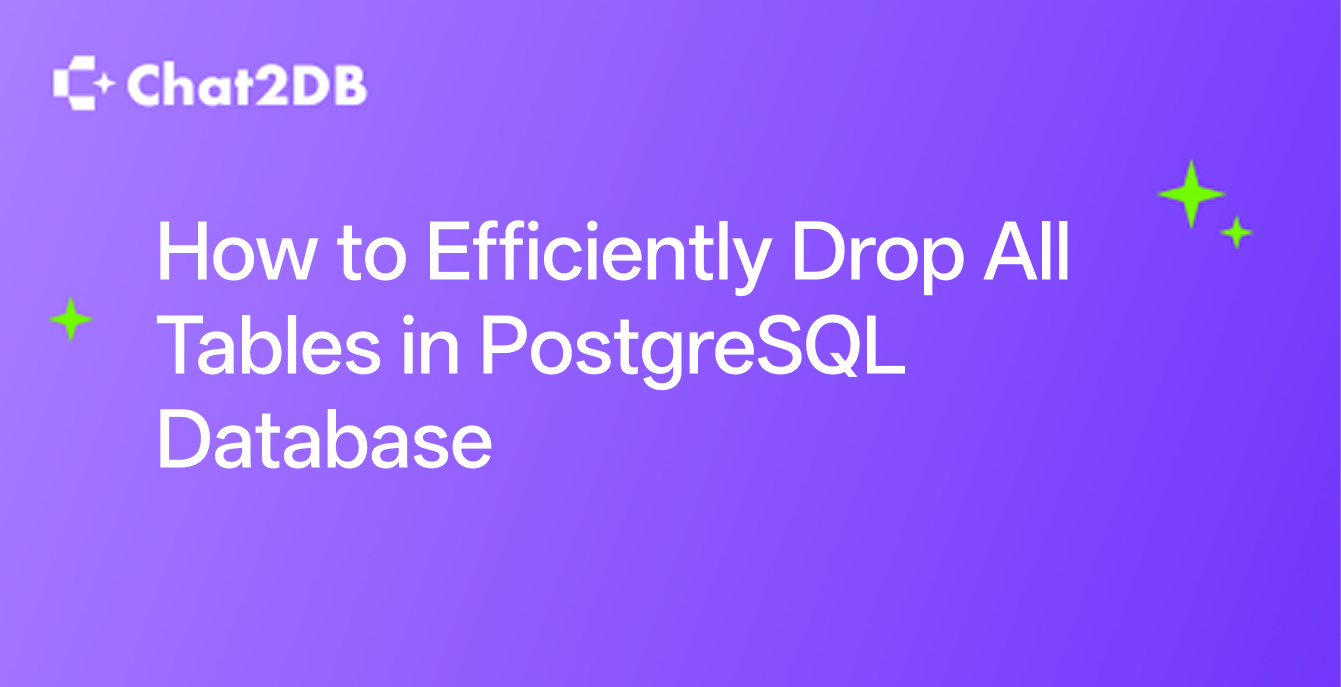
How to Efficiently Drop All Tables in PostgreSQL Database
In this article, we will explore the basic concepts of normalization, its importance, and related techniques.
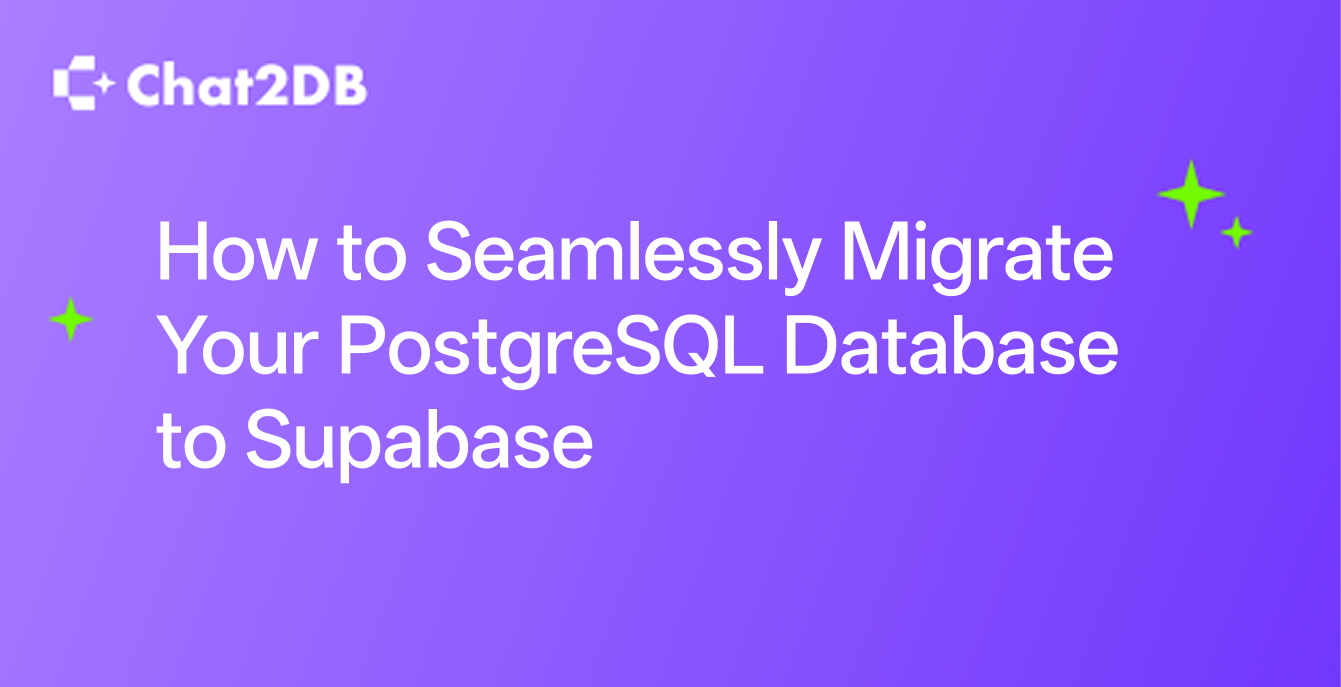
How to Seamlessly Migrate Your PostgreSQL Database to Supabase
Migrating your PostgreSQL database to Supabase can significantly enhance your applications' scalability, performance, and real-time capabilities.

How to Schedule and Manage Supabase Cron Jobs Effectively
We will discuss setting up your Supabase environment, creating and scheduling cron jobs, monitoring job performance, troubleshooting common issues, and advanced use cases.

Top Tips for Choosing the Right PostgreSQL Primary Key
Primary keys are fundamental components of PostgreSQL databases. They uniquely identify each record in a table, thereby enforcing entity integrity by ensuring that no two rows can share the same primary key value.

Essential Tips for Implementing Cascading in SQL Effectively
Cascading in SQL refers to the automatic propagation of changes made in one table to related tables. It is commonly used in conjunction with foreign keys, which establish a relationship between tables.

How to Set Up a Supabase MCP Server for Your Projects
In this article, we will explore the basic concepts of normalization, its importance, and related techniques.

Essential Tips for Using the SQL DROP TABLE Statement Effectively
In this article, we will explore the basic concepts of normalization, its importance, and related techniques.

Sharding vs Partitioning: Key Differences and Best Practices for Database Management
Sharding refers to distributing data across multiple database instances to achieve horizontal scalability, whereas partitioning involves dividing data within a single database instance into smaller segments for easier management.

How to Build an Efficient Real-Time Data Warehouse: Essential Steps and Best Practices
In this article, we will explore the definition of a real-time data warehouse, its architectural components, tools and technologies suitable for building one, and best practices for designing data pipelines.

Understanding Distributed Data: Key Concepts and Best Practices
Distributed data refers to a collection of data that is spread across multiple locations, systems, or nodes, rather than being stored in a single centralized system.

How to Integrate Vector Search with LangChain: A Comprehensive Guide
This article provides a detailed guide on how to perform this integration seamlessly, highlighting the significance of vector embeddings, natural language processing, and the advantages of using tools like Chat2DB for efficient data management.

How to Use SQL Update Statements Effectively: A Comprehensive Guide
SQL Update Statements enable users to modify existing records in a database table, making them a cornerstone of effective data management.

Inverted Index vs Other Indexes: A Comprehensive Guide for Database Optimization
In this article, we will delve into the intricacies of inverted indexes and compare them with **other indexing methods** such as B-trees, hash indexes, and full-text indexes.

What is ENUM Data Type in SQL for Enhanced Database Performance
The ENUM data type in SQL is a powerful feature that can significantly improve data integrity and streamline database operations. By storing a predefined list of values, ENUM not only enhances query performance but also enforces consistency across your database.

How to Implement Change Data Capture (CDC) for Real-Time Data Insights
Change Data Capture (CDC) is an essential technique in modern data management, enabling organizations to track and capture changes in data in real-time. This capability enhances data accuracy, supports real-time insights, and improves decision-making processes.

Top MongoDB Alternatives: The Best NoSQL Databases for 2025
This article explores various MongoDB alternatives, highlighting their unique features, advantages, and why they may be a better fit for specific applications. From Apache Cassandra to Redis, and even Chat2DB, we will delve into the benefits and applications of these databases in 2025.

How to Resolve ERROR 1142 (42000) in MySQL: A Comprehensive Guide
ERROR 1142 (42000) signifies insufficient privileges in MySQL. It typically arises when a user attempts to execute a command, such as a SELECT operation, without the requisite permissions.

How to Fix ERROR 1049 (42000): Unknown Database in MySQL
This error typically indicates that the database you are trying to access does not exist on the MySQL server. In this article, we will explore the common causes of this error, how to diagnose it effectively, and provide step-by-step solutions to resolve it.

How to Resolve MySQL ERROR 1045 (42000): A Comprehensive Guide
MySQL ERROR 1045 (42000) is a common yet frustrating issue that developers encounter while trying to connect to a MySQL server. This error indicates an authentication failure, meaning the user credentials provided (username and password) are incorrect or insufficient for accessing the database.

How to Resolve ERROR 1044 (42000) in MySQL: A Comprehensive Step-by-Step Guide
MySQL's ERROR 1044 (42000) often indicates that a user lacks the necessary privileges to execute a command, such as creating a database or running specific SQL queries.
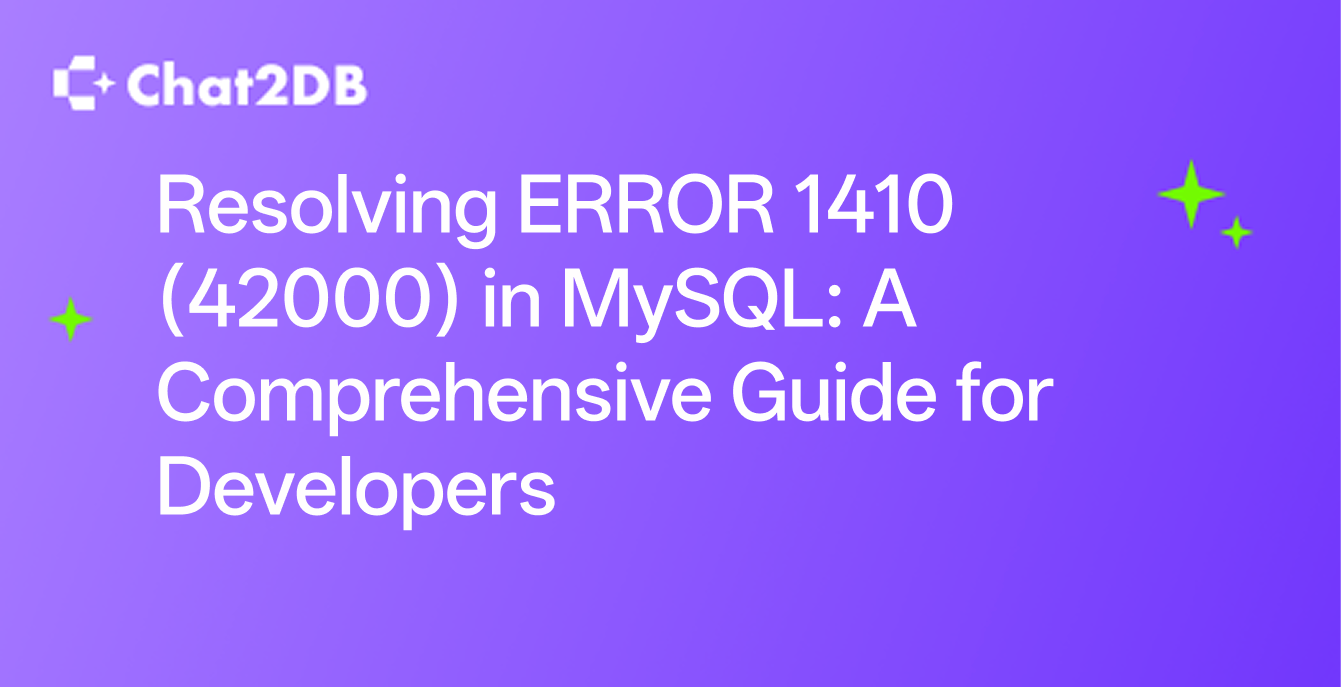
Resolving ERROR 1410 (42000) in MySQL: A Comprehensive Guide for Developers
ERROR 1410 (42000) signals a problem with the **DEFINER** clause in stored procedures or functions. This error frequently arises when the user specified in the DEFINER clause either does not exist or lacks the necessary privileges to execute the stored routine.

Top 10 Free Database Tools to Enhance Your Data Management Skills
This article delves into the top 10 free database tools that can elevate your data management capabilities. We will explore a variety of tools, including both relational and NoSQL databases, specialized solutions.
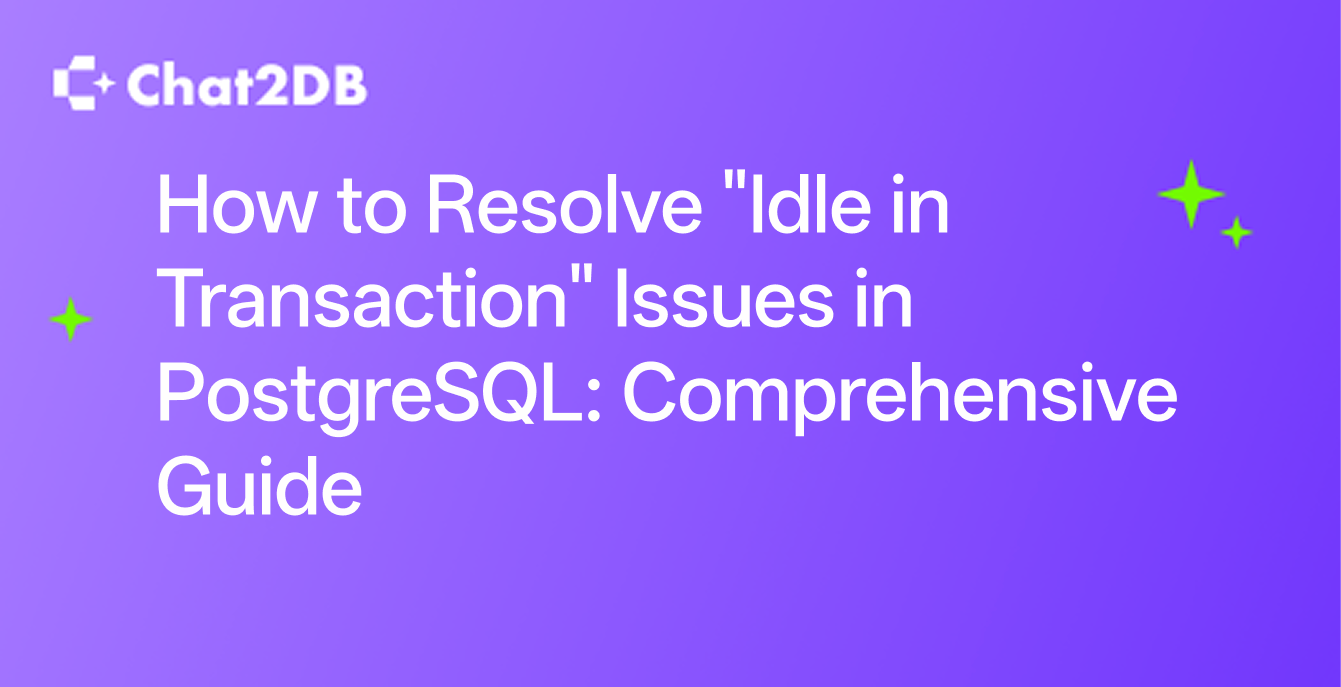
How to Resolve
In this article, we will explore the basic concepts of normalization, its importance, and related techniques.

Streamlining Database Management with DevOps: Essential Strategies for Success
In this article, we will explore the basic concepts of normalization, its importance, and related techniques.

Exploring LDAP: A Beginner's Guide to Directory Services
LDAP, or Lightweight Directory Access Protocol, is a protocol used to access and manage directory services across an IP network. It emerged in the early 1990s as a lightweight alternative to the Directory Access Protocol, allowing for simpler access to directory information.

How to Choose the Best SQL Server Viewer for Your Database Management Needs
An SQL Server viewer is a tool that enables users to view, manage, and analyze SQL Server databases, making it essential for tasks such as querying data, viewing table structures, and managing database objects.

Optimizing SQL Query Performance: A Comprehensive Guide to SQL Query Profilers
Optimizing SQL query performance is essential for ensuring efficient database operations, particularly in environments with large datasets. This guide emphasizes the importance of SQL query profilers in analyzing and improving SQL query performance.

MySQL vs SQL Server: Key Differences and Performance Analysis for Database Management
MySQL supports various storage engines, with InnoDB and MyISAM being the most common. InnoDB offers ACID compliance and supports transactions, while MyISAM is optimized for speed and efficiency in read-heavy scenarios. Conversely, SQL Server utilizes a single integrated engine that efficiently handles both OLTP and OLAP workloads.

Top 5 MySQL Clients for Mac: Elevate Your Database Management Experience
MySQL clients designed for MacOS ensure seamless integration and optimized performance for Mac users. With the increasing popularity of graphical user interface (GUI) clients over traditional command-line interfaces, users can enjoy a more intuitive experience.
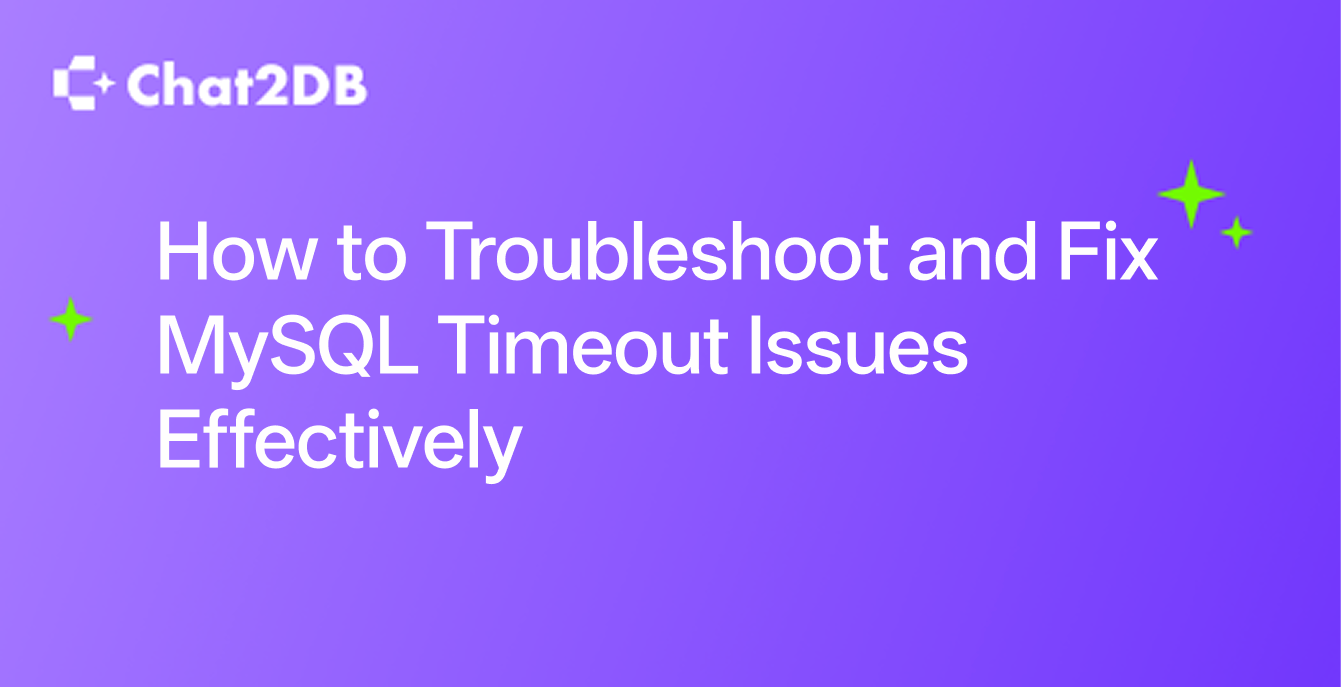
How to Troubleshoot and Fix MySQL Timeout Issues Effectively
MySQL timeout issues occur when a connection or a query exceeds the time limit set by the server, leading to errors that disrupt application performance. Common timeout types include.
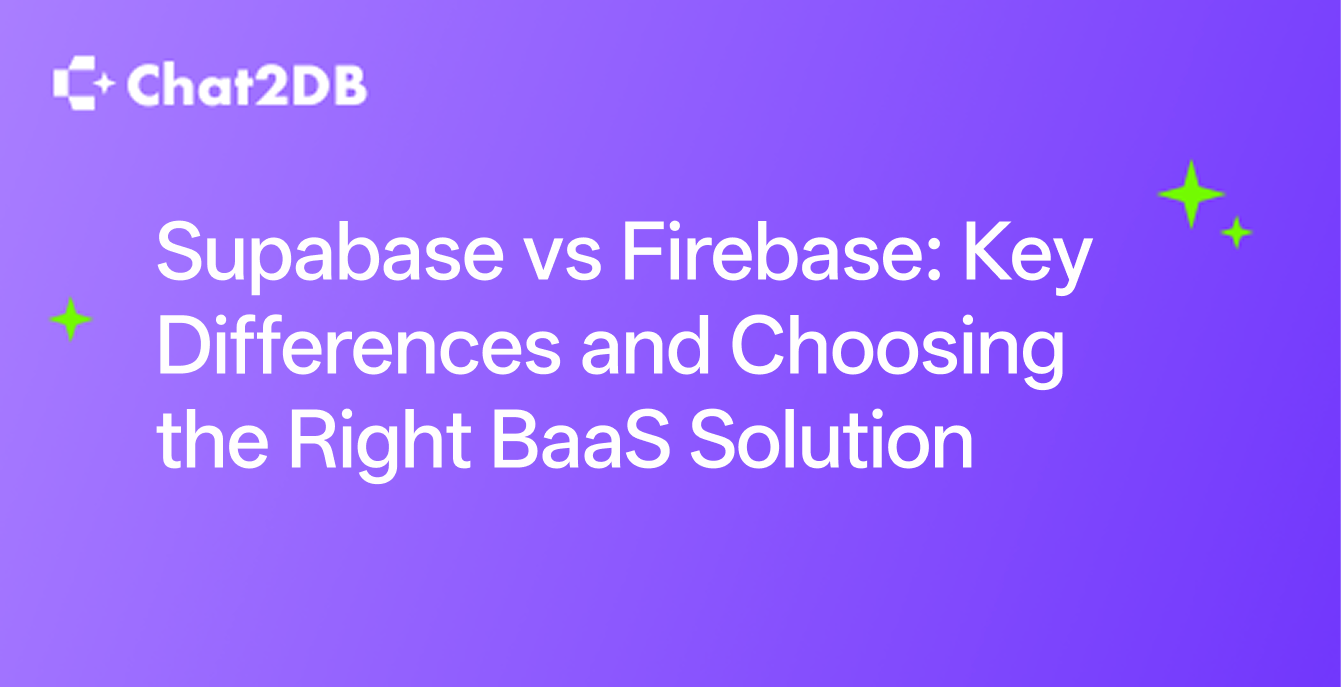
Supabase vs Firebase: Key Differences and Choosing the Right BaaS Solution
Both Supabase and Firebase offer robust solutions to streamline backend development for web and mobile applications. At their core, both platforms aim to alleviate the burden of server management, allowing developers to focus on building features rather than maintaining infrastructure.

How to Effectively Manage Postgres Query Timeout Issues
Postgres query timeout is a critical parameter that controls the duration of query execution. Specifically, it is defined by the statement_timeout setting, which determines how long a query can run before being automatically canceled.

pgAdmin vs. DBeaver: Which Database Tool Is Right for You?
pgAdmin and DBeaver are two prominent options available today, each offering unique features and capabilities tailored to different user needs. This article delves into a comprehensive comparison of these tools, focusing on their functionalities, user interfaces, performance, and integration capabilities.
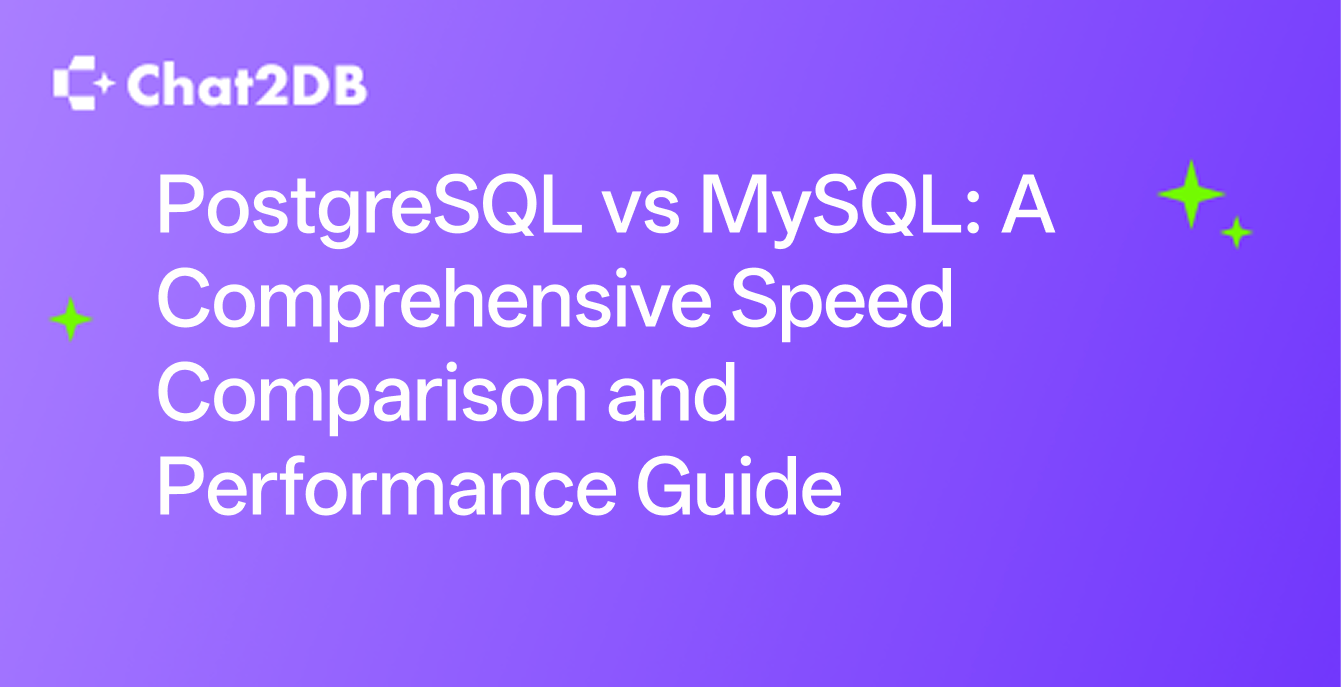
PostgreSQL vs MySQL: A Comprehensive Speed Comparison and Performance Guide
This article provides an in-depth comparison of PostgreSQL and MySQL, focusing on their speed capabilities, performance metrics, and optimization strategies.

DynamoDB vs PostgreSQL: Key Differences and Optimal Use Cases for Your Database Needs
DynamoDB is a fully managed NoSQL database service provided by Amazon Web Services (AWS), designed for high availability and scalability. In contrast, PostgreSQL is an open-source relational database management system known for its robustness and support for complex queries.

Idera SQL Diagnostic Manager for Optimal SQL Server Performance
Idera SQL Diagnostic Manager is a powerful tool designed to monitor and enhance SQL Server performance. This article will explore the comprehensive features of Idera SQL Diagnostic Manager and provide strategies to maximize its potential for optimal performance.

Aurora vs. RDS: Key Differences and Choosing the Right Database Solution
Aurora is designed for speed and availability, while RDS supports various database engines such as MySQL, PostgreSQL, and MariaDB.

How to Effectively Create and Manage Views in MySQL: A Comprehensive Guide
In MySQL, a view is a virtual table that represents the result set of a stored query. Unlike a traditional table, a view does not store data itself; rather, it provides a dynamic window into the data stored in one or more tables.

How to Resolve Database Contention: Comprehensive Strategies and Techniques
Database contention is a common challenge faced in database management, significantly impacting performance and user experience. Understanding its causes and the strategies to resolve database contention can empower administrators and developers to optimize their database systems effectively.

Understanding Unique IDs: Their Role and Importance Explained
Unique IDs (UIDs) are essential elements in the digital landscape, acting as distinct identifiers that ensure data integrity and management across various applications and systems.

Top Free NoSQL Databases: A Comprehensive Review for Developers
oSQL databases, which stand for Not Only SQL, represent a broad class of database management systems that diverge from the traditional relational database model.

Understanding the GPL License: Key Principles, Benefits, and Practical Applications
The GPL License (General Public License) is a cornerstone of the open-source movement, promoting software freedom and collaboration.

CHAR vs VARCHAR in SQL
CHAR and VARCHAR are both utilized for storing string data in databases, but they differ in how they allocate storage space

Download MySQL Workbench for Mac: A Comprehensive Step-by-Step Guide
MySQL Workbench is a critical tool for developers and database administrators working with MySQL databases. It provides a comprehensive suite of functionalities for database design, development, administration, and migration.

Best MariaDB SQL Clients for Windows: A Comprehensive Review
We will explore well-known options like DBeaver, HeidiSQL, and Navicat, while also highlighting the innovative capabilities of Chat2DB.

Navigating SQL Transaction Levels for Optimal Database Performance: A Comprehensive Guide
SQL transaction levels define the visibility of changes made by one transaction to other transactions. They are crucial for maintaining data integrity and optimizing performance.

Effective MySQL CLI Commands: Boost Your Database Management Efficiency
MySQL Command-Line Interface (CLI) commands are essential tools for database management, offering an effective way to perform complex queries and administrative tasks efficiently.

Optimisation Tips for 10+ Million MySQL Tables
In this article, we will explore the basic concepts of normalization, its importance, and related techniques.

Getting Started with Supabase CLI: A Comprehensive Guide for Developers
In this detailed guide, we will dive into Supabase CLI, an essential command-line interface that simplifies managing databases and backend development for developers.

Key Differences Between Joins in SQL Explained in Simple Terms
SQL Joins are fundamental concepts in relational database management that allow users to combine data from multiple tables based on related columns.

What is Database Cardinality and Its Importance in SQL and DB Design
Database cardinality is a fundamental concept in SQL and database design that defines the relationships between different sets of data. It plays a crucial role in determining how data interacts, optimizing queries, and structuring databases.

How to Efficiently Manage Database Migrations with Flyway DB
We will highlight the significance of database migrations, the features of Flyway DB, and how it can be integrated into CI/CD pipelines.

Primary Keys in ER Diagrams: A Comprehensive Guide
This article will delve into the significance of primary keys in ER diagrams, their characteristics, and best practices for selection.

Top Proprietary DBMS: Key Features, Benefits, and Why You Should Choose Chat2DB
Proprietary Database Management Systems (DBMS) are vital tools for organizations focused on data management, security, and performance.
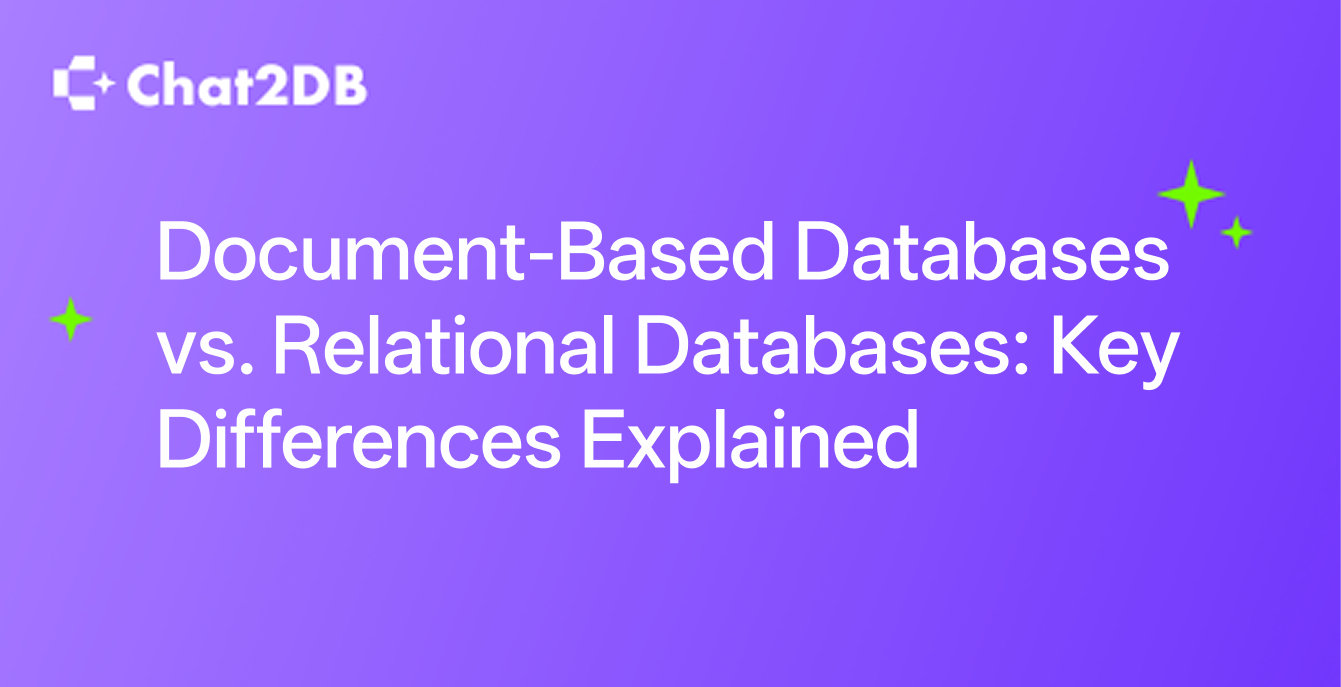
Document-Based Databases vs. Relational Databases: Key Differences Explained
Document-based databases, such as MongoDB, store data in flexible, JSON-like documents, allowing varied structures that can evolve over time. In contrast, relational databases like MySQL maintain a strict schema of tables, ensuring data consistency and integrity.
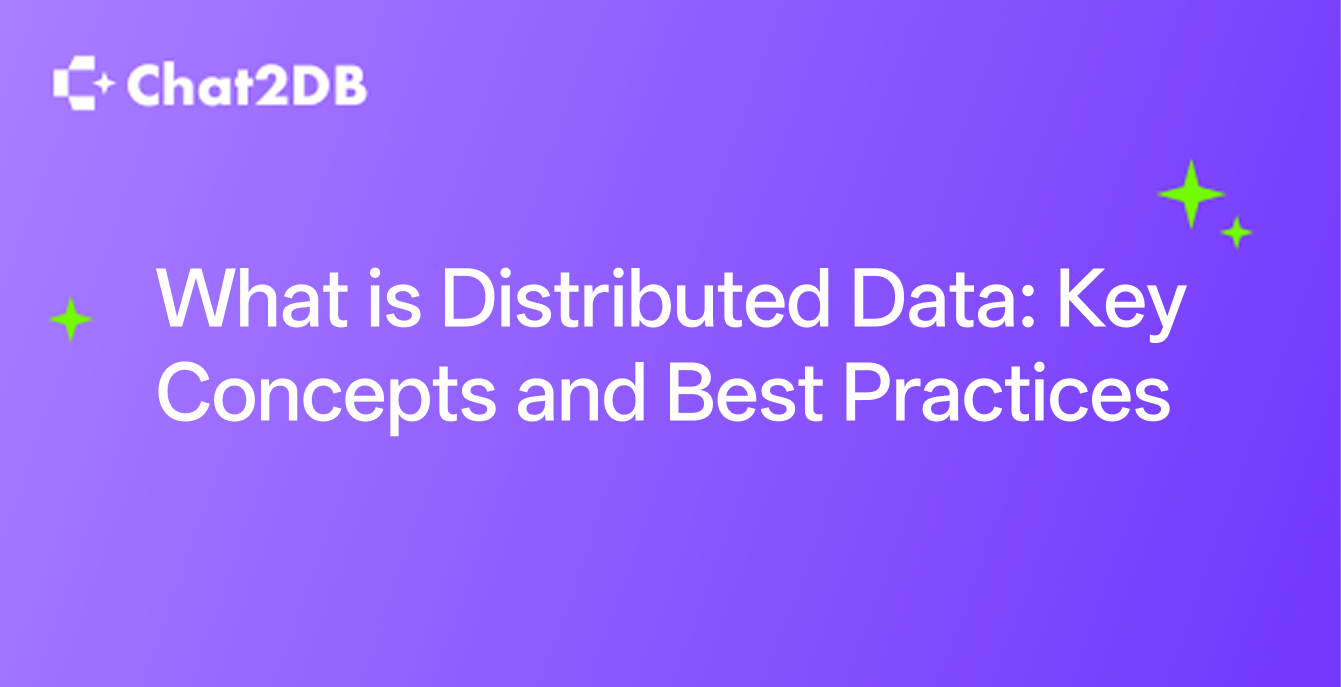
What is Distributed Data: Key Concepts and Best Practices
Distributed data refers to a data management approach where data is stored across multiple locations or nodes instead of being centralized in a single location.

Best SQL Software Solutions for 2025: An In-Depth Review
This article offers a detailed exploration of the **best SQL software** solutions available, including the innovative features of products like Chat2DB, which harnesses the power of artificial intelligence to enhance database management.

How to Efficiently Import CSV Data into SQL Databases
Importing data from CSV (Comma-Separated Values) files into SQL (Structured Query Language) databases is a fundamental task for data management, migration, and integration processes.

Top DataGrip Alternatives for Efficient Database Management
Choosing the right database management tool is crucial for developers aiming to optimize their workflows. Efficient database management positively affects application performance, data integrity, and security.

How to Write Effective DDL Scripts for Optimal Database Management
DDL, or Data Definition Language, is a subset of SQL that enables you to define the structure of a relational database. The primary functions of DDL scripts include creating, modifying, and deleting database objects—such as tables, indexes, and schemas.
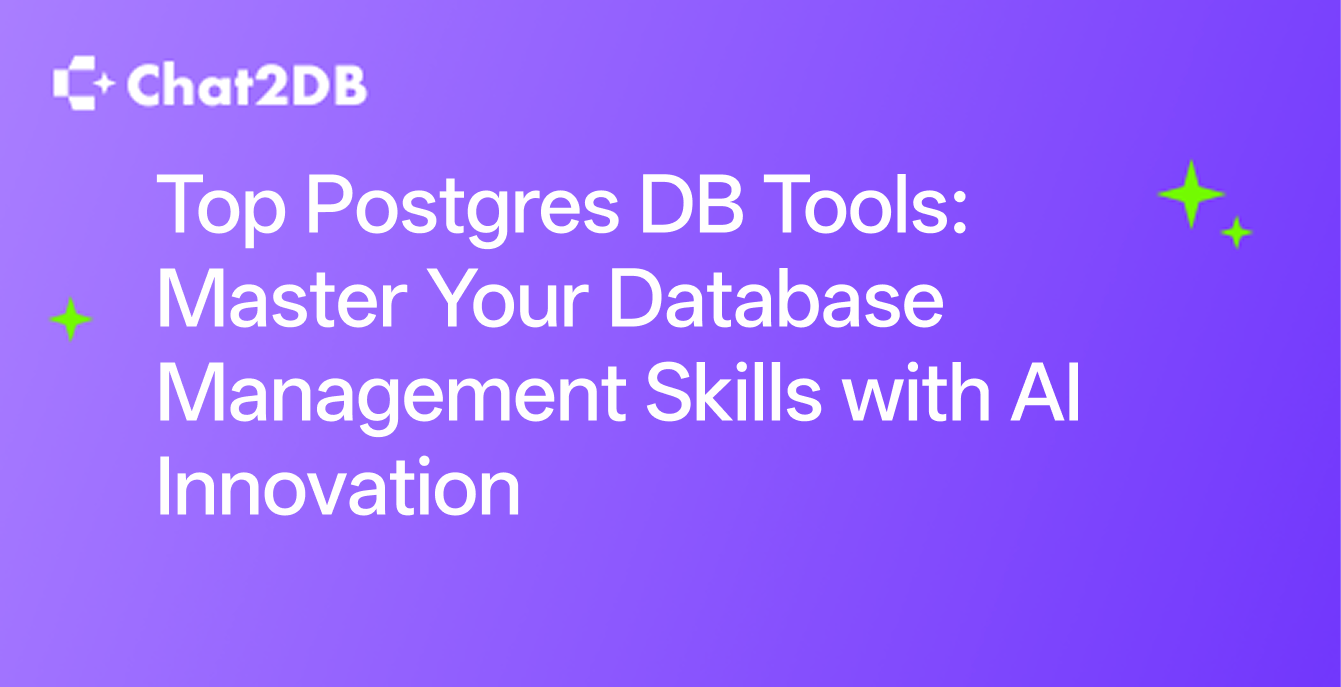
Top Postgres DB Tools: Master Your Database Management Skills with AI Innovation
This article explores the best tools for effectively managsing Postgres databases, detailing their features, capabilities, and the unique advantages of utilizing Chat2DB.

Top Free SQL IDEs: Enhance Your Database Management Skills
This article delves into various free SQL IDEs, emphasizing their features, benefits, and how they can significantly enhance your database management skills.

Top PostgreSQL GUI Tools: Enhance Your Database Management with Chat2DB
PostgreSQL GUI tools are designed to simplify database management for developers and database administrators. These tools allow users to interact with databases visually, rather than through traditional command-line interfaces, which can be daunting for newcomers.
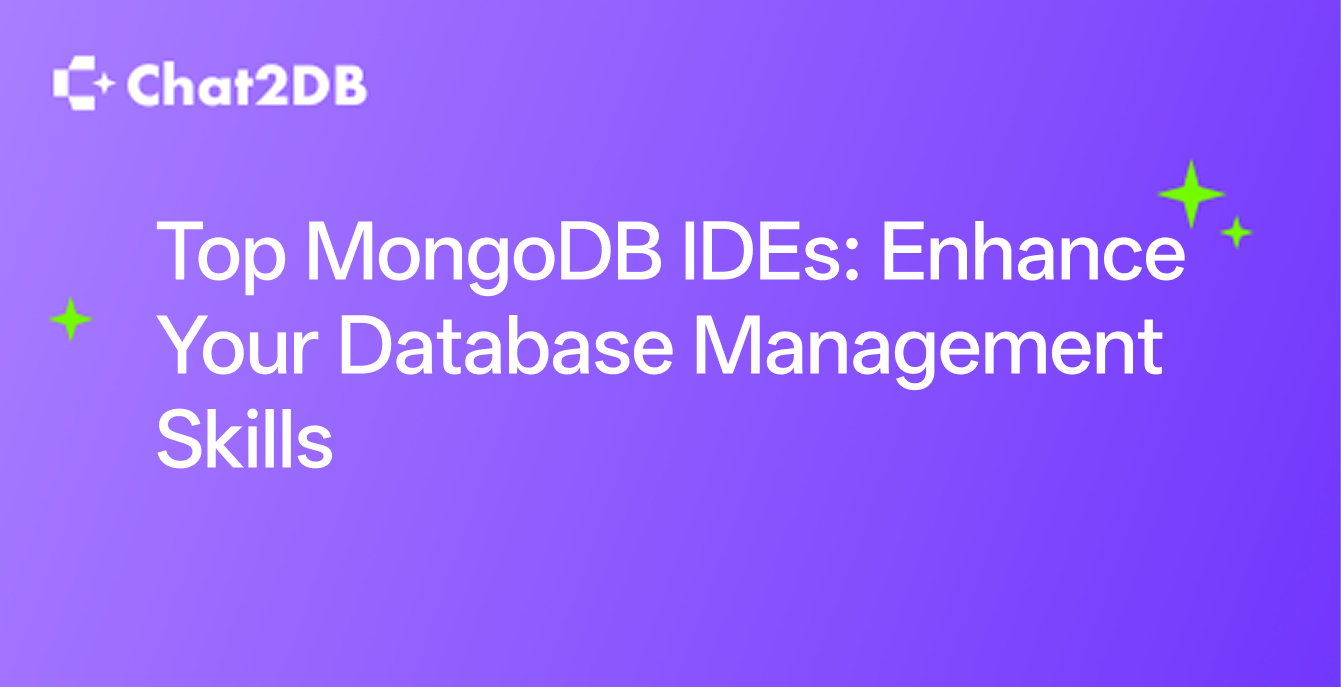
Top MongoDB IDEs: Enhance Your Database Management Skills
This article provides an in-depth look at MongoDB IDEs, specialized tools designed to enhance database management skills and streamline operations.

Top Data Query Tools for Efficient Data Management in 2025
Data query tools are software applications designed to help users interact with databases. They simplify the processes of accessing and managing data, making it easier for developers and analysts to extract valuable insights.

Top Database Connection Tools: Essential Features and Comparisons
This article delves into the essential features of database connection tools, provides a comprehensive comparison of popular options, and highlights the advantages of using Chat2DB, an AI-powered database management tool.

Top IDEs for Oracle Development: Enhance Your Database Skills
This article delves into the top IDEs for Oracle development, their features and benefits, and showcases Chat2DB, an innovative AI-driven database management tool designed to significantly enhance your database skills.

Top MySQL GUI Tools: Streamline Database Management with Chat2DB
Developers often face difficulties in visualizing data relationships, executing complex queries, and managing user permissions. This is where MySQL GUI tools come into play, providing a more user-friendly environment for database operations.

Top MySQL IDEs: Choosing the Best Tool for Your Database Management Needs
MySQL IDEs are specialized tools designed to optimize workflow for developers working with MySQL databases. They offer features like advanced code editors, syntax highlighting, intelligent code completion, and visual query builders.

Best SQL IDEs for Efficient Database Management in 2025
SQL IDEs play a pivotal role in the realm of database management. They are designed not just for writing SQL code but also for managing database connections, performing administrative tasks, and visualizing data.

Top PSQL GUI Tools for Enhanced Database Management in 2025
Graphical user interfaces (GUIs) have transformed the way we interact with databases. Traditional command-line interfaces can be intimidating, especially for beginners. PSQL GUI tools provide a user-friendly experience that helps users manage databases efficiently.

Top Postgres IDEs for Efficient Database Management and Development
The complexities of managing PostgreSQL databases necessitate the use of specialized tools. A well-designed IDE simplifies tasks such as query building, database modeling, and performance tuning.

How to Download DataGrip for Free: A Comprehensive Guide
Click on the Download button. You will be redirected to a page where you can choose the version compatible with your operating system: Windows, macOS, or Linux.

Top MySQL User Interfaces: Enhance Your Database Management with Chat2DB
Managing databases efficiently is crucial for developers and data professionals alike. User interfaces (UIs) for MySQL play a significant role in simplifying complex database operations.

Top PostgreSQL Tools: A Comprehensive Guide to Enhance Your Database Management
We will delve into data modeling tools, database management and monitoring, performance tuning, data migration, backup solutions, security measures, and much more.

How to Format SQL Queries for Enhanced Readability and Performance
When SQL queries are neatly organized, they become easier to understand, which is crucial for debugging and optimizing queries. A well-structured query can significantly reduce the time spent identifying issues, thus boosting productivity and performance.

How to Efficiently Utilize MySQL Extensions for Enhanced Performance
MySQL extensions are essential tools that expand the capabilities of the MySQL database, offering improved performance, additional functionalities, and enhanced security features.

Top 5 SQL IDEs for Efficient Database Management in 2025
SQL IDEs are vital tools that significantly enhance the interaction between developers, database administrators, and databases. They provide a user-friendly interface for writing, executing, and optimizing SQL queries, simplifying the complex tasks involved in database management.

Top 10 Database IDEs: Elevate Your Development Workflow with Cutting-Edge Tools
Database IDEs (Integrated Development Environments) are essential for effective database management, simplifying complex operations, reducing errors, and fostering collaboration among team members.

MariaDB vs MySQL: Key Differences and Which Database to Choose
hen selecting the right database management system, MariaDB and MySQL are two prominent options that often arise. Both are open-source relational database management systems (RDBMS) that play a vital role in the tech industry.

Supabase vs MySQL: Key Differences and Use Cases Explained
Supabase is an open-source alternative to Firebase, designed to provide a comprehensive suite of backend features that streamline application development.

How to Implement Model Context Protocol (MCP) Server for MySQL: A Comprehensive Guide
This guide delves into the setup, configuration, and integration of an MCP Server tailored specifically for MySQL, addressing its benefits, security measures, and troubleshooting techniques.
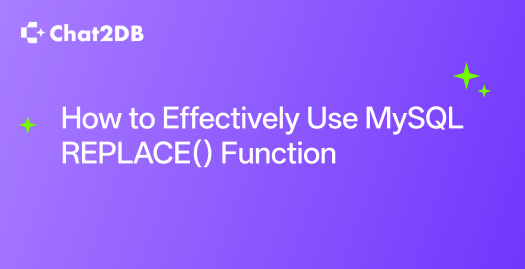
How to Effectively Use MySQL REPLACE() Function
The MySQL REPLACE statement is a powerful tool for managing data, enabling users to seamlessly update existing records or insert new ones.

How to Efficiently Use MySQL Workbench: A Comprehensive Guide for Database Management
MySQL Workbench is an essential tool for database professionals, providing a powerful visual interface for SQL development, administration, and database modeling. In this guide, we will explore the features of MySQL Workbench, including installation, navigation, SQL development, and database design.

Mastering the PSQL Command Line: Essential Tips and Tricks
Mastering the PSQL command line is crucial for developers and database administrators working with PostgreSQL. This article serves as a comprehensive guide, covering everything from basic commands to advanced features.

How to Secure Your PostgreSQL Database with SSL Configuration
SSL is a protocol that establishes a secure and encrypted connection between a server and a client. It plays a crucial role in safeguarding sensitive information from potential threats, such as data interception and unauthorized access.

Top Beekeeper Studio Alternatives for Database Management
Beekeeper Studio is a popular open-source SQL editor and database manager that offers several appealing features. It supports multiple platforms, including Windows, macOS, and Linux, and provides a modern graphical user interface (GUI) for ease of use.

Top DbSchema Alternatives for Efficient Database Management
While DbSchema is a powerful tool, many users encounter limitations that may hinder their productivity. Common challenges include scalability issues when handling large databases, interface complexities that can lead to inefficiencies, and specific feature gaps that may not meet all users' needs.

Top 7 TablePlus Alternatives for Streamlined Database Management
In this article, we'll explore the Top 7 TablePlus Alternatives including DBeaver, HeidiSQL, Navicat, Chat2DB, SQLPro, DataGrip, and Sequel Pro, detailing their core functionalities, advantages, and how they cater to the diverse needs of database management professionals.

Top DBeaver Alternatives for Efficient Database Management
When evaluating DBeaver alternatives, it is essential to consider several key features that can significantly impact the user experience and productivity.

Top HeidiSQL Alternatives for Efficient Database Management
HeidiSQL has long been a favored **SQL client**, particularly among those who work with MySQL and MariaDB. However, as database management needs grow more complex, many developers are exploring alternatives that can offer superior functionality.

Top DbVisualizer Alternatives: Discover the Best Tools for 2025
DbVisualizer, while widely used, presents challenges for developers. Limitations such as a lack of specialized features, performance issues with large datasets, and limited support for certain databases drive developers to seek better alternatives that align with their evolving requirements.

Top MySQL Workbench Alternatives for Enhanced Database Management
MySQL Workbench serves as an integrated development environment (IDE) for MySQL databases, providing tools for database design, SQL development, and server administration.

Optimizing Hashing in DBMS: Techniques, Best Practices, and the Role of AI
Hashing is a technique used in Database Management Systems (DBMS) to convert input data into a fixed-size string of characters, which serves as a unique identifier for that data.

RDBMS vs DBMS: Key Differences and Choosing the Right System
A Database Management System (DBMS) is software that enables users to create, manage, and manipulate databases. It provides a systematic framework for storing, retrieving, and managing data.

Understanding Tuples in DBMS: A Comprehensive Introduction
Tuples are foundational components in Database Management Systems (DBMS), serving as single rows in a relation that encapsulate related data values.

Cardinality in DBMS: Key Concepts and Practical Examples for Database Optimization
Cardinality refers to the uniqueness of data values contained in a column, which plays a vital role in optimizing database queries and ensuring data integrity.

How 3NF in DBMS Enhances Database Efficiency and Integrity
In the realm of database management systems (DBMS), achieving the third normal form (3NF) is essential for significantly improving both database efficiency and integrity.

How to Utilize IFNULL in MySQL for Data Handling
The IFNULL function in MySQL is an essential tool for handling null values in databases, ensuring data integrity and consistency.

Secure Implementation of mysql_native_password in Your Database
In this detailed guide, we explore the intricacies of mysql_native_password, a widely-used authentication plugin for MySQL databases.

How to Integrate GraphQL with MySQL for Efficient Data Handling
GraphQL provides a powerful querying language that allows clients to request exactly what they need, optimizing data retrieval. In contrast, MySQL is a widely-used relational database management system known for its reliability and ability to handle large datasets.

How to Use an Online MySQL Compiler for Coding
This article explores the various facets of MySQL online compilers, including how to select the right one, set up your coding environment, write and test SQL code effectively, leverage advanced features, collaborate with others, and ensure security.

How to Master MySQL: A Comprehensive Beginner's Guide
MySQL is a robust open-source relational database management system (RDBMS) that is essential for handling data in numerous applications. This guide aims to provide you with a comprehensive overview of MySQL, covering its foundational concepts, setup procedures, query language, database design principles, advanced features, security practices, and cloud deployment challenges.

How to Effectively Use EXPLAIN in SQL for Query Optimization
The EXPLAIN statement is an essential tool in SQL for understanding and optimizing query execution. It provides a detailed breakdown of how SQL engines execute queries, playing a pivotal role in SQL query optimization.

How to Efficiently Use SQL Aliases for Cleaner Code
SQL aliases are a powerful feature that can significantly enhance the readability and maintainability of your SQL queries. By providing temporary names for tables and columns, SQL aliases simplify complex queries and improve code clarity.

How to Efficiently Format SQL Code for Better Readability
Formatting SQL code is essential for developers, as it enhances readability, maintainability, and collaboration. Properly formatted SQL code allows developers to work more effectively, reducing the risk of errors and improving overall productivity.
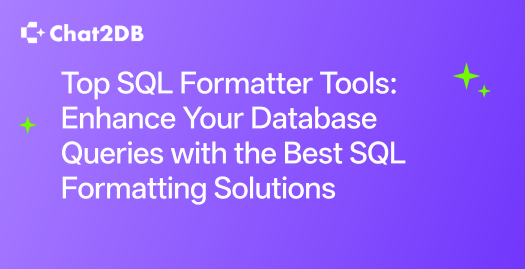
Top SQL Formatter Tools: Enhance Your Database Queries with the Best SQL Formatting Solutions
The readability of SQL queries is crucial, particularly when multiple developers are collaborating on a project. Poorly formatted SQL can lead to confusion, errors, and ultimately flawed database interactions.

How Rows and Columns Impact Data Organization: Key Insights in Database Management
Rows and columns serve distinct yet complementary roles in data organization. Rows typically store multiple data points related to a single entity, while columns categorize these data points into specific types.

How to Use Inner Join in SQL Queries
Inner Join is a crucial concept in SQL that enables you to efficiently combine data from two or more tables based on a related column. This guide will explore the syntax, usage, and practical applications of Inner Join, alongside optimizing your queries for better performance.

What is the Decimal Data Type in SQL?
The decimal data type (also referred to as numeric) is designed to store exact numeric values. It is defined by two parameters: precision and scale.
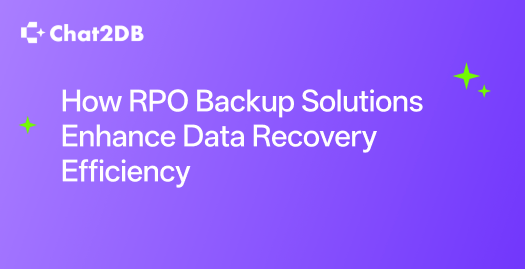
How RPO Backup Solutions Enhance Data Recovery Efficiency
RPO, or Recovery Point Objective, represents the maximum acceptable amount of data loss measured in time. This metric is critical in determining how frequently backups should occur to align with an organization’s tolerance for data loss.

Mastering SQL Challenges on LeetCode: Expert Tips and Strategies for Success
Mastering SQL challenges on LeetCode is essential for developers looking to enhance their database management skills and refine their problem-solving abilities.

How Structured Databases Enhance Data Management Efficiency
Structured databases are fundamental to enhancing data management efficiency by organizing data in a predictable format. These databases, particularly relational databases, utilize schemas to enforce data integrity and consistency.

Top Tips for Efficiently Managing a Storage Warehouse
This article will explore essential tips for efficient management, focusing on inventory management, technological integration, space utilization, and the importance of data analytics.

How to Use SQL TRIM for Data Cleaning and Optimization
The SQL TRIM function is essential in data cleaning, as it removes unwanted spaces or specific characters from the beginning and end of strings.

Top Strategies for Implementing a Successful Data Lakehouse
The data lakehouse concept is a revolutionary architectural model that merges the flexibility of a data lake with the robustness of a data warehouse.

How to Efficiently Use SQL SUBSTRING_INDEX in Your Queries
The SQL SUBSTRING_INDEX function is a powerful tool for extracting substrings from strings based on specified delimiters. It allows developers to manipulate strings effectively, making it invaluable for data retrieval and string analysis.

How to Optimize Database Performance Using Materialized Views
Unlike standard database views that compute results on-the-fly, materialized views store the result of a query physically, allowing for faster data access.

How to Efficiently Manage Data Lakes: Strategies and Tips for Success
Data lakes have become a pivotal component of modern data architecture, offering a scalable solution for storing and analyzing vast amounts of unstructured data.

Data Lakes vs Data Warehouses: Key Differences Explained
This article will explore the fundamental differences between these two data storage solutions, their key characteristics, and the scenarios in which each is best utilized.

How to Optimize Inverse Indexes for Faster Data Retrieval
An inverse index serves as a powerful tool for organizing unstructured data, enabling efficient access to information.

Graph Database vs Vector Database: Key Differences and Use Cases Explained
This article explores the key differences between graph databases and vector databases, focusing on their unique characteristics, use cases, and performance metrics.

What is Database Connection Pooling?
Database connection pooling is a vital technique for optimizing database interactions in high-traffic applications. By allowing multiple connections to a database to be reused, it significantly reduces the overhead associated with frequently opening and closing connections.

How to Effectively Use PostgreSQL EXPLAIN for Query Optimization
The PostgreSQL EXPLAIN command is a pivotal tool in this endeavor, providing insights into the execution plans utilized by the PostgreSQL query planner.
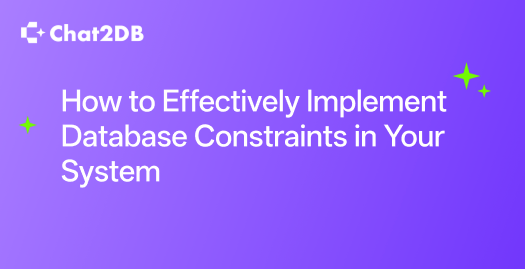
How to Effectively Implement Database Constraints in Your System
Database constraints, including primary keys, foreign keys, unique constraints, check constraints, not null constraints, and default constraints, are essential in preventing invalid data entry and ensuring that your data adheres to specific rules.

What Does Partition By Mean in SQL?
The SQL Partition By clause is a pivotal component of SQL that enables users to segment result sets into distinct segments based on specified criteria.

How to Effectively Use EXPLAIN to Optimize SQL Queries
Optimizing SQL queries is essential for enhancing database performance and efficiency. One of the most powerful tools for achieving this is the EXPLAIN command, which allows developers to understand query execution plans.
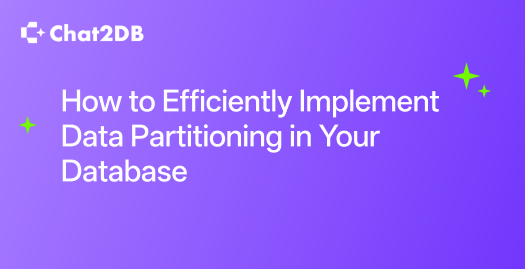
How to Efficiently Implement Data Partitioning in Your Database
Data partitioning is a vital strategy in database management aimed at optimizing query performance and simplifying the handling of large datasets.

Optimizing UUID Storage in MySQL: Best Practices and Tips for Enhanced Performance
Storing UUIDs (Universally Unique Identifiers) in MySQL databases presents unique challenges and opportunities. This article delves into the best practices for optimizing UUID storage, including challenges associated with their implementation, the benefits of using binary storage over string storage, effective indexing strategies, and security considerations.

How to Efficiently Connect and Interact with MySQL Using Python
In this comprehensive guide, we will explore how to efficiently connect and interact with MySQL using Python.

What is VARCHAR in SQL?
This article will explore the importance of data types in SQL, provide a detailed definition of VARCHAR, discuss best practices for its usage, highlight common pitfalls, and offer optimization techniques.
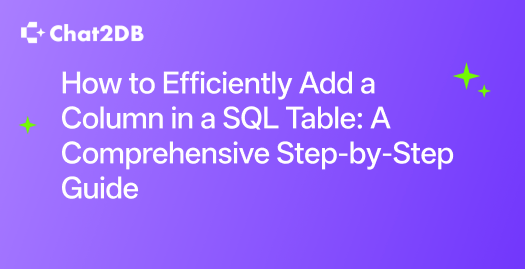
How to Efficiently Add a Column in a SQL Table: A Comprehensive Step-by-Step Guide
Adding a column to a SQL table is a fundamental task that can be executed effectively with the right understanding and commands. In this article, we will delve into the essentials of SQL tables, explore the reasons for adding columns, and provide a detailed step-by-step guide on how to accomplish this task efficiently.

How to Effectively Use Integers in MySQL Databases: A Comprehensive Guide
This article delves into the various types of integer data types available in MySQL, their storage requirements, advantages, and best practices for usage.

How to Optimize Database Performance with Clustered Indexes: A Comprehensive Guide
Optimizing database performance is crucial for any application that relies on efficient data storage and retrieval. One of the most effective methods to enhance performance is through the use of clustered indexes.

Understanding the GPL License: Key Principles, Applications, and Its Role in Open-Source Software
The GNU General Public License (GPL) is a cornerstone of the open-source software movement, granting users the freedom to run, study, share, and modify software.
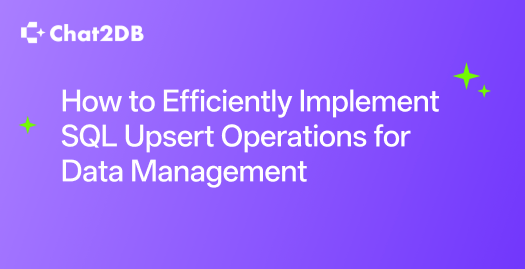
How to Efficiently Implement SQL Upsert Operations for Data Management
The term upsert combines update and insert, allowing developers to execute a single command that either inserts a new record or updates an existing one based on specific conditions.

How OpenAI CLIP Transforms Image and Text Interaction: A Deep Dive
OpenAI's CLIP (Contrastive Language-Image Pretraining) represents a groundbreaking advancement in the convergence of image and text processing.

How to Efficiently Use Views in MySQL for Enhanced Data Management
By encapsulating complex queries, views allow for better maintainability and readability of code. This article will delve into the concept of views in MySQL, exploring their advantages, creation and management processes, query performance optimization.

How to Perform Seamless Database Schema Migrations with Flyway
Flyway is an open-source database migration tool that provides a robust solution for managing database schema changes.
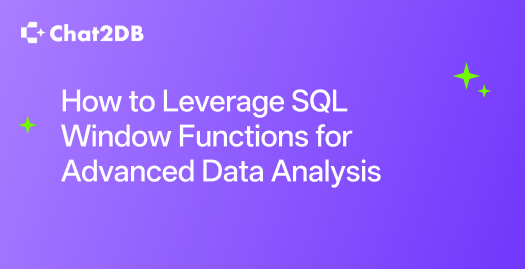
How to Leverage SQL Window Functions for Advanced Data Analysis
SQL window functions enable users to execute calculations across a set of rows associated with the current row without collapsing the result set, making them a powerful tool for analytics and reporting.

The Key Differences Between CHAR and VARCHAR in SQL: A Comprehensive Guide
This article dives deep into the technical nuances of these two data types, highlighting their key characteristics, performance considerations, and best practices for usage.

Comparison of CHAR vs VARCHAR: Key Differences Explained
This article delves into the key differences between CHAR and VARCHAR, highlighting their respective advantages and disadvantages, performance implications, and practical applications.

How to Effectively Leverage Vector Stores for Enhanced Data Management
Vector stores have emerged as indispensable tools for data management in today's rapidly evolving digital landscape. These specialized data structures are designed to efficiently store and manage multi-dimensional vectors, enabling organizations to process complex data types—such as images, text, and high-dimensional data—with remarkable speed and accuracy.

How Write Amplification Impacts SSD Performance: Key Insights
Write amplification (WA) is a crucial concept in understanding the performance of Solid State Drives (SSDs). It refers to the phenomenon where the amount of data written to the NAND flash memory is greater than the amount of data sent from the host system.

Top HeidiSQL Alternatives: Best Database Management Tools for Enhanced Productivity
This article explores the need for **HeidiSQL alternatives**, highlighting the key features to consider, leading options available, and a detailed analysis of Chat2DB, an innovative database management tool that leverages AI to optimize database operations.

RPO and RTO in Disaster Recovery: Strategies, Tools, and Best Practices
Disaster recovery is a fundamental aspect of any organization’s risk management strategy, especially in relation to Recovery Point Objective (RPO) and Recovery Time Objective (RTO).

Exploring ENUM in SQL: Definition, Usage, and Advantages
In this article, we will explore the definition and usage of ENUM in SQL, emphasizing its advantages, limitations, and practical applications.

Comparison of Foreign Key vs. Primary Key in Database Design: Understanding Their Differences
Primary keys serve as unique identifiers for table records, while foreign keys establish relationships between tables, linking them in a meaningful way.

How to Leverage Prisma ORM for Efficient Database Management: A Comprehensive Guide
Prisma ORM is an open-source database toolkit designed to streamline database management for developers by automating repetitive tasks and integrating seamlessly into modern development workflows.

Inverted Index vs Other Index Types: A Comprehensive Comparison
In this in-depth article, we will analyze the Inverted Index and compare it with other indexing methods such as B-tree, Hash, and Bitmap indexes.

How to Efficiently Manage and Utilize Vector Stores: A Comprehensive Guide
Vector stores function as specialized databases optimized for storing and managing vector data, facilitating applications like recommendation systems, image recognition, and natural language processing.

Top Strategies for Achieving Low Latency in Database Systems
Latency, the delay before a transfer of data begins following an instruction, can significantly impact application performance, especially for those requiring real-time data processing.

How to Optimize Your Database: Effective Solutions for the N+1 Query Problem
One common issue faced by developers is the N+1 query problem, which arises when an application executes one query to retrieve a collection, followed by an additional query for each item in that collection.

Database Connection Pooling: Best Practices and Tips for Enhanced Performance
Database connection pooling is an essential technique for modern applications that significantly enhances performance and resource efficiency.

Effective Database Caching Techniques: A Practical Guide to Boost Application Performance
Database caching is a crucial element of modern software architecture that significantly enhances application performance, reduces latency, and optimizes resource utilization.

Optimizing SQL Decimal: Best Practices for Precision and Scale in Database Management
This article will explore the intricacies of SQL Decimal, emphasizing its components—precision and scale—and providing best practices for its optimization.
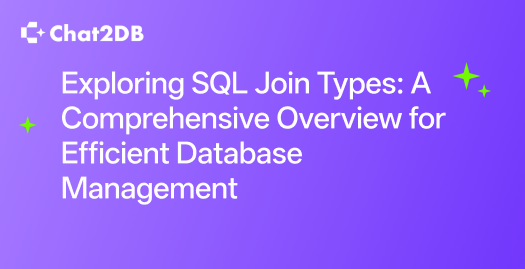
Exploring SQL Join Types: A Comprehensive Overview for Efficient Database Management
SQL joins are essential tools in relational database management systems that allow for the combination of rows from two or more tables based on related columns.

Tips to Optimize P99 Latency for Enhanced Application Performance
P99 latency captures the latency experienced by users, specifically indicating that 99% of requests are completed in less time than the stated metric.

How to Perform SQL Update from Select: A Comprehensive Guide
This article will guide you through the comprehensive process of executing SQL update statements using data from another table, the significance of joins, and how to leverage select statements for efficient updates.

How Primary and Foreign Keys Work Together in SQL Databases
Primary keys uniquely identify each record within a table, ensuring data integrity. Foreign keys, on the other hand, establish a link between two tables by referencing the primary key of another table.

DDL vs DML: Key Differences and Practical Applications in Database Management
DDL comprises commands that define the structure or schema of the database, employing statements such as CREATE, ALTER, and DROP. In contrast, DML focuses on the manipulation of data within the database, consisting of commands like SELECT, INSERT, UPDATE, and DELETE.

How to Use Partition By in SQL for Data Analysis
The Partition By clause is a powerful feature that allows analysts to divide result sets into partitions, enabling them to perform calculations across subsets of data without losing row-level detail.

Column vs Row: Key Differences and Optimal Use Cases
Columns represent vertical arrangements of data that typically share a common attribute, while rows are horizontal arrangements that encapsulate individual records or entries.
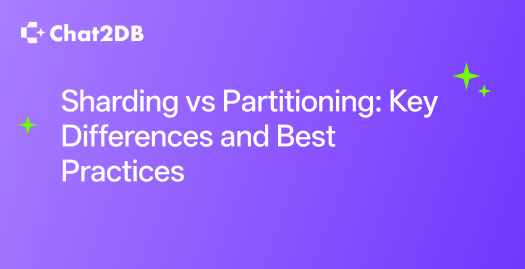
Sharding vs Partitioning: Key Differences and Best Practices
This article delves into the key differences between sharding and partitioning, their respective mechanisms, benefits, and best practices for implementation
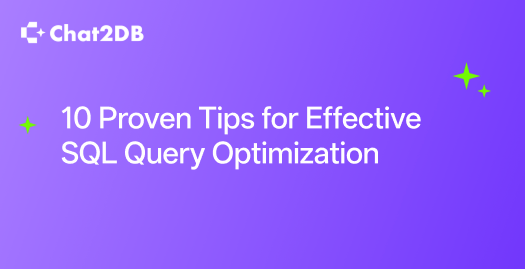
10 Proven Tips for Effective SQL Query Optimization
In this article, we will explore the basic concepts of normalization, its importance, and related techniques.

SQL Server Hash Index for Optimal Performance: A Comprehensive Guide
In this comprehensive guide, we will delve into the implementation of SQL Server Hash Index and its critical role in optimizing performance within database environments.

How to Use SQL Decimal Data Type in Your Database
The SQL Decimal Data Type is integral for managing numeric data with precision and reliability, especially in financial and scientific applications.

DBMS Full Form: A Comprehensive Overview for Effective Database Management
This article provides a thorough exploration of the DBMS full form and its significance across various industries, emphasizing its role as an intermediary between end-users and databases.

What is Sharding in MongoDB: A Beginner's Guide
Sharding in MongoDB is a critical strategy for managing large datasets and enhancing database performance. This guide will explore sharding's essential aspects, including its definition, significance, implementation steps, and best practices.

Time Series DB vs OLAP: Key Differences and Use Cases
This article delves into the characteristics, use cases, and best applications for each, emphasizing the strengths of time series databases in managing time-stamped data and OLAP systems in executing complex analytical queries.

CHAR vs VARCHAR in MySQL: Key Differences and Best Practices for Database Optimization
The CHAR data type is a fixed-length character string. When you declare a CHAR column, you must specify a length, and MySQL will allocate that fixed amount of space for each entry.

Open Source vs Proprietary DBMS
Proprietary Database Management Systems (DBMS) are specialized software solutions developed and owned by specific companies. They offer a range of functionalities and tools for managing databases effectively, distinguishing themselves from open-source alternatives.

How to Implement MongoDB Sharding for Optimal Performance
This article delves into the intricacies of **sharding** in MongoDB, covering its architecture, the significance of selecting an optimal shard key, step-by-step setup instructions, monitoring and maintenance practices, performance optimization strategies, and common pitfalls.
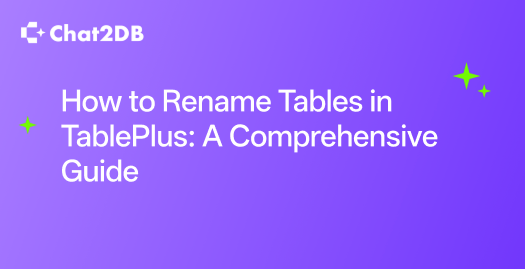
How to Rename Tables in TablePlus: A Comprehensive Guide
In this guide, we will explore the essential steps to rename tables in TablePlus, emphasizing the importance of backing up your database, understanding dependencies.

Top TablePlus Alternatives: Discover Efficient Database Management Tools
This article explores various **TablePlus alternatives** that cater to different needs, focusing on tools like Chat2DB, DBeaver, HeidiSQL, Sequel Pro, Navicat, and SQLyog.

How to Create Effective Relational Schema Diagrams: A Comprehensive Guide
Creating effective relational schema diagrams is crucial for professionals engaged in database management. These diagrams act as blueprints for designing relational databases, illustrating the relationships among entities, tables, attributes, and keys.

Neon vs Supabase: A Comprehensive Comparison and Analysis Guide
Neon aims to be a serverless Postgres database that scales seamlessly with demand, making it an ideal choice for developers seeking simplicity in database management. Supabase, on the other hand, is positioned as an open-source Firebase alternative, offering a comprehensive backend solution that includes authentication, database, and storage functionalities.

Top Open Source SQL Databases: Features and Benefits Explored
In this article, we will examine the rise of open source SQL databases, their key features, a comparative analysis of major databases such as PostgreSQL, MySQL, MariaDB, and SQLite, and real-world applications across various industries.

Top Database Client Tools: Features and Benefits Explained
Database client tools are indispensable for developers and database administrators, enabling effective management and interaction with databases. These tools provide user-friendly interfaces that allow users to execute queries, visualize data, and streamline various database management tasks.

Designing Effective Relational Database Schemas: Principles and Tools
SQL clauses are fundamental components of SQL queries that dictate how data is retrieved, filtered, and organized from databases. Key clauses include SELECT, FROM, WHERE, GROUP BY, HAVING, and ORDER BY.

How to Use MySQL CMD: Essential Tips and Tricks for Database Management
This article will guide you through various aspects of MySQL CMD, from setting up your environment to troubleshooting and debugging.

Setting Query Statement Timeout in PostgreSQL
The Postgres query timeout feature is critical for maintaining database responsiveness and stability. It defines the maximum time allowed for a query to execute before it is terminated.

How Primary and Foreign Keys Enhance Database Integrity
This article delves into how primary and foreign keys enhance database integrity, the implications of their proper usage, and how tools like Chat2DB can facilitate effective key management.

How to Effectively Use MySQL LEFT JOIN in Your Queries
In MySQL, the LEFT JOIN is a powerful tool that allows developers to merge data from multiple tables. Unlike the INNER JOIN, which only returns rows with matching values in both tables, the **LEFT JOIN** ensures that all records from the left table are included in the result set,.

How to Change Column Data Types in MySQL: A Comprehensive Guide
MySQL column data types define how data is stored, retrieved, and manipulated within a database. Selecting the appropriate data type is vital for optimizing the database schema and maintaining data integrity.

A Comprehensive Guide to SQL Server to PostgreSQL Migration
Migrating from SQL Server to PostgreSQL can seem daunting, but understanding the process and the available tools can significantly simplify it.

SQLite vs PostgreSQL: How to Choose?
SQLite is a serverless, self-contained SQL database engine known for its portability and ease of integration into applications. On the other hand, PostgreSQL is a powerful, open-source object-relational database system recognized for its robustness and extensive feature set.

Everything you need to know about PostgreSQL triggers: A Comprehensive Guide
In PostgreSQL, triggers are special procedures that are automatically executed in response to certain events on a particular table or view.

A Comprehensive Guide to PostgreSQL Arrays
Arrays in PostgreSQL are a powerful feature that allows users to store multiple values within a single field, making them particularly useful for complex data structures like JSON.

Effortlessly Migrate PostgreSQL Database Schema: A Step-by-Step Guide
Migrating PostgreSQL database schemas can seem daunting, but with the right approach and tools, it can be done efficiently and effectively.
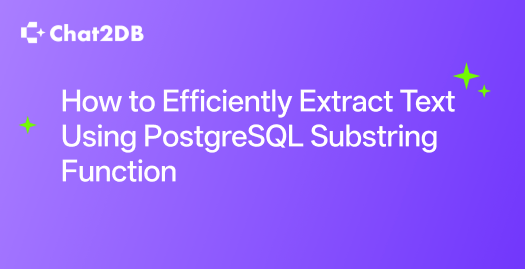
How to Efficiently Extract Text Using PostgreSQL Substring Function
In this comprehensive guide, we will delve into the PostgreSQL substring function, a crucial tool for efficiently extracting text within your database.
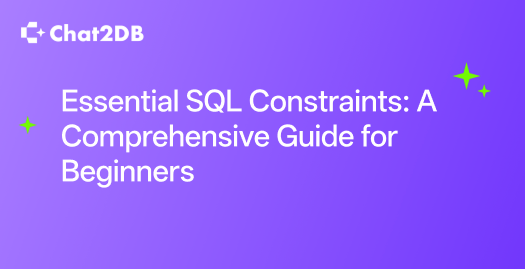
Essential SQL Constraints: A Comprehensive Guide for Beginners
SQL constraints are rules applied to table columns that dictate the type of data that can be stored in them. They are crucial for maintaining data accuracy and integrity within relational databases.

How to Leverage MongoDB CLI for Efficient Data Management
This article delves into the foundational aspects of MongoDB CLI, covering its setup, basic commands, advanced features, security best practices, optimization strategies, and ways to expand your skills.

How to Effectively Utilize MongoDB Group By Count for Enhanced Data Analysis
MongoDB Group By Count operation is an essential tool for aggregating and analyzing large datasets. This operation enables users to group documents based on specific fields and count the occurrences within those groups.

Firebase vs MongoDB: Key Differences and Use Cases
This article delves into the **key differences** between Firebase and MongoDB, two prevalent solutions, while emphasizing their diverse use cases.

How to Optimize MongoDB Indexing for Faster Query Performance
MongoDB indexing is a crucial feature that accelerates data retrieval operations. An index in MongoDB is a data structure that enhances query performance by enabling the database to locate documents efficiently.

Top 5 MongoDB Alternatives: Key Features and Benefits
When selecting the right database management system, many developers find themselves exploring MongoDB alternatives. Despite MongoDB's popularity and capabilities, there are valid reasons to seek other options, such as scalability issues, data consistency concerns, and licensing changes.

How to Leverage MongoDB Realm for Efficient App Development
MongoDB Realm is designed as a serverless application backend that enables developers to focus on building applications without worrying about the complexities of traditional backend infrastructure.

How to Effectively Use db.collection.findOne() in MongoDB Queries
MongoDB is a powerful NoSQL database that provides developers with a flexible data model and an efficient querying system. One of the most essential methods for querying documents in MongoDB is db.collection.findOne(). This method allows users to retrieve a single document from a collection that matches a specified query filter.

How to Optimize Your Project with Spring Data MongoDB: Best Practices and Tools
This article covers foundational concepts of Spring Data MongoDB, setting up your development environment, implementing repositories, optimizing query performance, leveraging the aggregation framework, handling transactions.

Cassandra vs MongoDB: Key Differences and Use Cases
In this article, we will delve into the key differences between **Cassandra** and MongoDB, two of the most prominent NoSQL databases in the market.

How to Use MongoDB Aggregate: The Ultimate MongoDB Aggregation Guide
The MongoDB Aggregation Framework serves as a powerful tool for processing and analyzing data stored in collections. By leveraging this framework, users can perform complex queries that transform and aggregate data across multiple documents.

Mastering Your MongoDB Cheat Sheet: Quick Tips and Tricks for Success
MongoDB stands out as a leading NoSQL database known for its flexibility and scalability, making it a favored choice among developers.

How to Implement MongoDB Vector Search for Enhanced Performance: A Comprehensive Guide
MongoDB has evolved into a powerful NoSQL database that supports advanced data processing needs, particularly with the integration of vector search capabilities.

How to Optimize MongoDB Sharding for Enhanced Performance
MongoDB sharding is a database architecture pattern designed to scale horizontally by partitioning data across multiple servers, known as shards.

How to Optimize Your MongoDB Cluster for Peak Performance
A MongoDB cluster is a collection of servers that work together to provide high availability and scalability for your data. Clusters are essential for managing large datasets, ensuring that applications can access data quickly and reliably.

MongoDB vs PostgreSQL: Key Differences Explained for Optimal Database Management
The primary distinction lies in their data modeling approaches. MongoDB's document-based storage allows for flexible and dynamic schemas, while PostgreSQL's relational model enforces strict data structures.

How Indexing in DBMS Enhances Database Performance
Indexing in a Database Management System (DBMS) is a powerful technique essential for improving database performance, particularly in data retrieval operations.

How to Efficiently Backup Foreign Servers in PostgreSQL
Foreign Data Wrappers (FDW) allow PostgreSQL to access data stored in external databases seamlessly. They serve as an integral component for integrating foreign servers into PostgreSQL, enabling diverse data sources to be handled within a unified environment.

How SQL Agent Langchain Transforms Automated Data Management
SQL Agent Langchain represents a significant advancement in the automation of data management processes. By integrating advanced language models with traditional SQL Server automation, SQL Agent Langchain revolutionizes how developers, database administrators, and data analysts interact with data.
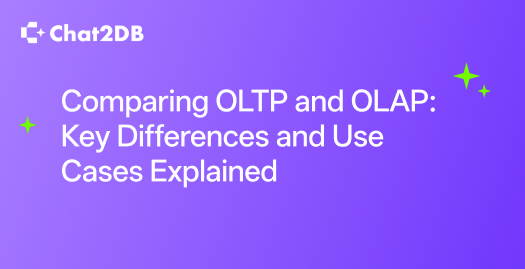
Comparing OLTP and OLAP: Key Differences and Use Cases Explained
OLTP systems are designed to manage transaction-oriented applications, supporting a large number of short online transactions.

Effective Ways to Optimize Your MySQL Group By Queries
This article explores various techniques and strategies to improve the performance of GROUP BY queries in MySQL, including indexing, utilizing aggregate functions, and leveraging advanced techniques.

How to Safely Use MySQL TRUNCATE for Efficient Database Management
Unlike the DELETE command, which removes rows one at a time and logs each deletion, TRUNCATE operates by deallocating the data pages used by the table, resulting in significant performance improvements.

A Beginner’s Guide to Database Normalization: 1NF, 2NF, 3NF, and Beyond
This comprehensive guide delves into essential tuning tips and techniques that developers can implement to enhance their MySQL 8 RDS environments.

Top 10 Essential DBMS MCQ Questions for Exam Preparation
This article delves into the top 10 essential DBMS MCQ questions, focusing on key concepts and terminologies that are vital for mastering the subject. We will explore various aspects of DBMS, including its significance, core functions, and common terminologies.

What is an Alternate Key in Database Management Systems?
Alternate keys serve as unique identifiers that facilitate efficient data retrieval and management, distinguishing them from primary and foreign keys.

How to Install and Configure Oracle Client: A Comprehensive Guide
Installing and configuring the Oracle Client is crucial for developers and database administrators who need to connect applications to Oracle databases.

How to Efficiently Backup Databases Using Mysqldump: A Comprehensive Guide
This article delves into the key features of mysqldump, its operational modes, and best practices for executing backups effectively.

How to Master MySQL Functions: A Practical Guide for Beginners
MySQL functions are essential tools in database management, enabling users to perform calculations, manipulate data, and format strings with remarkable efficiency.

How to Effectively Use MySQL COALESCE for Data Management
The MySQL COALESCE function is a vital tool for effective data management, particularly when dealing with NULL values in databases.

How to Leverage Oracle Data Integrator for Seamless Data Management
In this article, we will explore the basic concepts of normalization, its importance, and related techniques.

How to Secure Your Database Connections with PSQL SSL: A Comprehensive Guide
SSL (Secure Sockets Layer) is a standard technology that establishes an encrypted link between a server and a client. In the context of PostgreSQL (PSQL), SSL secures connections between the database server and clients, protecting sensitive data from eavesdroppers and ensuring data integrity.

Comprehensive Guide to Aggregate Functions in DBMS
Aggregate functions are essential components of SQL that enable users to efficiently process and summarize large datasets. In this comprehensive guide, we will explore the various aggregate functions in DBMS and their significant role in data analysis.

How Lock-Based Protocols Enhance Transaction Control in DBMS
Lock-based protocols are essential mechanisms in DBMS that control access to data items during concurrent transactions. The primary goal of these protocols is to guarantee that transactions can execute simultaneously without leading to inconsistent data states.

DBMS Schema Explained: Understanding Database Structure in DBMS
A schema in DBMS is fundamentally a structured framework that defines the organization of data within a database. It serves as a blueprint for how data is stored, organized, and manipulated, playing a vital role in maintaining data integrity and ensuring that the database functions effectively.

How to Effectively Define and Manage Entities in DBMS Systems
In a DBMS, entities represent real-world objects or concepts that can be distinctly identified. Each entity is characterized by its attributes, which provide detailed information about it.

Top Techniques for Efficient Indexing in DBMS
An index is a data structure that enables faster searches by allowing quick access to data without scanning the entire database. This is particularly important in large databases where extensive data can significantly slow down query performance.

How to Format Dates in MySQL: A Practical Guide for Beginners
This guide covers various MySQL date formats, how to use the DATE_FORMAT() function, handle time zones, and perform date arithmetic.

PostgreSQL vs MongoDB: Key Differences, Features, and When to Use Each
Relational databases, such as PostgreSQL, are designed to handle structured data. They use tables with rows and columns to organize information and rely on a predefined schema.

Top 10 MySQL Clients: Discover the Best MySQL Client for Efficient Database Management
This article showcases the Top 10 MySQL Clients that significantly enhance database management, with a special focus on Chat2DB—an innovative tool that leverages AI technology to streamline database operations.

Choosing Between Time Series DB vs OLAP: Key Differences Explained
This article delves into the architecture and functionalities of both TSDB and OLAP, highlights their key differences, and provides insights into choosing the right database for your specific needs.

Comparing OLAP Solutions: A Detailed Analysis of DuckDB and ClickHouse
This article provides an in-depth comparison of two prominent OLAP solutions, DuckDB and ClickHouse, focusing on their architectures, performance capabilities, and use cases.

OLAP vs OLTP Database: Key Differences and Best Use Cases
OLAP is a category of software technology that empowers analysts, managers, and executives to gain insights from data through fast, consistent, and interactive access in various formats.

OLTP vs OLAP: Key Differences and Choosing the Right Approach
In essence, while OLTP focuses on operational efficiency and real-time data processing, OLAP emphasizes analytical capabilities and historical data evaluation.

How to Integrate Python LDAP for Seamless Directory Access
Python LDAP provides a powerful framework for managing directory services through the Lightweight Directory Access Protocol (LDAP). LDAP allows applications to access and manage directory information services over a network, which is crucial in enterprise environments for managing user authentication, authorization, and information retrieval.

Time Series DB vs OLAP: Key Differences, Best Use Cases
This article will delve into the key distinctions between TSDBs and OLAP systems, their best use cases, performance considerations, and how tools like Chat2DB can significantly enhance your data management and analysis experience.

How DuckDB is Revolutionizing OLAP Workflows: Essential Benefits Explained
With its efficient in-process architecture, DuckDB enables developers to execute complex analytical queries directly within their applications.

How to Leverage OLAP DB for Advanced Data Analysis: Unlocking Insights for Business Intelligence
This article explores the intricacies of OLAP systems, detailing their architecture, features, and implementation strategies while emphasizing their significance in business intelligence. We will discuss the types of OLAP systems, the role of OLAP cubes, and the advantages they offer to developers and organizations alike.

How to Configure the LDAPS Port for Secure Authentication
LDAPS (Lightweight Directory Access Protocol Secure) enhances the security of LDAP by utilizing SSL/TLS encryption, which protects sensitive data during transmission.

How to Execute Common SQL Commands with PSQL: A Comprehensive Guide with Examples
Executing SQL commands effectively is essential for efficient database management, and using PSQL (PostgreSQL interactive terminal) is a powerful method to achieve this.

Top 5 pgAdmin Alternatives for Efficient Database Management
While pgAdmin is a popular choice for PostgreSQL management, many users seek **pgAdmin alternatives** that offer enhanced features, improved usability, and better integration capabilities. In this article, we will explore the top five alternatives: DBeaver, HeidiSQL, DataGrip, TablePlus, and Chat2DB.

How 2NF in DBMS Enhances Database Efficiency: A Comprehensive Guide
Database normalization begins with First Normal Fosrm (1NF), which mandates that all entries in a database table be atomic and unique. However, achieving 1NF does not inherently eliminate redundancy. This is where Second Normal Form (2NF) comes into play.

RDBMS vs DBMS: Key Differences and When to Use Each
A DBMS is software that allows users to define, create, maintain, and control access to databases. An RDBMS organizes data into tables (or relations) that can be linked based on common data values.

How Fourth Normal Form (4NF) Enhances Database Normalization in DBMS
Fourth Normal Form (4NF) is an advanced normal form that builds upon the principles of 3NF. It specifically addresses the issue of multivalued dependencies, which occur when a single attribute in a table is associated with multiple values of another attribute.

Understanding the Four Key Transaction States in DBMS: A Comprehensive Guide
Transactions are fundamental units of work in Database Management Systems (DBMS) that ensure data integrity and consistency. Understanding the four key transaction states—Active, Partially Committed, Committed, and Failed—is crucial for effective database management.

How to Ensure Data Consistency in 1NF: Format Guidelines and Best Practices
Ensuring data consistency in First Normal Form (1NF) is an essential aspect of database design that significantly impacts data integrity and query performance.

Understanding the Role of Data Format in Achieving 1NF Compliance
1NF requires that each column in a database table contains atomic values, meaning that each field must hold indivisible values. Additionally, there should be no repeating groups or arrays in the table.

Understanding 1NF: A Comprehensive Guide to First Normal Form in Databases
Database normalization is a systematic approach to structuring a database in a way that reduces data redundancy and improves data integrity.

How to Enhance Database Security with MySQL Firewall: A Comprehensive Guide
This guide delves into effectively implementing MySQL Firewall, a robust tool designed to protect your MySQL databases from malicious SQL queries. We will cover the setup, configuration, monitoring capabilities, and advanced features of MySQL Firewall.
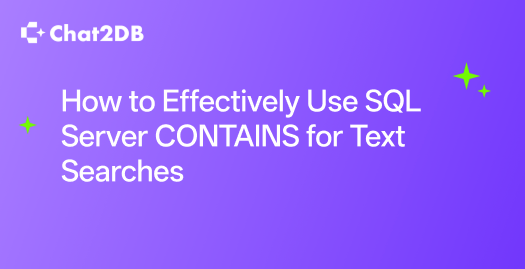
How to Effectively Use SQL Server CONTAINS for Text Searches
SQL Server's CONTAINS predicate is a crucial part of the full-text search functionality. It allows for sophisticated searches in text columns by leveraging full-text indexes.

How to Effectively Implement PostgreSQL Triggers: A Comprehensive Guide
Triggers in PostgreSQL provide a robust mechanism for automating tasks and enforcing business rules within your database. This comprehensive guide will cover everything from the fundamental concepts of PostgreSQL triggers to advanced techniques and best practices.

How to Seamlessly Integrate Django with PostgreSQL for Scalable Applications
Integrating Django with PostgreSQL empowers developers to build robust, scalable applications. This article explores the core concepts of Django and PostgreSQL, guiding you through their setup, performance optimization, advanced features, and best practices in security.

How to Use COALESCE in PostgreSQL for Effective Data Handling
The COALESCE function in PostgreSQL is designed to return the first non-null value from a list of expressions. This feature is particularly useful when dealing with incomplete datasets, as it allows developers to provide fallback values seamlessly.

Top Tips to Prepare for Oracle Java Certification Success
Obtaining an Oracle Java Certification is a recognized achievement that validates your proficiency in Java programming.

How to Implement and Optimize PostgreSQL Check Constraints for Enhanced Data Integrity
In PostgreSQL, check constraints are rules that enforce specific conditions on the values within a table's columns. They ensure that only valid data is entered into the database, enhancing data integrity and accuracy.

How to Effectively Implement a Primary Key in PostgreSQL
This article explores the significance of primary keys, how to set them up, their benefits, handling constraints, advanced techniques, and best practices for management.

MongoDB vs PostgreSQL: Choosing the Right Database for Your Needs
This article will explore the core differences between these databases, focusing on their architectures, performance, scalability, data model flexibility, security, ecosystem, cost considerations, and real-world applications.

MySQL vs PostgreSQL: Key Differences and Choosing the Right One for Your Database Needs
MySQL is renowned for its speed and simplicity, making it a favored choice for web applications. Conversely, PostgreSQL is celebrated for its advanced features, extensibility, and adherence to SQL standards, making it ideal for complex applications requiring high data integrity.

SQLite vs PostgreSQL: Key Differences and Use Cases
SQLite is a lightweight, serverless database that excels in simplicity and ease of integration, making it perfect for mobile applications and embedded systems. Conversely, PostgreSQL is a powerful object-relational database designed for complex data operations, catering to enterprise-level applications and large-scale data analytics.

How to Effectively Extract Text Using PostgreSQL Substring Function
The PostgreSQL substring function is an essential SQL operation that enables users to extract specific portions of text from strings, making it invaluable for data manipulation tasks.

PostgreSQL vs MongoDB: A Detailed Comparison for Developers
This article provides an in-depth comparison of PostgreSQL, a robust open-source relational database, and MongoDB, a leading NoSQL database celebrated for its scalability and flexibility.

How to Select a Database in PostgreSQL (psql)
Selecting the right database in PostgreSQL (psql) is essential for database administrators and developers. This article serves as a comprehensive guide on efficiently selecting a database in PostgreSQL, focusing on its architecture, environment setup, command-line interface, connection processes.

How Entities Function in DBMS: A Beginner's Introduction to Database Management
At its core, an entity in DBMS represents a real-world object or concept that can be distinctly identified. Entities form the foundational building blocks of a database schema, characterized by their attributes.

Denormalization in DBMS: Key Benefits, Best Practices, and How Chat2DB Enhances the Process
PostgreSQL is an advanced open-source relational database management system (RDBMS) known for its robustness and versatility in handling complex queries and large datasets.

How to Effectively Implement Oracle RAC for Optimal Performance
This article explores various aspects of Oracle RAC, including its architecture, pre-implementation considerations, step-by-step implementation, performance optimization strategies, common challenges, and solutions.

How DDL Commands Shape Database Structures: An In-Depth Guide to DDL in DBMS
Data Definition Language (DDL) commands are fundamental to the structure and management of databases within Database Management Systems (DBMS).

How to Effectively Utilize MySQL Boolean for Advanced Queries
MySQL Boolean is an essential feature that empowers developers to execute advanced queries, significantly enhancing the performance and accuracy of text-based data searches.

Understanding the Role of Scheduling in DBMS: Key Concepts Explained
Scheduling plays a pivotal role in Database Management Systems (DBMS) by managing concurrent transactions, ensuring data consistency, and optimizing system performance.

Top Features and Benefits of Oracle Lighting Products: Illuminate Your Automotive Experience
In the ever-evolving automotive industry, Oracle Lighting stands as a beacon of innovation and quality. Their commitment to excellence is evident in their extensive range of lighting solutions designed to enhance both the performance and aesthetic appeal of vehicles.

Preventing Deadlock in DBMS: Essential Techniques and Best Practices for Efficiency
A deadlock occurs when two or more transactions are unable to proceed because each is waiting for the other to release resources. This article explores essential techniques and tips for preventing deadlock in DBMS, including various strategies and best practices that database administrators can leverage.

Comparing SQL: When to Use WHERE vs. HAVING Clauses
SQL clauses are fundamental components of SQL queries that dictate how data is retrieved, filtered, and organized from databases. Key clauses include SELECT, FROM, WHERE, GROUP BY, HAVING, and ORDER BY.

How 2NF in DBMS Enhances Database Normalization: Key Insights and Practical Applications
Second Normal Form (2NF) is an essential step in the database normalization process within DBMS. The primary goal of 2NF is to eliminate partial dependency, which occurs when a non-key attribute is functionally dependent on only a part of a composite primary key.

Essential MySQL Commands: A Beginner's Guide to Database Management
In this comprehensive guide, we will explore essential MySQL commands that every beginner should know to effectively manage databases. We will discuss the importance of databases, provide detailed instructions for setting up a MySQL environment, and delve into basic and advanced commands.

Securely Implementing mysql_native_password: A Comprehensive Guide for Database Security
mysql_native_password is a widely used authentication plugin in MySQL databases, providing a straightforward method for user authentication.

Effectively Utilizing MySQL LIMIT for Optimal Query Performance
The LIMIT clause in MySQL is designed to restrict the number of rows returned in a query result. This capability is particularly useful in scenarios such as pagination, where displaying all records at once can overwhelm users and consume unnecessary resources.

How to Efficiently Format SQL for Improved Readability and Performance
Well-structured SQL code significantly reduces errors, facilitates collaboration among team members, and ensures maintainability. Moreover, clear formatting aids in debugging and error detection, while also improving query performance.

How to Properly Format SQL for Enhanced Readability and Performance
This article explores the critical aspects of **SQL formatting**, including its significance in writing clear and efficient queries, best practices to follow, and tools to assist developers in maintaining high-quality code.

How to Master PostgreSQL: A Comprehensive Beginner's Tutorial for Data Management
PostgreSQL is an advanced open-source relational database management system (RDBMS) known for its robustness and versatility in handling complex queries and large datasets.

Top AI Databases: Features, Benefits, and How to Choose the Best One
Exploring advanced SQL interview questions to test and enhance your SQL knowledge, covering a wide range of topics and scenarios.

Efficient Installation and Configuration of SQL Native Client: A Complete Guide
SQL Native Client is a crucial data access technology from Microsoft that integrates the SQL OLE DB Provider and SQL ODBC Driver into one dynamic-link library (DLL).

What is Database Schemas: Key Concepts and Importance
Exploring advanced SQL interview questions to test and enhance your SQL knowledge, covering a wide range of topics and scenarios.

Designing Effective Relational Database Schemas: A Comprehensive Guide to Best Practices and Tools
This comprehensive guide explores the essential aspects of designing effective relational database schemas, highlighting key principles, common pitfalls, and advanced techniques.

How to Convert Natural Language into SQL: A Comprehensive Guide to Text-to-SQL with Chat2DB
Converting natural language into SQL (text-to-SQL) is a powerful capability that enhances interaction between non-technical users and databases. This guide delves into the intricacies of Natural Language Processing (NLP) and SQL

PostgreSQL vs SQL: Key Differences and When to Use Each
While SQL serves as the foundation for interacting with databases, PostgreSQL builds on this foundation by providing additional functionalities

How to Add a Foreign Key in MySQL: Step-by-Step Guide
Adding a foreign key in MySQL is a crucial aspect of database design that helps maintain referential integrity between related tables. This comprehensive guide will walk you through the process of efficiently implementing foreign keys in MySQL.

What is a Composite Key in SQL
Composite keys are a fundamental concept in SQL that plays a crucial role in maintaining data integrity and efficiency in database design.

SQL vs NoSQL: Key Considerations for Choosing the Right Database
This article will delve into the fundamental differences, use cases, and performance implications of SQL and NoSQL databases while also highlighting the benefits of using tools like Chat2DB for efficient database management.

Understanding Natural Joins in SQL: What is a Natural Join in SQL?
Natural joins in SQL provide a powerful yet sometimes overlooked method for merging tables based on shared column names and compatible data types.
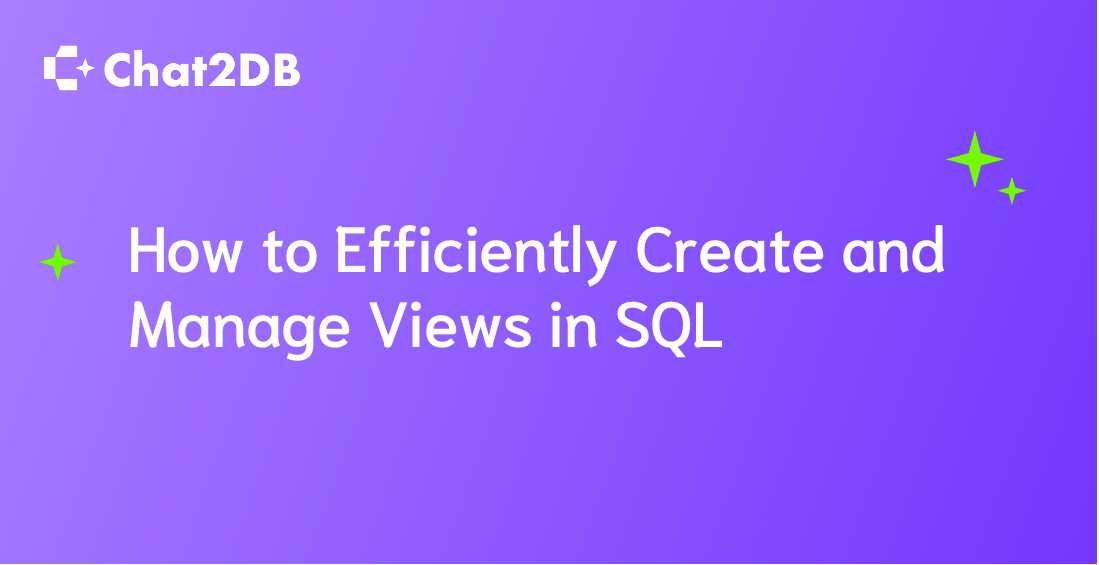
How to Efficiently Create and Manage Views in SQL
Creating and managing views in SQL is a fundamental skill for database administrators and developers. Views are virtual tables that simplify data access and enhance security by abstracting the underlying table structures.

Understanding SQL Schema: A Beginner's Guide to Database Structure
A schema serves as a blueprint for database architecture, guiding the logical configuration of data. It encompasses various database objects such as tables, views, indexes, and procedures, facilitating data integrity, security, and efficient data retrieval.

How to Comment in SQL: Effective Strategies for Clearer Code
Adding comments in SQL is an essential practice that enhances code clarity and maintainability. Comments serve as internal documentation, guiding developers through complex queries and providing context for future updates.

What is Primary Keys in SQL: A Comprehensive Guide
A primary key is a specific choice of a minimal set of attributes (columns) that uniquely identify a record within a table. The necessity for primary keys arises from the need to ensure data integrity and prevent duplicate records.

How to Use CASE Statements in SQL: A Comprehensive Guide
This powerful feature allows you to perform conditional logic within your SQL queries, transforming your data and generating insightful reports.

How to use CASE WHEN in SQL for Dynamic Data Manipulation
The CASE WHEN statement in SQL is a powerful tool for dynamic data manipulation, enabling users to create complex queries that can return different values based on specific conditions.

Is SQL Case Sensitive? A Comprehensive Guide
This article will explore the intricacies of **case sensitivity** in SQL, examining how it affects queries, identifiers, and data, while also providing best practices for managing it effectively.

How to Efficiently Manage SQL Server Configuration
This comprehensive guide will cover key aspects of **SQL Server Configuration Manager**, its components, and best practices for configuration management.

How to Effectively Utilize the HAVING Clause in SQL for Data Filtering
The HAVING clause in SQL is an essential component for efficient data filtering, particularly when dealing with aggregated data.

How to Use the HAVING Clause in SQL: A Comprehensive Guide
The HAVING clause allows users to filter aggregated data after performing grouping operations. Unlike the WHERE clause, which filters records before aggregation, the HAVING clause applies after aggregation.

How to Use WHERE and HAVING Clauses in SQL: A Practical Guide
This article provides a comprehensive overview of these clauses, emphasizing their unique roles and practical applications in SQL queries. By the end of this guide, you will grasp the differences between WHERE and *AVING, understand when to use each, and learn best practices for optimizing your SQL queries.

NoSQL vs Relational Databases: Choosing the Right Fit for Your Project
This comprehensive analysis explores the evolution of databases, their core differences, applications, challenges, popular systems, and future trends. By the end of this article, you will be well-equipped to make informed decisions about which database technology best fits your project requirements.

Top NoSQL Database Examples: A Comprehensive Guide for Beginners and Experts
NoSQL databases have fundamentally changed how we manage and interact with data, especially in a landscape where unstructured data is proliferating at an unprecedented pace.

How to Retrieve Table Names and Row Counts in SQL
Within SQL, a table consists of related data entries organized into rows and columns, each identified by a unique table name. Understanding the **row count**, or the total number of entries in a table, is crucial for database administrators and developers as it provides insight into the volume of data being handled.

How to Effectively Use COUNT DISTINCT in SQL for Accurate Data Analysis
The COUNT DISTINCT function is a crucial feature in SQL that enables users to calculate the number of unique values in a dataset. This functionality is particularly vital in data analysis, as it ensures that duplicates are not counted, resulting in precise and meaningful insights.
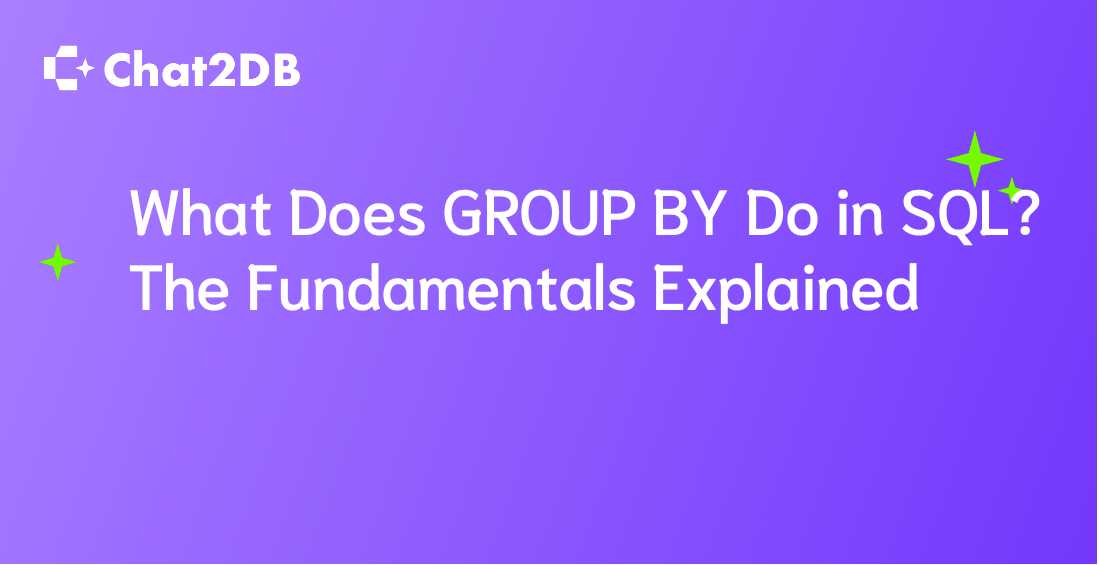
What Does GROUP BY Do in SQL? The Fundamentals Explained
The GROUP BY clause is often used in conjunction with aggregate functions such as COUNT, SUM, AVG, MAX, and MIN. These functions perform operations on each group of data, making it a powerful tool for summarizing data and generating insightful reports.

How to Use SQL Group By for Data Aggregation: A Comprehensive Guide
The SQL Group By clause is an essential feature for organizing data into groups, enabling developers to perform calculations on specified columns.

Unlocking the Power of SQL AI Chat: A Comprehensive How-To Guide
Chat2DB stands out as a leading player in SQL AI Chat technology. It integrates advanced features like natural language processing (NLP) and machine learning, facilitating seamless interactions between developers and databases.

How AI Chatbots Can Revolutionize SQL Query Management
AI chatbots are computer programs designed to simulate conversation with human users, primarily utilizing NLP to interpret user inputs and respond intelligently. They can transform everyday language into SQL queries, making it easier for users to interact with databases without needing extensive knowledge of SQL syntax.

Askyourdatabase vs Chat2DB: A Comprehensive Comparison for Database Management
In the realm of database management, advanced tools have revolutionized how developers and database administrators interact with their data. Two standout solutions in this space are Askyourdatabase and Chat2DB.
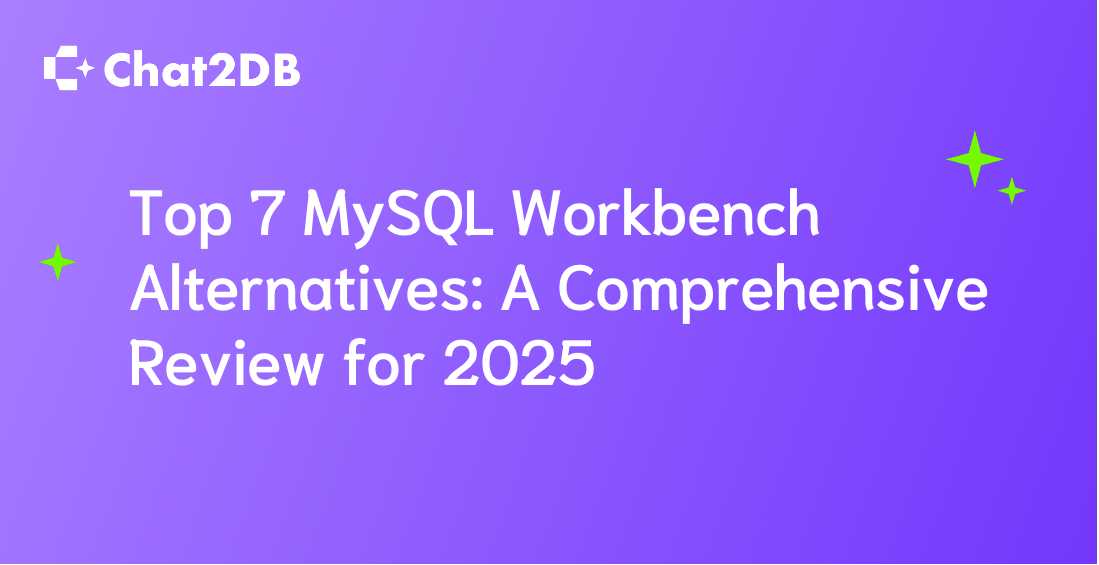
Top 7 MySQL Workbench Alternatives: A Comprehensive Review for 2025
While MySQL Workbench remains a popular choice, it is not without its challenges. Developers may find it resource-heavy, especially when managing larger databases or executing complex queries.

Top 5 PgAdmin Alternatives for Efficient Database Management
While PgAdmin is a widely used tool for managing PostgreSQL databases, it may not cater to the diverse needs of all developers and database administrators. In this article, we will explore the top five alternatives to PgAdmin.
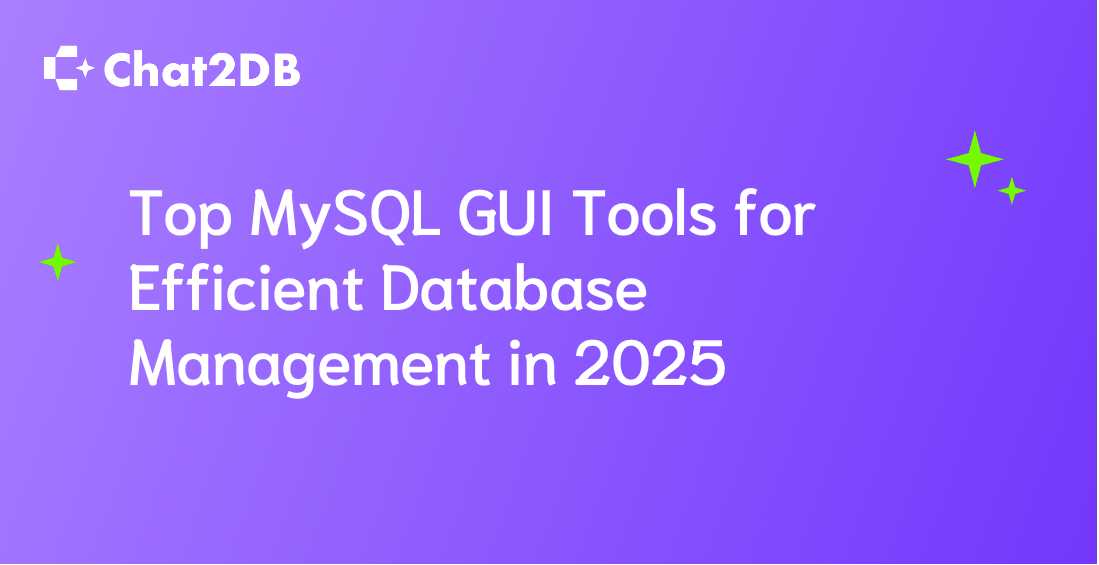
Top MySQL GUI Tools for Efficient Database Management in 2025
The transition from traditional command-line interfaces to MySQL GUIs has proven to be advantageous, especially in collaborative environments where team members possess varying skill levels. The accessibility of MySQL GUIs enables them to manage databases effectively, ultimately streamlining workflows.

Top Open Source Database Migration Tools: A Comprehensive Review and Guide
Database migration is the process of transferring data between different storage types, formats, or systems. This critical process is essential for businesses looking to upgrade their systems, move to cloud environments, or consolidate databases.

Mastering Essential MySQL Commands: A Comprehensive Guide for Beginners
MySQL utilizes SQL for managing databases, allowing users to execute a wide array of operations, such as data insertion, updates, and retrieval. Its scalability and reliability have made MySQL a preferred choice for many developers.

10 Essential Practices to Optimize PostgreSQL Database Performance
Optimizing your PostgreSQL database is crucial for maintaining high performance and efficiency. This comprehensive guide explores ten essential practices that will help you achieve optimal database performance. We will delve into various strategies, techniques, and tools that can significantly enhance your PostgreSQL experience.

PlanetScale vs Neon: An In-Depth Analysis of Modern Database Solutions
The importance of **data security** and compliance cannot be overstated, as businesses must navigate complex regulations while ensuring data integrity. In this evolving landscape, PlanetScale and Neon have emerged as key players, providing innovative solutions tailored for modern applications.

How to Effectively Use the COPY Command in PostgreSQL
The COPY command in PostgreSQL is an essential tool for efficiently importing and exporting data between files and tables. This command is particularly beneficial for developers managing large datasets.

Best SQL AI Tools: Enhance Your Database Management with Intelligent Solutions
The evolution of SQL tools highlights the growing trend of integrating AI into database management systems (DBMS), offering significant advantages in terms of efficiency, accuracy, and enhanced user experience.

A Step-by-Step Guide on How to Enter the PostgreSQL Command Line
The psql command line interface serves as an interactive terminal where users can execute SQL commands directly. This is vital for performing tasks like querying databases, updating records, and managing roles and permissions.

Comparing Neon vs Supabase: Key Differences and Best Use Cases
Neon is a pioneering serverless SQL database platform crafted for scalability and ease of use. On the flip side, Supabase serves as an open-source Firebase alternative, offering a comprehensive suite of tools for backend development that includes authentication, database management, and real-time capabilities.

How to Choose Between Sharding and Partitioning
In the modern landscape of database management, two terms frequently arise: sharding and partitioning. Both techniques are vital for managing large datasets effectively, yet they serve distinct purposes and are implemented in different contexts.

Unlocking the Power of Text2SQL Tools: A Comprehensive How-To Guide
Text2SQL tools have revolutionized how developers and analysts interact with databases. By converting natural language queries into SQL statements, these tools streamline the data retrieval process, making database management more accessible.

Top Alternatives to DBeaver for Database Management in 2025
In this article, we will discuss the top alternatives to DBeaver for database management in 2025, focusing on their features, advantages, and how they cater to specific database management needs.

DBeaver vs PgAdmin: A Comprehensive Feature and Performance Comparison
DBeaver is recognized for its multi-database support, allowing users to connect to various databases like MySQL, Oracle, and PostgreSQL. In contrast, PgAdmin is specifically designed for PostgreSQL, offering a tailored approach.

Top SQL Clients for Efficient Database Management: A Comprehensive Review
When evaluating the best SQL clients in the market, several key features come to the forefront. These features are instrumental in defining the overall user experience and effectiveness of the tool.

How to Effectively Manage Your Database with MySQLAdmin GUI
MySQLAdmin GUI is an essential tool for effectively managing MySQL databases. The term GUI refers to a Graphical User Interface, which enables users to interact with software through graphical elements like buttons and menus instead of text commands.

Effective Database Client Strategies: Enhancing Data Management and Accessibility
Database clients are essential tools in data management, empowering developers, database administrators, and data analysts with the capabilities to access, manipulate, and manage data across various databases.

The Best SQL Tools for Efficient Database Management: A Comprehensive Review
SQL tools are indispensable in the realm of database management and development. They serve as the primary interface for users to interact with databases, enabling tasks such as executing queries, updating records, and managing database schemas.

How to Automatically Generate UUID Keys in MySQL: A Step-by-Step Guide
A UUID is a 128-bit number used to uniquely identify information in software applications. In MySQL, UUIDs offer significant advantages over traditional auto-incrementing integer keys, particularly regarding scalability and security.

Understanding Data Models in DBMS: A Comprehensive Guide for Beginners
In the realm of Database Management Systems (DBMS), a data model serves as a foundational framework that defines how data is structured, stored, and manipulated.

Understanding Serializability in DBMS: Key Concepts and Practical Applications
Serializability effectively prevents critical anomalies such as dirty reads, non-repeatable reads, and phantom reads. For instance, consider a banking application. If two transactions execute concurrently without serializability, one transaction may read an uncommitted update made by another, resulting in inconsistent account balances.

How Transactions Work in DBMS: Key Concepts and Best Practices
Transactions play a vital role in ensuring that the database remains in a consistent state. In multi-user environments, it is essential to have a mechanism that allows concurrent access to data while preventing conflicts and anomalies.

How Data Models in DBMS Transform Database Design: A Comprehensive Guide
Data models have undergone significant transformation since the inception of database technology. Initially, hierarchical and network models dominated the landscape, providing a structured way to organize and retrieve data.

Understanding Cardinality in DBMS: Key Concepts and Practical Applications
Cardinality in Database Management Systems (DBMS) refers to the uniqueness of data values contained in a column. It is a critical concept that influences how databases are designed, optimized, and queried.

Comprehensive Guide to Understanding and Utilizing Super Keys in DBMS
Super keys are closely related to other types of keys, such as candidate keys, primary keys, and foreign keys. While a super key may consist of more attributes than necessary, a candidate key is a minimal super key, containing only the necessary attributes needed for unique identification.

How Keys in DBMS Enhance Database Integrity: An In-Depth Analysis
The primary types of keys include primary keys, foreign keys, candidate keys, and composite keys, each serving a specific purpose to facilitate data retrieval and define relationships between tables.

How Relational Algebra Simplifies Query Processing in DBMS: A Practical Guide
Relational algebra is a foundational framework for query processing within database management systems (DBMS). This procedural query language allows users to formulate queries in a mathematical manner, making it essential for effective database management.

Comprehensive Guide: Understanding and Using SQL Server Native Client Effectively
SQL Server Native Client is an essential data access technology that merges the functionalities of the SQL OLE DB provider and the SQL ODBC driver into a unified dynamic-link library (DLL).

How to Efficiently Manage Data with Microsoft SQL Server: A Comprehensive Guide
Microsoft SQL Server is a powerful relational database management system (RDBMS) developed by Microsoft, designed to handle data storage, retrieval, and management for various applications, particularly in enterprise environments.

How to Effectively Integrate Supabase REST API into Your Web Applications
The effectiveness of Supabase is largely attributed to its RESTful architecture, which automatically generates API endpoints based on the database schema via PostgREST. This feature simplifies performing operations such as Create, Read, Update, and Delete (CRUD) on data stored in PostgreSQL.

How to Seamlessly Integrate Supabase with React: A Comprehensive Guide
Integrating Supabase with React can significantly enhance your web development workflow. This powerful combination empowers developers to take advantage of a real-time database alongside a dynamic front-end library, enabling the creation of responsive applications.

How to Implement Secure Authentication in Next.js with Supabase Auth
This guide will delve into the intricacies of implementing secure authentication in Next.js applications using Supabase Auth, equipping you with the tools and knowledge to build secure web applications.

How to Efficiently Perform Joins in Supabase: A Comprehensive Guide
One of the essential concepts in relational databases, including Supabase, is the use of joins. Joins enable you to combine rows from two or more tables based on related columns, facilitating complex data retrieval.

How to Efficiently Generate Types with Supabase: A Comprehensive Guide
Supabase is rapidly becoming a favored choice among developers seeking an open-source alternative to Firebase. As a backend-as-a-service platform, it provides essential features such as authentication, storage, and real-time databases.

Integrating Prisma with Supabase: A Comprehensive Guide for Developers
Prisma is an open-source next-generation Object-Relational Mapping (ORM) tool that empowers developers to build scalable and efficient databases. On the other hand, Supabase is an open-source alternative to Firebase, offering a suite of backend services including authentication, database, and storage solutions.

Mastering Supabase Drizzle: A Comprehensive Guide to Building Modern Applications
Supabase Drizzle is an innovative ORM (Object-Relational Mapping) framework designed to simplify database interactions within modern applications.

Appwrite vs Supabase: Comprehensive Feature and Performance Comparison
Among the leading open-source platforms, Appwrite and Supabase have gained significant traction. These platforms simplify the development process by providing essential backend functionalities such as authentication, database management, and serverless computing.

How to Efficiently Manage Supabase Migrations: A Comprehensive Guide for Developers
Migrations are a vital component of database management, particularly for developers using Supabase, an open-source alternative to Firebase.

How to Seamlessly Integrate Nuxt with Supabase for Scalable Web Applications
Integrating Nuxt, a powerful framework built on Vue.js, with Supabase, an open-source backend-as-a-service (BaaS), offers developers a unique advantage when creating scalable and efficient web applications.

How to Integrate Supabase with React Native: A Comprehensive Guide
Integrating Supabase into a React Native project offers numerous advantages, including ease of use, scalability, and its open-source nature. This combination allows for rapid application development with real-time capabilities, which can be transformative for applications requiring instant data updates.
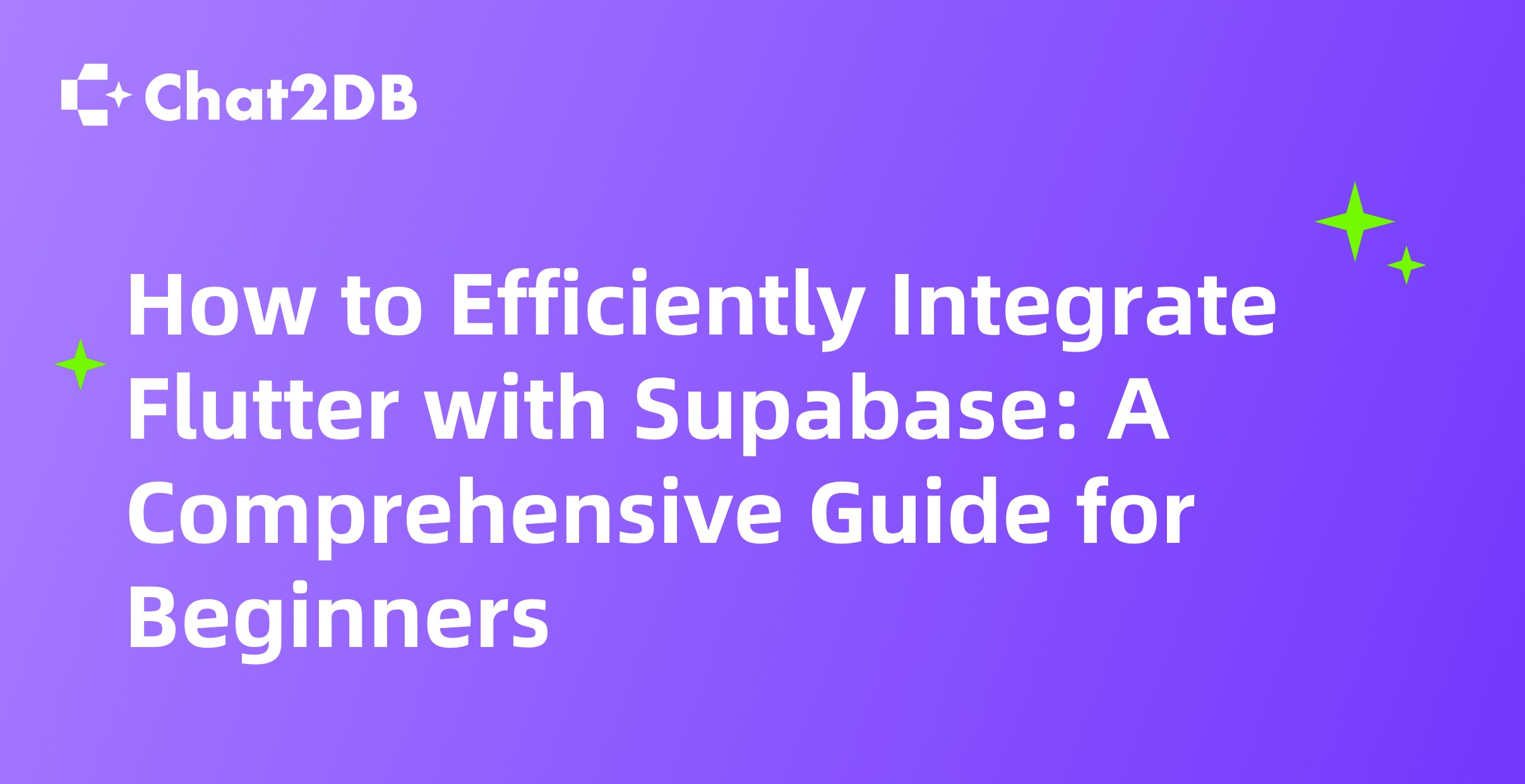
How to Efficiently Integrate Flutter with Supabase: A Comprehensive Guide for Beginners
Flutter is an open-source UI toolkit developed by Google that enables developers to build natively compiled applications for mobile, web, and desktop from a single codebase.

How to Implement Supabase RPC for Seamless Database Interactions
In this guide, we will explore how to implement Supabase RPC effectively for seamless database interactions, which are essential for application development.

How to Deploy and Manage Supabase with Docker: A Comprehensive Guide
In this guide, we will explore how to effectively set up and manage Supabase using Docker, ensuring a consistent and efficient development environment.

A Comprehensive Analysis of Firebase vs Supabase: Choosing the Right Backend for Your App
Traditional backend development requires extensive knowledge of server management and database administration, while BaaS simplifies these processes. Popular BaaS providers include Firebase and Supabase.

How to Seamlessly Integrate Supabase with Next.js
The integration of Supabase with Next.js creates a powerful environment for developing scalable, full-stack applications effortlessly.

How to Integrate Supabase with Flutter: A Comprehensive Step-by-Step Guide
Together, Supabase and Flutter create a powerful synergy, allowing developers to build efficient and scalable applications quickly.

Supabase vs Firebase: A Comprehensive Analysis of Features, Performance, and Efficiency
Supabase is an open-source alternative to Firebase, while Firebase, backed by Google, is renowned for its real-time database capabilities. Both platforms fall under Backend as a Service (BaaS), allowing developers to focus on frontend design without the burden of server management.

Mastering Supabase CLI: A Comprehensive Beginner's Guide
Serving as an open-source alternative to Firebase, Supabase offers developers a rich ecosystem that includes a PostgreSQL database, authentication services, storage solutions, and real-time subscriptions.

How to Efficiently List Tables in PostgreSQL
In PostgreSQL, the system catalog is crucial for storing metadata about database objects. The pg_catalog schema is the default system schema that contains vital tables such as pg_tables, pg_class, and information_schema.tables.

How to Generate Random Data in PostgreSQL: A Comprehensive Guide for Developers
Random data refers to data generated without a predictable pattern, making it ideal for testing purposes. It can be categorized as pseudo-random or truly random, with the former generated by algorithms and the latter derived from physical processes.

How to Implement Auto Increment in PostgreSQL: A Step-by-Step Guide
In PostgreSQL, the concept of auto increment is essential for automating the generation of unique values in tables.

Essential PostgreSQL Cheat Sheet: Key Commands and Tips for Beginners
PostgreSQL is an advanced open-source relational database management system (RDBMS) that has gained immense popularity among developers due to its robustness and extensive feature set.

How to Effectively Use the PostgreSQL BETWEEN Clause for Data Filtering
The PostgreSQL BETWEEN clause is an essential feature that allows developers to filter query results by specifying a range. The syntax is simple value1 BETWEEN value2 AND value3, which retrieves records where the column value lies within the boundaries of value2 and value3.

How to Effectively Implement Boolean Logic in PostgreSQL
Boolean logic is a fundamental concept in computer science and mathematics, widely utilized for creating true/false statements. In the realm of databases, particularly with PostgreSQL, Boolean logic plays a crucial role in filtering and querying data efficiently.

Mastering COALESCE in PostgreSQL: A Comprehensive Guide for Beginners
The COALESCE function is a powerful and versatile tool in PostgreSQL that plays a crucial role in managing NULL values efficiently.

Optimizing Django Applications with PostgreSQL: A Comprehensive Guide
Django and PostgreSQL create a dynamic environment for web application development, offering a combination of speed, reliability, and advanced features that developers appreciate.

PostgreSQL vs MongoDB: A Comprehensive Comparison of Their Strengths, Use Cases, and Future Trends
PostgreSQL is an advanced, open-source relational database system renowned for its robustness and adherence to SQL standards. On the other hand, MongoDB is a leading NoSQL database designed to manage unstructured data using a flexible, JSON-like document model.

How to Effectively Utilize JSON Data in PostgreSQL: A Comprehensive Guide
In web APIs and microservices architectures, JSON has become the preferred standard for data exchange, surpassing XML in both simplicity and efficiency. PostgreSQL's robust support for JSON allows users to store, query, and manipulate JSON data efficiently.

How to Harness AI2SQL for Effortless SQL Query Generation: A Comprehensive Guide
AI2SQL employs advanced natural language processing (NLP) algorithms to interpret user queries expressed in everyday language. This capability allows developers, data analysts, and even non-technical users to create SQL queries without extensive knowledge of SQL syntax.

How to Use Inner Join in PostgreSQL: A Comprehensive Guide to SQL Joins
Inner Join is a pivotal concept in relational databases, particularly in PostgreSQL, as it enables the combination of rows from two or more tables based on a related column.

How to Effortlessly Format SQL Code: Tips and Tools for Cleaner Queries
SQL code formatting refers to the organized layout of SQL queries that makes them easier to read and understand. Queries are the backbone of SQL, and how they are structured plays a significant role in the effectiveness of database interactions.

How to Seamlessly Install MySQL on Mac Using Brew: A Comprehensive Step-by-Step Guide
MySQL, a widely-used open-source relational database management system (RDBMS), is known for its reliability and robust performance. By combining Homebrew's efficiency with MySQL's capabilities, developers can streamline their development processes.

How to Effectively Use MySQL's CAST Function to Convert Data Types
Data type conversion plays a pivotal role in database management, particularly within MySQL. Converting data types correctly is essential to mitigate errors and inefficiencies arising from mismatched data types.

Unlocking the Power of MySQL REGEXP: Practical Tips and Examples
MySQL REGEXP (Regular Expressions) is a powerful tool that developers can leverage to perform complex pattern matching within SQL queries. This functionality allows for more sophisticated data retrieval and validation processes compared to traditional SQL operators.

How to Use DISTINCT in MySQL Join Queries: A Comprehensive Guide
The DISTINCT keyword in MySQL is an essential tool that helps eliminate duplicate rows from your result set. When retrieving data from a database, it’s common to encounter multiple identical entries across selected columns.

How to Count Distinct Values in MySQL Efficiently: A Comprehensive Guide
This guide will delve into various methods, optimizations, and advanced techniques to efficiently perform this operation in MySQL, a widely-used relational database management system.

What is the Default Port for MySQL?
This article delves into the technical details, historical context, and practical implications of the default port used by MySQL, which is port 3306.

How to Check Your MySQL Version: A Comprehensive Guide
Checking your MySQL version is straightforward and slightly varies depending on your operating system. Below are detailed steps for checking your MySQL version on Linux, Windows, and macOS.

What is COALESCE in MySQL?
The COALESCE function in MySQL is a powerful tool used to manage **NULL** values, which can often complicate database operations.

How to Insert a Column in MySQL: A Step-by-Step Guide for Beginners
This guide offers a comprehensive overview of how to insert a column in MySQL, ensuring you have the knowledge and tools to execute this task proficiently.

How to Effectively Use Inner Join in MySQL: A Step-by-Step Guide
An Inner Join in MySQL is a fundamental concept in relational database management that allows you to retrieve records from two or more tables based on a related column between them.

How to Do Full Join in MySQL
Joins allow us to retrieve data from two or more tables based on related columns between them. The FULL JOIN, which is the focus of this tutorial, returns all rows from both tables, inserting NULLs where there is no match.

How to Effectively Implement the IF Statement in MySQL Queries: A Step-by-Step Guide
The IF statement is a fundamental control structure in MySQL that allows you to perform conditional operations within your SQL queries.

How to Fix the MySQL Shutdown Unexpectedly Error: A Comprehensive Guide
Common scenarios triggering this error include power failures, improper shutdowns, or system crashes. For example, if the server is abruptly powered off while writing data, it could lead to corrupted data files.

How to Efficiently Update MySQL: A Comprehensive Step-by-Step Tutorial
In this tutorial, we will delve into the importance of updating MySQL, the preparation required prior to an update, a detailed step-by-step process for updating MySQL, post-update best practices.

SQL vs MySQL: Understanding the Key Differences for Beginners
To fully grasp the difference between SQL and MySQL, it's essential to start with a solid foundation. SQL, or Structured Query Language, is a standard programming language specifically designed for managing and manipulating relational databases.

MariaDB vs MySQL: A Comparative Overview of Features and Performance
MariaDB, a fork of MySQL, was created after Oracle's acquisition of Sun Microsystems. Understanding this historical background is crucial for grasping the differences in development philosophy and progress speed between these two databases.

SQL vs MySQL: Key Differences and When to Use Each for Database Management
SQL is the standard language utilized for managing and manipulating databases. It serves as a crucial tool for querying, updating, and managing relational databases. In contrast, MySQL is a popular open-source relational database management system (RDBMS) that implements SQL.

Exploring the Key Advantages and Use Cases of NoSQL Databases
The MySQL CONCAT function is a fundamental tool that allows developers to concatenate two or more strings into a single string. This built-in function plays a crucial role in SQL queries, especially in dynamic query building.

Mastering MySQL SUBSTRING: A Comprehensive Guide for Data Manipulation
The SUBSTRING function in MySQL is a fundamental tool that enables users to extract specific portions of a string based on defined parameters, namely position and length.

How to Configure and Secure Your MySQL Port: A Comprehensive Guide
In MySQL, a port serves as a communication endpoint, enabling the database server to accept incoming connections. By default, MySQL utilizes port 3306, which is a standard configuration across various database systems.

Transforming Natural Language into SQL: A Comprehensive Guide to Text-to-SQL Techniques
As businesses increasingly rely on data-driven decisions, the demand for accessible text-to-SQL systems has significantly increased. These systems empower users to convert natural language queries into SQL commands without requiring extensive SQL knowledge.

Top DBeaver Alternatives for Efficient Database Management in 2025
While DBeaver has long been a popular choice for database management, the landscape is evolving. In 2025, many developers are exploring alternative tools that address their unique needs and improve productivity.

How to Synchronize Your Database Schema with Chat2DB: A Step-by-Step Guide
Database schema synchronization is a critical aspect of modern software development. It ensures that your databases remain consistent across different environments, such as development, testing, and production.

How to Seamlessly Implement Schema Synchronization: A Practical Guide for Database Management
In this comprehensive guide, we will delve into the fundamentals of schema synchronization, explore the tools and technologies available, outline best practices for implementation, and discuss how to overcome common challenges.

How to Effectively Utilize Liquibase for Database Migrations: A Comprehensive Step-by-Step Guide
In this comprehensive guide, we will explore Liquibase, an open-source database schema change management tool that helps developers track, manage, and apply database changes seamlessly.

How to Efficiently Transform Natural Language into SQL with Text2SQL Techniques
Text2SQL is a groundbreaking technique that converts natural language queries into SQL statements, effectively bridging the gap between human language and database interaction.

Unlocking the Power of Text2sql with Chat2DB: A Comprehensive Guide to Transforming Database Management
Text2sql acts as a bridge, enabling users to communicate with databases using everyday language rather than intricate SQL syntax. This capability significantly enhances user experience, particularly for individuals without a technical background.

Comparative Analysis: Choosing Between HeidiSQL and Chat2DB for Your Database Needs
As data becomes more complex and voluminous, the demand for intuitive tools that simplify database operations grows. Both HeidiSQL and Chat2DB cater to these needs, offering unique features and functionalities that appeal to different user bases.

HeidiSQL: Essential Tips for Streamlining Your Database Management
HeidiSQL is an efficient software solution tailored for managing databases, primarily focusing on MySQL, MariaDB, and PostgreSQL.

How to Connect to MySQL: A Comprehensive Guide for Beginners
MySQL is a widely used open-source relational database management system (RDBMS) that plays a crucial role in modern web development and data storage solutions.

How to Efficiently Implement and Optimize Materialized Views in Your Database
Unlike regular views, which are stored queries, materialized views store the results of queries physically in the database, allowing for faster access to data.

Top Free SQL Clients: A Comprehensive Guide for Every Developer
Free SQL clients are vital tools for database management and manipulation. These clients come in various forms, including command-line interfaces (CLI) and graphical user interfaces (GUI), each offering unique advantages.

How to Convert Natural Language to SQL: A Comprehensive Step-by-Step Guide
Converting natural language to SQL represents a fascinating intersection of linguistics and technology, primarily driven by advancements in Natural Language Processing (NLP).

What Is A Database Management System (DBMS)?
Database Management Systems (DBMS) form the cornerstone of effective data management in contemporary organizations. They provide the framework for storing, retrieving, and manipulating data efficiently.

Navigating Deep Pagination: Strategies for an Enhanced User Experience
Deep pagination is a core concept in web development, especially vital for applications handling extensive datasets. It allows users to navigate through multiple pages of content, thus presenting large sets of data without overwhelming them.

Comparative Analysis: Chat2DB vs. DBeaver for Database Management
As the amount of data continues to grow exponentially, the need for robust database management tools becomes increasingly important. Tools like DBeaver and Chat2DB have emerged to simplify these complex tasks, providing features that enhance productivity and streamline workflows.

Top Tips for Maximizing Productivity with DataGrip: An Essential Guide for Developers
DataGrip is a sophisticated database management tool tailored specifically for developers. Grasping the core functionalities of DataGrip is essential for developers aiming to elevate their productivity and efficiency in database management.

How to Efficiently Manage Databases with DBeaver: A Comprehensive Guide to Database Management
DBeaver is a robust and universal database management tool tailored for developers. This open-source solution supports a diverse range of databases, including MySQL, PostgreSQL, and SQLite.

How to Effectively Use SQL's ORDER BY Clause: A Step-by-Step Guide
By using the ORDER BY clause, you can arrange results based on specified columns, making it easier to glean insights from your data.

Mastering SQL SELECT Statements: Expert Tips and Best Practices for Efficient Data Retrieval
SQL SELECT statements are fundamental to data retrieval in SQL databases. They empower developers and database administrators to efficiently query and extract data from one or more tables.

Mastering SQL Syntax: Essential Tips and Best Practices for Beginners
The fundamental elements of SQL syntax include statements, expressions, and queries. Each element plays a crucial role in executing various database operations such as SELECT, INSERT, UPDATE, and DELETE.

How to Effectively Normalize Your Database: A Comprehensive Guide to 1NF, 2NF, and 3NF
Database normalization is a crucial process for developers aiming to enhance data integrity, reduce redundancy, and optimize performance. In this guide, we will delve into three essential stages of normalization: First Normal Form (1NF), Second Normal Form (2NF), and Third Normal Form (3NF).

Top 10 SQL Query Generator Tools You Need to Know in 2025
SQL query generators are vital for developers to efficiently interact with databases. These tools automate the creation of complex SQL queries, saving time and minimizing errors.

How to Efficiently Use SQL Generators for Streamlined Query Building
As developers transition from manual scripting to utilizing advanced SQL generators, they experience a remarkable increase in productivity and consistency across database interactions.

Top SQL Interview Questions and Expert Answers for 2025
This comprehensive guide will delve into the top SQL interview questions and provide expert answers, ensuring candidates are well-prepared for their interviews.

Mastering SQL Queries on LeetCode: Essential Tips and Strategies for Success
Mastering SQL not only sharpens your problem-solving skills but also equips you with the capabilities needed to excel in software development and technical interviews.

How to Effectively Implement CREATE SEQUENCE in SQL: A Comprehensive Guide
The CREATE SEQUENCE command in SQL is essential for generating unique numeric identifiers within a database. This command allows the creation of a sequence, a database object designed to produce a sequence of numeric values based on specified rules.

How to Effectively Implement Constraints in SQL for Data Integrity
SQL constraints are rules applied to table columns to restrict the type of data that can be stored in them. They are essential in enforcing business rules and ensuring that data entered into the database meets specific requirements.

How Triggers in DBMS Enhance Database Automation: Key Concepts and Practical Tips
A trigger can be defined as a special kind of stored procedure that is executed automatically when a designated event occurs on a particular table or view.

How to Effectively Implement Integrity Constraints in DBMS: A Comprehensive Guide
Integrity constraints are fundamental in ensuring the accuracy and consistency of data within a Database Management System (DBMS). These rules enforce specific conditions that the data must adhere to, thereby upholding the integrity of the database.

How to Effectively Manage Dirty Read Problems in DBMS: A Comprehensive Guide
A dirty read occurs when a transaction reads data that has been modified but not yet committed by another transaction. This means that the reading transaction may be using data that could potentially be rolled back, leading to inconsistencies.

How to Effectively Monitor and Analyze MySQL Processes Using SHOW PROCESSLIST
The SHOW PROCESSLIST command in MySQL is an essential tool for monitoring the processes currently running on your MySQL server. It provides a snapshot of database activity, enabling administrators and developers to identify issues and optimize performance.

How to Use MySQL Transactions: A Comprehensive Guide
MySQL transactions are fundamental to ensuring data integrity within database management systems. A transaction consists of a sequence of one or more operations that are executed as a single unit of work.

How to Fix XAMPP MySQL Shutdown Unexpectedly: A Step-by-Step Guide
The XAMPP MySQL shutdown unexpectedly error signifies that the MySQL server within the XAMPP stack has stopped functioning unexpectedly. XAMPP is a free and open-source web server solution that includes Apache, MariaDB, and interpreters for PHP and Perl scripts.

How to Master MySQL Date Format: A Comprehensive Guide for Developers
When working with MySQL, understanding the different date and time data types is crucial for effective data management.

Top Tips for Effortlessly Formatting SQL Queries: A Step-by-Step Guide
In this guide, we will explore essential tips and techniques for formatting SQL queries to enhance their clarity and maintainability. We will also showcase the powerful capabilities of Chat2DB.

Top SQL Server Management Tools: A Comprehensive Guide to Boosting Efficiency
When selecting SQL Server Management Tools, developers must consider several key features to ensure they choose the right tool for their needs.

How to Access and Utilize SQL Server Data Tools (SSDT): A Comprehensive Guide
SQL Server Data Tools (SSDT) is a vital component of the Microsoft database development lifecycle. It provides developers with a comprehensive environment for database schema design, development, testing, and deployment.

How to Leverage SQL Server Data Tools for Efficient Database Development: A Comprehensive Guide
SQL Server Data Tools (SSDT) is an essential suite designed specifically for database development within the Visual Studio environment. This powerful toolset enhances the development workflow by allowing developers to create, maintain, and deploy database solutions efficiently.

How to Efficiently Utilize the Linux MySQL Client: A Comprehensive Guide to Database Management
The Linux MySQL client is a robust command-line interface that empowers developers to interact with MySQL databases directly from the terminal.

How to Effectively Design an ER Model in DBMS: A Comprehensive Step-by-Step Guide
Entity-Relationship (ER) Models serve as a fundamental component in Database Management Systems (DBMS). They offer a visual representation of the database structure, enabling designers to comprehend and manage data efficiently.

The Ultimate Guide to Indexing in DBMS: Techniques, Best Practices, and AI Solutions
Indexing is essentially a data structure technique that improves the speed of data retrieval operations on a database table at the cost of additional space and maintenance overhead.

How to Effectively Use SQL Update with Aliases and Subqueries
Aliases in SQL provide temporary names for tables or columns, enhancing readability and simplifying complex queries. By leveraging aliases, you can create more manageable SQL statements, especially when dealing with multiple tables.

Use SQL Aliases to Simplify Your Queries
UBy allowing developers to assign temporary names to tables and columns, SQL aliases simplify complex queries, enhance performance, and clarify the intent behind SQL statements.

Mastering SQL Aliases: A Comprehensive Guide to Streamline Your Queries
An SQL alias acts as a temporary name assigned to a table or column for the duration of a query. By employing aliases, developers can enhance both the readability and manageability of their SQL code, especially when dealing with complex queries involving multiple tables.

Simplify Your SQL Queries with Alias: A Practical Guide
SQL aliases are temporary names given to tables or columns in SQL queries. They are mainly used to simplify writing complex queries, make them easier to read or provide more descriptive column names.

Advanced SQL Techniques for Data Aggregation and Grouping
This article will explore complex SQL aggregation techniques in depth, providing detailed explanations and code examples.

Introduction to MySQL: A Comprehensive Guide for Beginners
MySQL, a popular relational database management system (RDBMS), is widely used by many important companies. This tutorial will guide beginners through the process of learning MySQL, from installation to advanced operations.

Deepseek vs ChatGPT: A Comprehensive Comparison of Leading AI Language Models
Deepseek emerges as a powerful AI language model in the realm of NLP tools. Its architecture is tailored for excelling in natural language understanding and generation.

Unlocking the Potential of Deepseek: A Comprehensive Guide to Mastering Advanced Search Techniques
Deepseek is an advanced search tool tailored for developers and data professionals. It emphasizes optimizing search precision and efficiency, making it an indispensable resource in today's data-centric landscape.

How to Efficiently Generate UUIDs in Python: A Comprehensive Guide for Developers
In database systems, UUIDs facilitate horizontal scaling, as they can be generated independently across multiple nodes without the need for coordination.

How MySQL UUIDs Improve Database Security and Ensure Uniqueness
MySQL UUIDs (Universally Unique Identifiers) serve as a robust solution to these challenges. By using UUIDs, developers can generate unique identifiers that not only enhance security but also prevent data collisions.

COUNT(*) vs COUNT(1) in SQL: Key Differences and Best Practices
The COUNT function is a crucial element in SQL, enabling developers to derive valuable insights from databases efficiently. It plays a significant role in data analysis, allowing users to count the number of rows in a table.

How to Identify and Utilize Functional Dependency in DBMS
Functional dependency is a cornerstone concept in database management systems (DBMS) that is crucial for maintaining data integrity and optimizing database design.

GUID vs UUID: Understanding Their Differences and Uses in Technology
In modern computing, GUID (Globally Unique Identifier) and UUID (Universally Unique Identifier) are essential for ensuring unique identification across systems without the need for a centralized authority.

SQL vs NoSQL: Understanding Key Differences and Choosing the Right Database for Your Needs
SQL databases are relational, utilizing structured schemas to define data organization and relationships. In contrast, NoSQL databases are non-relational, providing flexible schemas that accommodate various data types and structures.

Exploring the Key Advantages and Use Cases of NoSQL Databases
Unlike SQL databases that rely on fixed schemas and structured data, NoSQL offers a flexible approach to data storage, making it ideal for handling large volumes of diverse and unstructured data.

How to Efficiently Connect to Databases Using JDBC: A Comprehensive Guide
Java Database Connectivity (JDBC) is a standard Java API that facilitates seamless communication between Java applications and databases.

Top Excel AI Tools to Boost Your Productivity in 2025: An In-Depth Analysis
This article delves into the top Excel AI tools that can significantly enhance your productivity in 2023, providing detailed insights into their features and applications.

Top Database Management Systems of 2025: A Comprehensive Analysis and Guide
The significance of DBMS in modern applications cannot be overstated. They serve as the backbone of data management, enabling organizations to store, retrieve, and manipulate data efficiently. As we approach 2025, it is crucial to understand the key players and technologies that will shape the future of database management.

How to Install and Use MySQL Client on Ubuntu: A Comprehensive Guide
A MySQL client is an essential tool that enables users to interact with MySQL databases on Ubuntu seamlessly. It acts as a mediator between users and databases, allowing developers to perform various operations such as querying, managing, and manipulating data.

Comparative Analysis of HeidiSQL vs Chat2DB: Choosing the Right Tool for Your Database Management Needs
Database management tools are crucial in the development process, providing functionalities that facilitate database connectivity, query execution, and data visualization. For instance, HeidiSQL and Chat2DB are two tools catering to different user needs.

TablePlus vs Chat2DB: A Comprehensive Comparison for Modern Database Management
In this context, we introduce two powerful tools for database management: TablePlus and Chat2DB. This article will provide a detailed comparison between these two tools, focusing on usability, features, and performance.

Comparative Analysis: Choosing Between pgAdmin and Chat2DB for Database Management
Database management tools are essential in today’s data-driven world, playing a significant role in software development and operations. These tools, often categorized into Database Management Systems (DBMS) and graphical user interfaces (GUI), ensure the integrity, performance, and security of data.

How to Effectively Use AI Tools to Analyze Excel Data: A Comprehensive Guide
By incorporating AI tools, organizations can significantly boost data accuracy and streamline decision-making processes. Furthermore, automating repetitive tasks reduces human error, optimizing overall data analysis performance. AI tools can convert raw data into strategic insights, driving initiatives that enhance operational efficiency.

How to Effectively Convert Natural Language to SQL Queries Using Text2SQL Techniques
Text2SQL is a transformative technique that allows for the conversion of natural language statements into structured SQL queries. This capability is crucial in today’s data-centric world, where non-technical users often need to query databases without deep SQL knowledge.

How to Efficiently Export Databases Using MySQL Workbench: A Comprehensive Step-by-Step Guide
Exporting databases is a crucial aspect of database management, especially for developers and database administrators. It allows you to create backups, migrate data, and share information with other developers.

10 Essential Tips for Effective DataGrip Database Management
DataGrip offers features such as smart code completion, on-the-fly error detection, and an advanced SQL editor, all designed to boost productivity and minimize errors within the database management process.

Top Tips for Mastering DataGrip Database Schema Management
Effective database schema management ensures that data is structured to optimize performance and meet application requirements. DataGrip enhances schema management by providing visualizations and interactions with database schemas through a user-friendly interface.

Top Tips for Mastering Database Schema Management: Consider Switching Datagrip to Chat2DB
When it comes to managing database schemas effectively, developers and database administrators have a variety of tools at their disposal. One such tool that has been widely adopted is DataGrip by JetBrains.

How to Leverage DataGrip's Cross-Database Support for Seamless Data Management
DataGrip, developed by JetBrains, is a robust database management tool that excels in cross-database support, enabling developers and database administrators to manage multiple databases effortlessly.

How to Optimize SQL Query Performance: Essential Techniques and Tips with DataGrip and Chat2DB
DataGrip, as a powerful Integrated Development Environment (IDE), facilitates database management and enables users to optimize their SQL queries with ease. It provides various tools to analyze and enhance query performance effectively.

10 Essential Tips for Effective DataGrip Database Management
DataGrip offers features such as smart code completion, on-the-fly error detection, and an advanced SQL editor, all designed to boost productivity and minimize errors within the database management process.

Top DataGrip Database Design Tools: An In-Depth Analysis for Optimal Performance
DataGrip optimizes database performance by simplifying complex database structures, allowing developers to focus more on writing efficient code rather than managing intricate database configurations.

How to Efficiently Execute SQL Queries in DataGrip: A Comprehensive Guide
DataGrip stands out as a versatile solution for executing SQL queries efficiently. Its primary goal is to streamline database interactions through a user-friendly interface that offers a plethora of features for optimized SQL query execution.

How to Optimize MySQL Workbench Server Configuration for Peak Performance
Optimizing the MySQL Workbench server configuration is vital for enhancing database performance, as it can significantly improve query processing speed and resource utilization.

How to Efficiently Manage Data Import and Export in MySQL Workbench: A Comprehensive Guide
This guide will explore the functionalities of MySQL Workbench, focusing on MySQL Workbench data import and export techniques, troubleshooting approaches, and best practices.

How to Effectively Synchronize Schemas in MySQL Workbench: A Step-by-Step Guide
Schema synchronization in MySQL Workbench is a vital process for maintaining database consistency across various environments, including development, testing, and production.

Efficiently Connect to a Remote Database Using MySQL Workbench: A Comprehensive Guide
Connecting to a remote database is an essential skill for developers, database administrators, and data analysts. MySQL Workbench serves as a powerful tool for this purpose, providing a comprehensive integrated development environment (IDE) for MySQL databases.

How to Effectively Visualize Your Data with MySQL Workbench: A Comprehensive Guide
When working with databases like MySQL, effective visualization not only enhances decision-making but also reveals trends and patterns that might not be immediately obvious in raw data.

How to Manage Users in MySQL Workbench: A Comprehensive Guide to MySQL Workbench User Management
This comprehensive guide explores MySQL Workbench user management, emphasizing the importance of efficient user administration and security. It introduces Chat2DB, an AI-driven database management tool, to streamline user management processes.

Integrating Mongo for Chat2DB: A Technical Guide

How to Optimize MySQL Workbench for Peak Performance: A Step-by-Step Guide to MySQL Workbench Performance Tuning
MySQL Workbench is a robust visual tool tailored for database architects, developers, and database administrators (DBAs). A thorough understanding of its core features is essential for effective MySQL Workbench performance tuning.

How to Create Effective ER Diagrams Using MySQL Workbench: A Step-by-Step Guide for Database Designers
MySQL Workbench is a comprehensive tool that streamlines database design and management, especially for creating effective ER diagrams.

Effortless Data Backup and Recovery with MySQL Workbench: A Comprehensive Guide
In this guide, we’ll walk you through the process of backing up and recovering your MySQL data using MySQL Workbench, including some advanced strategies to optimize your backup efforts.

How to Effectively Leverage MySQL Workbench's Visual Query Builder for Seamless Database Management
MySQL Workbench is an essential visual tool for database architects, developers, and Database Administrators. One of its standout features is the Visual Query Builder, which allows users to construct complex SQL queries without manually writing the code.

How to Effectively Perform Data Migration Using MySQL Workbench: A Comprehensive Guide
MySQL Workbench offers powerful tools to simplify and streamline the data migration process, making complex tasks more manageable. Proper planning is crucial for successful data migration, as it ensures that all relevant factors are considered beforehand.

How to Effectively Manage Databases with MySQL Workbench: A Step-by-Step Guide to Database Administration
MySQL Workbench is an essential unified visual tool designed for database architects, developers, and DBAs. It provides a comprehensive environment for the modeling, development, and administration of MySQL databases.

Proven Techniques and Strategies for SQL Query Optimization in MySQL Workbench
In this comprehensive guide, we will delve into effective techniques and strategies for SQL query optimization, covering everything from foundational concepts to advanced strategies. Additionally, we will explore how tools like Chat2DB can streamline your optimization processes.

How to Effectively Design Databases with MySQL Workbench
In terms of design capabilities, MySQL Workbench allows users to model both physical and logical data structures. This dual modeling capability is particularly beneficial for complex database architectures, enabling users to visualize and understand the relationships among various data entities.

Exploring Chat2DB as a Comprehensive Alternative to MySQL Workbench
MySQL Workbench is a popular graphical tool for database management, but it’s not without its limitations. Users often face performance issues when handling large datasets, leading to slow response times and crashes.

Exploring Chat2DB: The Ultimate DBeaver Alternative for Modern Database Management
Chat2DB has emerged as a cutting-edge alternative to DBeaver, equipped with features that not only simplify database interactions but also leverage AI for a more intuitive user experience.

Exploring the Power of MongoDB for Chat2DB Integration

Exploring Chat2DB: A Comprehensive Review of Its Features as a DataGrip Alternative
In the fast-paced world of database management, many developers are on the lookout for alternatives to widely-used tools like DataGrip. Chat2DB stands out as an effective alternative, accommodating various project scales while optimizing workflow.

Top Alternatives to DataGrip: A Review of AI Database Management Tools
The emergence of AI-powered tools is reshaping how developers interact with databases, driving a growing demand for alternatives to traditional solutions like DataGrip.

Top AI Tools as DBeaver Alternatives: Comparison of AI Database Management Solutions
While DBeaver has been a popular choice, it has limitations that may drive users to explore DBeaver alternative AI tools. This article will explore the necessity of alternatives, key features to consider, and a comparative analysis of leading tools, including the innovative Chat2DB.

Top DBeaver Alternatives for Effective Database Management in 2025
This article explores Top DBeaver Alternatives for effective database management in 2025, focusing on tools like Chat2DB, HeidiSQL, DataGrip, Navicat, and Sequel Pro.

How to Leverage AI-Powered Customer Insights Analytics for Business Growth
AI-Powered Customer Insights Analytics utilizes artificial intelligence (AI) techniques to analyze extensive customer data. This analysis is vital for businesses aiming to understand consumer behavior, preferences, and trends.

How AI Analytics Revolutionizes Financial Forecasting: An In-Depth Analysis
AI analytics is revolutionizing the field of financial forecasting, paving the way for enhanced accuracy and efficiency in predicting market trends.

The Best Text2Chart Tool: A Comprehensive Review of Chat2DB and Its Alternatives
In this comprehensive review, we will explore the key features of leading Text2Chart tools, with a special emphasis on Chat2DB, widely regarded as one of the best options in this space.

How AI Analytics is Transforming Business Intelligence: Key Insights and Strategies
AI Analytics represents the innovative application of artificial intelligence technologies to analyze data and derive actionable insights. Business Intelligence (BI) encompasses the strategies and tools that convert raw data into useful information for business analysis.

How AI Analytics for Deep Dive Expense Analysis is Revolutionizing Financial Management
AI analytics is revolutionizing the field of expense analysis, moving beyond traditional methods and offering innovative solutions that enhance accuracy and efficiency in financial management.

How AI Analytics is Revolutionizing Trend Analysis in Annual Reports
AI analytics has become a game-changer in data processing and analysis, particularly when it comes to annual reports. This technology has evolved from simple data processing to advanced analytics capable of uncovering significant trends and patterns within extensive datasets.

How AI Analytics Can Transform Your Year-end Financial Summaries: A Practical Guide
AI analytics is a game-changer in financial reporting, significantly enhancing how organizations prepare and analyze their year-end financial summaries.

How AI Analytics is Revolutionizing Financial Planning: A Comprehensive Guide
AI analytics is fundamentally transforming the landscape of financial planning, enabling professionals to make informed decisions based on predictive insights.

How to Efficiently Navigate MySQL Workbench: A Step-by-Step Tutorial
MySQL Workbench is an indispensable tool for developers and database administrators working with MySQL databases. It offers an array of features that simplify SQL development, data modeling, server administration, and backup operations.

How AI Analytics Streamlines Financial Close Processes
As businesses expand, the need for precise and timely financial reporting becomes even more critical for informed decision-making.This complexity creates an opportunity for technology, especially AI analytics, to streamline and enhance the financial close processes.

How AI Analytics Revolutionizes Financial Model Building: An In-Depth Guide
By integrating AI analytics, financial professionals can achieve greater accuracy and speed, leveraging machine learning techniques to analyze vast amounts of financial data.

How to Leverage AI Analytics for Automated Report Generation: A Practical Guide
AI analytics is instrumental in identifying patterns and trends that may be overlooked during manual analysis. This is especially critical when dealing with large datasets, where human error could lead to misinterpretations.

How ChatGPT and Chat2DB Can Effortlessly Analyze Excel Data: A Comprehensive Guide
Tools like ChatGPT, a language model created by OpenAI, and Chat2DB, an advanced AI-driven database management tool, have transformed how we analyze and interpret data.

Best AI Tools to Analyze Excel Data: A Comprehensive Review
Artificial Intelligence (AI) has fundamentally transformed data analysis, especially in handling vast amounts of information generated daily.

How to Effectively Implement Integrity Constraints in DBMS: A Comprehensive Guide
Integrity constraints are essential rules that uphold the accuracy and consistency of data within a Database Management System DBMS.

Optimize Your Workflow with LangChain SQL Agent: A Comprehensive Guide
The LangChain SQL Agent is a powerful solution that integrates SQL capabilities with advanced AI features, designed to streamline workflow automation for developers.

Top Free AI Tools for Enhancing SQL Queries: A Comprehensive Guide
In this comprehensive guide, we will explore the top free AI tools that can enhance your SQL queries, focusing on their key features, benefits, real-world applications, and practical code examples. One standout tool in this arena is Chat2DB, an AI-powered database management tool designed to streamline SQL workflows.

Comparative Analysis: PostgreSQL vs MongoDB for Modern Database Solutions
This article explores how PostgreSQL and MongoDB stack up against these requirements, helping you make an informed choice for your modern database needs.

How to Create a User in MySQL: A Step-by-Step Guide for Beginners
Creating a user in MySQL is a fundamental skill for anyone looking to manage databases effectively. Understanding how to manage users and permissions is crucial for maintaining a secure and efficient database environment.

What is an Alternate Key in DBMS: A Comprehensive Guide
An alternate key is a specific type of candidate key that is not chosen as the primary key. Alternate keys have the ability to uniquely identify records within a table, providing alternative means of accessing data.

Mastering Specialization and Generalization in DBMS: A Comprehensive Guide
Specialization involves defining a set of subclasses from a parent entity type, while generalization combines multiple entity types into a single generalized entity.

The Essential Guide to Understanding DDL in DBMS: Key Concepts, Uses, and Best Practices
Data Definition Language DDL is a fundamental component of Database Management Systems (DBMS) that plays a crucial role in defining and managing the structure of a database.

How to Effectively Implement Triggers in DBMS: A Step-by-Step Guide
In the realm of Database Management Systems (DBMS), a trigger is a specialized type of stored procedure that automatically executes in response to specific events on a particular table or view.

Top DBeaver Alternatives for Efficient Database Management in 2025
In this article, we will discuss the importance of database management tools, reasons why you might seek alternatives to DBeaver, and the top DBeaver alternatives in 2023, with a special focus on Chat2DB, an innovative AI-driven database management solution.

Top MySQL Workbench Alternatives: A Comprehensive Comparison for 2025
MySQL Workbench has established itself as a popular tool for database management, offering a wide array of features for designing, developing, and administering databases.

Best AI SQL Tools to Enhance Your Database Management Skills
AI technology has become a game-changer in SQL management. By integrating Artificial Intelligence into SQL tools, organizations can significantly improve their database operations.

How to Effectively Use PostgreSQL COALESCE for Data Management and Optimization
The COALESCE function in PostgreSQL serves as a vital tool for database management, particularly when addressing NULL values.

Understanding PostgreSQL Enum: A Comprehensive Guide to Effectively Using Enumerated Types
In the world of database management, particularly with PostgreSQL, enumerated types—commonly referred to as enums, provide a robust mechanism for defining a set of predefined values.

Maximize Efficiency with Oracle SQL Developer: A Comprehensive Guide for Developers and DBAs
Oracle SQL Developer is a robust integrated development environment (IDE) tailored for managing SQL within Oracle databases.

How to Optimize Your Database with PostgreSQL LIMIT: A Comprehensive Guide to Efficient Query Management
The PostgreSQL LIMIT clause is a powerful tool in SQL queries, allowing developers to restrict the number of rows returned in a result set.

How to Install PostgreSQL on Ubuntu: A Comprehensive Step-by-Step Guide for Beginners
PostgreSQL is a highly regarded open-source relational database management system (RDBMS), known for its robustness, extensibility, and compliance with SQL standards.

How to Effectively Manage Transactions in DBMS: A Comprehensive Guide to Transaction Management
Managing transactions in a Database Management System (DBMS) is vital for maintaining data integrity and consistency. This comprehensive guide will delve into the various aspects of transactions, including their definition, properties, and best practices for effective management.

Comparative Analysis: Key Differences Between MySQL and PostgreSQL for Database Management
Among the plethora of database systems available, MySQL and PostgreSQL stand out as two leading open-source RDBMS solutions. Understanding the key differences between these two systems is crucial for developers looking to optimize their database management strategies.

How to Configure and Optimize MySQL Port Settings for Enhanced Security and Performance
MySQL is one of the most popular relational database management systems in use today. Configuring MySQL port settings is crucial for both security and performance.

How to Effectively Translate Natural Language to SQL with NL2SQL Tools: A Comprehensive Guide for Developers
This guide will delve into the intricacies of NL2SQL tools, exploring how they convert human language into SQL queries that databases can understand.

The Ultimate Guide to Choosing the Best AI Data Analytics Tools for Your Business
In today's data-driven world, AI data analytics tools have become essential for businesses seeking to turn raw data into actionable insights.

How AI Data Analytics is Transforming Decision-Making: A Comprehensive Guide
Artificial Intelligence (AI) is revolutionizing data processing and analysis, leading to informed decision-making across various sectors.

The Ultimate Guide to Choosing the Best Text2SQL Tools for Seamless Database Queries
Text2SQL is an innovative tool designed to convert natural language queries into SQL queries, making database interaction intuitive for both technical and non-technical users.

Best Alternatives to phpMyAdmin in 2025
While phpMyAdmin has been a widely used tool for managing MySQL databases, several alternatives have emerged, offering more features, better user interfaces, and enhanced functionalities.

Mastering MySQL: A Comprehensive Step-by-Step Tutorial for Beginners
MySQL stands out as one of the most popular relational database management systems (RDBMS) globally, especially for web applications, thanks to its reliability and user-friendly nature.

How to Force Uninstall MySQL on Ubuntu: A Comprehensive Guide
Uninstalling MySQL from your Ubuntu system is sometimes necessary, especially when facing corrupted installations, failed upgrades, or transitioning to a different database management system.

Why Chat2DB is the Best Alternative to MySQL Workbench
In this article, we will analyze various features of Chat2DB that position it as a superior option compared to MySQL Workbench, especially focusing on its AI capabilities.

How to Calculate GPS Distance Using JavaScript and MySQL: A Comprehensive Guide for Developers
In today's digital landscape, calculating GPS distance is essential for various applications, including navigation systems and location-based services.

Mastering Joins in DBMS: Effective Techniques for Data Retrieval and Integration
A join operation combines rows from two or more tables based on a related column, making it essential for efficient data access in relational databases.
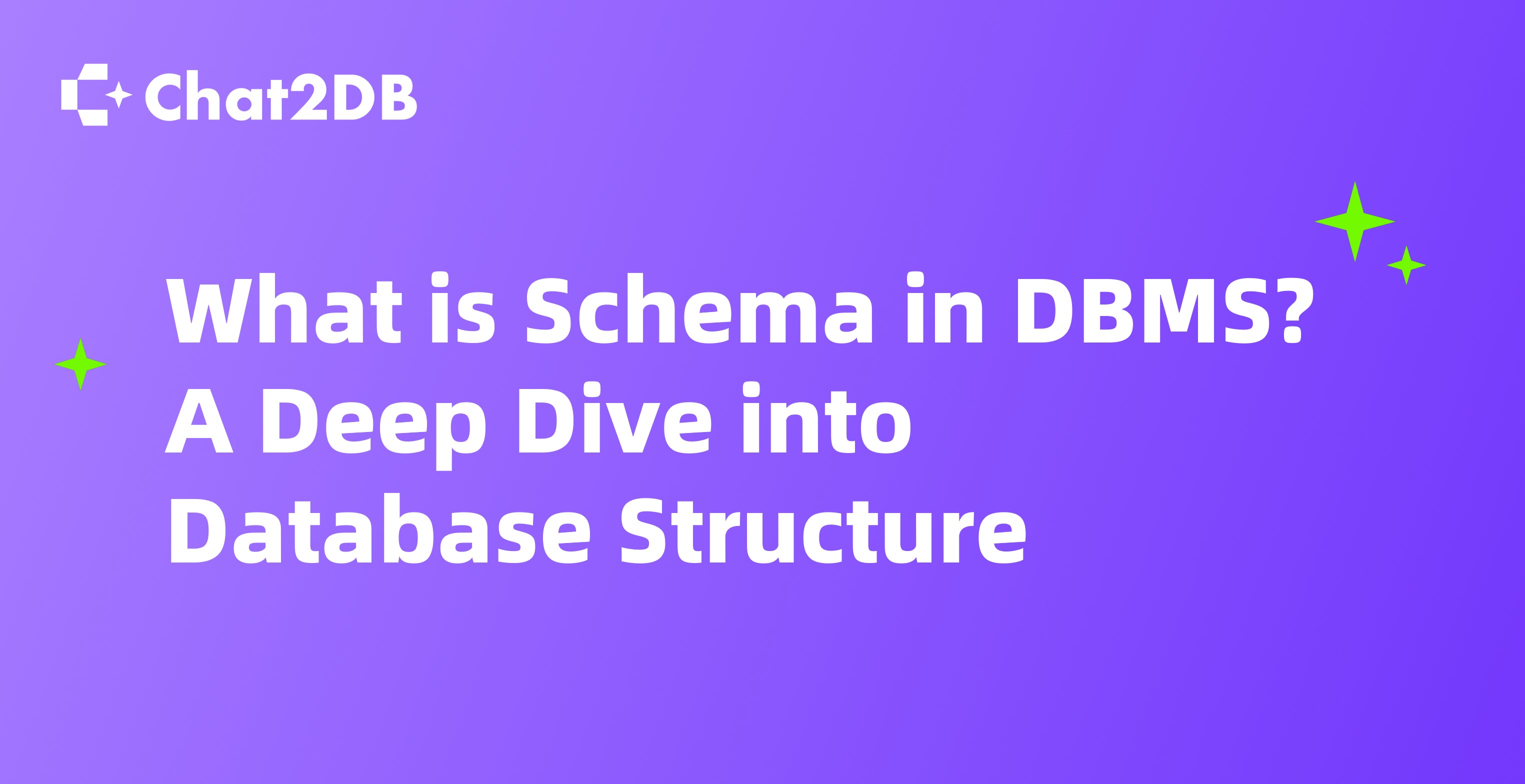
What is Schema in DBMS? A Deep Dive into Database Structure
A schema serves as a blueprint for a database, outlining how data is structured, including the relationships among various data elements.

How to Effectively Utilize dbms_output.put_line in Your PL/SQL Programs for Debugging and Logging
In the realm of Oracle PL/SQL programming, the function dbms_output.put_line serves as a fundamental tool for developers. This built-in package allows you to display output from PL/SQL blocks and triggers, making it invaluable for debugging and educational purposes.

Flyway vs. Chat2DB: Which Tool Best Fits Your Database Management Needs?
Flyway specializes in database version control and migrations, while Chat2DB offers innovative AI-driven functionalities for more intuitive database interactions.

Best Alternatives to pgAdmin: Why Choose Chat2DB?
pgAdmin has long been the go-to integrated development environment (IDE) for PostgreSQL users, offering a web-based solution for managing and interacting with PostgreSQL databases.

Reasons to Migrate from phpMyAdmin to Chat2DB
phpMyAdmin has long been a favored option for users looking to manage MySQL and MariaDB databases through a web interface. However, as data management needs evolve, many users are considering transitioning to Chat2DB, an innovative AI-driven database management tool that simplifies database interactions.

The Complete Setup Guide for SQL Developer (Oracle)
SQL Developer is a powerful integrated development environment (IDE) provided by Oracle for managing Oracle databases.

How to Implement Advanced Features in Aqua Data Studio
Aqua Data Studio is a comprehensive database management and development tool designed for database professionals to manage a wide array of databases effectively.

The Best Alternatives to Toad for MySQL in 2025
Toad for MySQL], developed by Quest Software, is a well-known database management solution that provides critical tools for MySQL users, including query optimization, database administration, and development.

5 Reasons Why Chat2DB Surpasses phpMyAdmin
Among the popular options, phpMyAdmin has long been a go-to solution for managing MySQL and MariaDB databases via a web interface. However, Chat2DB has emerged as a powerful alternative that offers unique advantages that cater to modern data management needs.

MySQL Workbench vs. Chat2DB: Comprehensive Feature Comparison
While MySQL Workbench serves as an effective integrated development environment (IDE) for MySQL databases, Chat2DB introduces innovative AI-driven features that simplify user interactions with databases.

MySQL Workbench vs. Chat2DB: Comprehensive Feature Comparison
While MySQL Workbench provides robust functionalities for managing MySQL databases, Chat2DB introduces innovative features powered by artificial intelligence (AI) that can enhance user experiences.

Essential Concepts of Entities in DBMS: A Comprehensive Guide to Understanding Entities in Database Management Systems
An entity can be defined as a real-world object or concept that can be distinctly identified. For instance, in a university database, entities could include students, courses, and professors.

How to Effectively Implement Denormalization in DBMS
Denormalization is a pivotal concept in the field of Database Management Systems (DBMS). This process intentionally introduces redundancy into a database schema to boost performance.

Understanding the Key Differences Between DBMS and RDBMS: An In-Depth Analysis
A DBMS (Database Management System) is a software system that enables the creation, manipulation, and administration of databases. It supports various data models, including hierarchical, network, and object-oriented models.

Efficiently Manage Databases with DBeaver: A Comprehensive Guide
DBeaver is an open-source database management tool renowned for its versatility and powerful capabilities, making it a top choice among developers and database administrators.

5 Reasons Why Chat2DB Surpasses HeidiSQL
While HeidiSQL has long been a trusted choice for managing MySQL, MariaDB, and PostgreSQL databases, Chat2DB has emerged as a compelling alternative that offers several advantages.

Comprehensive Feature Comparison: HeidiSQL vs. Chat2DB
While HeidiSQL has been a mainstay for many developers and database administrators, Chat2DB offers innovative features powered by AI, enabling users to interact with databases more intuitively.

The Best Alternatives to HeidiSQL for 2025
While HeidiSQL has been a well-regarded option for managing MySQL, MariaDB, and PostgreSQL databases, many users are now seeking alternatives that provide enhanced functionality, better performance, and a more intuitive user experience.

HeidiSQL Alternatives: 5 Tools to Meet Your Database Management Needs
HeidiSQL has long been a favorite among developers and database administrators for its lightweight nature and support for managing MySQL, MariaDB, and PostgreSQL databases.

The Best HeidiSQL Alternatives for 2025
While HeidiSQL has been a popular choice for managing MySQL databases and other SQL databases, it may not always address every user's needs, particularly regarding advanced features and usability.

Why Users Are Turning to Chat2DB as an Alternative to DBeaver
While DBeaver has long been a popular choice for database professionals due to its comprehensive feature set and support for numerous databases, an increasing number of users are making the switch to Chat2DB.

DBeaver Alternatives: Solutions for Complex Database Management Needs
This article will explore alternatives to DBeaver that cater to complex database management tasks, focusing on their unique features and advantages. Among these alternatives, we'll particularly highlight Chat2DB for its innovative AI-driven functionalities.
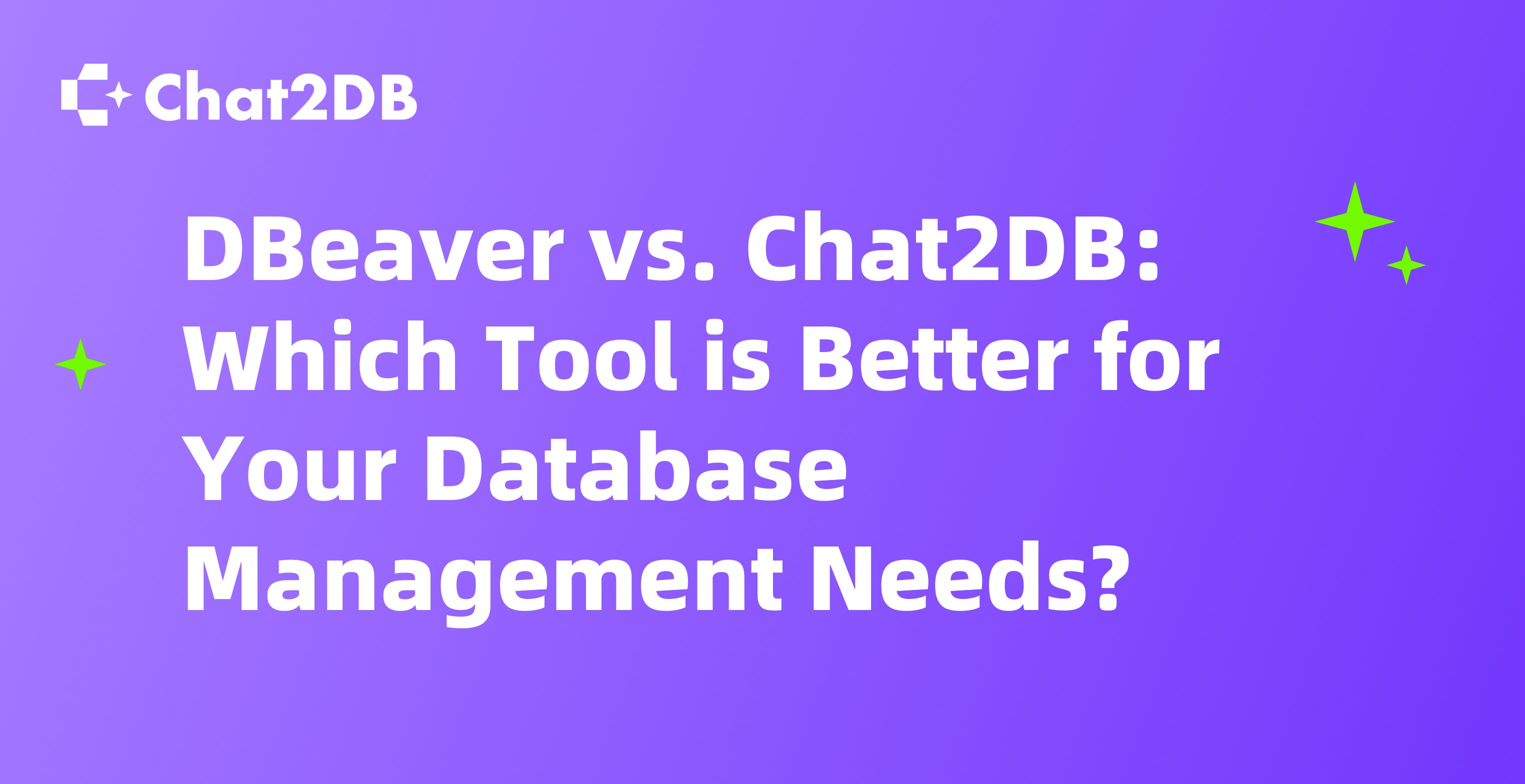
DBeaver vs. Chat2DB: Which Tool is Better for Your Database Management Needs?
In the realm of database management tools, both DBeaver and Chat2DB have carved out unique spaces to cater to developers, data analysts, and database administrators.
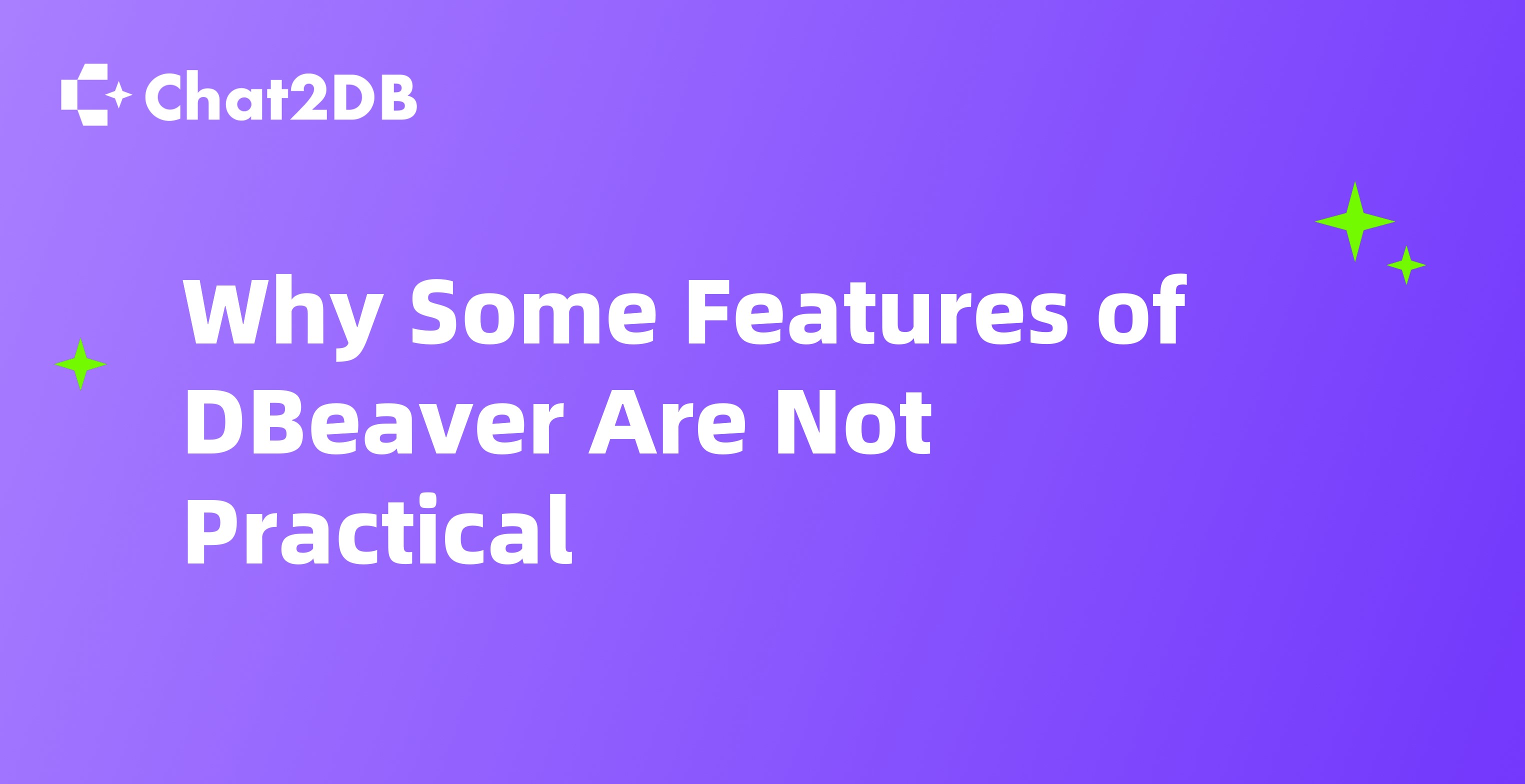
Why Some Features of DBeaver Are Not Practical
DBeaver has gained significant popularity as an open-source, multi-platform database management tool.

Does DataGrip Meet Your Needs? An In-Depth Feature Fit Analysis
DataGrip is a database management IDE that provides comprehensive features for developers to work efficiently with various databases such as MySQL, PostgreSQL, SQL Server, Oracle, and more.

In-Depth Analysis of the Five Core Features of DBeaver
DBeaver is a free, multi-platform database tool designed for developers, SQL programmers, DBAs, and analysts. It supports any database that has a JDBC driver, including popular databases such as MySQL, PostgreSQL, SQLite, Oracle, and more.

The Complete DBeaver Setup Guide: A Step-by-Step Approach
DBeaver is a free multi-platform database management tool designed for developers, SQL programmers, DBAs, and analysts.

DBeaver User Guide: 5 Tips to Enhance Efficiency
DBeaver is a popular database management tool that offers users a wide range of features to help streamline their database-related tasks.

Why Chat2DB is the Best Alternative to Navicat
Navicat has long held a position as a popular choice among database administrators and developers, renowned for its comprehensive features and user-friendly interface. However, innovative solutions like Chat2DB are rapidly emerging as formidable challengers in this space.

Navicat vs. Chat2DB: Which One Fits Your Needs Better?
Database management tools play a critical role in ensuring that data operations run smoothly and efficiently. Two popular options in this space are Navicat and Chat2DB.

How to Effectively Implement Foreign Keys in DBMS: A Comprehensive Guide
Foreign keys are a fundamental aspect of Database Management Systems (DBMS) and play a critical role in maintaining referential integrity between tables.

Top 10 Essential DBMS MCQs to Ace Your Database Exams
Database Management Systems (DBMS) are integral to today's digital infrastructure. A thorough understanding of DBMS can significantly enhance your ability to manage, retrieve, and manipulate data effectively.
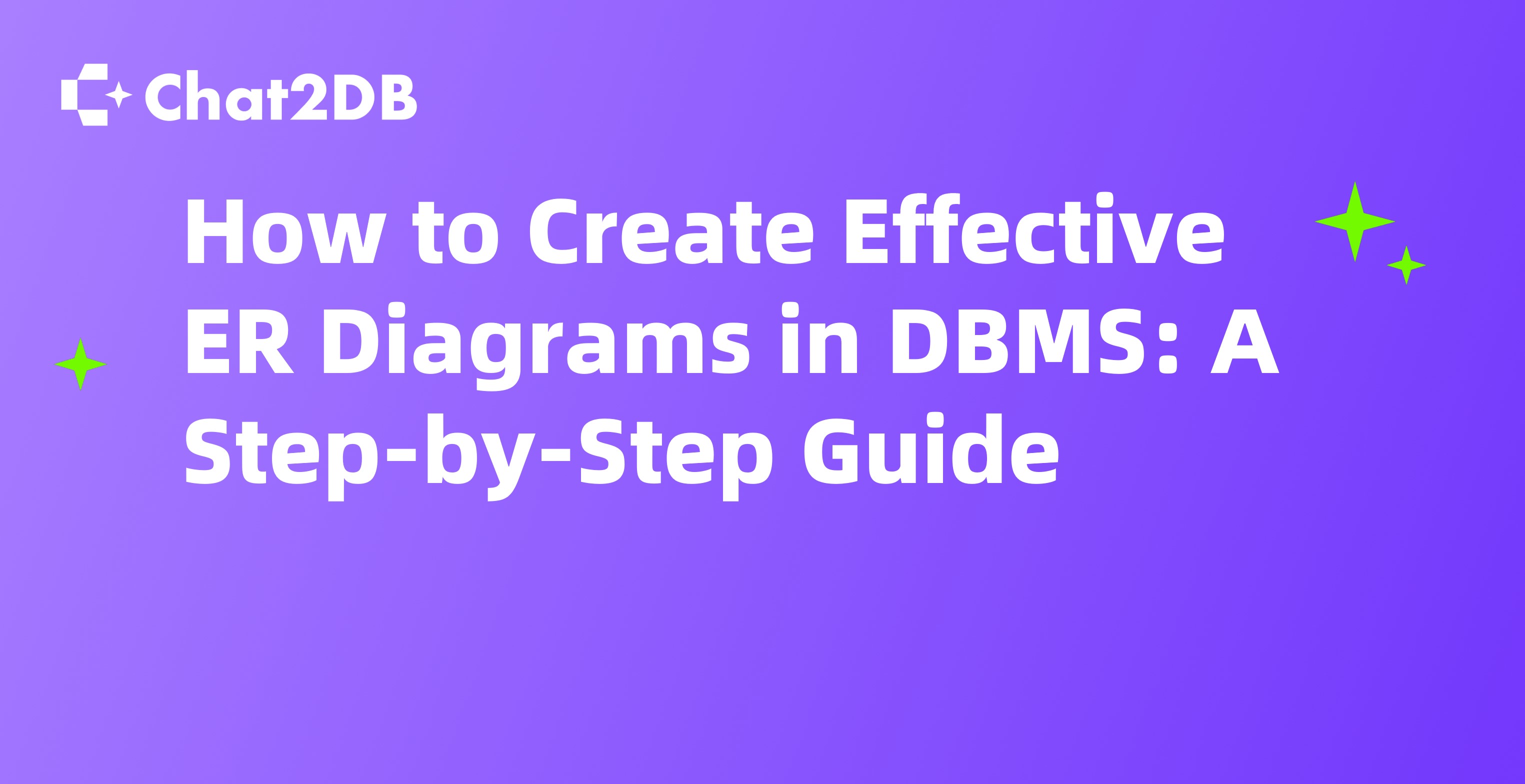
How to Create Effective ER Diagrams in DBMS: A Step-by-Step Guide
Creating effective Entity-Relationship (ER) diagrams is crucial in the realm of Database Management Systems (DBMS). These diagrams act as blueprints for database design and organization, enabling stakeholders to visualize how data interacts within a system.

How Relational Calculus Enhances Database Management: Key Concepts and Applications in DBMS
Relational calculus is a fundamental concept in database management systems (DBMS) that provides a non-procedural way to query data. It allows users to specify what data they want without detailing how to retrieve it.

Understanding Normal Forms in DBMS: A Comprehensive Guide to Efficient Database Design
In the realm of database management systems (DBMS), normal forms are essential for designing efficient and effective databases.

The Importance of Normalization in Database Management: Understanding Normal Forms in DBMS
Normalization is a fundamental principle in Database Management Systems (DBMS) that plays a crucial role in organizing data efficiently while eliminating redundancy.

How to Enable and Use DBMS Serveroutput in Oracle: A Step-by-Step Guide
DBMS Serveroutput is an essential package in Oracle's PL/SQL environment that empowers developers to display output from PL/SQL blocks.

The Role of Indexing in Database Management Systems (DBMS)
Indexing is a fundamental concept in Database Management Systems (DBMS) that plays a critical role in organizing and speeding up data retrieval processes.
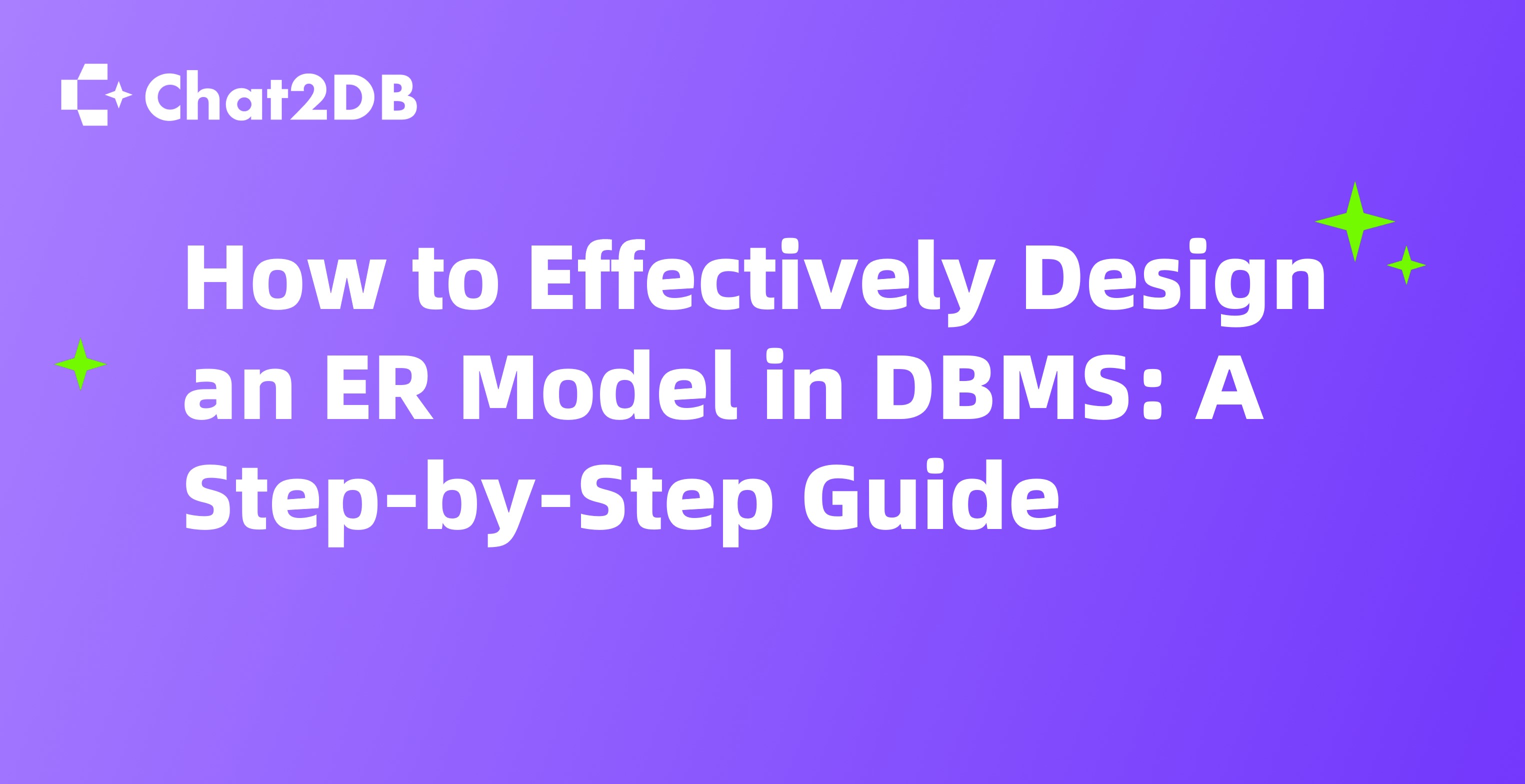
How to Effectively Design an ER Model in DBMS: A Step-by-Step Guide
An Entity-Relationship (ER) model is a foundational concept in Database Management Systems (DBMS). It acts as a blueprint for designing databases by visually representing the relationships between various data entities.

Exploring Data Models in DBMS: A Comprehensive Overview
Data models are essential components of Database Management Systems (DBMS), serving as the foundational blueprint for structuring and organizing data within a database.

Efficient Strategies for Managing Concurrency Control in DBMS: A Comprehensive Guide
Concurrency control is a critical aspect of Database Management Systems (DBMS) that safeguards the integrity and consistency of data when multiple transactions are processed simultaneously.

Understanding DBMS Architecture: A Comprehensive Guide to Database Management Systems
Database Management Systems (DBMS) serve as the backbone of data management in today's digital landscape. A thorough understanding of DBMS architecture is essential for developers, database administrators, and anyone interested in data management.

How Relational Algebra Simplifies Query Optimization in DBMS: An In-Depth Analysis
Relational algebra is the foundation of query operations in Database Management Systems (DBMS). It provides a robust set of operations to manipulate and query relational databases effectively.

AI Analytics for Year-End Financial Summaries: A Comprehensive Guide
The evolution of AI analytics has dramatically transformed business decision-making processes. Integrating artificial intelligence into analytics tools has revolutionized how organizations handle and interpret data.

Optimizing Financial Close Processes with AI Analytics
In the financial sector, AI analytics has emerged as a transformative force, enhancing both efficiency and accuracy in financial processes.

How AI Analytics is Transforming Financial Reporting: Key Insights and Strategies
AI analytics refers to the use of machine learning, natural language processing, and predictive analytics to analyze data and generate insights, specifically in the context of financial reporting.

How AI Analytics Can Transform Your Annual Performance Review Process: A Step-by-Step Guide
AI Analytics involves integrating artificial intelligence to analyze performance data and derive meaningful insights.

How Functional Dependency Shapes Database Design: A Comprehensive Analysis
Functional dependency is a fundamental concept in database management systems (DBMS) that is essential for maintaining data integrity and consistency.

What is the Full Form of DBMS: Exploring Database Management Systems
Database Management System (DBMS) is a fundamental term in the realm of data management and application development.

How to Implement Normalization in DBMS for Efficient Database Design
Database normalization is a fundamental concept in the realm of database management systems (DBMS). It is a systematic approach aimed at organizing data to minimize redundancy and enhance data integrity.

Datagrip vs Chat2DB: An In-Depth Analysis of Database Management Tools
This article will provide a detailed comparison of Datagrip and Chat2DB two tools, highlighting their features, performance, user experience, and more.

Maximize Database Management Efficiency with Chat2DB vs Navicat
Navicat is a powerful database management tool that supports various databases, including MySQL, MariaDB, PostgreSQL, SQLite, and MongoDB.

How to Effectively Convert Natural Language to SQL Using NL2SQL Tools
NL2SQL (Natural Language to SQL) is a transformative technology that enables users to convert natural language inputs into structured SQL queries.

How to Transform Natural Language into SQL Queries: A Step-by-Step Guide
Natural Language Processing (NLP) is a branch of artificial intelligence that enables computers to understand and interact with human language. One of the most impactful applications of NLP is converting natural language into structured data queries, particularly SQL (Structured Query Language).

Top Free SQL Tools for Efficient Database Management
In today's data-driven world, SQL tools play a pivotal role in efficient database management. These tools are essential for querying, designing, and managing databases, enabling developers to work seamlessly with data.

How to Effectively Utilize PostgreSQL Joins: A Comprehensive Guide
PostgreSQL is a powerful open-source relational database management system that excels in data storage, retrieval, and manipulation.

Comprehensive Guide to PostgreSQL Joins: Types, Use Cases, and Best Practices
In PostgreSQL, a join is a powerful feature that allows you to combine data from two or more tables based on related columns.

The Essential Role of SQL Constraints in Effective Database Management
SQL constraints are fundamental elements in database management that ensure data integrity and consistency. They play a crucial role in maintaining the accuracy of data across various database systems.

DROP TABLE vs TRUNCATE TABLE: A Comprehensive Guide to SQL Commands
DROP TABLE permanently removes an entire table from the database, including all its data, structure, and associated metadata.

CREATE SEQUENCE: A Comprehensive Guide to SQL Sequences
SQL sequences are essential database objects designed to generate a sequential series of unique numbers. They are particularly useful for creating unique identifiers, often serving as primary keys in database tables.

Streamlining Data Querying with Natural Language: Unlocking the Power of Chat2Query with Chat2DB
While Chat2Query simplifies the querying process, **Chat2DB** takes it a step further by integrating natural language capabilities with powerful database management features.

How to Efficiently Implement an Inverted Index for Faster Search Results
An inverted index is a powerful data structure that maps content, such as words or phrases, to their locations within a database, document, or collection of documents.

How to Effectively Implement Database Sharding for Scalable Applications
Database sharding is a critical technique employed to boost the performance and scalability of large databases. By segmenting a large database into smaller, manageable pieces called shards, applications can efficiently handle increasing volumes of data and user traffic.

What is Hash Index: A Comprehensive Guide to Efficient Data Retrieval
A hash index is a specialized data structure that enhances the speed of data retrieval in database management systems.

How to Effectively Implement a Hash Index for Optimized Database Performance
A hash index is a specialized data structure that maps keys to their corresponding values via a hash function.

Rows vs. Columns: Understanding Their Importance in Data Management
Rows represent horizontal data arrangements, while columns depict vertical alignments. This distinction is essential across various programming environments and database management systems.

How to Master SQL Explain for Optimizing Query Performance
SQL Explain provides insights into how a SQL database engine executes a query. It allows developers and database administrators to view the execution plan that the database will follow when processing a specific SQL statement.

How to use SQL Explain: A Step-by-Step Guide for Optimizing Queries
SQL Explain is an essential tool for data analysts and database administrators looking to optimize their database queries effectively.

Primary Key vs Foreign Key: Understanding Their Roles in Database Management
A primary key is an essential component of database systems, serving as a unique identifier for each record in a table.

Sharding vs Partitioning: A Comprehensive Guide to Key Database Optimization Techniques
Sharding and partitioning are two essential techniques in database optimization, each serving distinct purposes yet often confused due to their similarities.

How to Optimize PSQL Queries for Faster Database Performance
PostgreSQL, commonly referred to as PSQL, is a robust relational database management system that is widely used for its powerful capabilities.
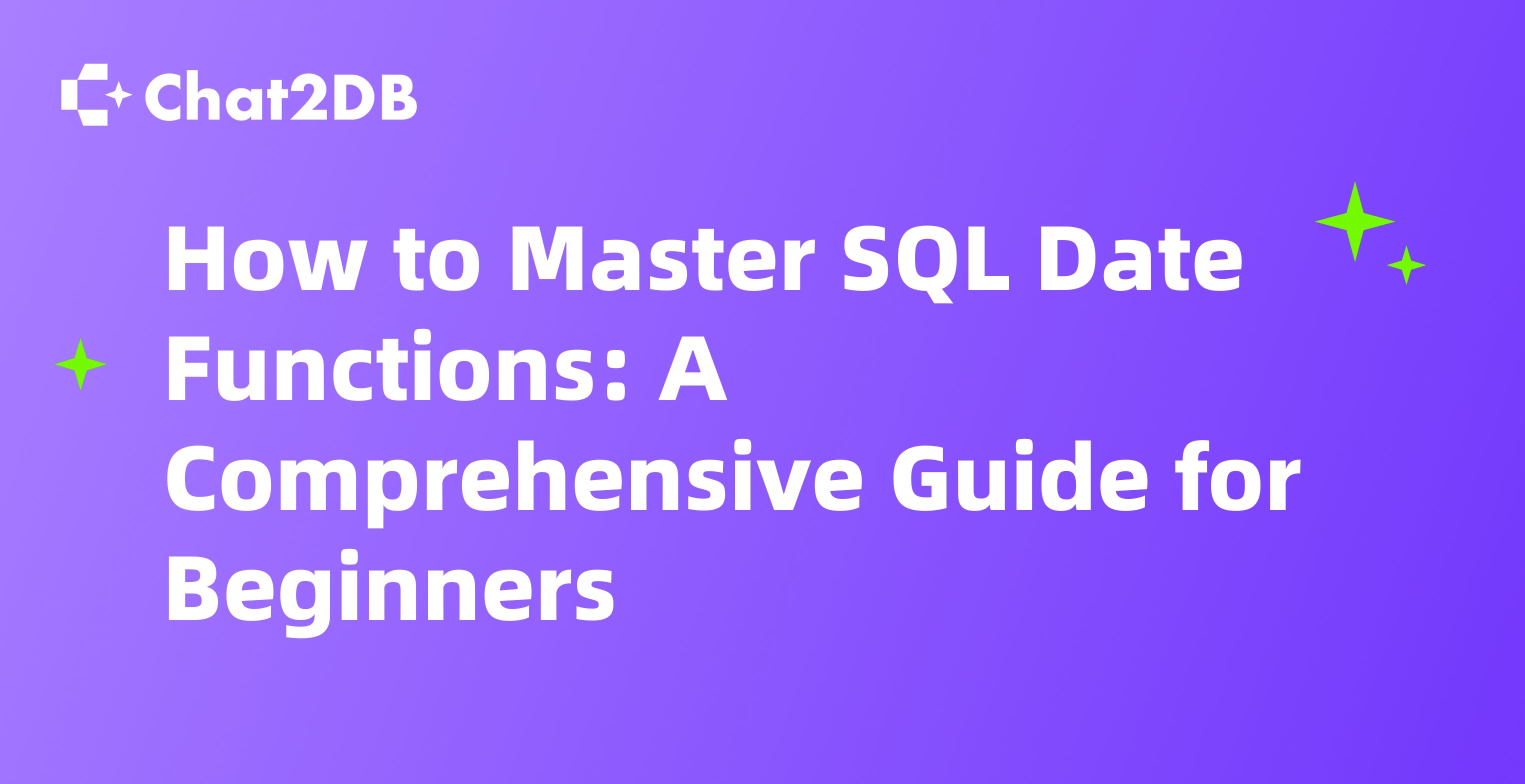
How to Master SQL Date Functions: A Comprehensive Guide for Beginners
SQL Date Functions are built-in functions that enable users to perform operations on date and time values.
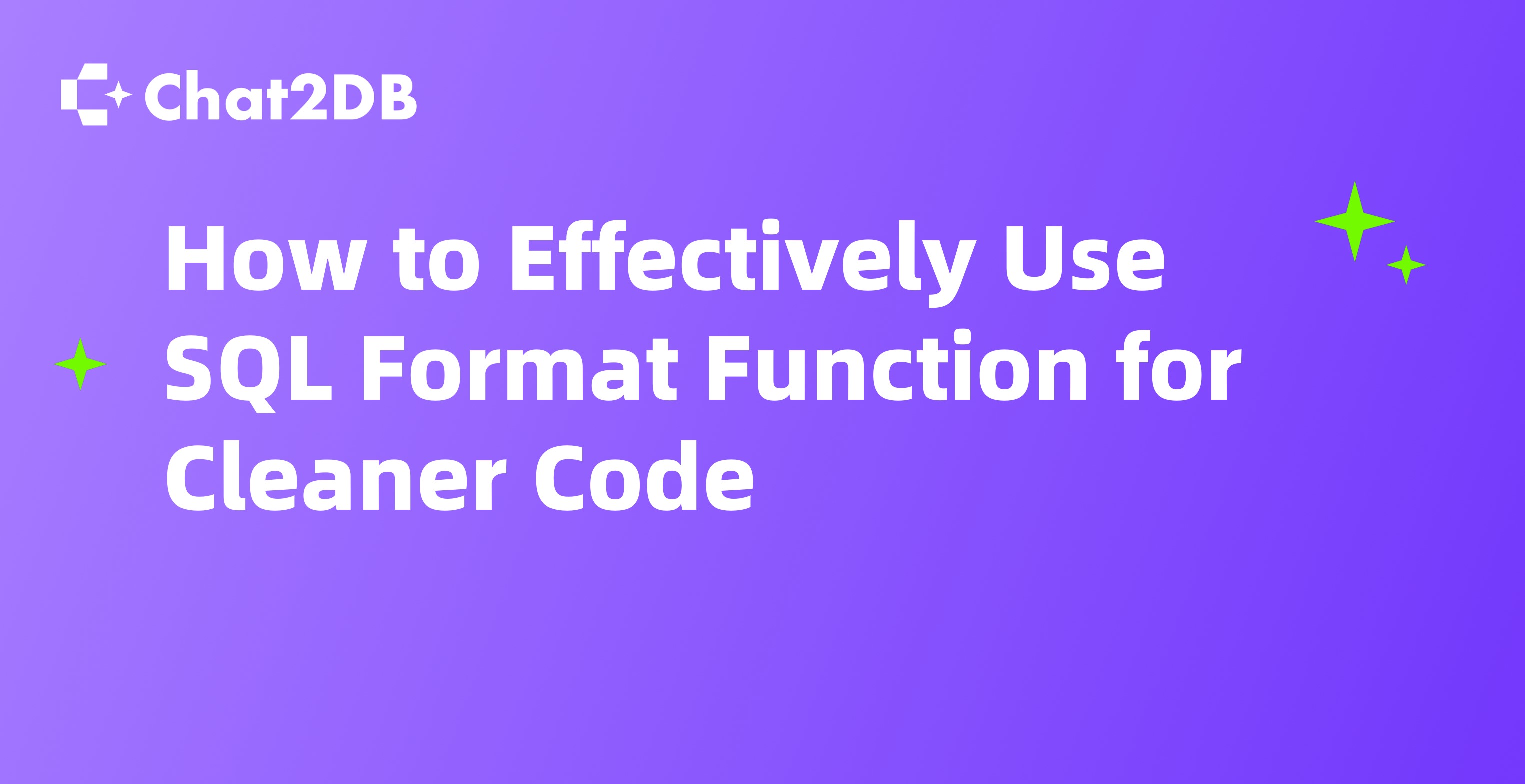
How to Effectively Use SQL Format Function for Cleaner Code
The SQL Format Function is a pivotal tool in SQL programming that empowers users to precisely control data presentation.
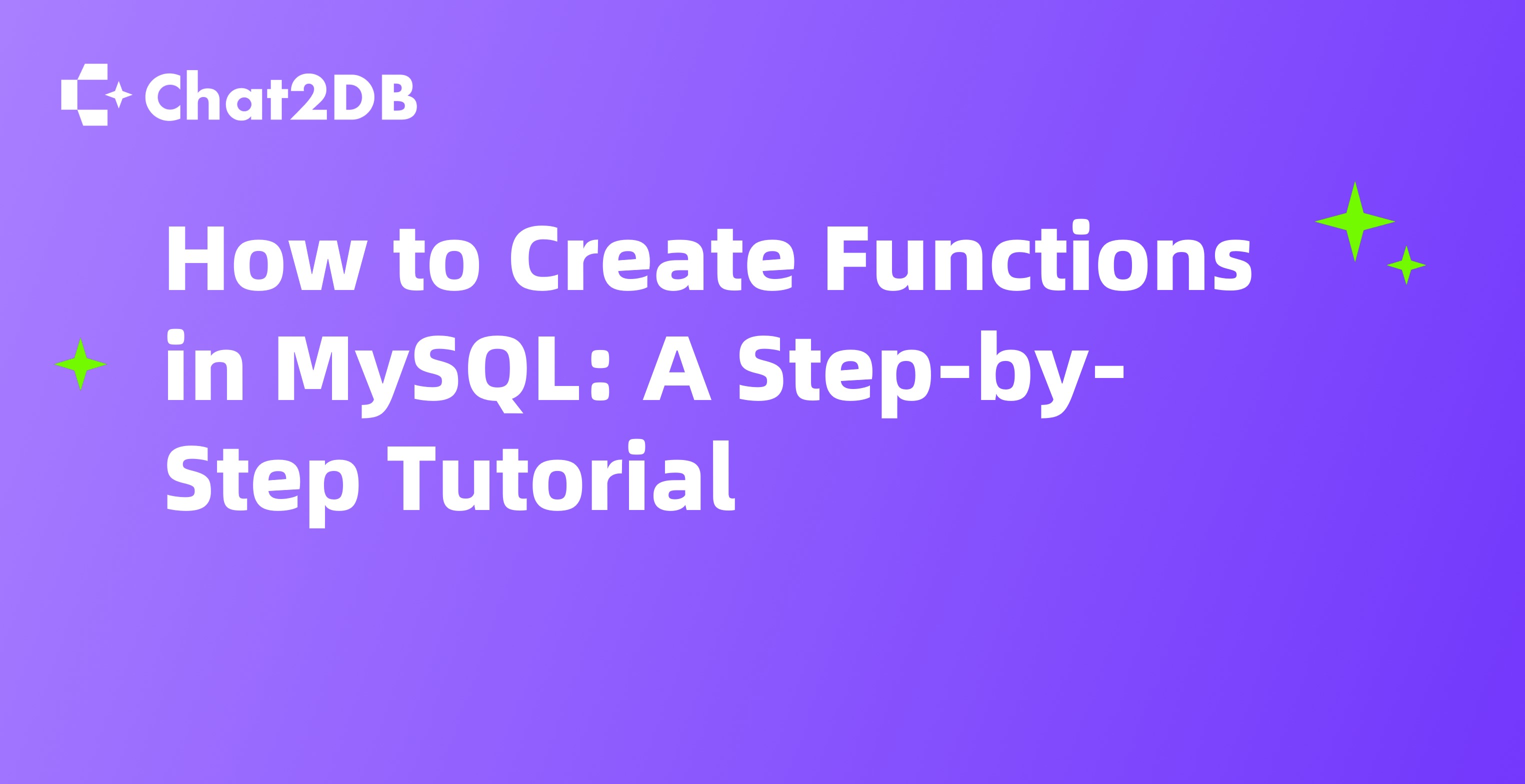
How to Create Functions in MySQL: A Step-by-Step Tutorial
Unlike stored procedures, which execute batch operations, MySQL functions return a single value and can be integrated directly into SQL statements, making them essential for data analysis.

The Power of Window Functions in SQL: Unlocking Advanced Data Analysis Techniques
Window functions in SQL provide a robust mechanism for analyzing data, enabling deeper insights and simplifying complex queries.

How to Master SQL Functions: Step-by-Step Techniques for Beginners
SQL functions are predefined operations that enable data analysts to perform specific tasks on data stored in a database.

How to Effectively Use the SQL Replace Function for Data Manipulation
The SQL Replace function is a powerful tool for data transformation within a database.

How to Effectively Use OFFSET in SQL for Data Pagination
Data pagination is a crucial concept in database management, particularly when handling large datasets. Key terms like 'OFFSET' and 'LIMIT' in SQL are integral to pagination

Mastering SQL Joins: A Comprehensive Guide to Data Relationships
SQL joins are a fundamental concept in data analysis, enabling analysts to combine data from multiple tables seamlessly.

Tableau vs Power BI: Which Data Tool is Right for You?
Tableau, which began its journey in 2003, focuses on creating interactive and shareable dashboards. Over the years, it has expanded its features and capabilities. In comparison, Power BI, launched by Microsoft in 2015, seamlessly integrates with other Microsoft products, positioning it as a strong competitor.
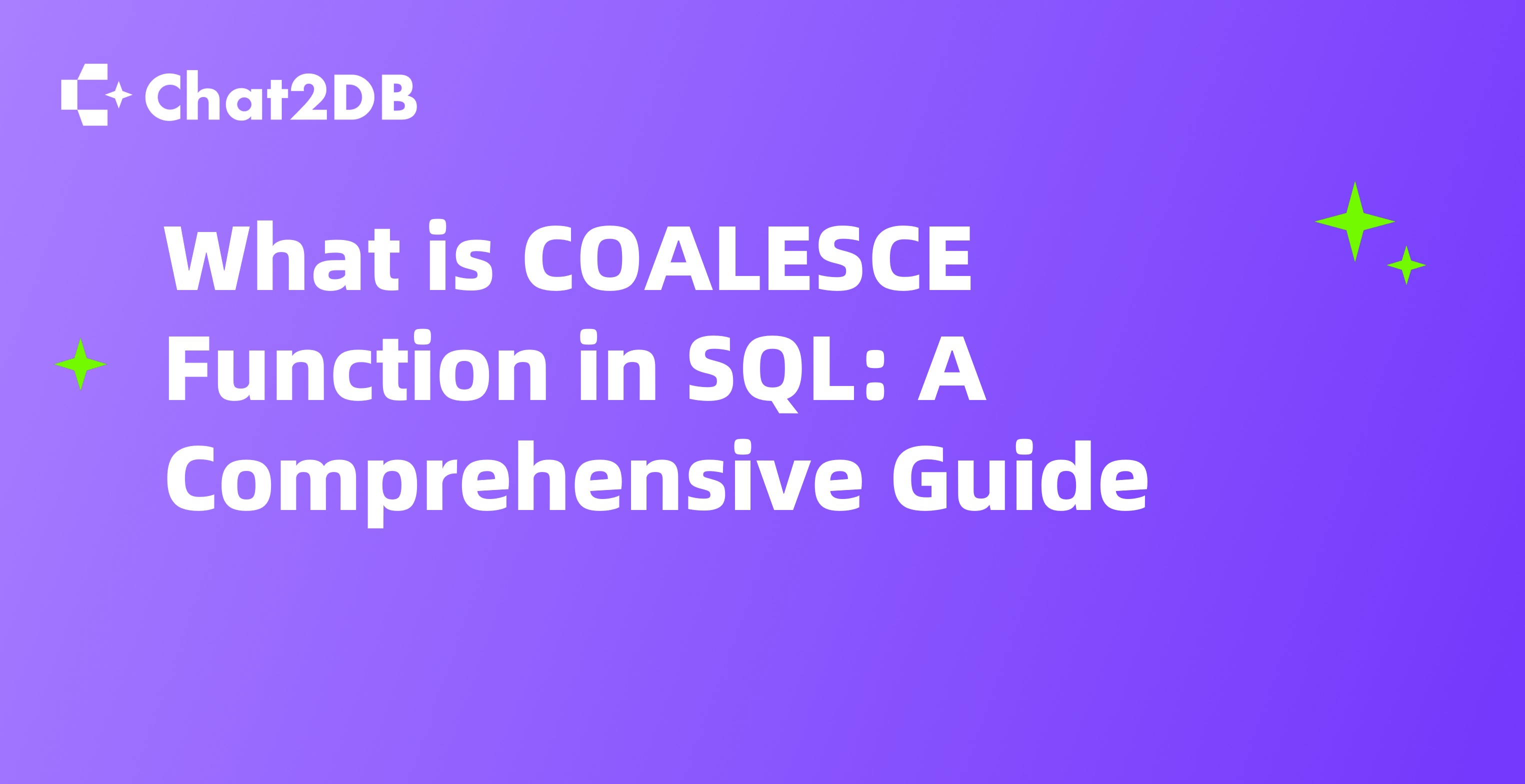
What is COALESCE Function in SQL: A Comprehensive Guide
The COALESCE function in SQL is a fundamental feature that simplifies the handling of NULL values in database queries.

Essential SQL Cheat Sheet: Key Commands and Tips for Beginners
Structured Query Language (SQL) is the standard language for managing and manipulating relational databases.
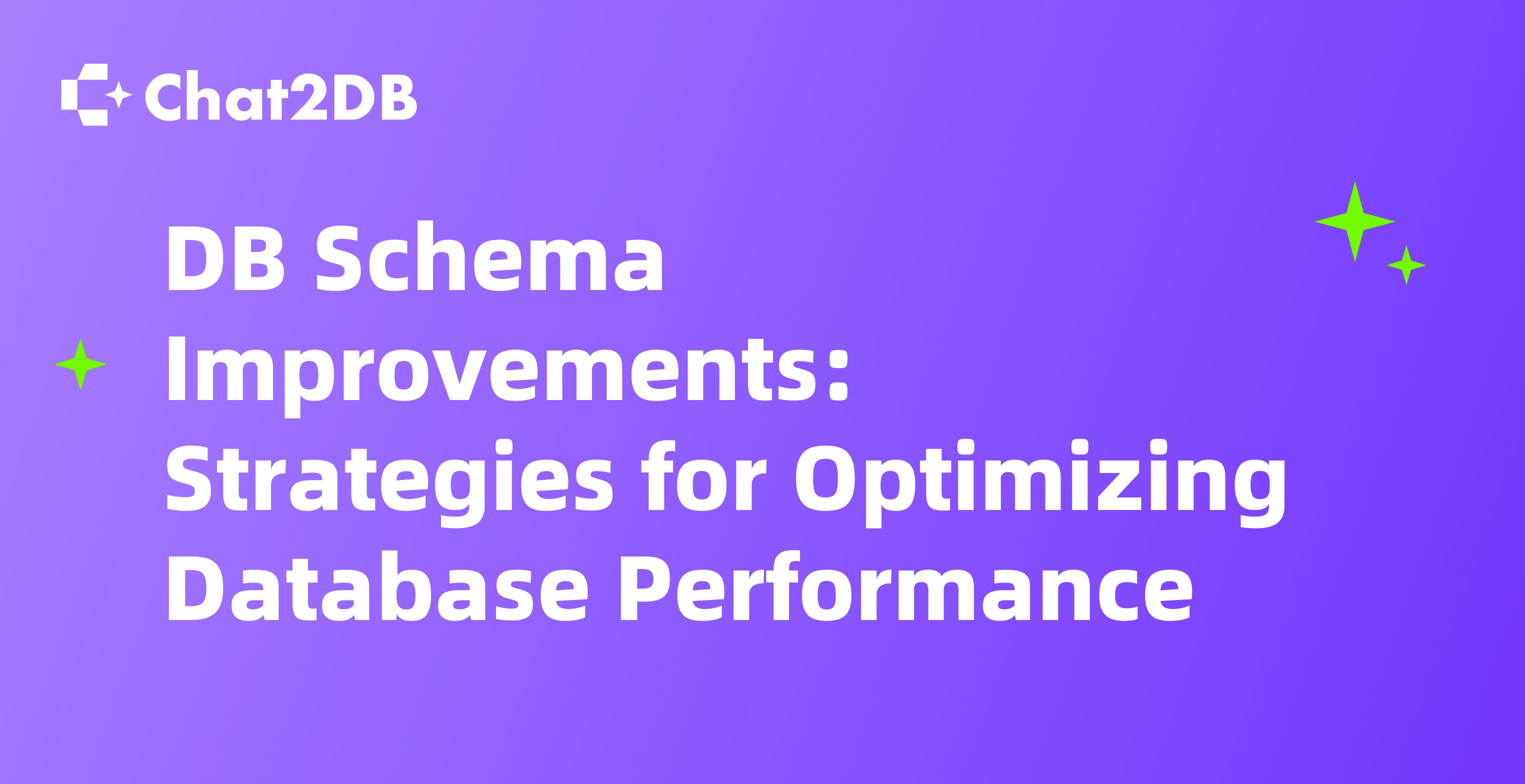
DB Schema Improvements: Strategies for Optimizing Database Performance
A well-designed schema reduces redundant data storage, improves data retrieval times, and ensures that queries can be executed more efficiently.

What You Need to Know About MySQL CLI Commands
The MySQL Command Line Interface (CLI) is an essential tool for effective database management, offering developers, database administrators, and data analysts the ability to interact with MySQL databases directly through text-based commands.

How to Effectively Leverage Text2SQL Tools for Database Management Tasks
Text2SQL tools are designed to convert natural language queries into SQL commands, simplifying database management tasks for developers.
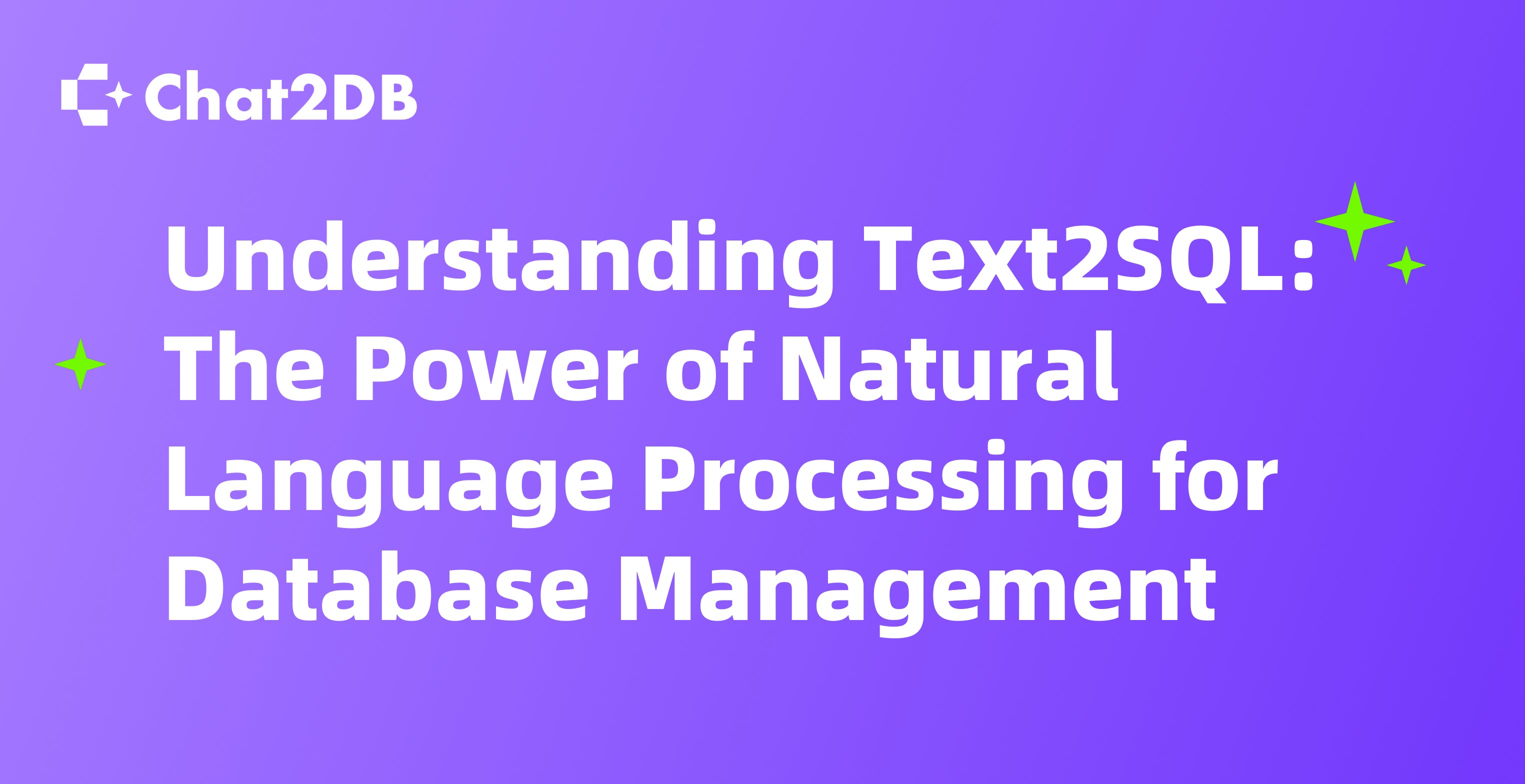
Understanding Text2SQL: The Power of Natural Language Processing for Database Management
Natural Language Processing (NLP) is a pivotal technology in the realm of Text2SQL, enabling computers to understand, interpret, and generate human language meaningfully.

Top Free SQL GUI Tools for Efficient Database Management
SQL Graphical User Interfaces (GUIs) provide a visual method for interacting with databases, simplifying database management tasks.

Top DBeaver Alternatives for Database Management: An In-Depth Review
Developers seek alternatives to DBeaver for several reasons. Performance issues with large datasets can hinder productivity, while feature limitations may arise when advanced security, compliance, or data visualization tools are needed.

Top Open Source SQL Clients: A Comprehensive Review and Comparison
Open source SQL clients are software applications that enable developers and database administrators to interact with databases using SQL (Structured Query Language)
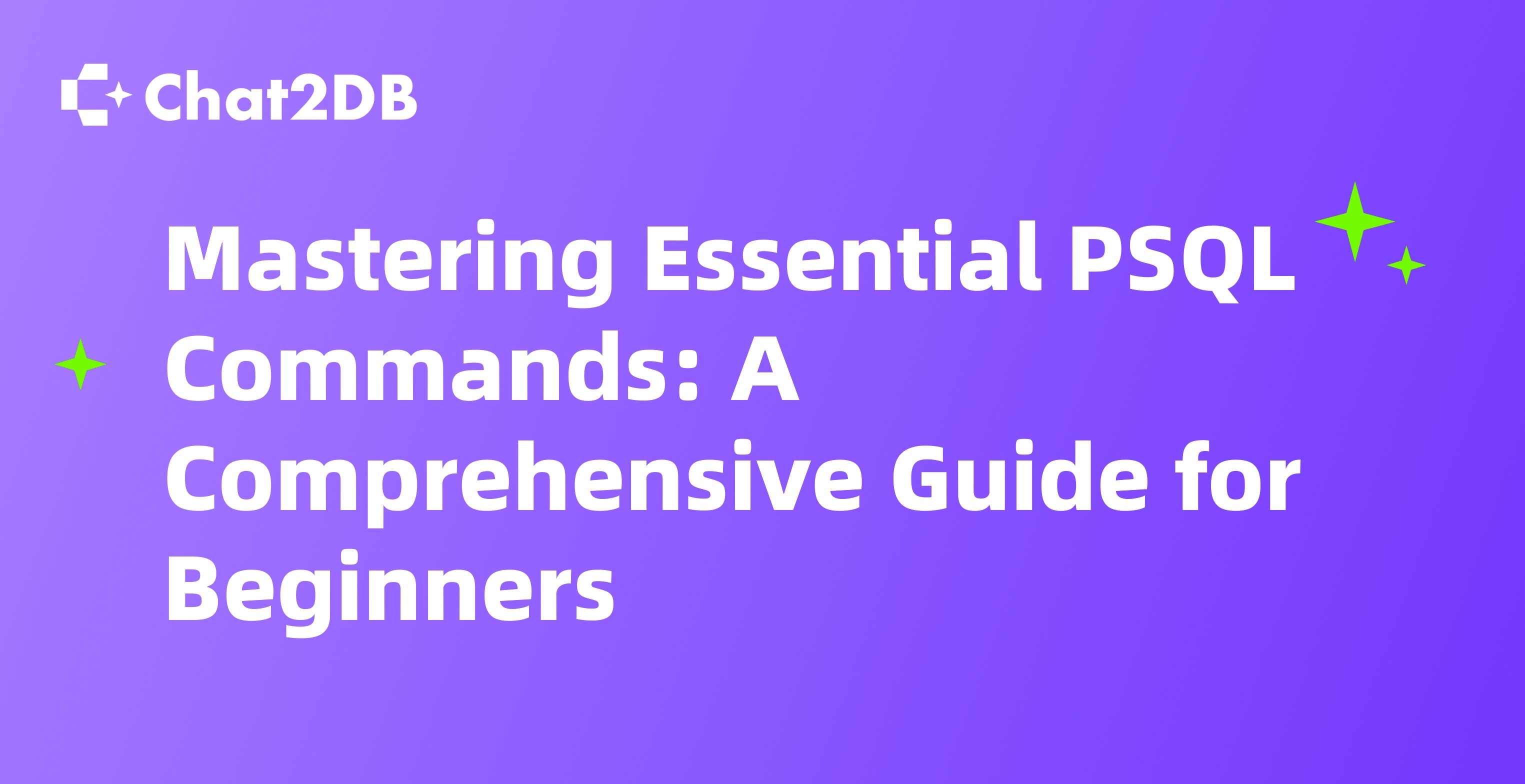
Mastering Essential PSQL Commands: A Comprehensive Guide for Beginners
PostgreSQL, commonly referred to as PSQL in its command-line interface, is a robust open-source relational database management system.

Top Presto GUI Clients: A Comprehensive Review and Comparison
This foundational knowledge will guide the evaluation of different Presto GUI clients and illustrate how they can streamline the data analysis process.

Top CockroachDB GUI Clients: A Comprehensive List and Guide
Exploring advanced usage of date_bin function in PostgreSQL for efficient date-based data analysis and optimization.

Top MariaDB GUI Clients: A Comprehensive Comparison and Usage Guide
When selecting a MariaDB GUI client, developers should consider several essential features that enhance productivity and streamline database management
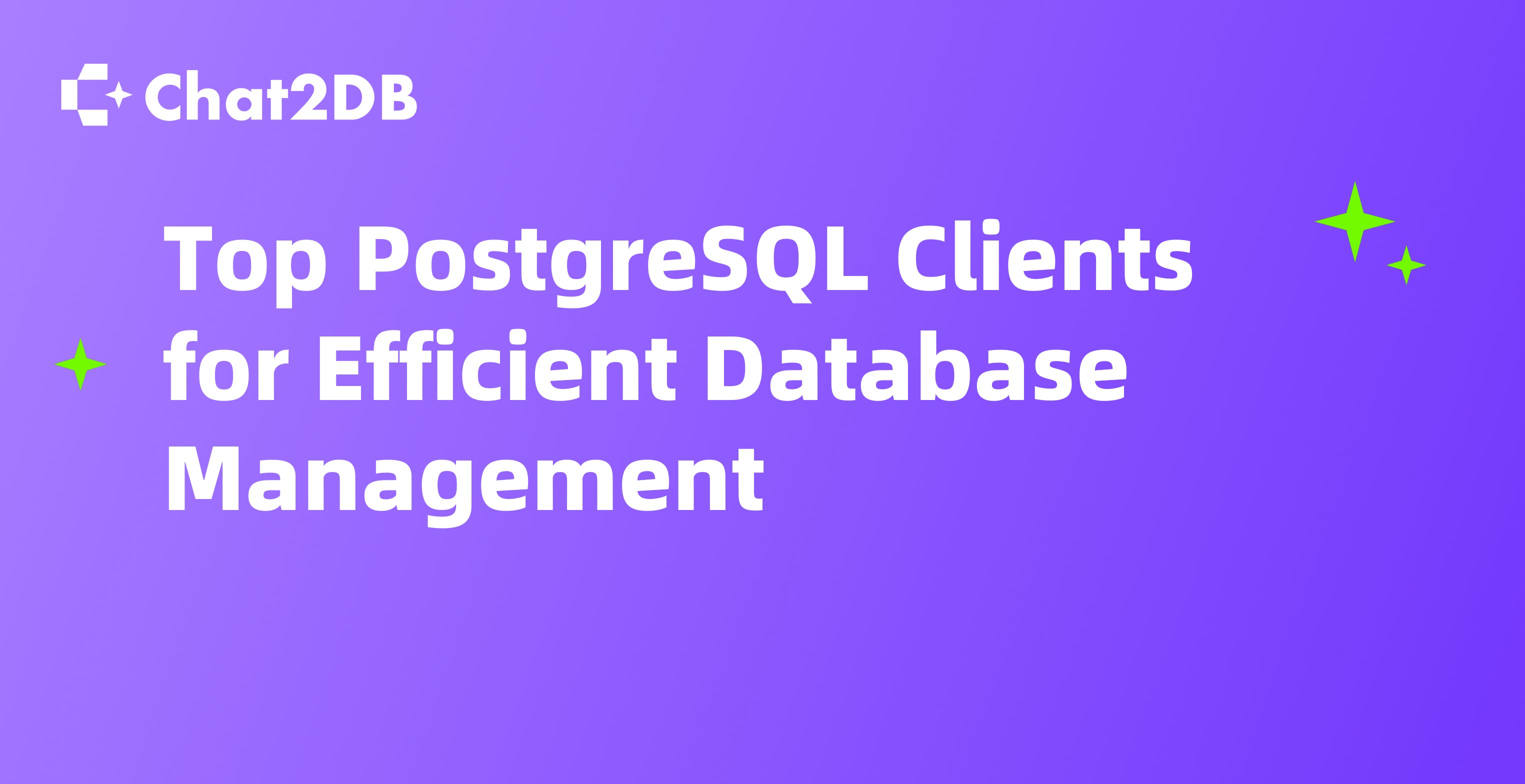
Top PostgreSQL Clients for Efficient Database Management
To effectively interact with PostgreSQL, users rely on PostgreSQL clients, which are essential tools for managing databases.

Top MongoDB Database Tools for Efficient Data Management
MongoDB is a popular NoSQL database celebrated for its flexibility, scalability, and performance.

Chat2DB: The best Clickhouse Client for Windows, Linux, and MacOS
Chat2DB, an intelligent and user-friendly database management tool that not only acts as a Clickhouse client but also integrates advanced AI and Text2SQL capabilities.

Best MySQL GUI Tools for Windows, Linux, and MacOS
A MySQL GUI (Graphical User Interface) simplifies database management by providing a user-friendly way to interact with MySQL databases.

Top 5 Oracle Database GUI Tools - for Windows or MacOS
Here is a comprehensive comparison of the leading Oracle Database GUI tools available for developers.
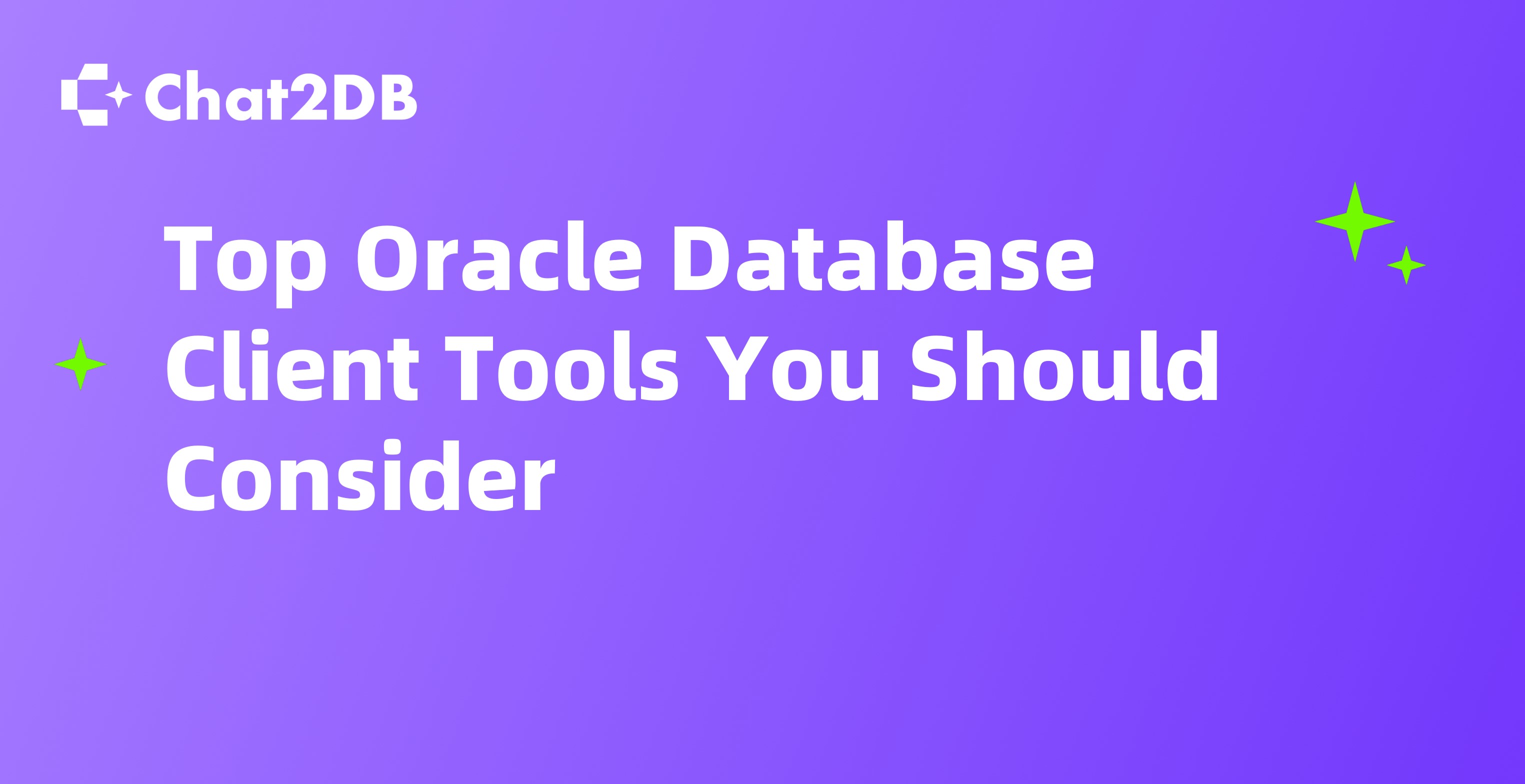
Top Oracle Database Client Tools You Should Consider
Having the right client tools is essential for developers and database administrators (DBAs) working with Oracle databases. These tools facilitate database management, improve productivity, and enhance the overall efficiency of operations.

Top Oracle GUI Tools: A Comprehensive Comparison for 2024
Oracle GUI tools are essential for developers who want to interact with and manage Oracle databases effectively.

How to Optimize Database Management for Enhanced Performance
Database management refers to the systematic organization, storage, and retrieval of data in a database.

Top Tips for Choosing the Best Database Management Software for Your Business
A Database Management System (DBMS) is software that enables users to create, manage, and manipulate databases.

How to Efficiently Execute Oracle SQL Insert Statements
Oracle SQL Insert statements are fundamental commands used to add new records to a table within a database.
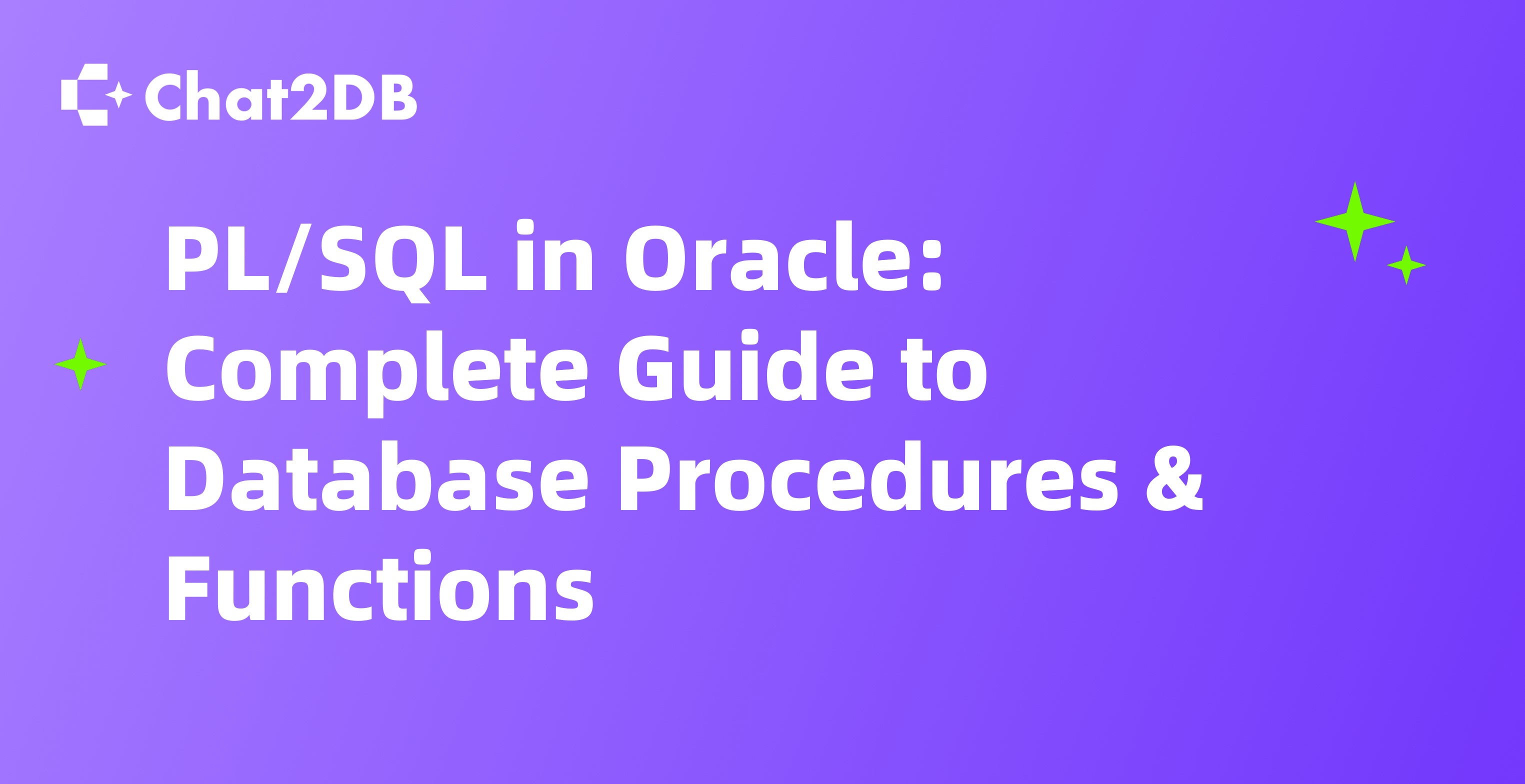
PL/SQL in Oracle: Complete Guide to Database Procedures & Functions
Oracle PL/SQL is a robust procedural language extension for SQL, specifically designed to manage databases effectively.

What is SQL *Plus for Oracle: A Comprehensive Guide
SQL*Plus is a command-line interface specifically designed for interacting with Oracle databases.

PL/SQL vs Oracle SQL: Understanding Their Distinct Roles and Functionalities
PL/SQL and Oracle SQL are two essential components of the Oracle Database ecosystem, each serving distinct purposes..

Get Started with Oracle Linux: A Comprehensive Guide for Beginners
Oracle Linux is a robust open-source operating system optimized for enterprise applications.

Best Practices and Tips for MySQL Dump
MySQL dump is a technique used for backing up MySQL databases. It creates a text file containing SQL statements that can recreate the database.

How to Perform a MySQL Insert: Step-by-Step Guide for Beginners
The `INSERT` statement is a fundamental command for adding data to MySQL tables.

MySQL Date Format: A Comprehensive Guide
MySQL supports various date and time data types which are essential for managing temporal data effectively. The primary types include `DATE`, `TIME`, `DATETIME`, `TIMESTAMP`, and `YEAR`.
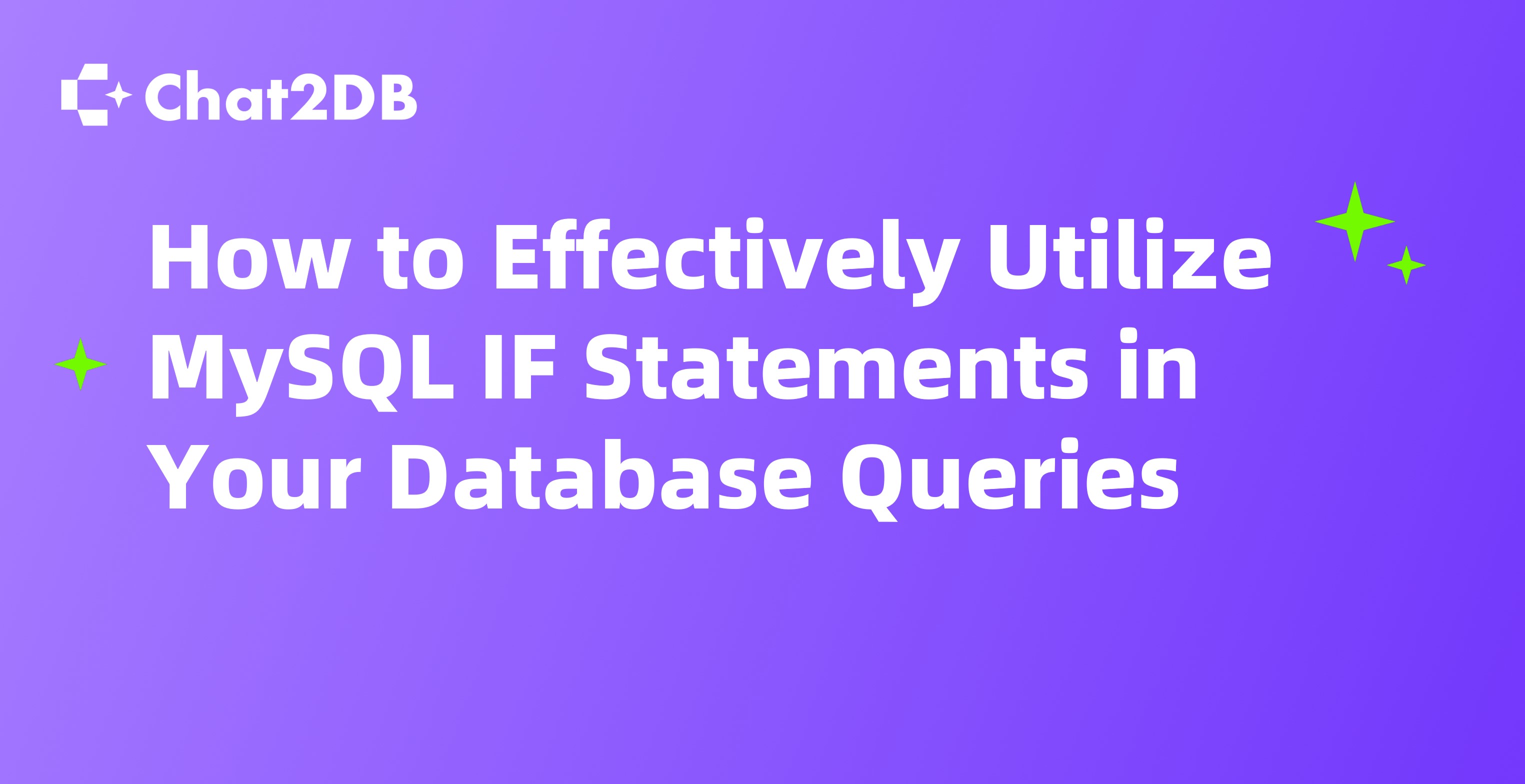
How to Effectively Utilize MySQL IF Statements in Your Database Queries
MySQL IF statements are fundamental for incorporating conditional logic into SQL queries.
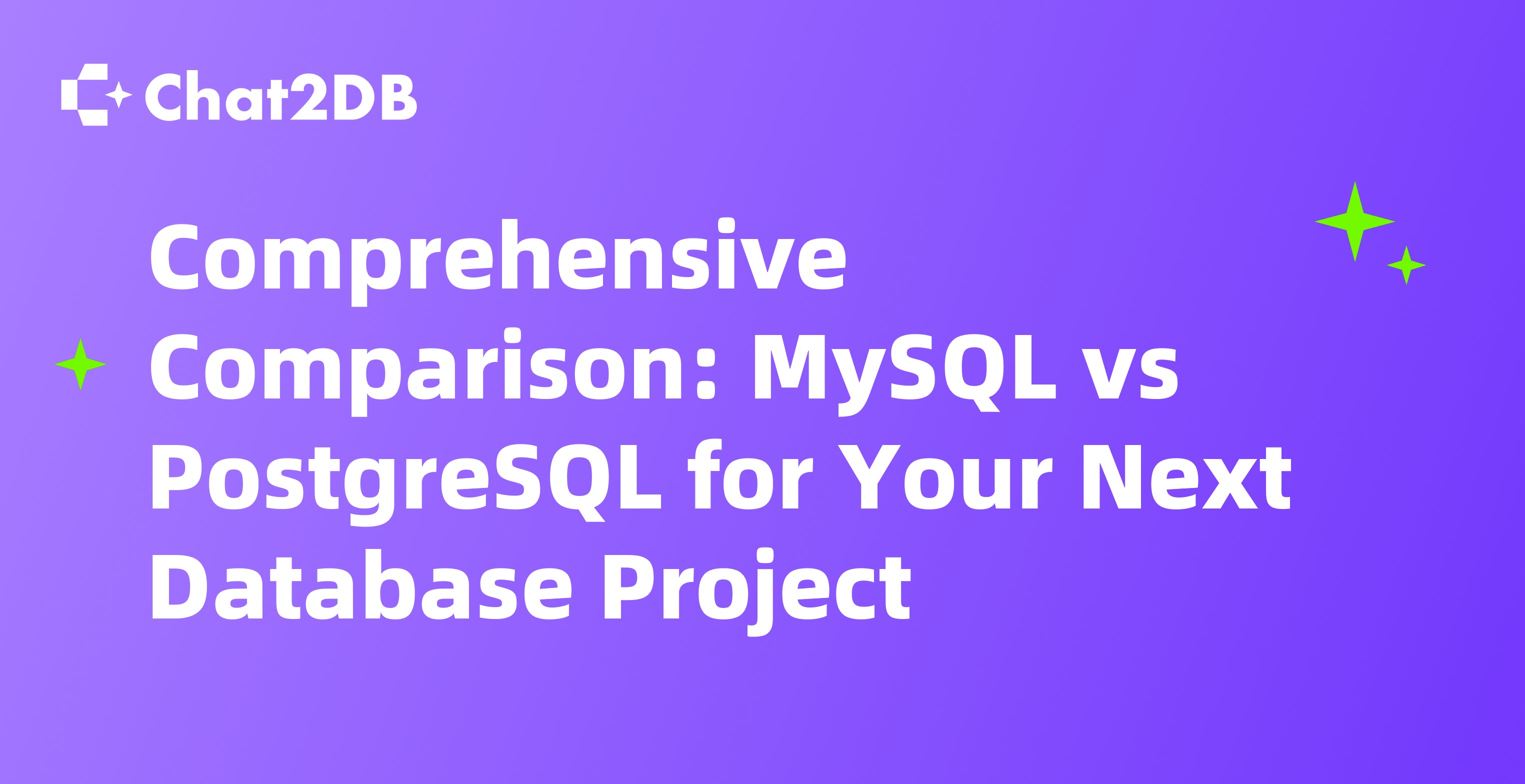
Comprehensive Comparison: MySQL vs PostgreSQL for Your Next Database Project
Understanding the features and capabilities of MySQL and PostgreSQL will help you make an informed decision for your projects.

How to Efficiently Perform MySQL Update Operations: A Step-by-Step Guide
MySQL is a powerful relational database management system and offers various functions to manipulate data. One of the most crucial operations is the UPDATE operation. This operation allows users to modify existing records in a table.

How to Effectively Implement MySQL Constraints for Data Integrity
MySQL constraints are rules applied to columns in a database table to maintain the integrity of the data.

How to Optimize Detail Tables in MySQL for Enhanced Performance
Detail tables, also known as child tables, play a crucial role in MySQL databases. They store detailed information that is linked to a master table through a foreign key.

How to Use MySQL Contains for Efficient Text Searching
The concept of MySQL Contains is often misunderstood because MySQL does not provide a direct CONTAINS function. Instead, MySQL enables text searches using the LIKE operator and full-text search features.

How to Effectively Use MySQL String Contains for Data Filtering
MySQL string functions are essential tools for developers who work with text-based data in databases.

How to Effectively Use MySQL EXPLAIN for Optimizing Your Queries
MySQL EXPLAIN is a powerful tool that helps you analyze how MySQL executes queries.

Tips for Using ChatGPT to Enhance Your SQL Query Writing Skills
This article explores how ChatGPT can enhance your SQL query writing skills, making the process more efficient and error-free.

How to Use ChatGPT to Generate SQL Queries: A Complete Guide
ChatGPT, powered by OpenAI, is an AI model that can understand natural language and generate SQL queries based on user input.

Unlocking AI SQL Tools: Enhance Data Analysis with Intelligent Solutions
In today’s digital age, AI SQL tools are becoming increasingly important for enhancing data analysis among developers.

Text to SQL: Transforming Natural Language Queries into SQL Statements
As natural language processing (NLP) technologies advance, developers need to master the skill of converting text queries into SQL statements.

SQL Joins Explained: A Comprehensive Guide to Understanding and Applying Joins
A 'join' in SQL is a powerful tool that allows you to combine rows from two or more tables based on a related column.

Constraints in SQL: An In-depth Tutorial with Examples
In this article, we will explore the various types of SQL constraints, how to implement them, and best practices for using them effectively.

Effortless Guide to Converting SQLite to MySQL: Step-by-Step Process
This guide offers a comprehensive step-by-step process for converting databases, highlighting the importance of choosing the right database management system for your application needs.

MySQL vs NoSQL: Understanding the Differences
MySQL is a relational database management system (RDBMS) based on structured query language (SQL). On the other hand, NoSQL represents a category of non-relational or distributed database systems.

PostgreSQL vs NoSQL: A Comprehensive Guide for Modern Database Management
PostgreSQL, often referred to as Postgres, is a powerful open-source relational database system that has gained widespread recognition for its advanced features and reliability.

Understanding MongoDB: A Comprehensive Guide to NoSQL Databases
NoSQL stands for “not only SQL,” referring to a new generation of databases designed to provide flexible data models and scalable architectures.
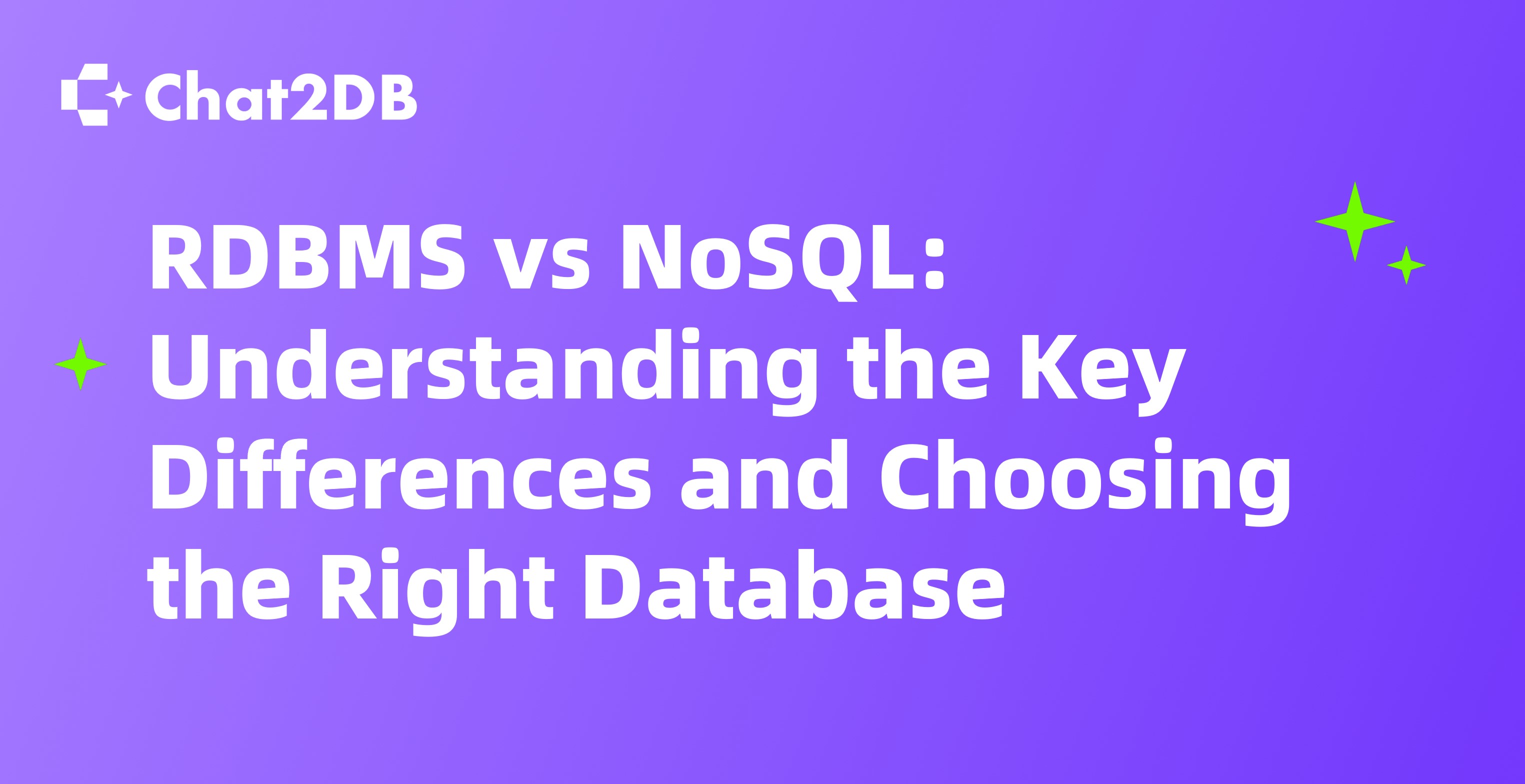
RDBMS vs NoSQL: Understanding the Key Differences and Choosing the Right Database
RDBMS is built around a table-based schema, where data is organized into rows and columns.

Difference Between SQL and NoSQL Databases
Two primary types of databases exist: SQL (Structured Query Language) and NoSQL (Not Only SQL). Both have evolved to meet the demands of modern application development, each catering to different needs and scenarios.

SQL vs NoSQL: Understanding the Core Differences
SQL (Structured Query Language) and NoSQL (Not Only SQL) databases are two primary categories that developers encounter frequently.

Working with JSON in SQL Server: Unlocking Data Management Potential
Exploring advanced usage of date_bin function in PostgreSQL for efficient date-based data analysis and optimization.

SQL Native Client: A Comprehensive Guide for Developers
SQL Native Client is an essential data access technology for developers working with SQL Server.

Mastering Squirrel SQL Client: A Comprehensive Guide
Squirrel SQL Client is a powerful and flexible SQL client tool that supports any JDBC-compliant database.

Top PostgreSQL Clients of 2024: Your Guide to the Best Tools for Developers
In this guide, we will delve into the best PostgreSQL clients of 2024, providing insights into tools that enhance productivity and streamline database management.
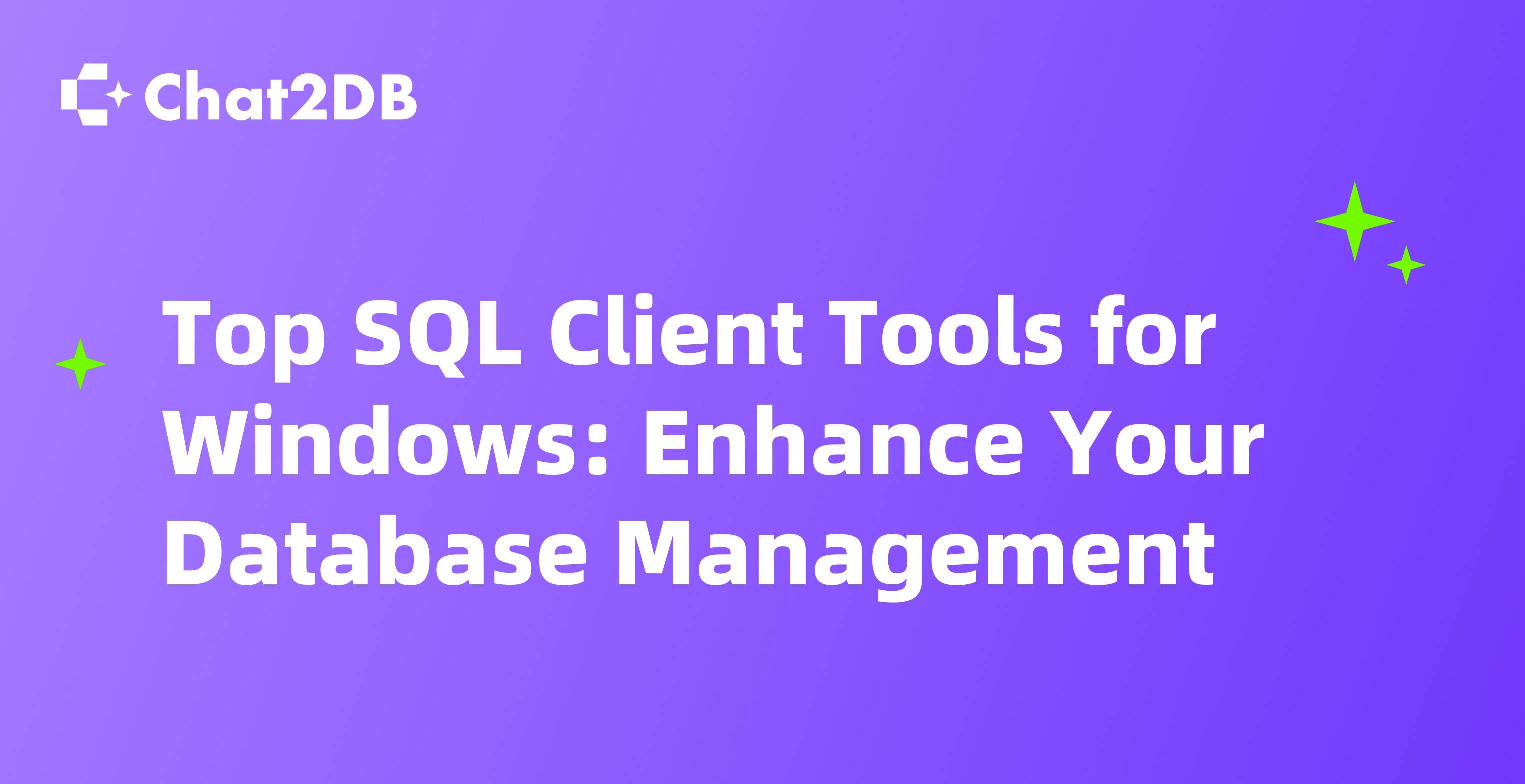
Top SQL Client Tools for Windows: Enhance Your Database Management
SQL client tools are indispensable for developers aiming to enhance their database management capabilities.

Understanding DML, DDL, and DCL in MySQL
Data Manipulation Language (DML) is a subset of SQL used primarily for retrieving, inserting, updating, and deleting data within a database.

Mastering PSQL Commands: Empower Your PostgreSQL Database Management
PSQL is the interactive terminal for PostgreSQL, offering a command-line interface for database management.
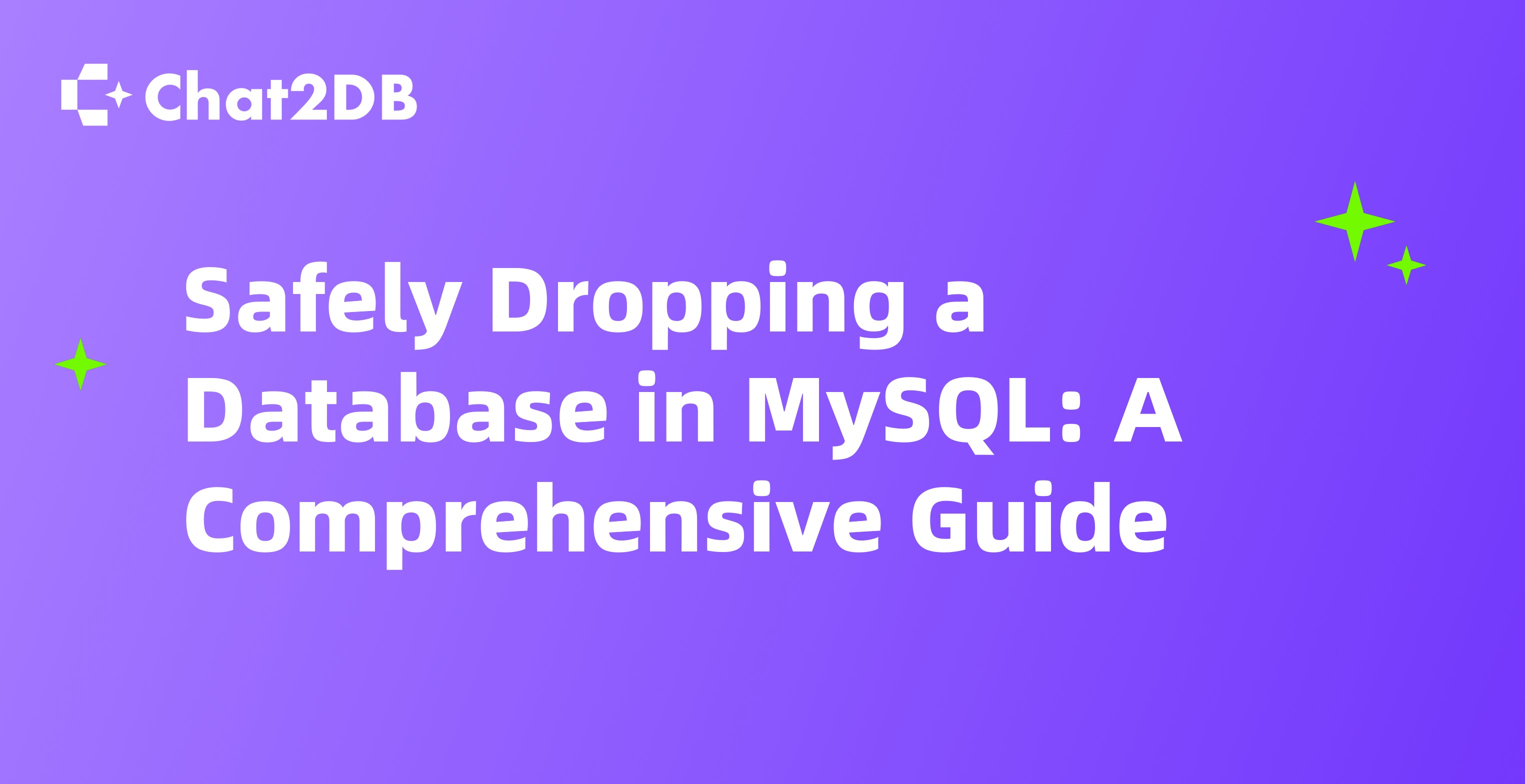
Safely Dropping a Database in MySQL: A Comprehensive Guide
Dropping a database involves removing it entirely from the MySQL server, which means that all data within it will be permanently deleted.

Understanding Schema Diagrams: A Comprehensive Guide
Schema diagrams are visual representations of database structures, serving a fundamental purpose in database management.

Mastering SQL Constraints: Ensuring Database Integrity and Reliability
SQL constraints are rules applied to columns in a database table to ensure the accuracy and reliability of data.

How to Safely Delete a MySQL Database
Deleting a database is not a trivial task, and it comes with potential risks, especially in production environments.

How to Create a MySQL Database: A Comprehensive Guide
This article provides a comprehensive step-by-step guide on how to create a MySQL database, covering every detail from installation to specific operations.

Chat with Database: Mastering Effective Communication
We will focus on best practices for using Chat2DB, empowering developers to enhance efficiency and accuracy in their daily work.
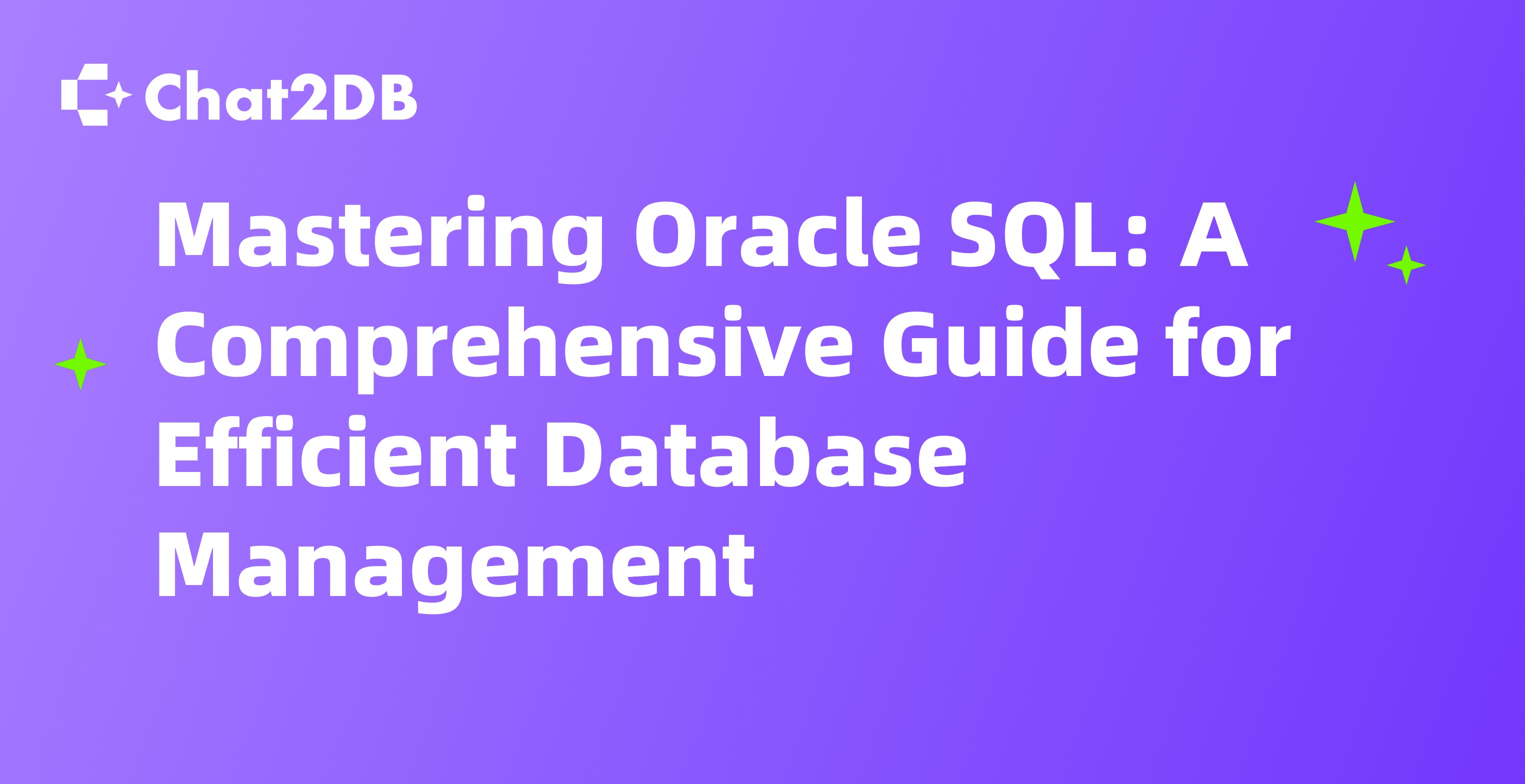
Mastering Oracle SQL: A Comprehensive Guide for Efficient Database Management
Oracle SQL is a powerful language used for managing and manipulating relational databases.

AI SQL Tools: Transforming Data Management with Chat2DB
This article explores the functionalities, advantages, and how to optimize developers' workflows using Chat2DB, an innovative AI SQL tool.

Integrating AI and SQL for Enhanced Data Management with Chat2DB
This article explores how integrating AI and SQL can enhance the efficiency and intelligence of database operations, particularly through the use of the Chat2DB tool.

Implementing Security Best Practices with PostgreSQL Client Applications
Explore the best practices for enhancing security in PostgreSQL client applications, covering authentication, encryption, and data protection.

The Ultimate Guide to the Best PostgreSQL Clients: Top Picks for Every Developer
Selecting the appropriate client is crucial as it can lead to improved development efficiency, better data visualization, and enhanced team collaboration.

How to Use Advanced Features of Oracle SQL for Data Analysis
Exploring the advanced features of Oracle SQL for effective data analysis and insights.

Best Practices for Optimizing Oracle SQL Performance
Explore the best practices and strategies for optimizing Oracle SQL performance to enhance database efficiency and query execution speed.

What is and when to use SQL Server Native Client: A Comprehensive Guide for Developers
SQL Server Native Client (SNAC) is a crucial component in the world of database applications.
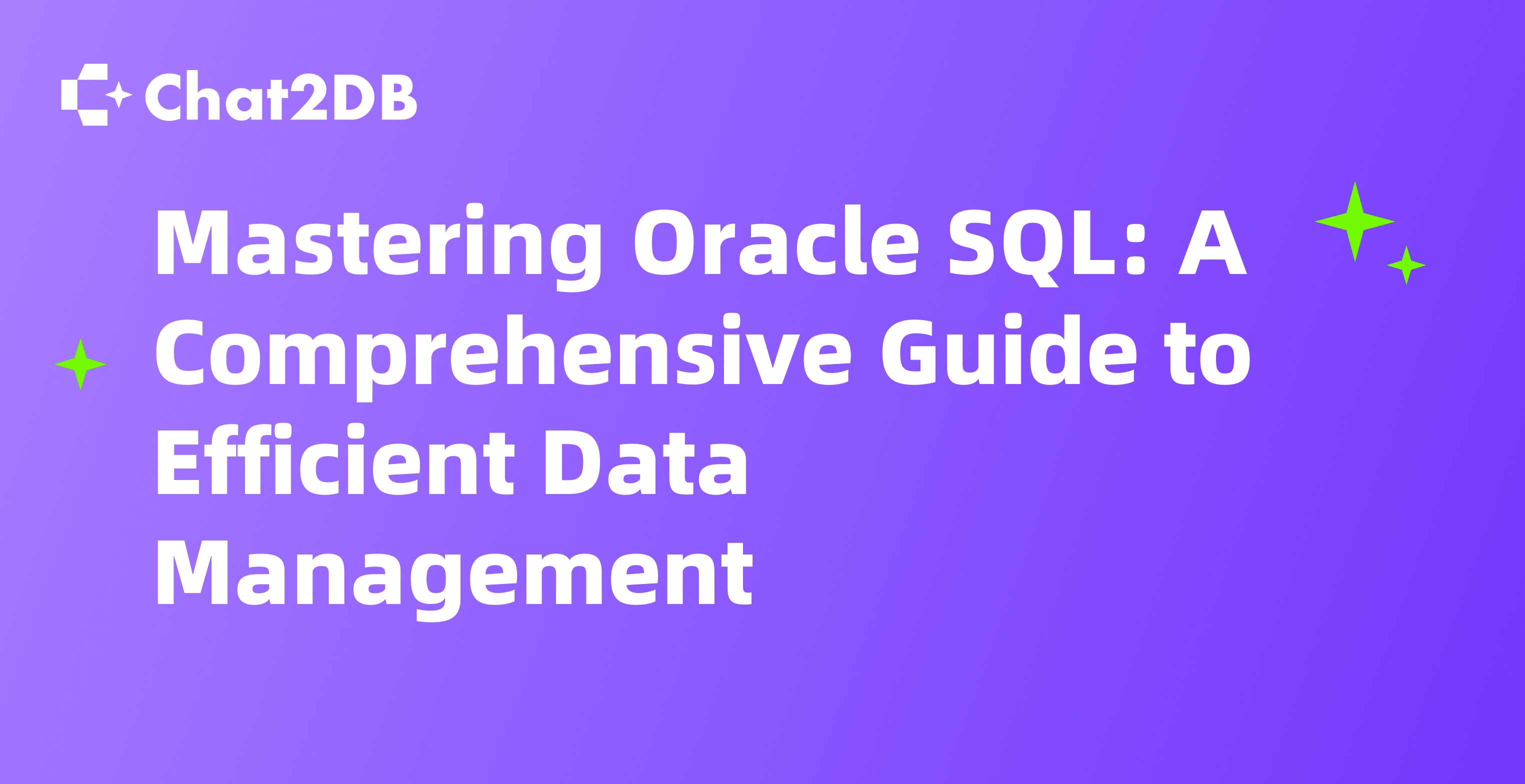
Deep Pagination: Best Practices and Techniques for Effective Implementation
Deep pagination is a technique used to handle large amounts of data, allowing users to load data on demand.

Understanding Oracle Fusion: Key Features and Benefits for Modern Enterprises
Oracle Fusion is gaining significant attention as a comprehensive Enterprise Resource Planning (ERP) solution.

Understanding PostgreSQL Foreign Keys: A Comprehensive Guide for Beginners
A foreign key is a constraint used in relational databases that establishes a link between two tables.

Understanding PostgreSQL Joins: A Comprehensive Guide to Types and Use Cases
JOIN is a method used to combine two or more tables based on a related column. It allows you to retrieve data that is spread across multiple tables, making it a powerful tool for data analysis and reporting.

Understanding PostgreSQL JSON: A Comprehensive Guide to Storing and Querying JSON Data
PostgreSQL supports two JSON data types: `JSON` and `JSONB`. Understanding the differences and advantages of each is crucial for developers.

MongoDB vs PostgreSQL: An In-Depth Comparison for Developers
This article will delve into the fundamental aspects of both databases, assisting developers in making informed choices, particularly when utilizing Chat2DB for effective database management and development.

PostgreSQL Mastery: A Comprehensive Tutorial
This tutorial aims to provide a deep understanding of PostgreSQL fundamentals, empowering developers to effectively manage and manipulate data.

Optimizing MySQL Insert Operations: How Chat2DB Enhances Efficiency and Security
The core syntax for inserting data into a MySQL database revolves around the `INSERT INTO` statement

Mastering MySQL Date Formats: An Essential Guide
MySQL date formats are fundamental for effective data management and development. Proper date formatting guarantees data consistency, accuracy, and rapid retrieval.

Effective Strategies for Updating MySQL Databases
The `UPDATE` statement is the primary means of modifying existing records in a table based on specified criteria.

Mastering MySQL Port Configuration and Management with Chat2DB
MySQL ports are vital for establishing connections between the database server and client applications, with the default port being 3306.

MySQL Mastery: Harnessing the Power of Relational Databases
MySQL is a cornerstone in the world of open-source relational database management systems. Its reliability and efficiency make it indispensable for developers and organizations that need to manage data effectively.

Mastering SQL Server Join and Subquery Performance Tuning
A comprehensive guide to optimizing SQL Server join and subquery performance for enhanced database efficiency.

Advanced SQL Server Join and Subquery Optimization Strategies
Exploring advanced optimization strategies for SQL Server joins and subqueries to improve query performance and efficiency.

Optimizing SQL Server Performance with Join and Subquery Techniques
A comprehensive guide on optimizing SQL Server performance through advanced join and subquery techniques.

Best Practices for Using SQL Server Join in Complex Queries
Explore the best practices and strategies for utilizing SQL Server join in complex queries to optimize performance and enhance query efficiency.

Advanced Techniques for Optimizing SQL Server Join Performance
Explore advanced strategies to optimize SQL Server join performance for enhanced database query efficiency.

Mastering MongoDB Shell: An Essential Guide for Developers
MongoDB Shell is an indispensable tool for developers working with MongoDB databases. It provides a command-line interface (CLI) for effective data manipulation, querying, and database management.

Optimizing query performance with psql join in PostgreSQL
Explore the best practices and strategies for optimizing query performance using psql join in PostgreSQL.

NoSQL vs MySQL: A Developer's Guide to Choosing the Right Database
y grasping the fundamental concepts of NoSQL and MySQL, developers can make informed choices that align with modern application requirements.

Streamlining SQL Query Generation with Chat2DB: A Developer's Guide
Text to SQL is the process of translating natural language queries into SQL statements, utilizing natural language processing (NLP) techniques.

Optimizing Database Management with AI: The Power of Chat2DB
AI fundamentally transforms SQL applications by automating query generation and optimization. Machine learning algorithms identify performance patterns, enabling developers to address issues proactively and improve database management.

SQL Optimization: Boosting Database Performance with Chat2DB
SQL optimization involves refining database performance by adjusting SQL queries and database structures.

Understanding ClickHouse: A High-Performance Database for Big Data Analytics
ClickHouse efficiently handles large-scale datasets, supports complex queries, and employs a columnar storage structure that greatly enhances data compression and retrieval speeds.

ClickHouse Clusters: A Developer's Guide to High-Performance Data Management
ClickHouse is an open-source columnar database management system specifically designed for online analytical processing (OLAP).

Mastering SQL: An In-Depth Guide to DDL, DML, and DCL
SQL (Structured Query Language) is an indispensable tool. A thorough understanding of DDL (Data Definition Language), DML (Data Manipulation Language), and DCL (Data Control Language) is essential for any developer aiming to effectively manage and manipulate databases.

Ask Your Database with Chat2DB: Streamline Your Data Management
By enabling users to "ask your database" using natural language, Chat2DB allows developers to streamline database operations, saving time and enhancing productivity.

Chat with Your Database: Revolutionizing Data Management with Chat2DB
Using*natural language processing (NLP) technologies, Chat2DB allows users to chat with their databases, executing complex queries with ease.

Transforming SQL Management with AI: A Comprehensive Look at Chat2DB
Exploring advanced usage of date_bin function in PostgreSQL for efficient date-based data analysis and optimization.

Harnessing the Power of Text-to-SQL with Chat2DB: A Game Changer for Data Management
This article delves into the transformative technology of Text-to-SQL, highlights its significance in streamlining data queries.

Mastering PostgreSQL Data Migration and Management with psql COPY Command
Exploring advanced usage of date_bin function in PostgreSQL for efficient date-based data analysis and optimization.

Unlocking the Power of ClickHouse for Enhanced Data Analysis
ClickHouse is a high-performance, columnar database management system that has surged in popularity for its exceptional capabilities in data analysis and processing.

Maximizing Data Efficiency: An In-Depth Look at ClickHouse
This article explores the key features and benefits of ClickHouse, along with practical guidance on optimizing its usage through the integration with Chat2DB.

Understanding SQL Constraints: A Guide for Effective Database Management with Chat2DB
This article will introduce the fundamental concepts of SQL constraints and their importance in database design.

How to Drop Foreign Key Constraint in SQL Server
Foreign key constraints establish and enforce relationships between tables in a database, ensuring referential integrity.
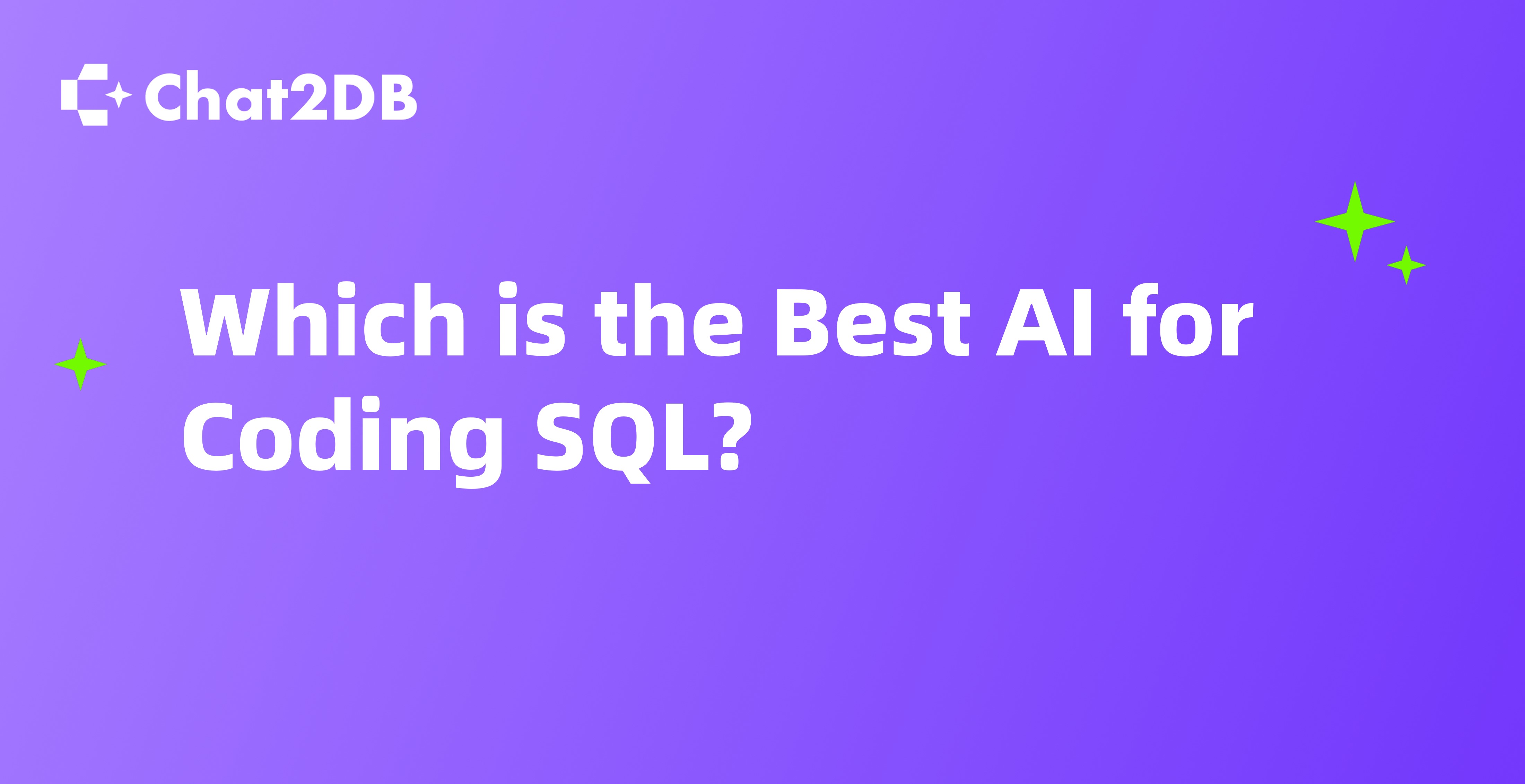
Which is the Best AI for Coding SQL?
Now, AI tools like **Chat2DB** are revolutionizing SQL query development by offering automated query generation, real-time optimization, and intuitive interfaces that make database management easier and more efficient.

How to Optimize SQL Queries for Better Performance with Chat2DB
This article explores practical SQL query optimization techniques and introduces how Chat2DB can enhance SQL query performance with AI-powered assistance.

How to Use ChatGPT for Writing SQL Queries
In this article, we will first explore how ChatGPT can generate SQL queries and then dive into how Chat2DB enhances this process by providing seamless integration with live databases.

Expert Guide to Using Chat2DB for Writing SQL Queries
This article explores how Chat2DB enhances SQL query generation and simplifies database management by integrating natural language understanding with seamless database connectivity.

SQL Tools: Enhancing Database Management with Chat2DB
This article explores the types, functions, and applications of SQL tools, with a special focus on Chat2DB as a powerful SQL tool.
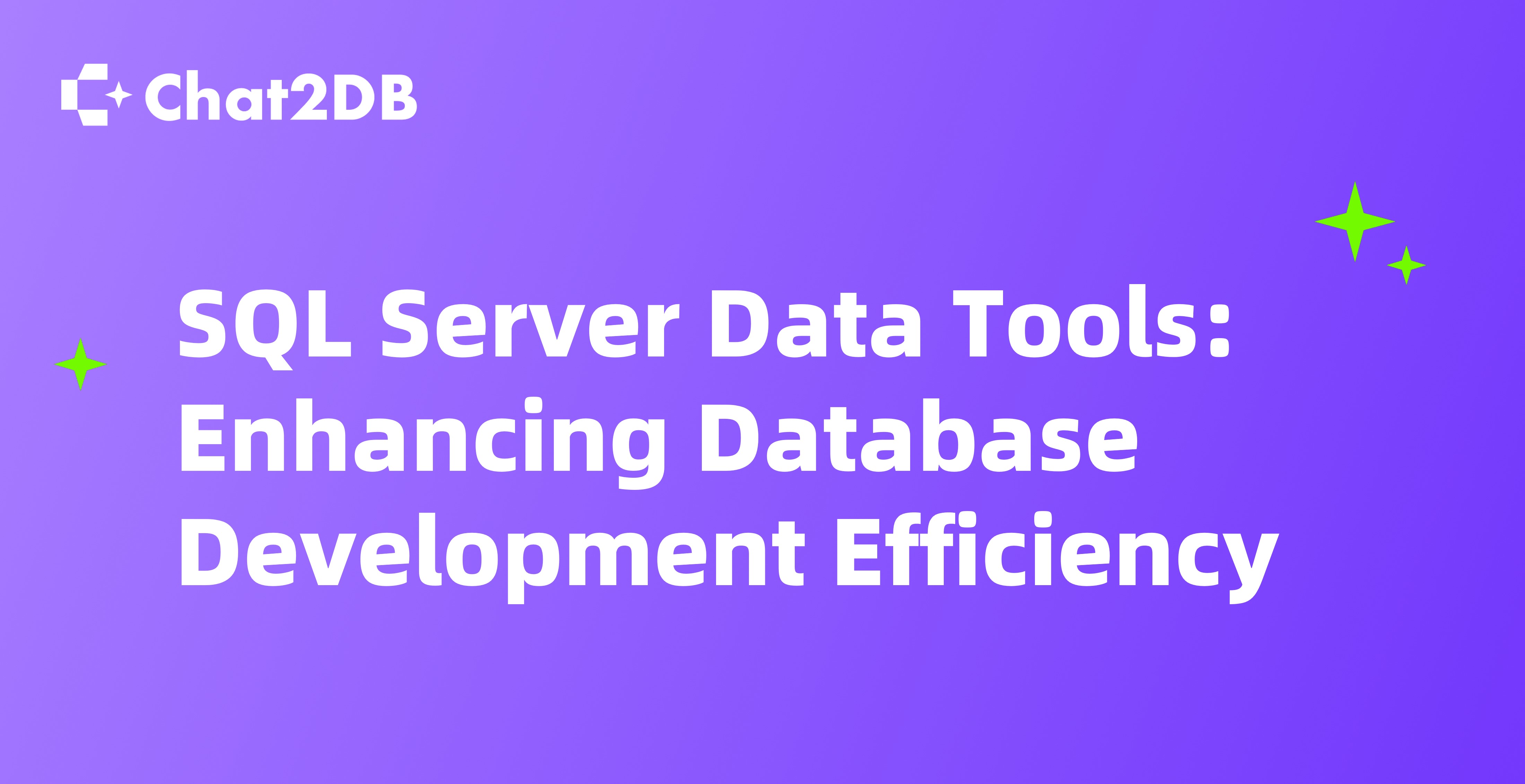
SQL Server Data Tools: Enhancing Database Development Efficiency
SQL Server Data Tools (SSDT) is an integrated development environment provided by Microsoft, designed to help developers create, manage, and deploy database projects in SQL Server.

Liquibase vs Flyway: A Comprehensive Comparison for Database Migration
Two of the most popular tools for database migration are Liquibase and Flyway. While both tools serve the same purpose, they have distinct features and approaches.

Understanding Schema Diagrams in Database Management
Exploring advanced usage of date_bin function in PostgreSQL for efficient date-based data analysis and optimization.

PostgreSQL vs MySQL: Which is better?
PostgreSQL and MySQL are two of the most popular open-source database options available today, each with its unique advantages and use cases.
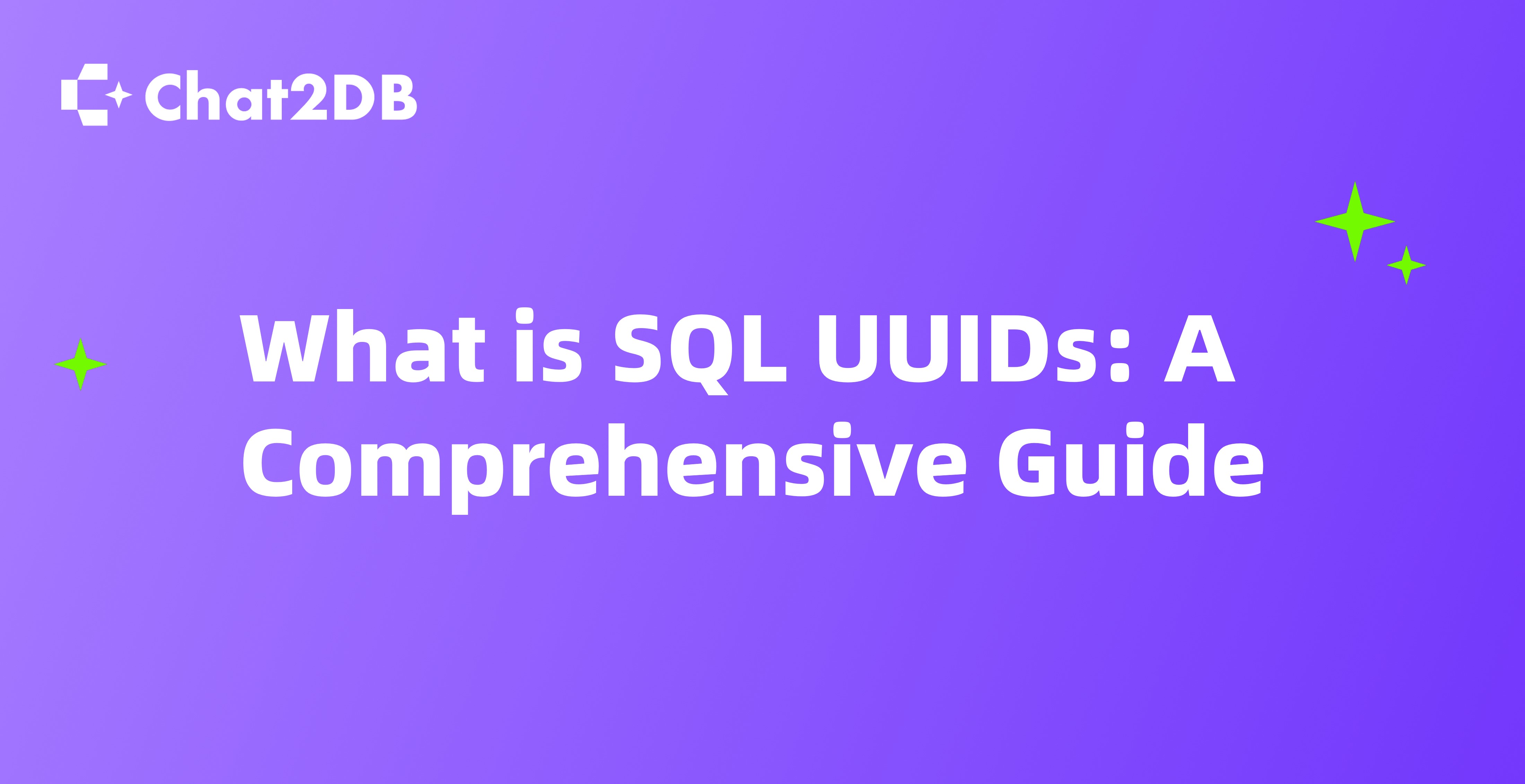
What is SQL UUIDs: A Comprehensive Guide
A UUID, or Universally Unique Identifier, is a 128-bit number used to uniquely identify information in computer systems.

The best MySQL Client: Streamline Your Database Management with Chat2DB
This article will delve into the concept of MySQL clients and their significance in developers' daily work, especially highlighting Chat2DB, an emerging tool that enhances database management through artificial intelligence.

Understanding psql Commands for PostgreSQL Database Management
Explore psql commands, a powerful tool within the PostgreSQL database management system.

Database Migration: A Comprehensive Guide for Developers
Database migration refers to the process of transferring data from one database system to another.

Text to SQL: Simplifying Database Interactions with Chat2DB
This article explores the concept of 'text to SQL', how to use Chat2DB to streamline this process, and how it equips developers with more efficient tools.
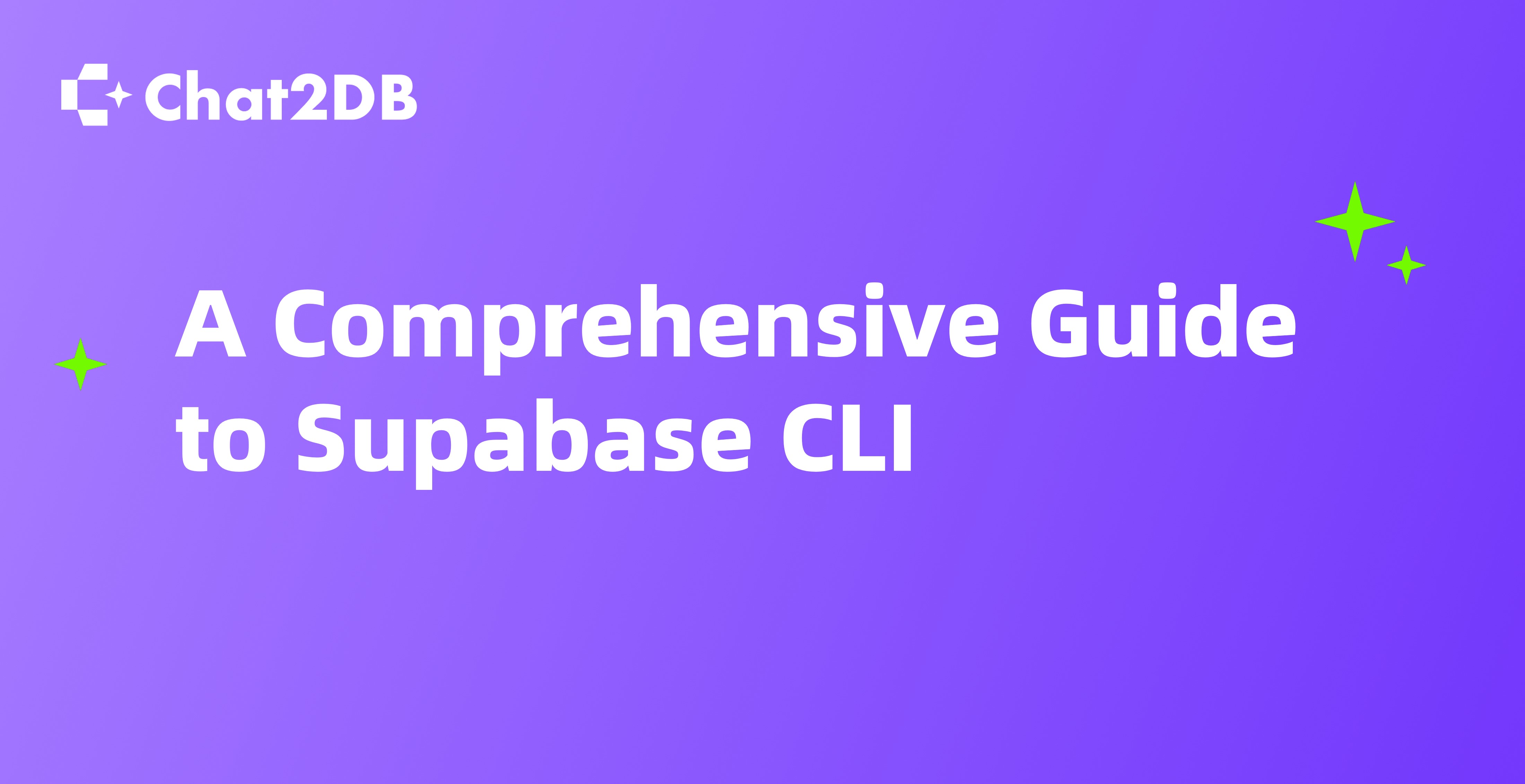
A Comprehensive Guide to Supabase CLI
Supabase CLI, a powerful command-line tool, offers comprehensive management features for Supabase projects.

Understanding OLAP Databases: A Comprehensive Guide for Developers
This article will delve into the definition, characteristics, and optimization of data analysis processes using tools like Chat2DB.

How to Show All Tables Using psql in PostgreSQL
This article will explore how to use the psql command to display all tables, particularly within the PostgreSQL database management system.

Mastering psql Queries with Chat2DB
Explore the best practices and strategies for optimizing PostgreSQL query performance to enhance database efficiency and speed.

Best Practices for Optimizing psql Query Performance
Explore the best practices and strategies for optimizing PostgreSQL query performance to enhance database efficiency and speed.

How to Write Efficient psql Queries for Large Databases
A comprehensive guide on optimizing PostgreSQL queries for large databases to improve performance and scalability.
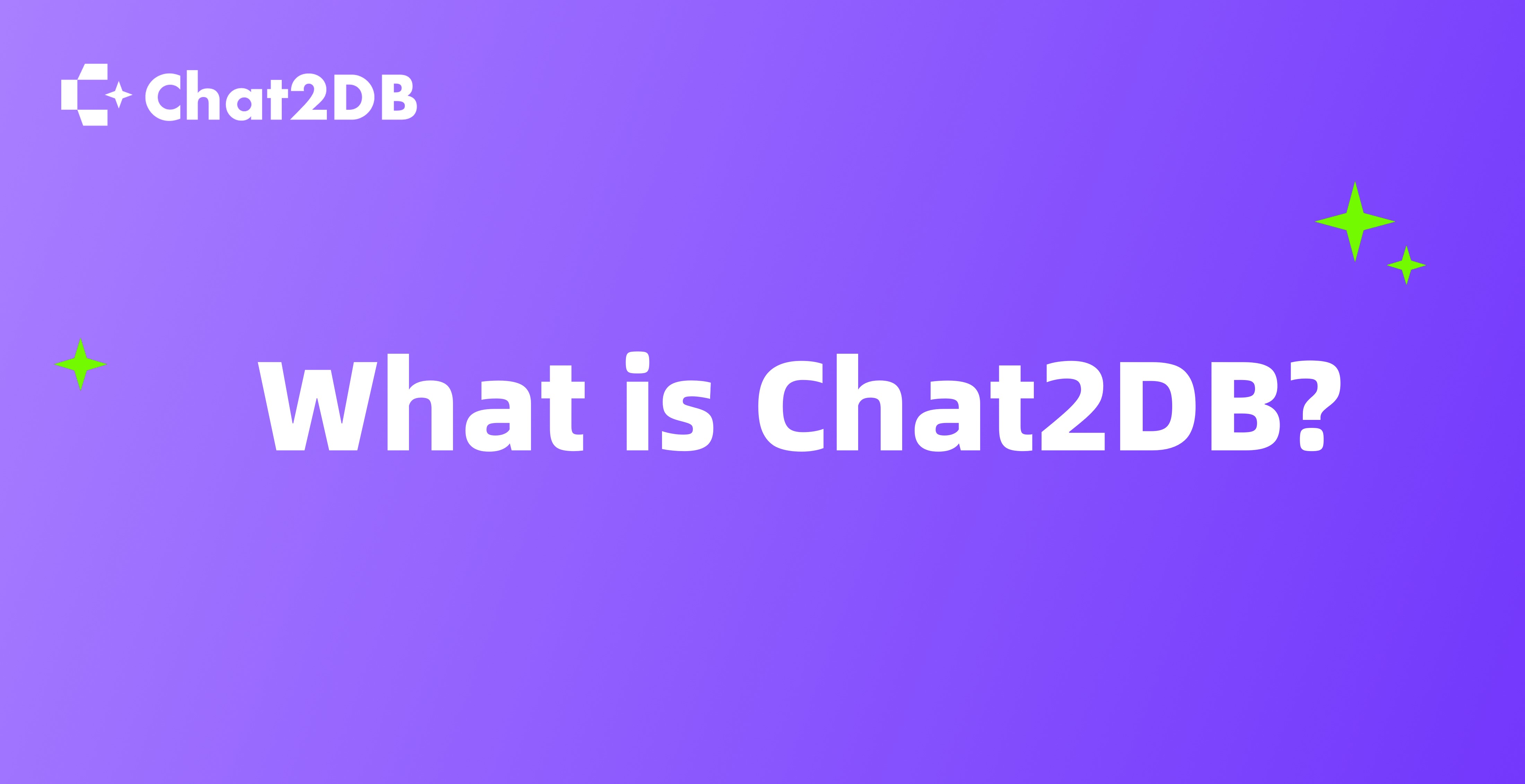
What is Chat2DB?
Chat2DB is a modern database management tool designed to simplify the use and management of databases.

Optimizing MongoDB performance using schema diagrams
A comprehensive guide on optimizing MongoDB performance through schema diagrams, including best practices, practical examples, and tools like MongoDB Compass.

Creating an Efficient Schema Diagram for a MongoDB Database
Explore the best practices and strategies for designing a schema diagram that optimizes performance in MongoDB databases.

Building a Powerful AI-driven Tool for Database Management
Exploring the development of an AI-driven tool for efficient database management, enhancing productivity and performance.

Implementing a Realtime Data Pipeline with ClickHouseDriver Example
Explore how to build a realtime data pipeline using ClickHouseDriver with practical examples and optimization strategies.

How to Use ClickHouseDriver to Optimize Data Processing Performance
Explore the best practices and strategies for optimizing data processing performance using ClickHouseDriver.

SQL DDL vs DML: A Comprehensive Comparison
Explore the differences between SQL Data Definition Language (DDL) and Data Manipulation Language (DML) with detailed examples and practical insights.

The Difference Between SQL DDL and DML Commands
Exploring the distinctions and use cases of SQL Data Definition Language (DDL) and Data Manipulation Language (DML) commands in database management.

Comparing Liquibase and Flyway for Database Version Control
A comprehensive comparison between Liquibase and Flyway for effective database version control in software development projects.

Implementing chatdb for realtime messaging applications
A comprehensive guide on implementing ChatDB for real-time messaging applications, covering key concepts, practical strategies, case studies, and optimization recommendations.

How to enable pgstatstatements for database performance monitoring
A comprehensive guide on setting up and utilizing pg_stat_statements extension for effective database performance monitoring in PostgreSQL.

Implementing a Proactive Monitoring Strategy for pg_stat_statements in PostgreSQL
Explore the best practices and strategies for implementing a proactive monitoring approach for pg_stat_statements in PostgreSQL to optimize performance and troubleshoot query issues effectively.

Using Python to automate the process of querying database schema
Explore how Python can be utilized to automate the querying of database schema, enhancing efficiency and accuracy in database management.

How to Write Efficient Queries to Get Database Schema in SQL Server
A comprehensive guide on writing efficient queries to retrieve database schema in SQL Server, covering best practices, strategies, and practical examples.

Optimizing PostgreSQL Performance with Advanced Access Commands in Linux
Explore advanced access commands in Linux to optimize PostgreSQL performance for enhanced database efficiency.

Advanced Techniques for Using MySQL Shell Commands in Production Environments
Explore advanced strategies and best practices for leveraging MySQL Shell commands effectively in production environments.

Exploring the Performance Implications of Using Cross Join in SQL Queries
An in-depth analysis of the performance impact of utilizing cross join in SQL queries, with practical strategies and optimization recommendations.

Understanding the concept of cross join in SQL and its practical applications
Exploring the fundamentals of cross join in SQL and its real-world use cases for efficient data retrieval and analysis.
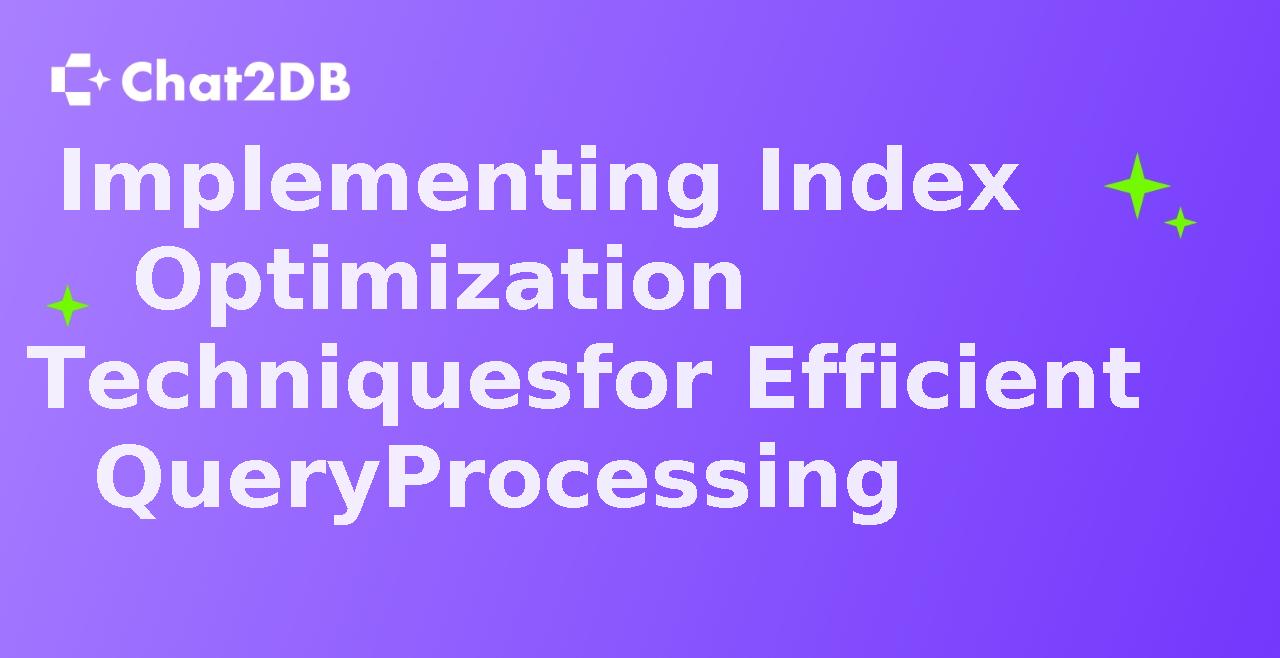
Implementing Index Optimization Techniques for Efficient Query Processing
Explore advanced strategies for optimizing database indexes to enhance query performance and efficiency.

Optimizing SQL queries using COUNT function in SQL Server
A comprehensive guide on optimizing SQL queries in SQL Server using the COUNT function.

Mastering SQL COUNT Function for Efficient Record Counting
An extensive guide on utilizing the SQL COUNT function to accurately calculate the number of records in a table, enhancing data analysis and query performance.

Improving query speed in PostgreSQL using CTE vs JOIN
Exploring the performance differences between Common Table Expressions (CTE) and JOIN in PostgreSQL to enhance query speed and efficiency.

Comparing the performance of CTE and JOIN in PostgreSQL
An in-depth analysis of the performance differences between Common Table Expressions (CTE) and JOIN in PostgreSQL, with practical strategies for optimization.
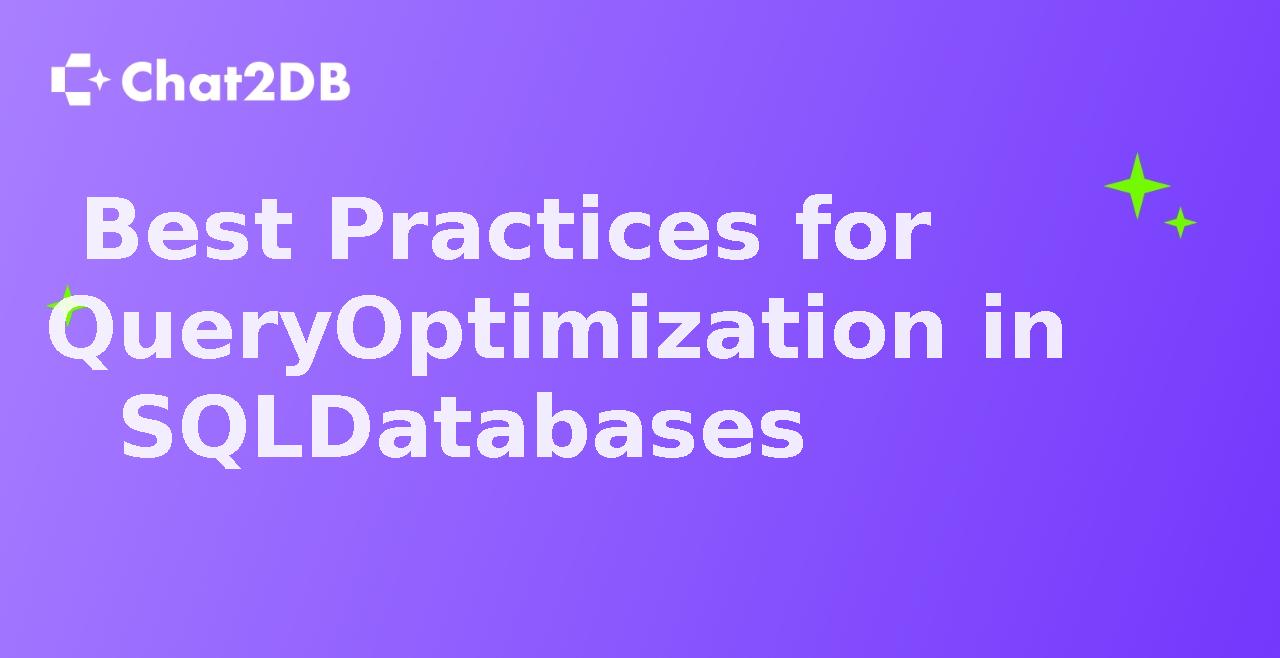
Best Practices for Query Optimization in SQL Databases
Exploring the best practices for optimizing queries in SQL databases to improve performance and efficiency.

Optimizing Query Performance in SQL with Advanced Indexing Techniques
A comprehensive guide on optimizing query performance in SQL using advanced indexing techniques.
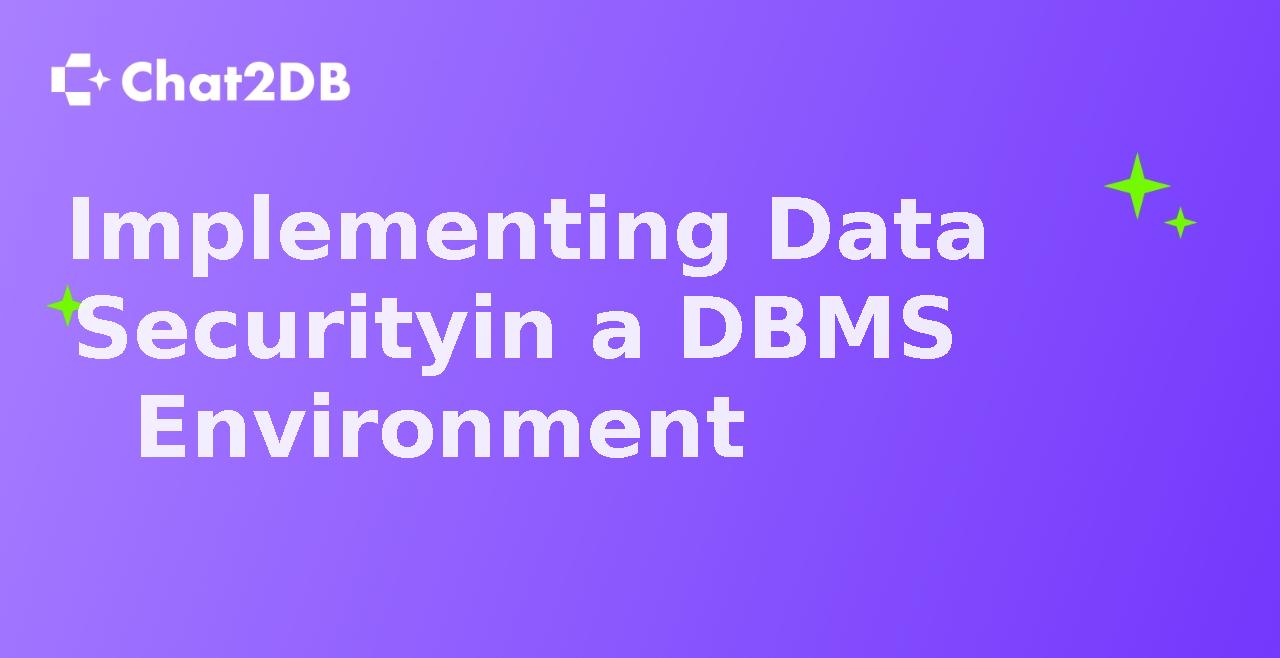
Implementing Data Security in a DBMS Environment
Exploring the importance and strategies for implementing data security in a Database Management System (DBMS) environment.

Understanding the Architecture of a DBMS System
Exploring the intricate architecture of a Database Management System (DBMS) and its impact on modern data management.

Ensuring Data Integrity and Reliability: Implementing ACID Properties in DBMS
A comprehensive guide on implementing ACID properties in Database Management Systems to ensure data integrity and reliability.

Designing an Efficient Database Schema for Optimal Performance in DBMS
Exploring the intricacies of designing a database schema for optimal performance in Database Management Systems (DBMS).

The Significance of Database Schema in DBMS: A Comprehensive Guide
Exploring the crucial role of database schema in Database Management Systems (DBMS) for effective data organization and management.

Implementing a custom MySQL compiler for query optimization
Exploring the development of a custom MySQL compiler to optimize query performance and efficiency.
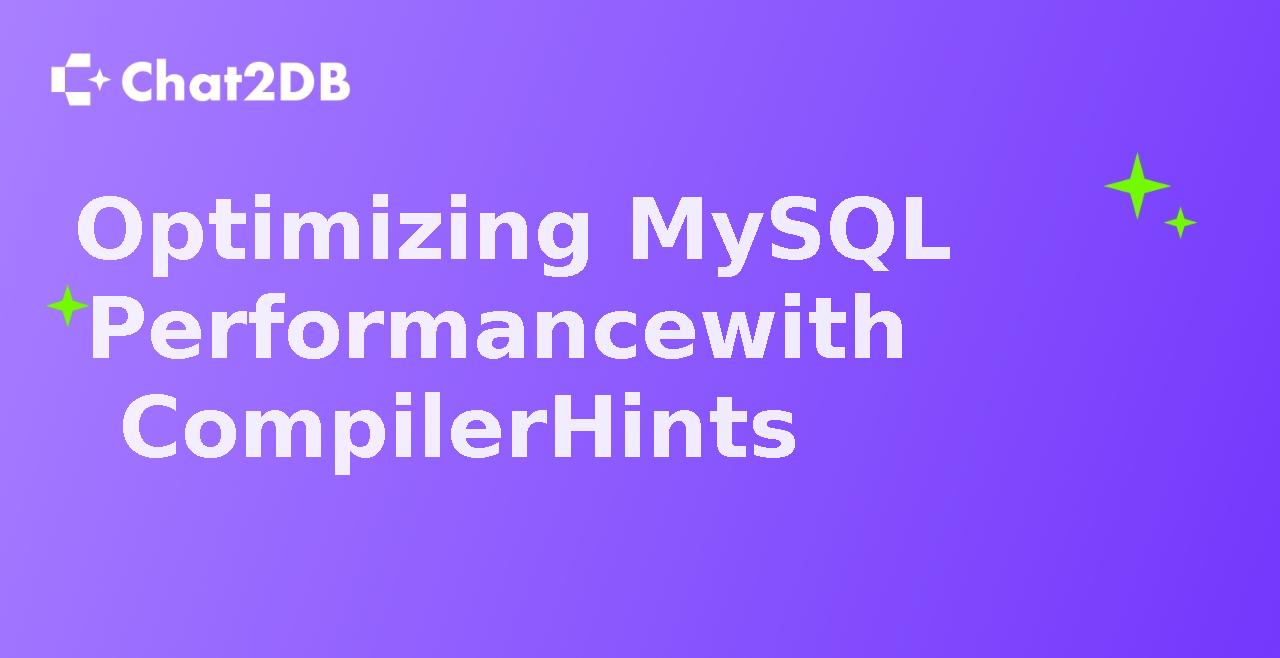
Optimizing MySQL Performance with Compiler Hints
A comprehensive guide on leveraging compiler hints to optimize MySQL performance for enhanced database efficiency.

Mastering Advanced MySQL Commands for Database Administrators
A comprehensive guide to mastering advanced MySQL commands for database administrators, covering key concepts, practical strategies, optimization techniques, case studies, and future prospects.
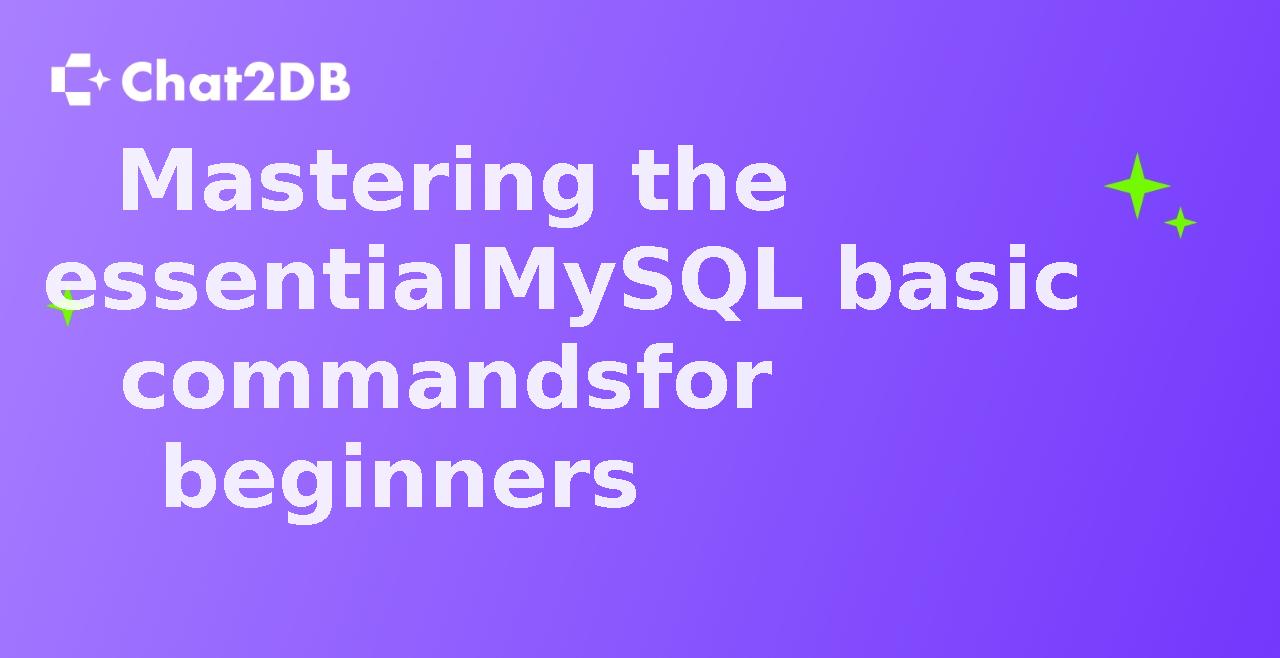
Mastering the essential MySQL basic commands for beginners
A comprehensive guide to understanding and utilizing fundamental MySQL commands for beginners.

Best Practices for Using MySQL Syntax in Database Queries
Exploring the best practices for utilizing MySQL syntax in database queries to enhance performance and efficiency.

Top Features to Look for in a MySQL Client for Efficient Database Operations
Exploring the essential features that a MySQL client should possess to streamline database operations and enhance efficiency.
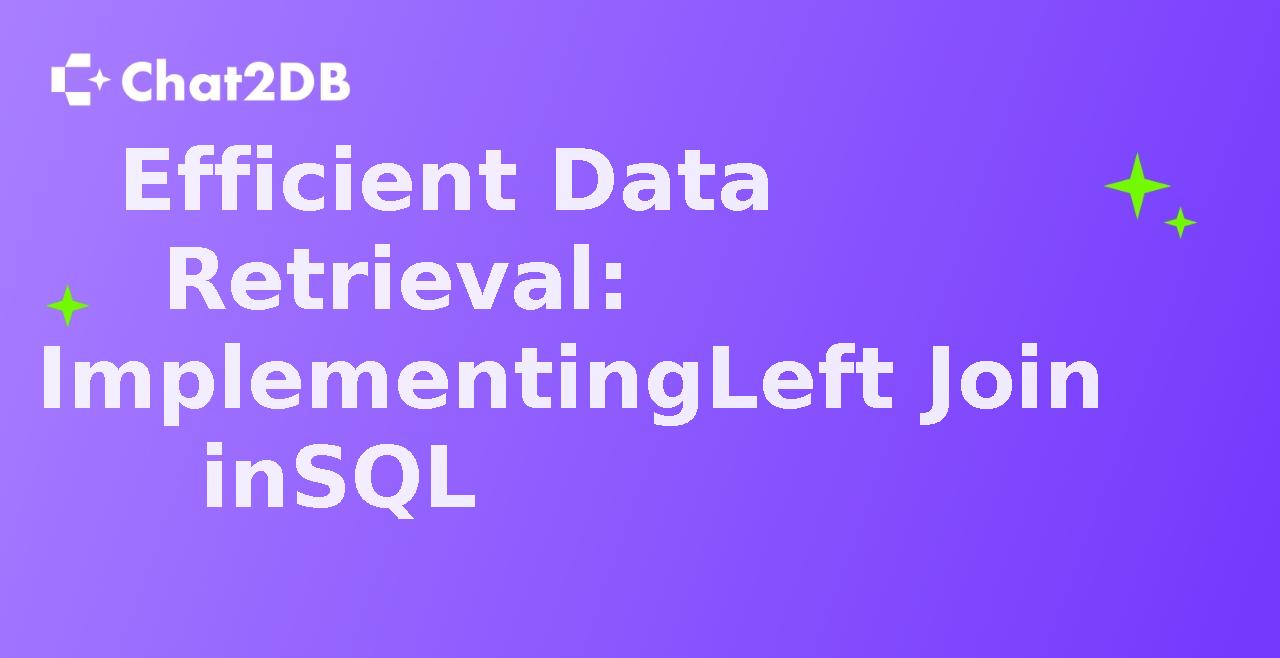
Efficient Data Retrieval: Implementing Left Join in SQL
An in-depth guide on implementing left join in SQL for efficient data retrieval, covering key concepts, strategies, optimization techniques, and real-world applications.

Optimizing Performance with Left Join in SQL Queries
Exploring the benefits and strategies of optimizing performance using left join in SQL queries.

Advanced Techniques for Optimizing SQL GROUP BY Performance
Exploring advanced strategies to optimize SQL GROUP BY performance for enhanced database query efficiency.

Mastering the SQL GROUP BY clause for efficient data aggregation
A comprehensive guide to understanding and optimizing the SQL GROUP BY clause for efficient data aggregation.

Optimizing SQL queries using various join techniques
A comprehensive guide on optimizing SQL queries through different join techniques, exploring their impact on performance and efficiency.

Mastering SQL Joins: A Comprehensive Guide
Exploring the different types of SQL joins, their applications, and best practices for optimizing join operations.

Implementing High Availability for Oracle Database Client using Oracle RAC
A comprehensive guide on implementing high availability for Oracle Database Client using Oracle RAC, covering key concepts, strategies, practical examples, and tools.

Optimizing Oracle Database Client Performance with Connection Pooling
A comprehensive guide on optimizing Oracle Database Client performance using connection pooling, including key strategies, techniques, and practical examples.

Implementing Data Encryption in MongoDB Database Schema
A comprehensive guide on how to implement data encryption in MongoDB database schema to enhance security and protect sensitive information.

Designing a Scalable Database Schema for MongoDB
A comprehensive guide on designing a scalable database schema for MongoDB, covering core concepts, key strategies, practical examples, and tools.

Implementing a secure MongoDB database client for better data management
Exploring the implementation of a secure MongoDB database client to enhance data management and security.

Optimizing MongoDB Performance with a Database Client
A comprehensive guide on optimizing MongoDB performance using a database client tool.

Advanced Techniques for Optimizing MySQL Performance Using Terminal Commands
Exploring advanced techniques to optimize MySQL performance through terminal commands, with a focus on efficiency and practical examples.

Mastering the top MySQL terminal commands for database management
An extensive guide on mastering essential MySQL terminal commands for efficient database management.

Implementing nosqlbooster for efficient data modeling in MongoDB
Exploring the use of nosqlbooster for optimizing data modeling in MongoDB and its impact on database performance.
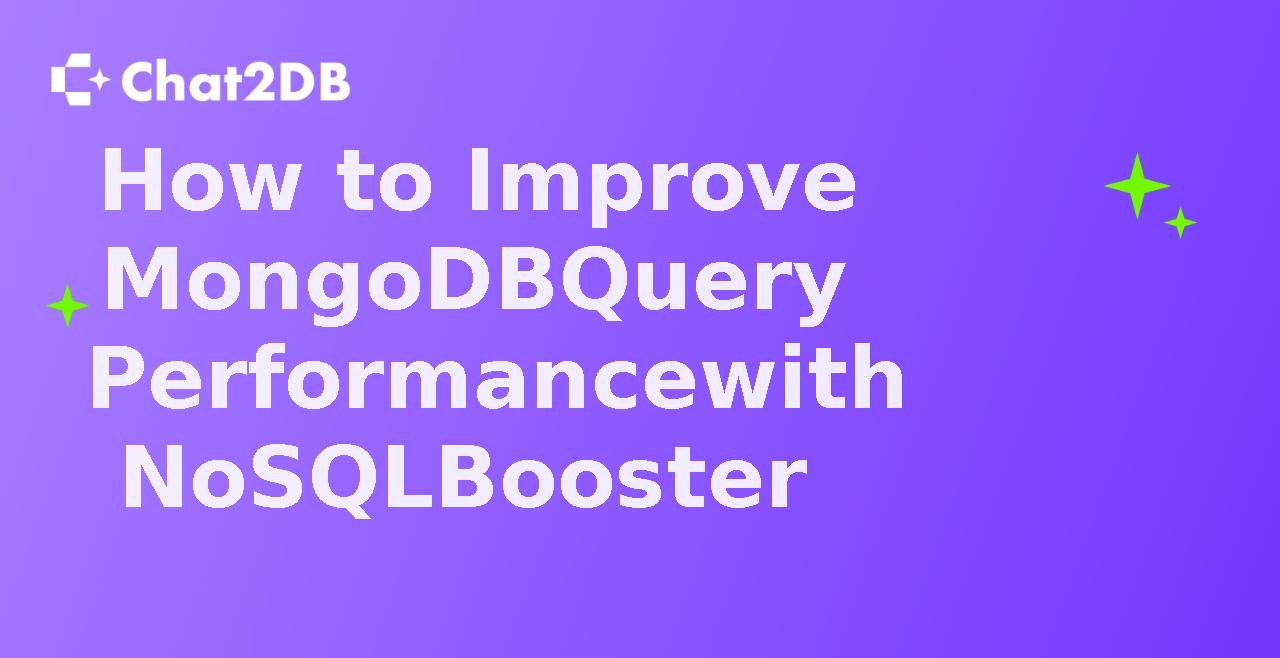
How to Improve MongoDB Query Performance with NoSQLBooster
Enhance your MongoDB query performance using NoSQLBooster. Explore advanced techniques and best practices.
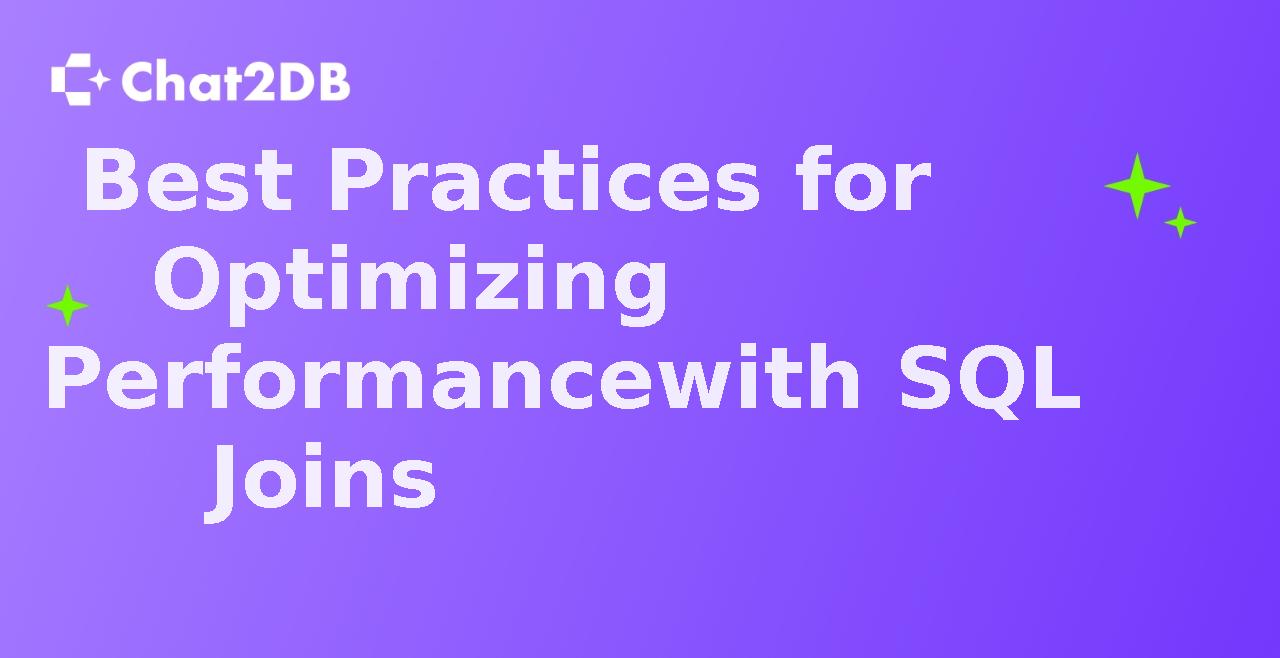
Best Practices for Optimizing Performance with SQL Joins
Exploring the best practices for optimizing performance with SQL joins and their impact on database efficiency.

Understanding different types of SQL joins and when to use them
An in-depth exploration of various types of SQL joins and their optimal usage scenarios.

Optimizing database performance with MySQL CLI commands
A comprehensive guide on optimizing database performance using MySQL CLI commands, covering key strategies, techniques, and practical examples.

Mastering advanced MySQL CLI commands for database administration
An extensive guide on mastering advanced MySQL CLI commands for efficient database administration.

Implementing Secure Authentication in SQL Native Client Applications
A comprehensive guide on implementing secure authentication in SQL Native Client applications, covering best practices, strategies, and practical examples.

Optimizing SQL Native Client Performance with Connection Pooling
A comprehensive guide on optimizing SQL Native Client performance using connection pooling, covering key strategies, techniques, and practical examples.

Optimizing MySQL performance by using SSH tunnel on Linux
A comprehensive guide on optimizing MySQL performance by utilizing SSH tunnel on Linux, covering key concepts, strategies, practical examples, and tools.

How to Set Up a Secure MySQL Client Using SSH Tunnel on Linux
A comprehensive guide on setting up a secure MySQL client using SSH tunnel on Linux, ensuring data security and privacy.

Implementing a secure method to list databases in PostgreSQL using psql
An in-depth guide on implementing a secure method to list databases in PostgreSQL using psql, focusing on security best practices and practical examples.

How to Use psql to Efficiently List Databases in PostgreSQL
A comprehensive guide on leveraging psql to efficiently list databases in PostgreSQL, exploring various techniques and best practices.

Step-by-step Guide to Drop a Database in PostgreSQL using psql Command Line Tool
A comprehensive guide on dropping a database in PostgreSQL using the psql command line tool, covering the importance, strategies, and practical examples.

Best Practices for Dropping a Database in PostgreSQL using psql
An extensive guide on the best practices for dropping a database in PostgreSQL using psql, covering key strategies, techniques, and practical examples.
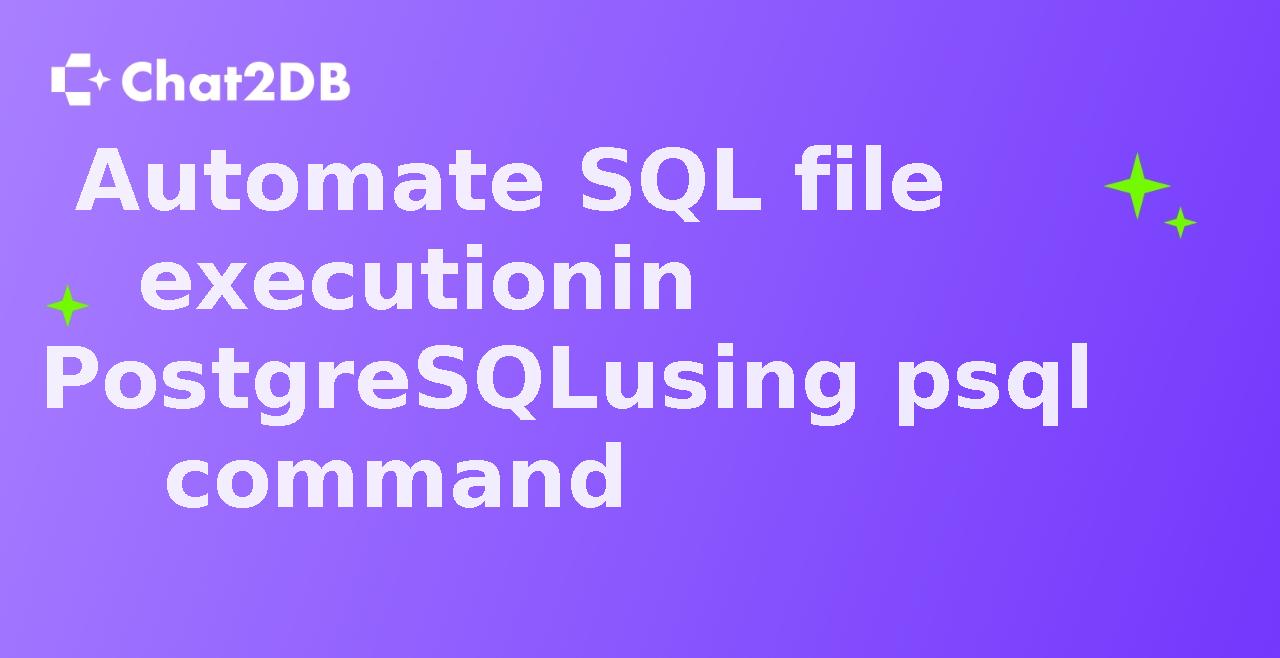
Automate SQL file execution in PostgreSQL using psql command
Exploring the automation of SQL file execution in PostgreSQL using the psql command, enhancing efficiency and reducing manual effort.

OLAP vs OLTP databases: Choosing the right one for your business needs
An in-depth comparison of OLAP and OLTP databases, exploring their differences, use cases, and best practices for businesses.

Comparing OLAP and OLTP databases: Understanding the Differences
An in-depth comparison of OLAP and OLTP databases, highlighting their unique characteristics and use cases.

Performance benchmarking Liquibase vs Flyway for database migration
Comparing the performance of Liquibase and Flyway for database migration to help developers choose the best tool for their projects.

Comparing the schema evolution features of Liquibase and Flyway
A comprehensive comparison of Liquibase and Flyway for schema evolution in database management.

Implementing Realtime Features in Supabase Using Websockets
A comprehensive guide on integrating realtime features in Supabase using websockets, exploring the impact of this technology in the current tech landscape.

Optimizing Supabase Performance with Caching Strategies
A comprehensive guide on optimizing Supabase performance through effective caching strategies.

Query optimization techniques in ClickHouse and Snowflake
Exploring advanced query optimization techniques in ClickHouse and Snowflake databases.

Performance Comparison Between ClickHouse and Snowflake Data Warehouses
An in-depth analysis of the performance differences between ClickHouse and Snowflake data warehouses, highlighting their strengths and weaknesses.

Implementing Transaction Management in SQL DML Operations
A comprehensive guide on implementing transaction management in SQL Data Manipulation Language (DML) operations, covering key concepts, strategies, practical examples, and tools.

Best Practices for Optimizing SQL DML Performance
A comprehensive guide on optimizing SQL DML performance with best practices and strategies.

Exploring the significance of DML operations in SQL databases
A comprehensive analysis of the importance and impact of Data Manipulation Language (DML) operations in SQL databases.

Understanding the DML meaning in database management
Exploring the significance of Data Manipulation Language (DML) in database management and its impact on modern data systems.

Implementing Zero Downtime Database Migration Using Advanced Tools
A comprehensive guide on how to implement zero downtime database migration using advanced tools, with a focus on practical examples and best practices.

Best Practices for Database Migration in a Cloud Environment
Exploring the best practices and strategies for database migration in a cloud environment, with a focus on efficiency, security, and scalability.

Comparing the performance of MySQL and PostgreSQL in handling large datasets
An in-depth analysis of the performance differences between MySQL and PostgreSQL when dealing with large datasets, with practical examples and optimization strategies.

Utilizing pgstatstatements for performance monitoring in PostgreSQL
An in-depth guide on leveraging pgstatstatements for performance monitoring in PostgreSQL databases.

Enhancing SQL query performance with pgstatstatements in PostgreSQL
A comprehensive guide on improving SQL query performance in PostgreSQL using pg_stat_statements extension.

Understanding query execution with pgstatstatements in PostgreSQL
An in-depth exploration of query execution in PostgreSQL using pg_stat_statements for performance optimization.

Query Performance Tuning with pg_stat_statements in PostgreSQL
A comprehensive guide on optimizing query performance in PostgreSQL using pg_stat_statements.

Analyzing query patterns with pgstatstatements in PostgreSQL
A comprehensive guide on analyzing query patterns using pg_stat_statements extension in PostgreSQL.

Improving database performance using pgstatstatements in PostgreSQL
A comprehensive guide on leveraging pg_stat_statements extension in PostgreSQL to enhance database performance.
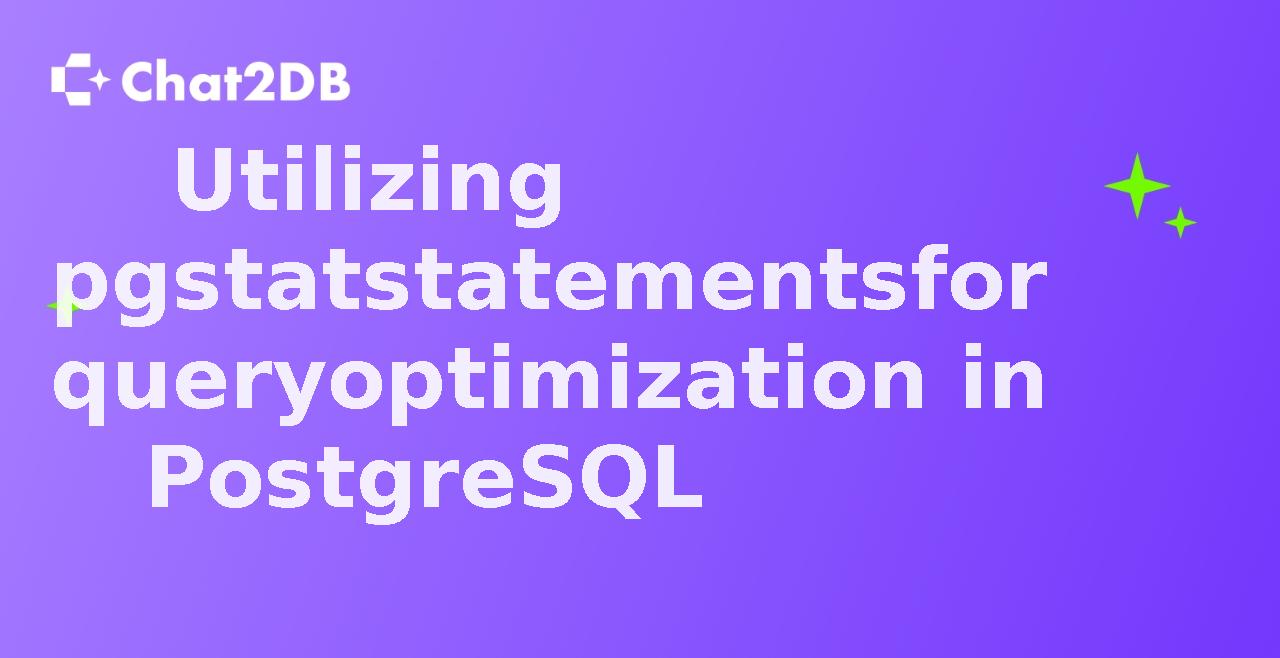
Utilizing pgstatstatements for query optimization in PostgreSQL
A comprehensive guide on leveraging pg_stat_statements extension for query optimization in PostgreSQL databases.

Monitoring and analyzing query performance with pgstatstatements in PostgreSQL
A comprehensive guide on how to monitor and analyze query performance using pg_stat_statements extension in PostgreSQL.
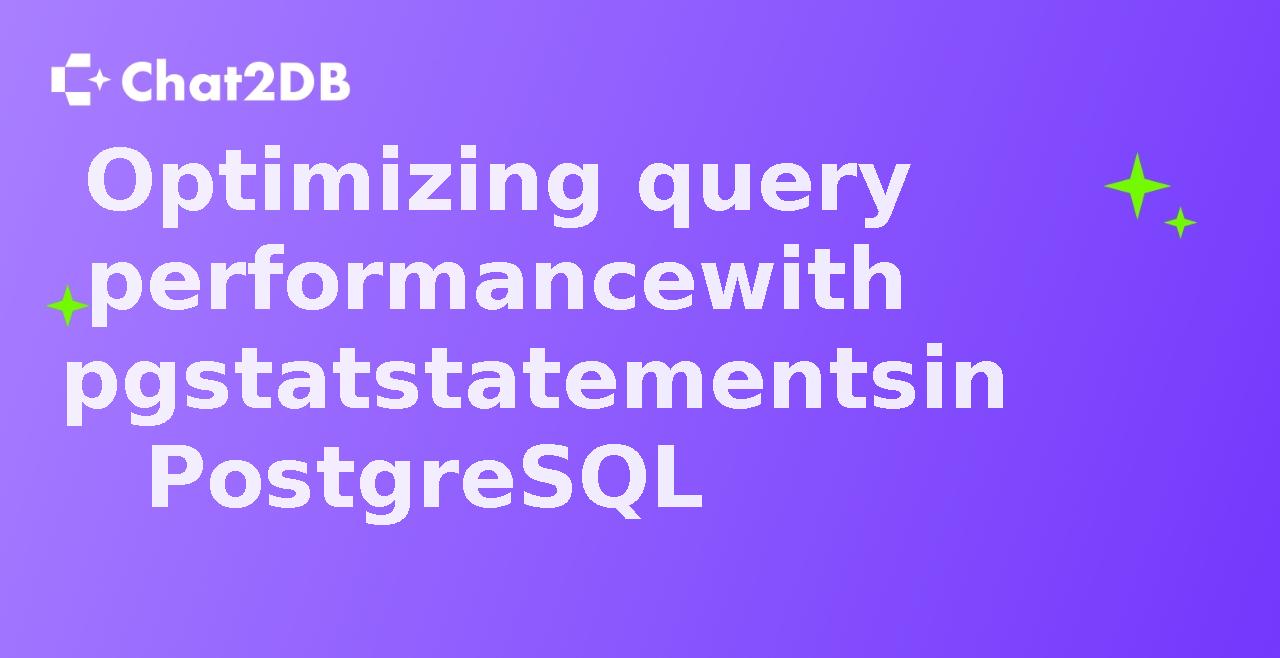
Optimizing query performance with pgstatstatements in PostgreSQL
A comprehensive guide on optimizing query performance in PostgreSQL using pg_stat_statements extension.

How to use pgstatstatements to analyze query performance in PostgreSQL
An in-depth guide on leveraging pg_stat_statements extension in PostgreSQL for query performance analysis.

Choosing the Best Free MySQL Client for Development
A comprehensive guide on selecting the most suitable free MySQL client for your development needs.
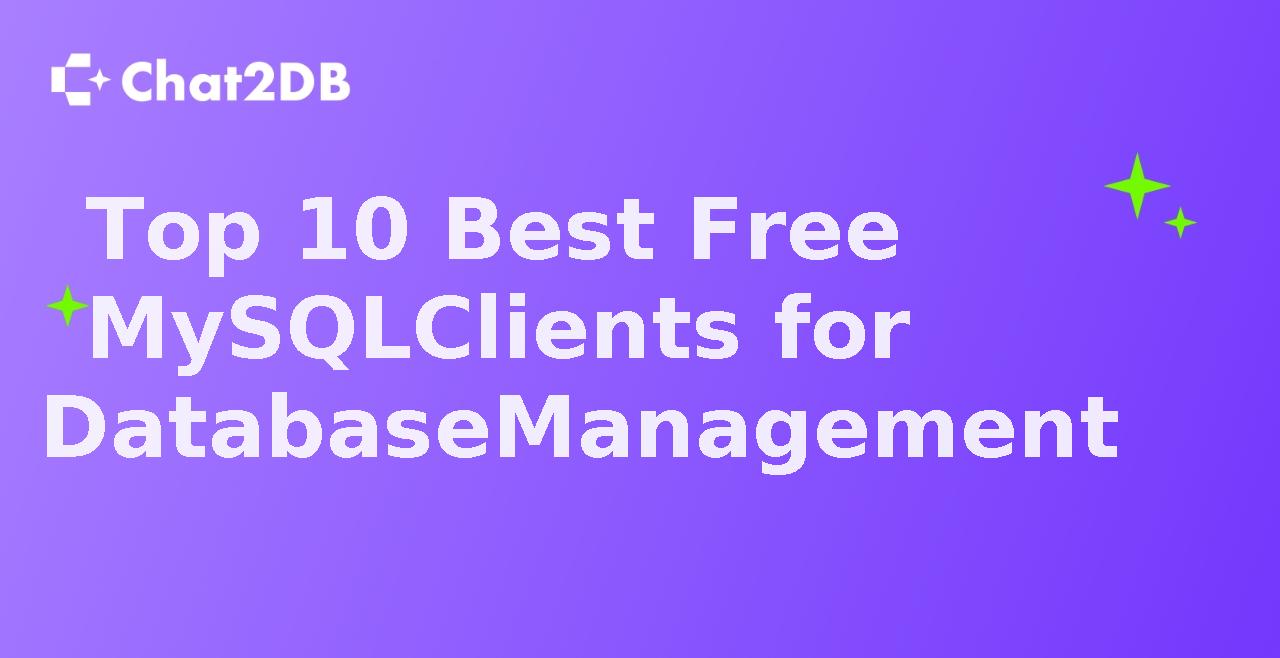
Top 10 Best Free MySQL Clients for Database Management
Exploring the top 10 free MySQL clients for efficient database management, highlighting their features and benefits.

Executing MySQL cmd commands to optimize database performance
A comprehensive guide on optimizing database performance using MySQL cmd commands.

How to use MySQL cmd commands to manage database users and permissions
A comprehensive guide on managing database users and permissions using MySQL cmd commands.
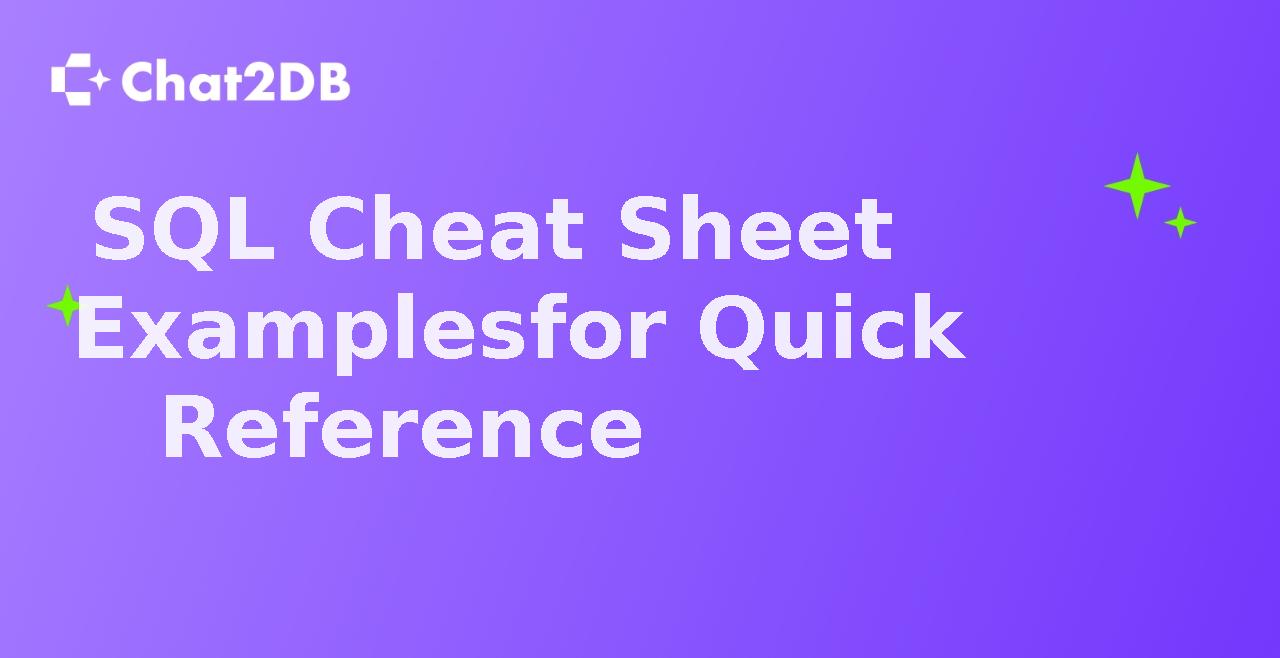
SQL Cheat Sheet Examples for Quick Reference
A comprehensive guide to SQL cheat sheet examples for quick reference, covering essential SQL queries and commands.

Advanced SQL Interview Questions Dive Deep into Complex Queries and Database Optimization Techniques
An extensive guide on advanced SQL interview questions, complex queries, and database optimization techniques.
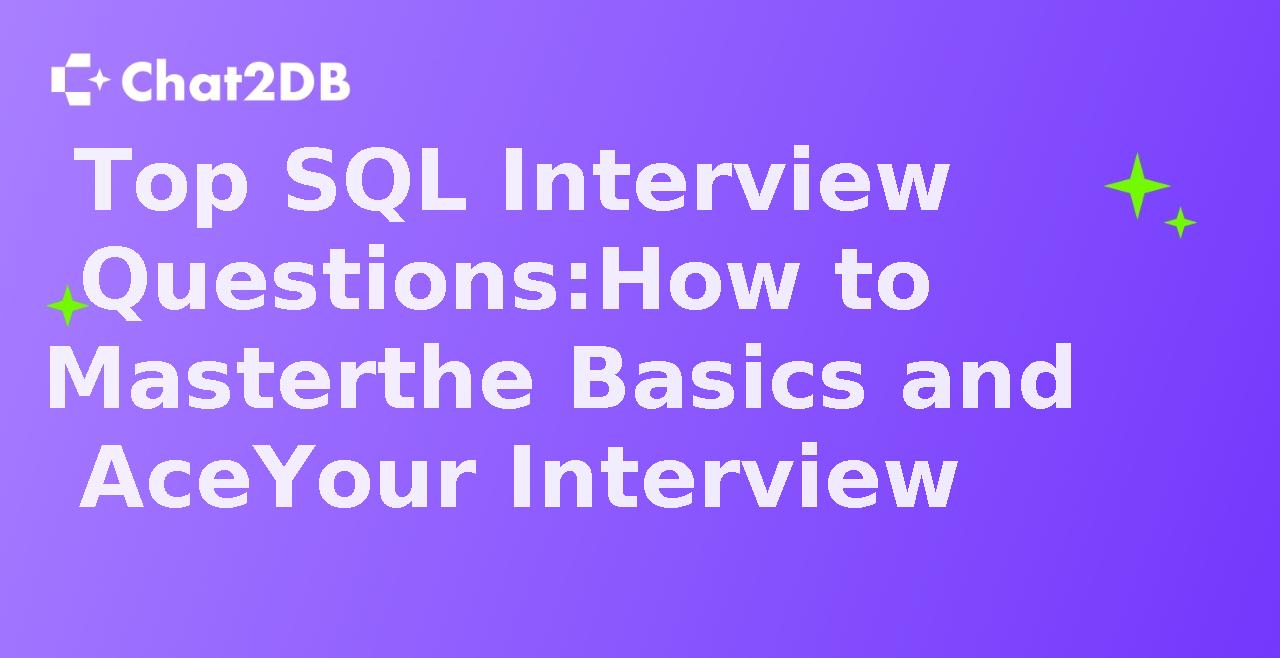
Top SQL Interview Questions: How to Master the Basics and Ace Your Interview
A comprehensive guide to mastering SQL interview questions, covering the basics and providing tips to excel in SQL interviews.

Scalability of SQL and NoSQL Databases: Handling Growing Data Volumes
Exploring the scalability of SQL and NoSQL databases and strategies to scale databases for handling increasing data volumes.

SQL and NoSQL Database Backup and Recovery Strategies for Data Protection
Exploring the best practices and strategies for backing up and recovering data in SQL and NoSQL databases to ensure data protection and integrity.

SQL and NoSQL Database Replication: Ensuring Data Consistency and Availability
Exploring the replication strategies in SQL and NoSQL databases to maintain data consistency and availability.

SQL and NoSQL Database Performance Tuning: Optimizing Queries and Indexes
A comprehensive guide on improving database performance by tuning queries and indexes in both SQL and NoSQL databases.

SQL and NoSQL Data Migration Strategies: Moving Data Between Different Database Types
Exploring the strategies and best practices for migrating data between SQL and NoSQL databases, with a focus on real-world examples and practical tips.

SQL and NoSQL Database Security Best Practices and Considerations
Exploring the best practices and considerations for securing SQL and NoSQL databases to ensure data integrity and confidentiality.

The benefits of using SQL and NoSQL databases in a hybrid architecture
Exploring the advantages of combining SQL and NoSQL databases in a hybrid architecture and how it can enhance performance and scalability.
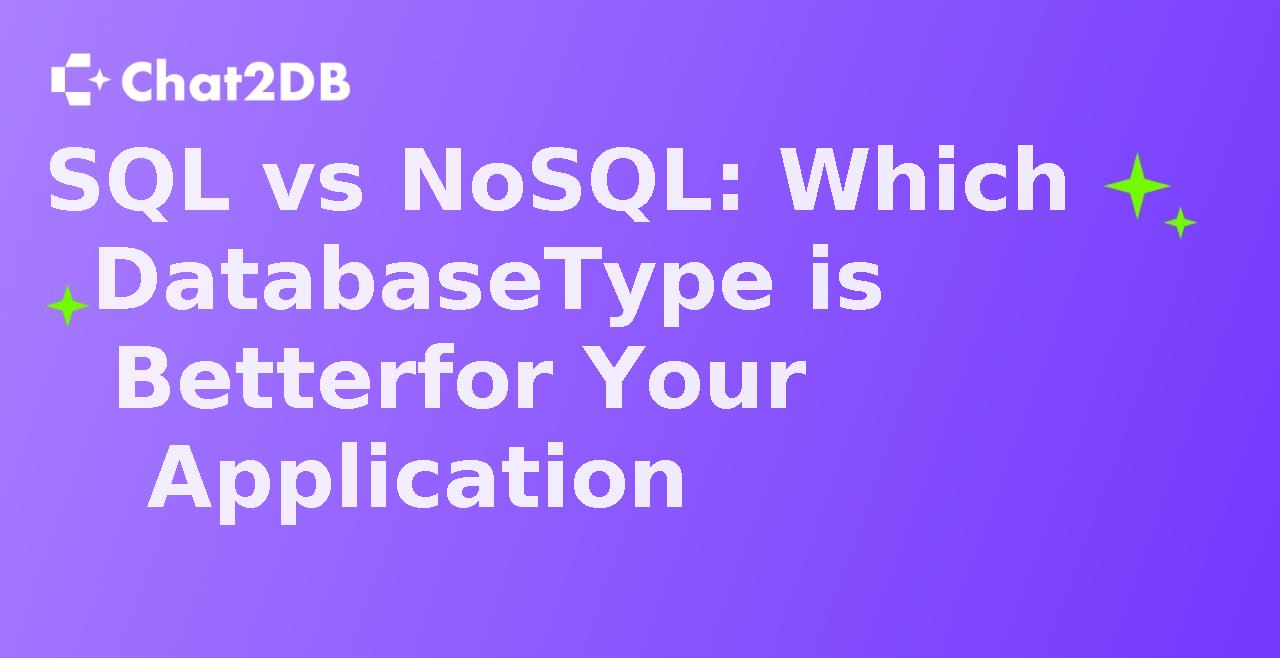
SQL vs NoSQL: Which Database Type is Better for Your Application
An extensive comparison between SQL and NoSQL databases to help developers choose the best database type for their applications.

Choosing Between SQL and NoSQL Databases for Your Next Project
A comprehensive guide to help you decide whether to use SQL or NoSQL databases for your upcoming project, exploring the differences, advantages, and best practices.

SQL and NoSQL Databases: A Comparison of Data Modeling Approaches
An in-depth analysis of SQL and NoSQL databases, comparing their data modeling approaches and discussing their impact on modern data management.

Designing a Scalable Database Schema following SQL Best Practices
A comprehensive guide on designing a scalable database schema following SQL best practices, covering core concepts, key strategies, practical examples, and tools.

Best Practices for Optimizing SQL Queries in a High-Traffic Database Environment
Exploring advanced techniques and strategies to optimize SQL queries in a high-traffic database environment.

MySQL UUID vs autoincrement which one is better for performance
An extensive analysis comparing the performance implications of using UUIDs versus autoincrement for primary keys in MySQL databases.
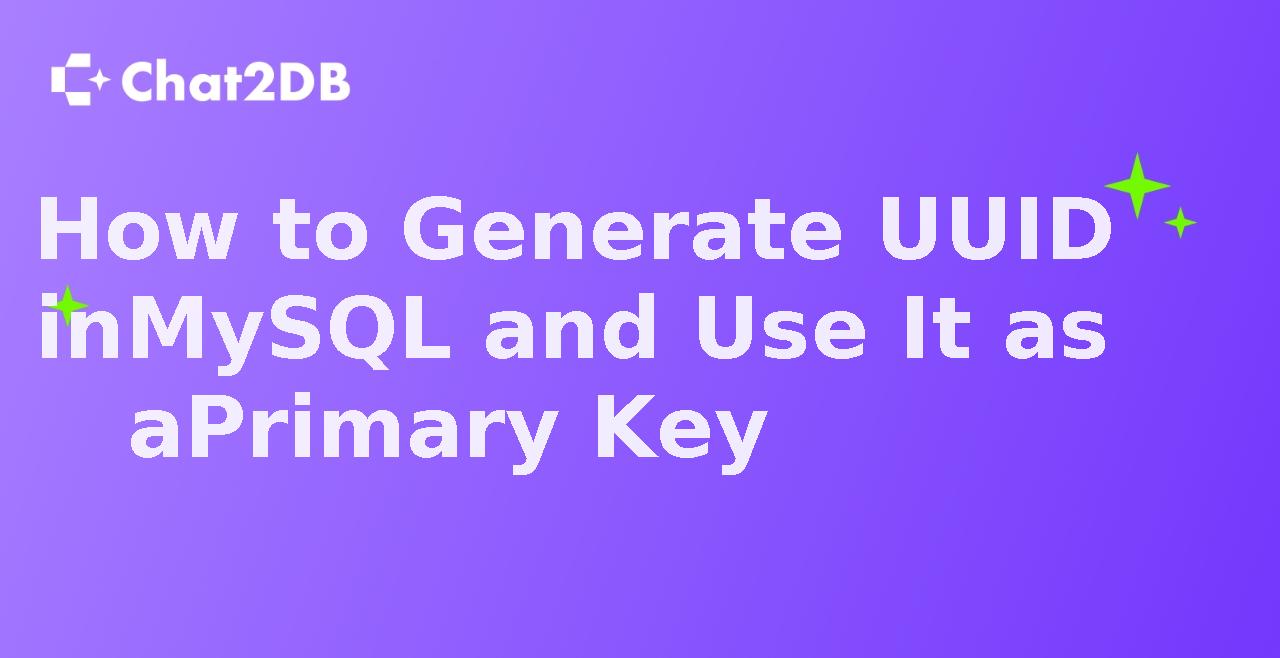
How to Generate UUID in MySQL and Use It as a Primary Key
Exploring the process of generating UUID in MySQL and utilizing it as a primary key, with detailed examples and best practices.

PostgreSQL commands for database backup and recovery
A comprehensive guide to PostgreSQL commands for database backup and recovery, covering key concepts, strategies, practical examples, and tools.

How to use PostgreSQL commands to manage database users and permissions
A comprehensive guide on utilizing PostgreSQL commands to effectively manage database users and permissions.

Best Practices for SQL Optimization: Improving Performance and Reducing Query Execution Time
A comprehensive guide on SQL optimization strategies to enhance database performance and minimize query execution time.
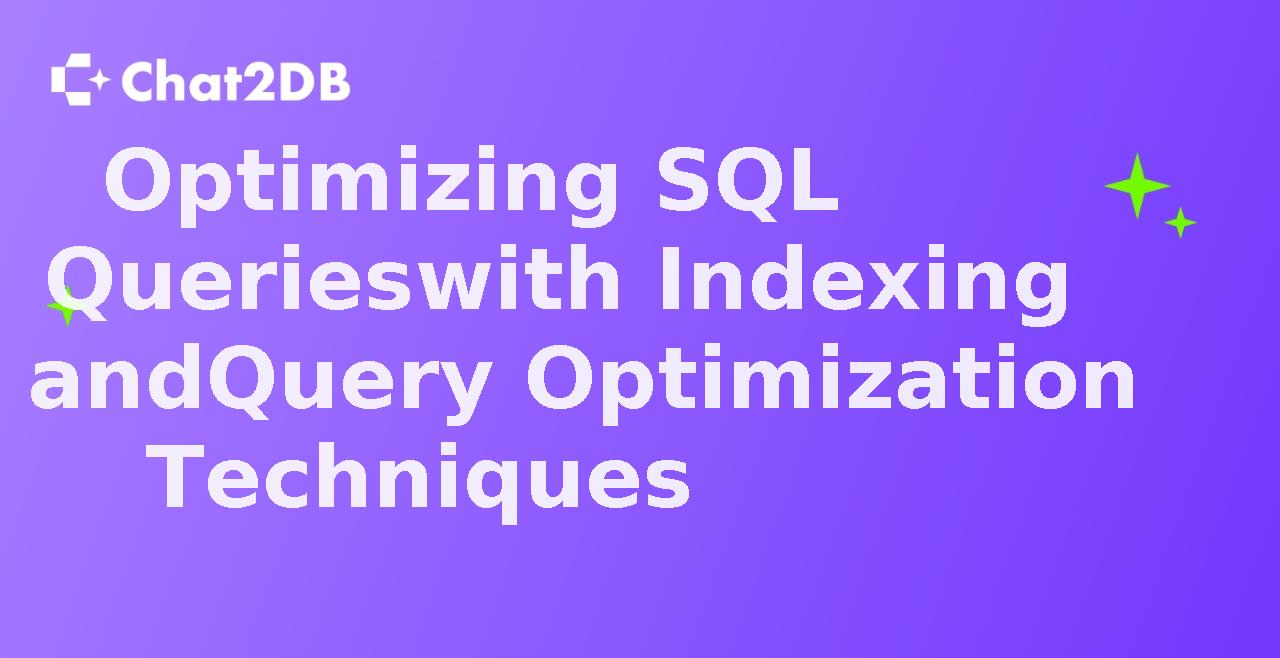
Optimizing SQL Queries with Indexing and Query Optimization Techniques
A comprehensive guide on optimizing SQL queries using indexing and query optimization techniques.

Understanding the PostgreSQL table schema and how to display it using psql
An in-depth guide on PostgreSQL table schema, exploring how to view and understand it using psql command-line tool.

Exploring PostgreSQL Table Schema with psql Command Line Tool
A comprehensive guide on how to display and understand table schema in PostgreSQL using the psql command line tool.

How to Optimize Query Performance in PostgreSQL using psql
A comprehensive guide on optimizing query performance in PostgreSQL using psql, covering key strategies, techniques, and best practices.

How to Become a Data Analyst: A Comprehensive Guide
To become a data analyst, consider various educational routes. Earning a degree in fields like statistics, computer science, or business analytics provides a strong foundation.

Seamless Migration: A Comprehensive Guide from Oracle to PostgreSQL
Database migration refers to the process of transferring data from one database system to another.It is vital for businesses looking to optimize their database management and reduce costs.

Mastering Table Creation in PostgreSQL: A Detailed Guide
A table consists of fields (or columns), each with a designated data type and properties.

Mastering the PostgreSQL COALESCE Function: A Comprehensive Guide
COALESCE is an SQL function that returns the first non-null value from a list of arguments.

Mastering DML in SQL with Chat2DB: Unlock the Power of Data Manipulation
Data Manipulation Language (DML) is a subset of SQL that focuses on managing and manipulating data stored in database tables.
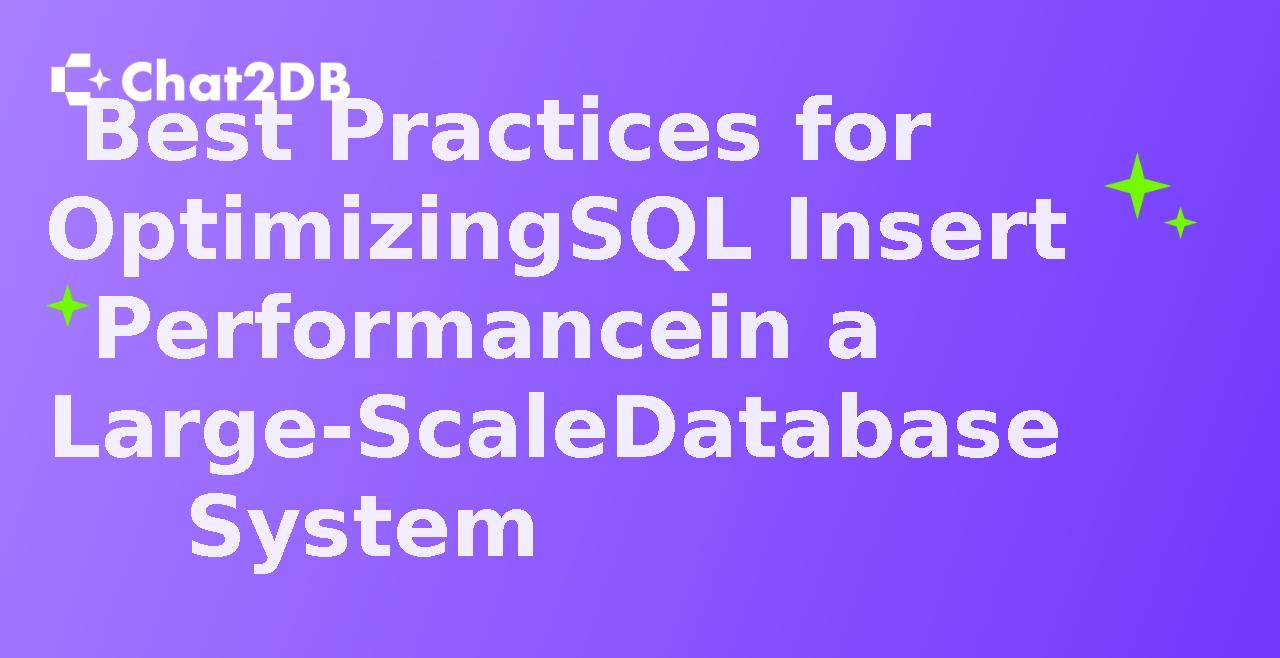
Best Practices for Optimizing SQL Insert Performance in a Large-Scale Database System
Exploring strategies and techniques to enhance SQL insert performance in large-scale database systems.

Efficient SQL Insert Operations in High-Availability Environments
Exploring strategies and best practices for optimizing SQL insert operations in high-availability environments.

Improving query speed in PostgreSQL CTE vs JOIN performance comparison
An in-depth analysis of query speed improvement in PostgreSQL using Common Table Expressions (CTE) and JOIN operations.

Comparing the performance of CTE and JOIN in PostgreSQL: A comprehensive analysis
An in-depth comparison of the performance of Common Table Expressions (CTE) and JOIN operations in PostgreSQL, exploring their impact on query execution efficiency.

Managing user permissions in PostgreSQL using psql command line
A comprehensive guide on managing user permissions in PostgreSQL using the psql command line interface.

Managing PostgreSQL Users with psql Command Line
A comprehensive guide on how to add, manage, and remove users in a PostgreSQL database using the psql command line interface.

Optimizing Data Processing with ClickHouse and Spark: A Comprehensive Guide
A comprehensive guide on optimizing data processing using ClickHouse and Spark, covering key concepts, strategies, practical examples, and tools.

Integrating ClickHouse with Spark for Realtime Analytics
A comprehensive guide on integrating ClickHouse with Spark for realtime analytics, exploring the benefits and technical aspects of this integration.

Step-by-step guide to install MariaDB on CentOS with yum package manager
A comprehensive tutorial on installing MariaDB on CentOS using the yum package manager, covering all necessary steps and configurations.

Optimizing MariaDB Performance on Ubuntu with apt-get Command
A comprehensive guide on optimizing MariaDB performance on Ubuntu using the apt-get command, covering installation, configuration, and best practices.

Design a Highly Available Architecture Using SQL Server Management Tools
Exploring the design of a highly available architecture using SQL Server management tools and discussing their impact on modern technology environments.
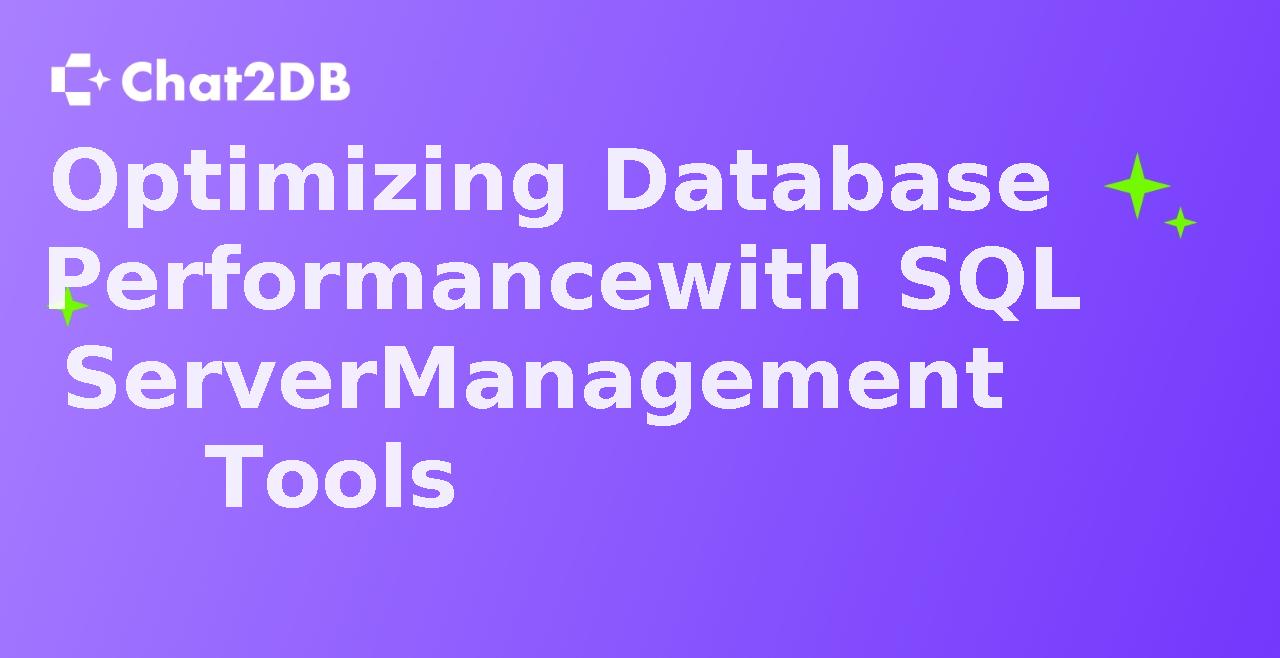
Optimizing Database Performance with SQL Server Management Tools
A comprehensive guide on how to use SQL Server management tools to optimize database performance, covering key strategies, techniques, and practical examples.

Advanced SQL Query Interview Questions and Answers
A comprehensive guide to advanced SQL query interview questions and answers, covering complex SQL concepts and practical examples.

Top SQL Query Interview Questions for Beginners
A comprehensive guide to the top SQL query interview questions for beginners, covering key concepts, strategies, and practical examples.
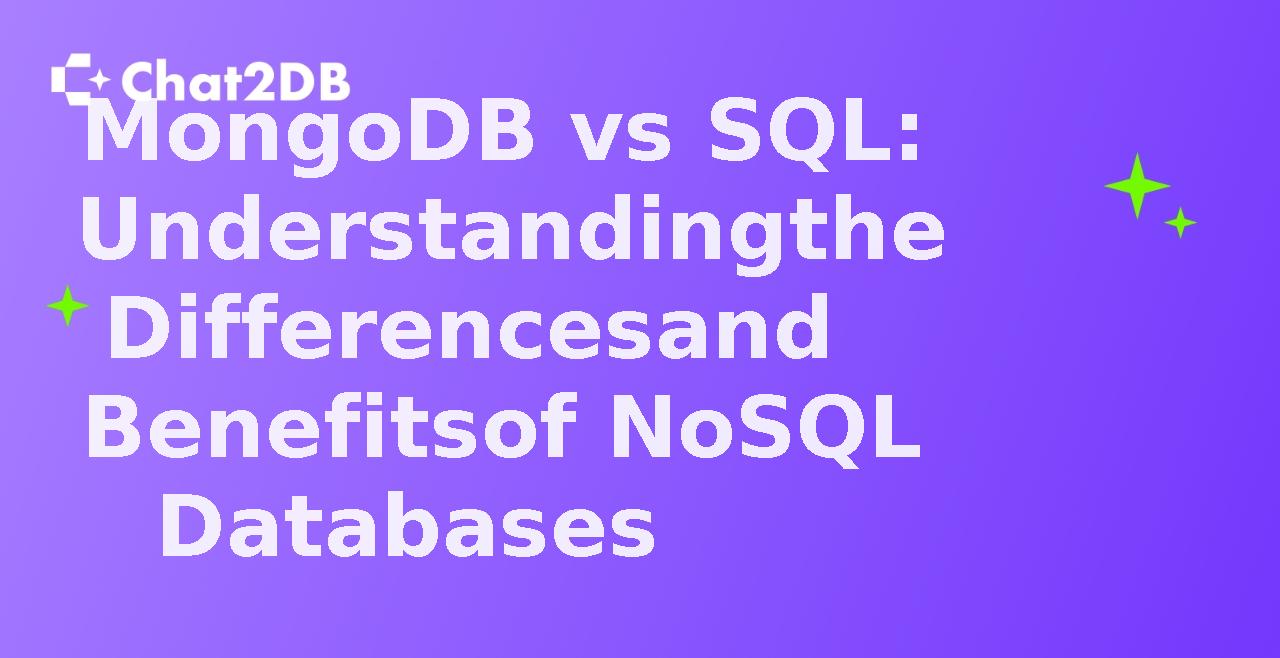
MongoDB vs SQL: Understanding the Differences and Benefits of NoSQL Databases
An in-depth comparison between MongoDB and SQL databases, exploring the differences, benefits, and use cases of NoSQL databases.

Design a Highly Available PostgreSQL Tutorial Cluster Architecture
A comprehensive guide on designing a highly available PostgreSQL cluster architecture, covering key concepts, strategies, practical examples, and tools.

Optimizing PostgreSQL Performance with Sharding Technology
A comprehensive guide on how to use sharding technology to optimize PostgreSQL performance, including key strategies, techniques, and practical examples.
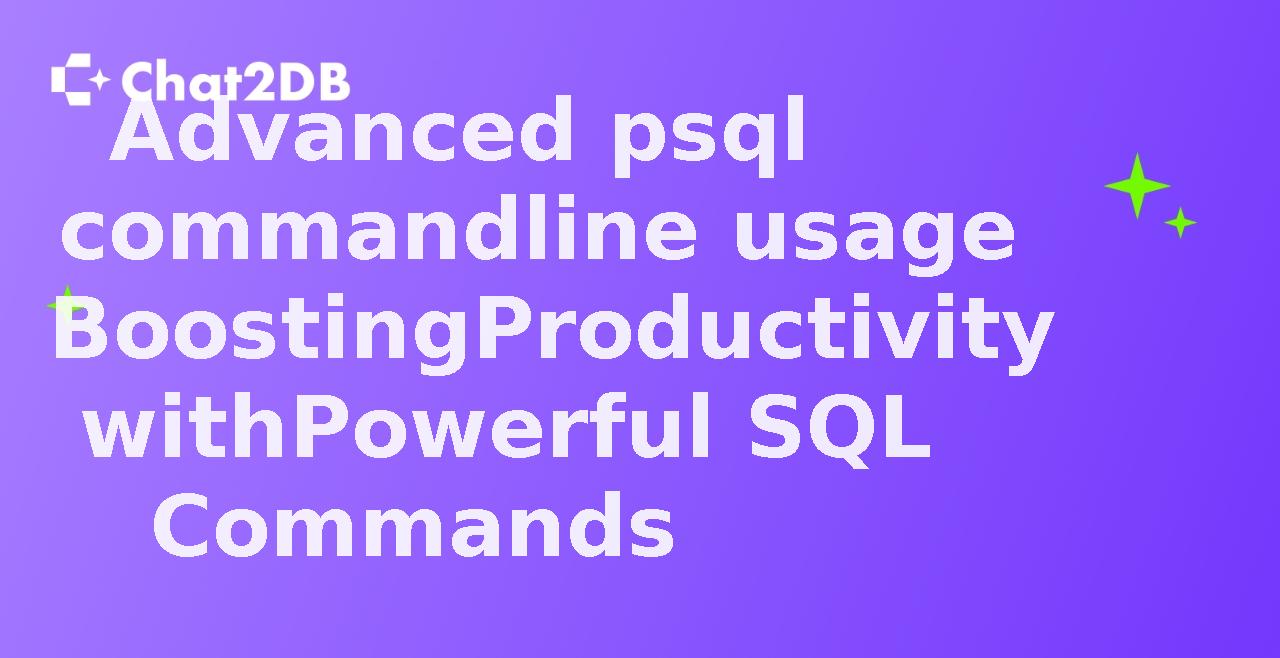
Advanced psql command line usage Boosting Productivity with Powerful SQL Commands
Exploring advanced psql command line usage to boost productivity with powerful SQL commands.

Mastering the psql command line Tips and Tricks for Efficient Database Management
An extensive guide on mastering the psql command line for efficient database management, covering tips and tricks to enhance productivity.
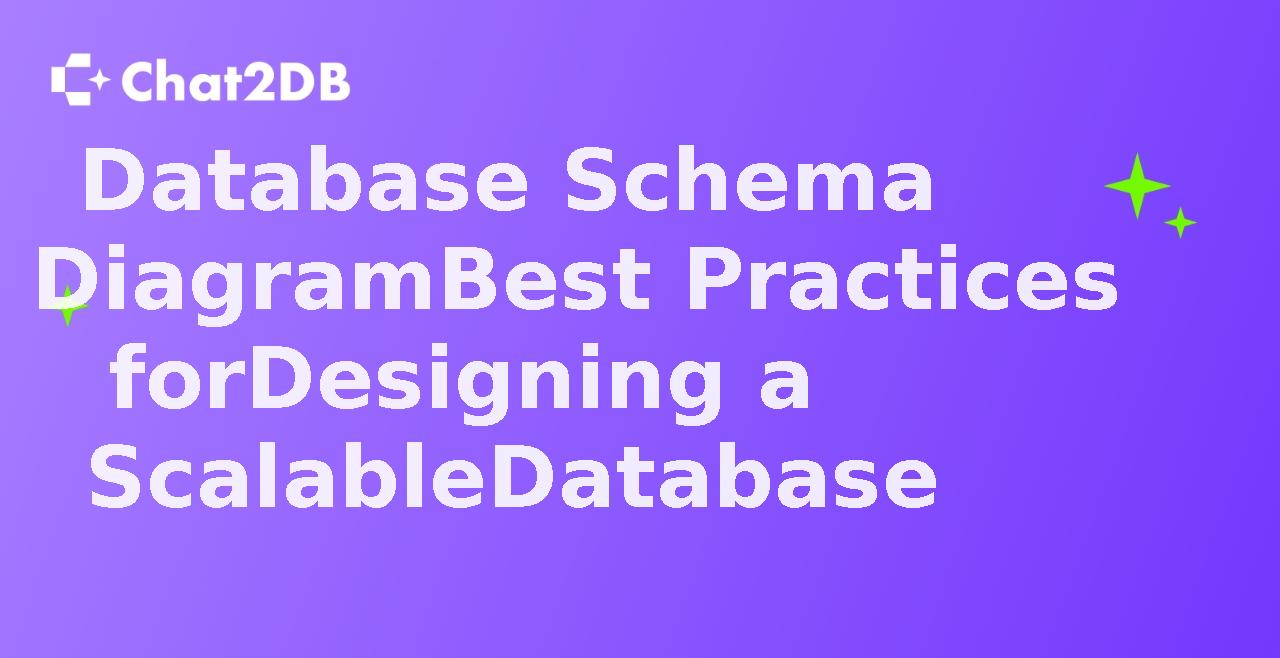
Database Schema Diagram Best Practices for Designing a Scalable Database
Exploring the best practices for designing a scalable database schema diagram and optimizing database performance.

Designing a Database Schema Diagram for a Relational Database
A comprehensive guide on how to design a database schema diagram for a relational database, covering key concepts, strategies, and practical examples.

Executing MySQL commands in the command line: A beginner's guide
A comprehensive guide on how to execute MySQL commands in the command line for beginners, covering basic to advanced operations.

Mastering MySQL Command Line Interface for Database Management
A comprehensive guide on how to effectively use MySQL command line interface for efficient database management.
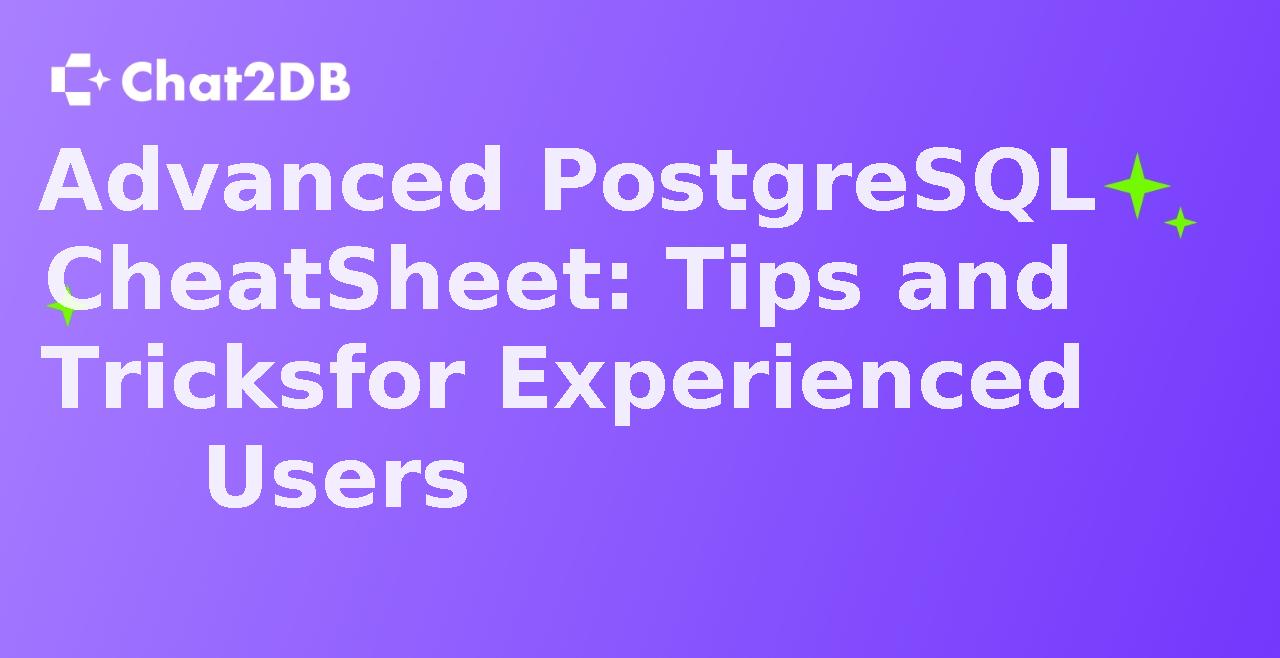
Advanced PostgreSQL Cheat Sheet: Tips and Tricks for Experienced Users
Exploring advanced PostgreSQL techniques and best practices for experienced users to optimize database performance.

Creating a PostgreSQL Cheat Sheet for Beginners
A comprehensive guide on creating a PostgreSQL cheat sheet for beginners, covering key concepts, strategies, practical examples, and tools.

Top PostgreSQL Clients for Efficient Database Management
Exploring the best PostgreSQL clients for efficient database management and optimization.

Choosing the Best PostgreSQL Client for Your Development Needs
A comprehensive guide to selecting the most suitable PostgreSQL client for various development requirements.

Comparing the Top MySQL Clients: Features, Performance, and Usability
An in-depth comparison of the top MySQL clients, analyzing their features, performance, and usability to help users make informed choices.
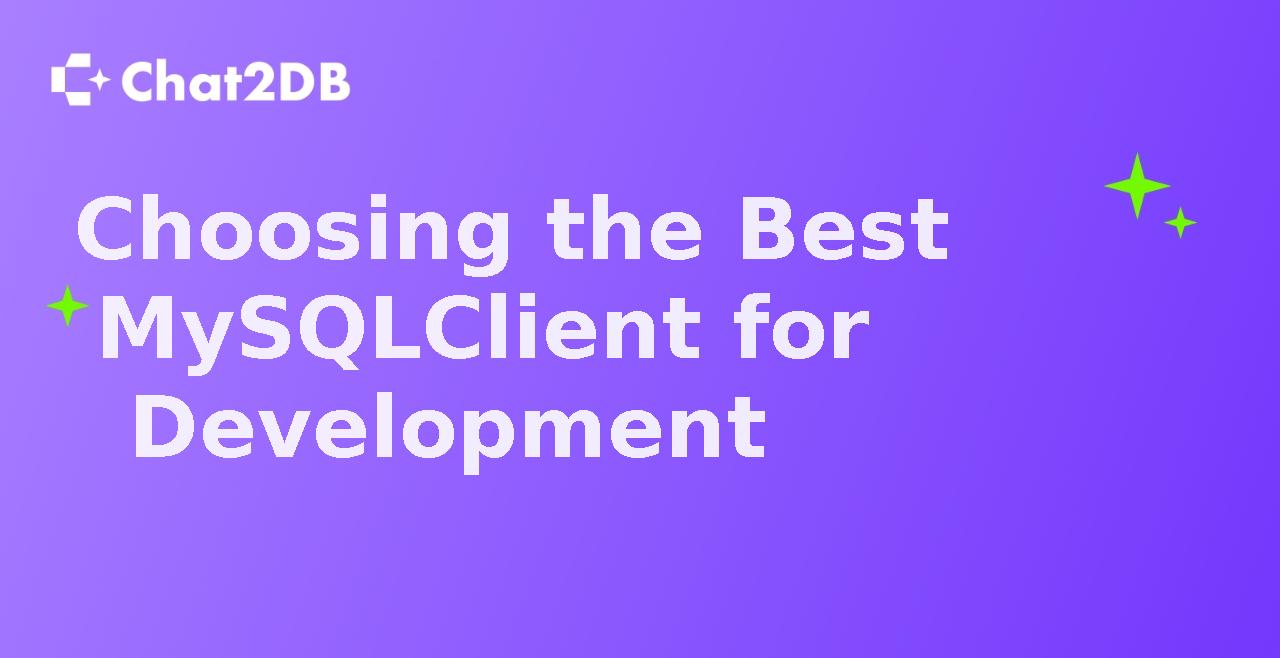
Choosing the Best MySQL Client for Development
A comprehensive guide on selecting the most suitable MySQL client for your development needs, exploring various options and their features.

Design a Scalable SQL Insert Strategy for Large Data Volumes
Exploring strategies to optimize SQL insert operations for handling large data volumes efficiently.
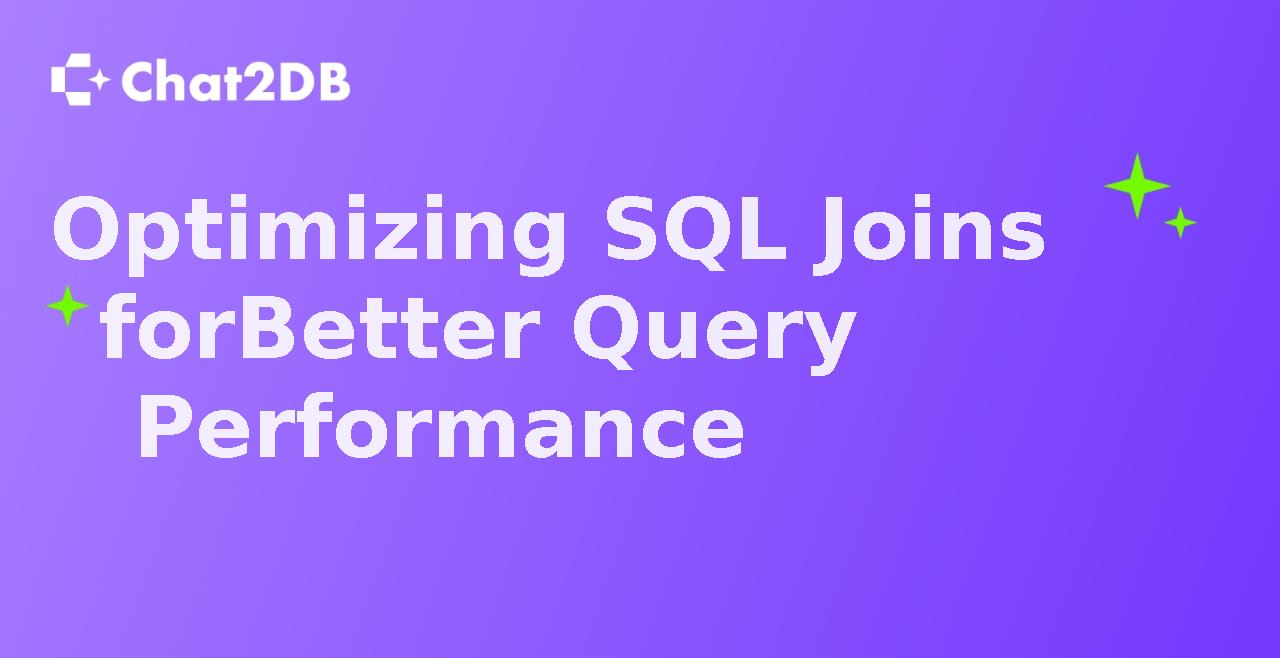
Optimizing SQL Joins for Better Query Performance
A comprehensive guide on optimizing SQL joins to enhance query performance and efficiency.
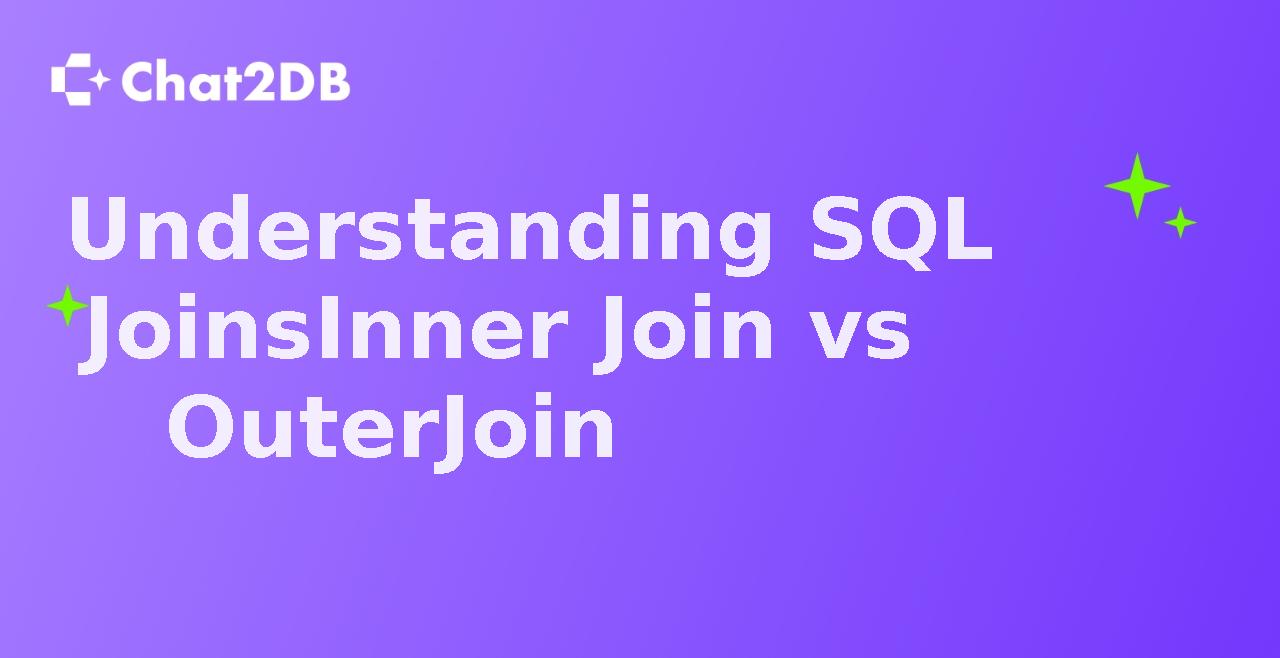
Understanding SQL Joins Inner Join vs Outer Join
A comprehensive guide to SQL joins, focusing on the differences between inner join and outer join, with practical examples and optimization strategies.

Efficient Update SQL Statements in Distributed Database Systems
Exploring strategies and best practices for implementing efficient update SQL statements in distributed database systems.

Best Practices for Optimizing Update SQL Performance in a High-Availability Environment
Exploring advanced techniques and strategies to optimize update SQL performance in high-availability environments.

Step-by-step Guide to Setting up a PostgreSQL Database with a GUI on a Mac
A comprehensive tutorial on setting up a PostgreSQL database with a GUI on a Mac, covering installation, configuration, and usage.
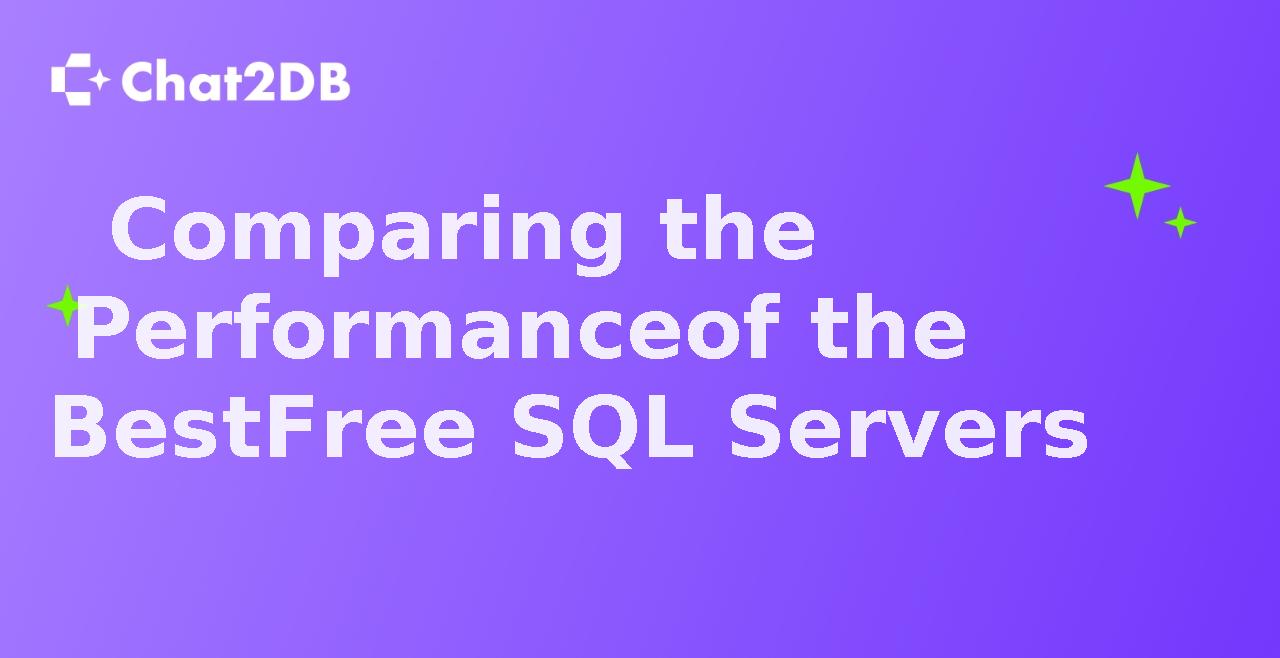
Comparing the Performance of the Best Free SQL Servers
An in-depth analysis of the performance of popular free SQL servers and their impact on database management.

Top 10 Best Free SQL Servers for Small Businesses
Exploring the top 10 free SQL servers suitable for small businesses, their features, and how they can benefit small enterprises.

MariaDB vs MySQL: Which Database is Better for Large-Scale Data Storage
An extensive comparison between MariaDB and MySQL focusing on their suitability for large-scale data storage, including performance, scalability, and features.

Comparing the performance of MariaDB and MySQL in a high-availability environment
An in-depth analysis of the performance differences between MariaDB and MySQL in a high-availability setup.

How to Use Free SQL Tools to Optimize Database Performance
Exploring the use of free SQL tools to enhance database performance and efficiency.

Top Free SQL Tools for Database Management and Development
Exploring the top free SQL tools available for database management and development, highlighting their features, benefits, and impact on the tech industry.

MySQL cmd How to optimize database performance with query optimization
An extensive guide on optimizing database performance through query optimization in MySQL using command line tools.

Mastering MySQL Command Line for Importing and Exporting Database Data
A comprehensive guide on how to effectively use MySQL command line tools for importing and exporting database data, with practical examples and best practices.

Executing MySQL CLI commands to optimize database performance
A comprehensive guide on optimizing database performance using MySQL CLI commands, covering key strategies, techniques, and practical examples.

How to use MySQL CLI commands to manage database users and permissions
A comprehensive guide on utilizing MySQL CLI commands to effectively manage database users and permissions, enhancing security and access control.

TextSQL Advancements in Neural Networks for Query Generation and Execution
Exploring the latest advancements in TextSQL using neural networks for query generation and execution, and its impact on the current technology landscape.

TextSQL Exploring the Challenges and Opportunities in Natural Language to SQL Translation
An in-depth analysis of the challenges and opportunities in natural language to SQL translation, focusing on TextSQL technology.

TextSQL Building a Robust Natural Language Interface for Database Querying
Exploring the development of a robust natural language interface for querying databases using TextSQL and its impact on the current technological landscape.

TextSQL A Comprehensive Study on Natural Language Understanding for SQL Query Generation
An extensive analysis of TextSQL, a tool for natural language understanding in SQL query generation, and its impact on the technological landscape.

TextSQL Bridging the Gap between Natural Language and Structured Query Language
Exploring the integration of natural language processing with SQL to enhance data querying and analysis.

Optimizing TextSQL Performance with Deep Learning Techniques
A comprehensive guide on optimizing TextSQL performance using deep learning techniques, exploring strategies, technologies, and practical examples.

Design a TextSQL System for Automatic Generation of SQL Queries from Text Input
Exploring the development of a TextSQL system that automates the generation of SQL queries from natural language text input.

Utilizing TextSQL Technology for Natural Language to SQL Conversion
Exploring the integration of TextSQL technology to convert natural language queries into SQL queries and its impact on database management.
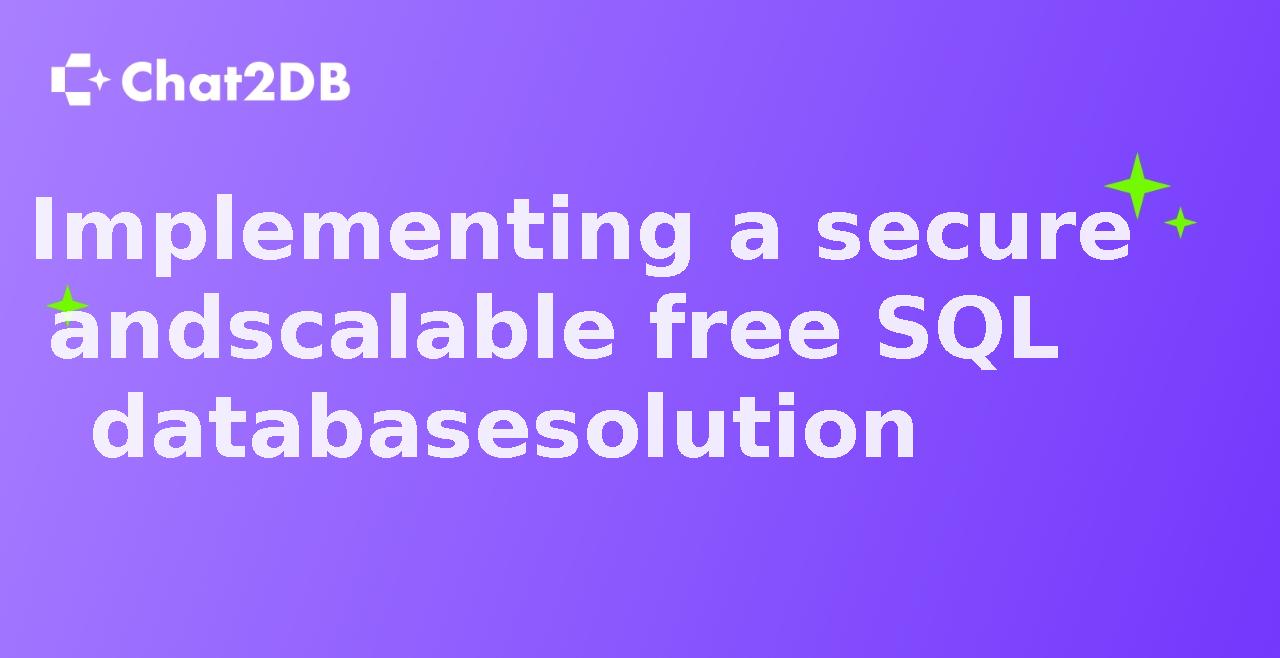
Implementing a secure and scalable free SQL database solution
Exploring the implementation of a secure and scalable free SQL database solution, highlighting key strategies, technologies, and practical examples.

Choosing the Best Free SQL Database for Your Project
A comprehensive guide on selecting the most suitable free SQL database for your project needs.

Security features comparison between MongoDB and PostgreSQL
An in-depth analysis of the security features in MongoDB and PostgreSQL, comparing their strengths and weaknesses.

Optimizing Database Performance with MySQL Query Tuning
A comprehensive guide on optimizing database performance through query tuning in MySQL.

How to Use MySQL CMD to Import and Export Data Efficiently
A comprehensive guide on leveraging MySQL command line tools for efficient data import and export operations.

Advanced SQL Interview Questions Test Your SQL Knowledge
Exploring advanced SQL interview questions to test and enhance your SQL knowledge, covering a wide range of topics and scenarios.

Top SQL Interview Questions and Answers for Beginners
A comprehensive guide to SQL interview questions and answers for beginners, covering key concepts, strategies, and practical examples.

SQL Cheat Sheet Essential SQL Commands for Data Analysis
A comprehensive guide to essential SQL commands for data analysis, covering key concepts, strategies, practical examples, and tools.
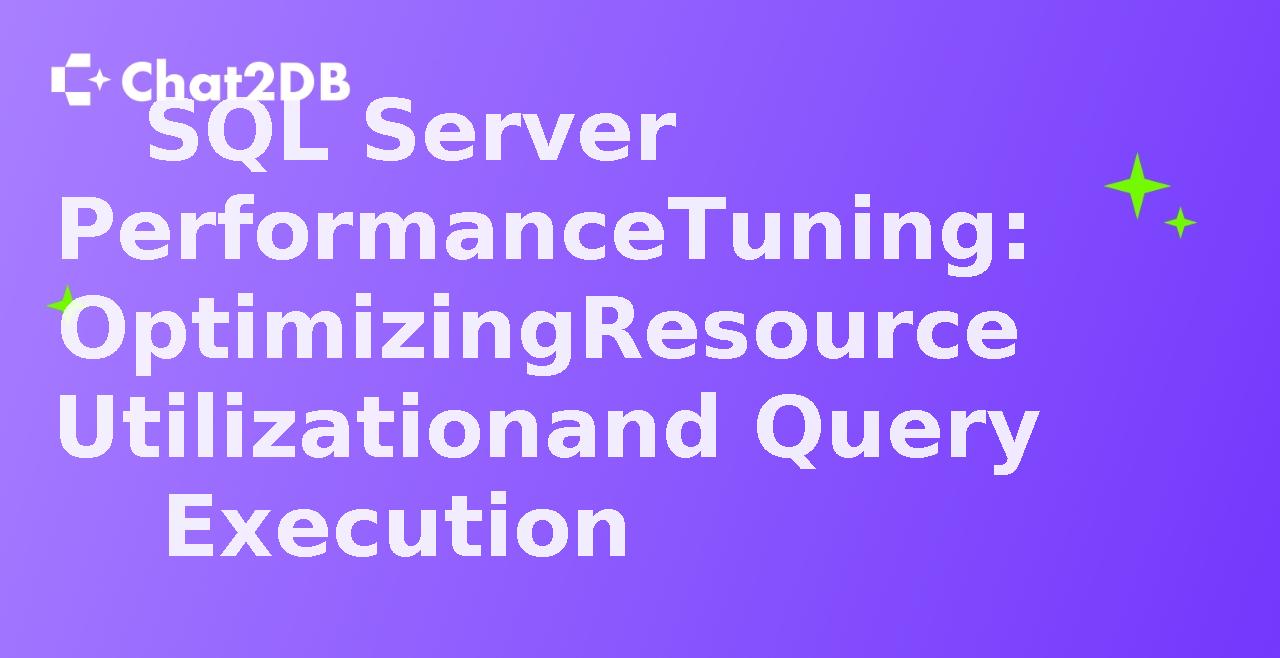
SQL Server Performance Tuning: Optimizing Resource Utilization and Query Execution
A comprehensive guide on optimizing SQL Server performance by maximizing resource utilization and improving query execution efficiency.
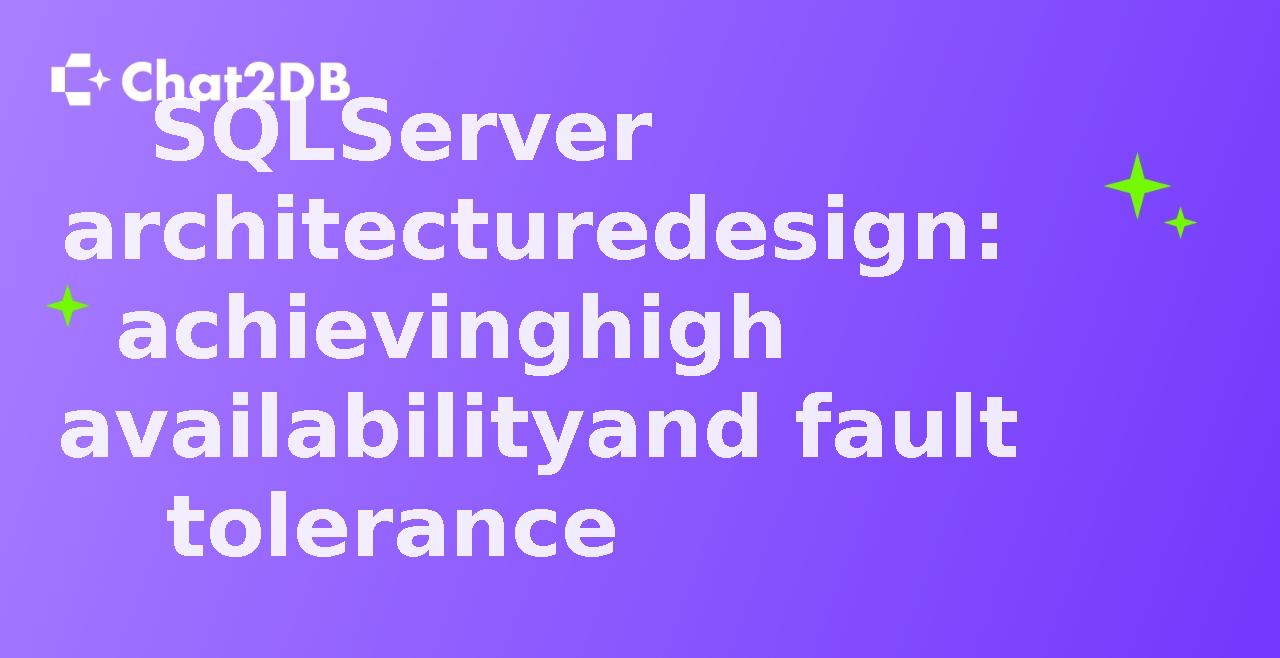
SQLServer architecture design: achieving high availability and fault tolerance
Exploring the architecture design considerations for achieving high availability and fault tolerance in SQL Server environments.

Understanding SQLServer Transaction Management: ACID Properties and Isolation Levels
A comprehensive guide to SQL Server transaction management, covering ACID properties, isolation levels, and best practices.
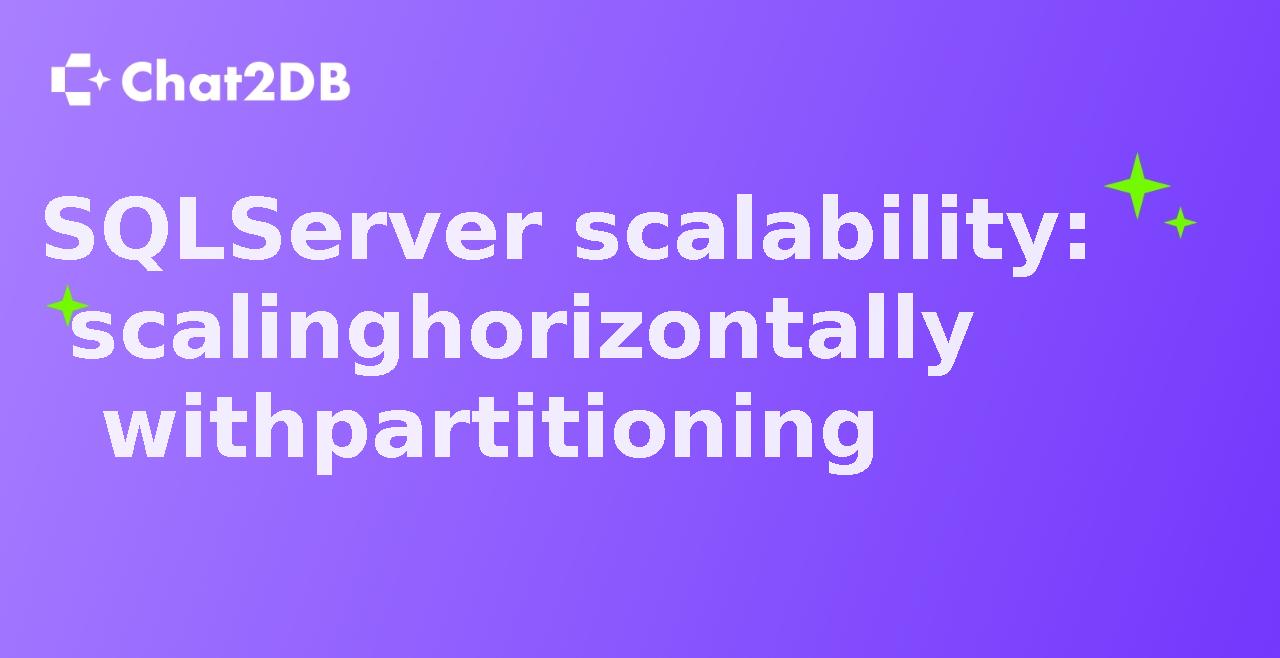
SQLServer scalability: scaling horizontally with partitioning
An in-depth exploration of scaling SQLServer horizontally using partitioning techniques for improved scalability and performance.

SQL Server Query Optimization: Improving Performance with Efficient Queries
An in-depth guide on optimizing SQL Server queries for improved performance and efficiency.

Implementing SQL Server Replication for Data Distribution and Availability
A comprehensive guide on implementing SQL Server replication for efficient data distribution and ensuring high availability.

SQL Server Security Best Practices: Protecting Sensitive Data
Comprehensive guide on best practices for securing sensitive data in SQL Server databases.

Design a High Availability Architecture for SQLServer Database
Exploring the design principles and strategies for creating a high availability architecture for SQLServer database to ensure continuous operation and data integrity.

Optimizing SQL Server Performance with Advanced Indexing Strategies
A comprehensive guide on leveraging indexing strategies to enhance SQL Server performance.

Best Practices for Using AWS Database Migration Service to Migrate Databases to the Cloud
A comprehensive guide on leveraging AWS Database Migration Service for seamless database migration to the cloud, with best practices and practical examples.

Migrating On-Premises Databases to AWS with AWS Database Migration Service
A comprehensive guide on how to migrate on-premises databases to AWS using AWS Database Migration Service, including key strategies, practical examples, and best practices.

Database Migration Challenges: Dealing with Large Datasets and Complex Relationships
Exploring the challenges and strategies for database migration when dealing with large datasets and complex relationships, with a focus on practical solutions and best practices.

Database Schema Migration: Strategies for Handling Schema Changes in Production
Exploring various strategies and best practices for managing database schema migration in a production environment.
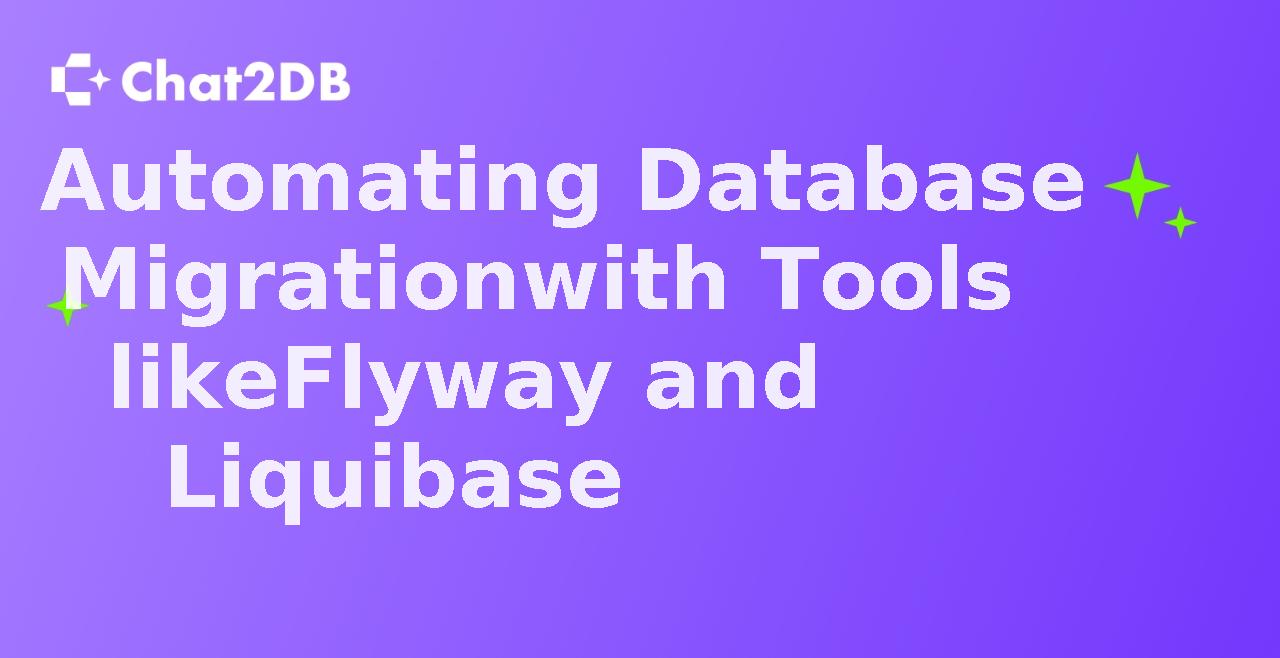
Automating Database Migration with Tools like Flyway and Liquibase
Exploring the automation of database migration using tools like Flyway and Liquibase, and its impact on modern software development.

Database Migration Best Practices: Ensuring Data Integrity During the Migration Process
A comprehensive guide to database migration best practices, focusing on maintaining data integrity throughout the migration process.
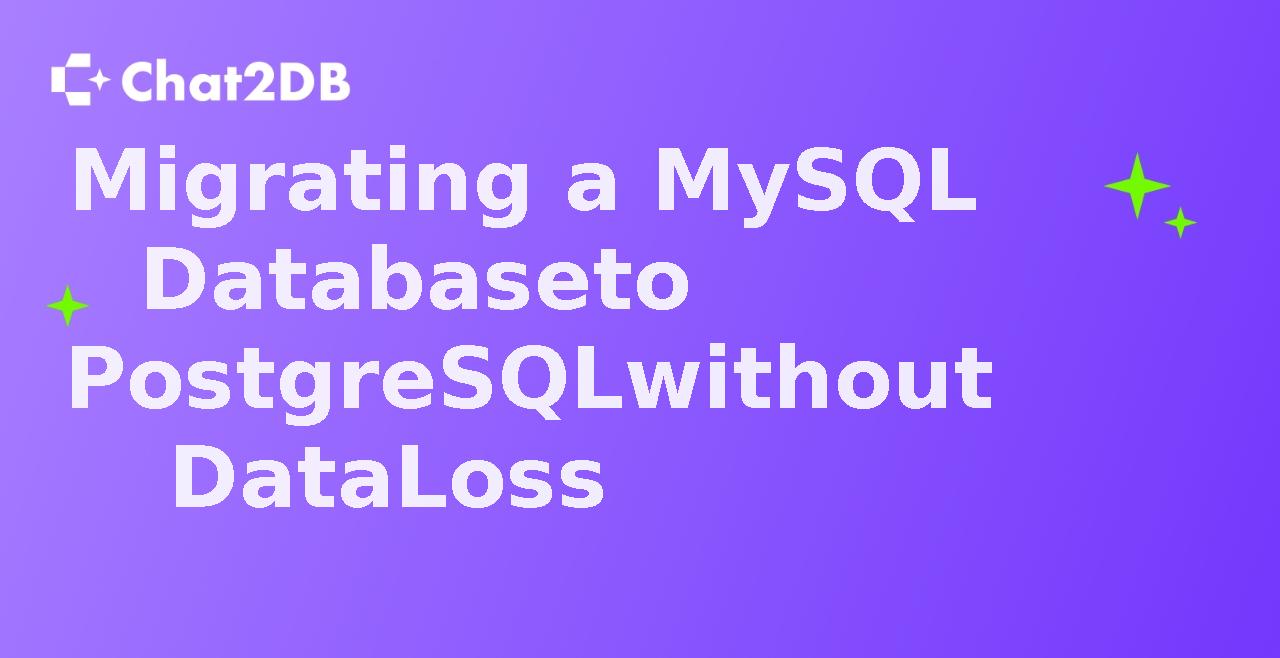
Migrating a MySQL Database to PostgreSQL without Data Loss
A comprehensive guide on how to migrate a MySQL database to PostgreSQL without data loss, covering key strategies, techniques, and practical examples.

LDAP authentication vs. OAuth: choosing the right authentication method
An in-depth comparison of LDAP authentication and OAuth, exploring their differences, use cases, and best practices for choosing the right authentication method.

Integrating LDAP authentication with Active Directory for centralized user management
A comprehensive guide on integrating LDAP authentication with Active Directory for centralized user management, covering key concepts, strategies, practical examples, and tools.

Implementing LDAP Authentication in a Java Web Application
A comprehensive guide on how to implement LDAP authentication in a Java web application, covering key concepts, strategies, practical examples, and tools.
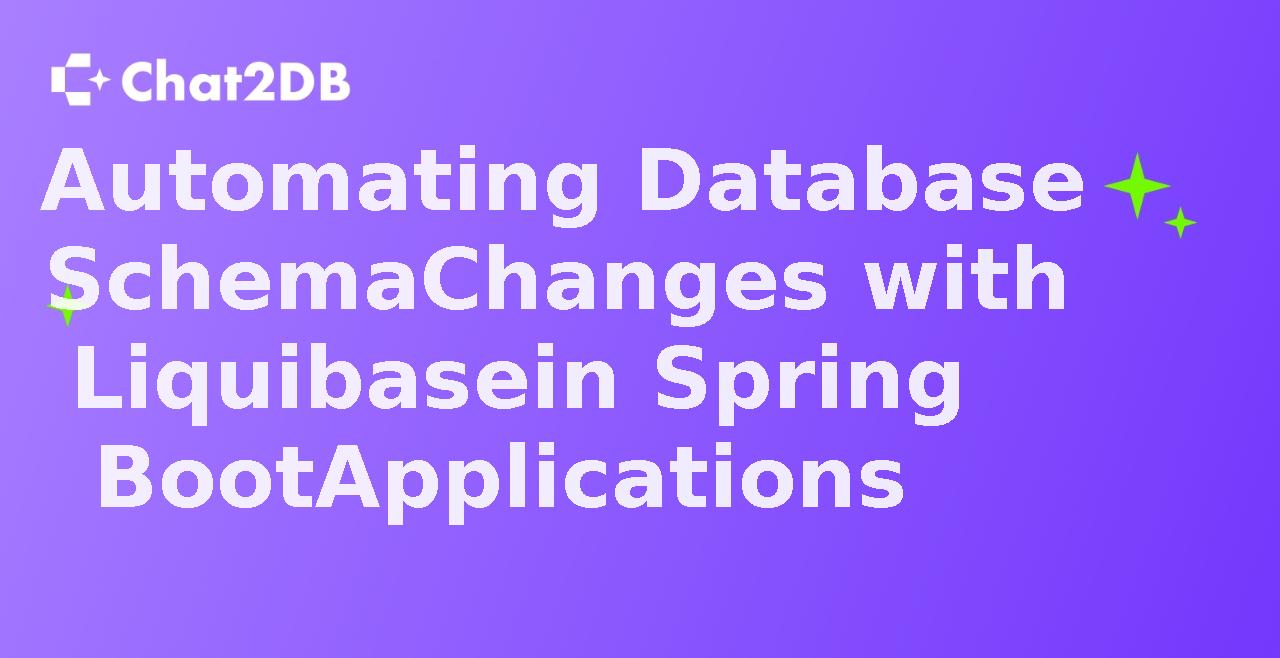
Automating Database Schema Changes with Liquibase in Spring Boot Applications
A comprehensive guide on automating database schema changes using Liquibase in Spring Boot applications, highlighting the importance and benefits of this approach.

Integrating Liquibase with Spring Boot for Database Version Control
A comprehensive guide on integrating Liquibase with Spring Boot to manage database version control effectively.

Liquibase vs Flyway: Which tool is better for database version control?
A comprehensive comparison of Liquibase and Flyway for database version control, exploring their features, advantages, and best practices.

Comparing the schema evolution capabilities of Liquibase and Flyway
An in-depth comparison of Liquibase and Flyway for managing database schema evolution, highlighting their features, advantages, and best practices.
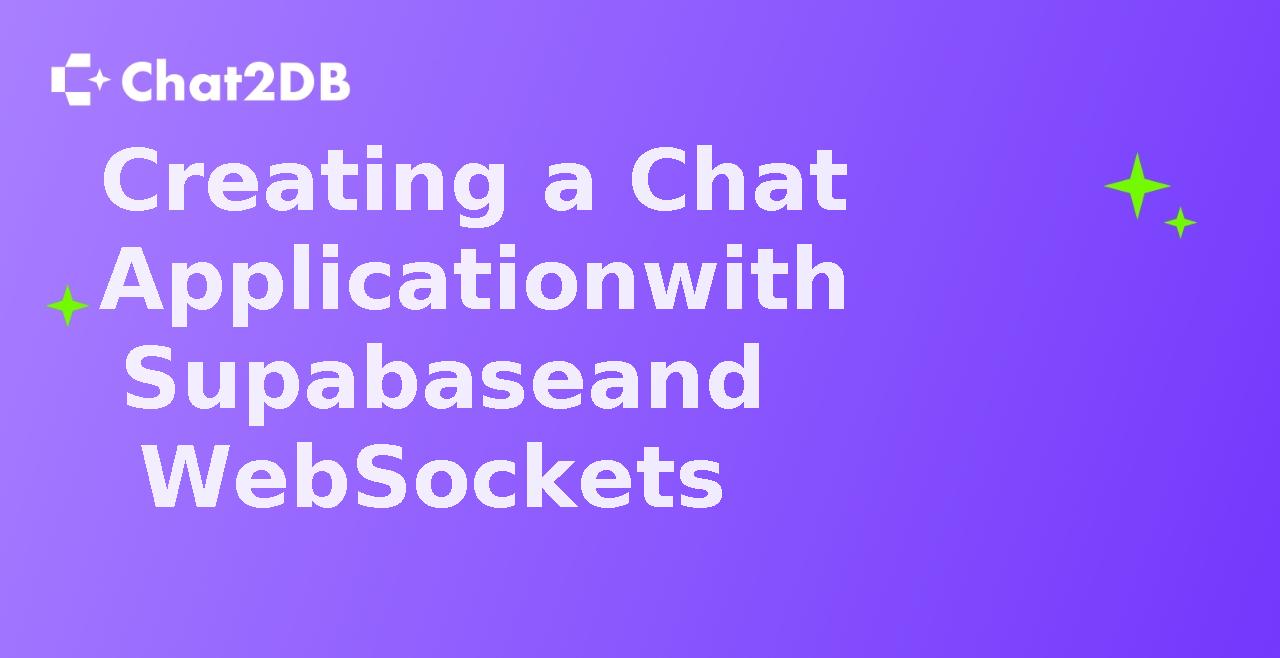
Creating a Chat Application with Supabase and WebSockets
A comprehensive guide on building a real-time chat application using Supabase and WebSockets, exploring the integration, features, and benefits of these technologies.

MySQL Performance Tuning: Optimizing Server Configuration and Resource Utilization for Better Performance
A comprehensive guide to MySQL performance tuning, focusing on optimizing server configuration and resource utilization for improved database performance.

Scaling MySQL databases: horizontal and vertical scaling techniques for handling increased workload
An in-depth guide on scaling MySQL databases using horizontal and vertical scaling techniques to manage increased workloads efficiently.

MySQL Database Design: Normalization and Denormalization Strategies for Efficient Data Storage
An in-depth analysis of MySQL database design focusing on normalization and denormalization strategies for efficient data storage.
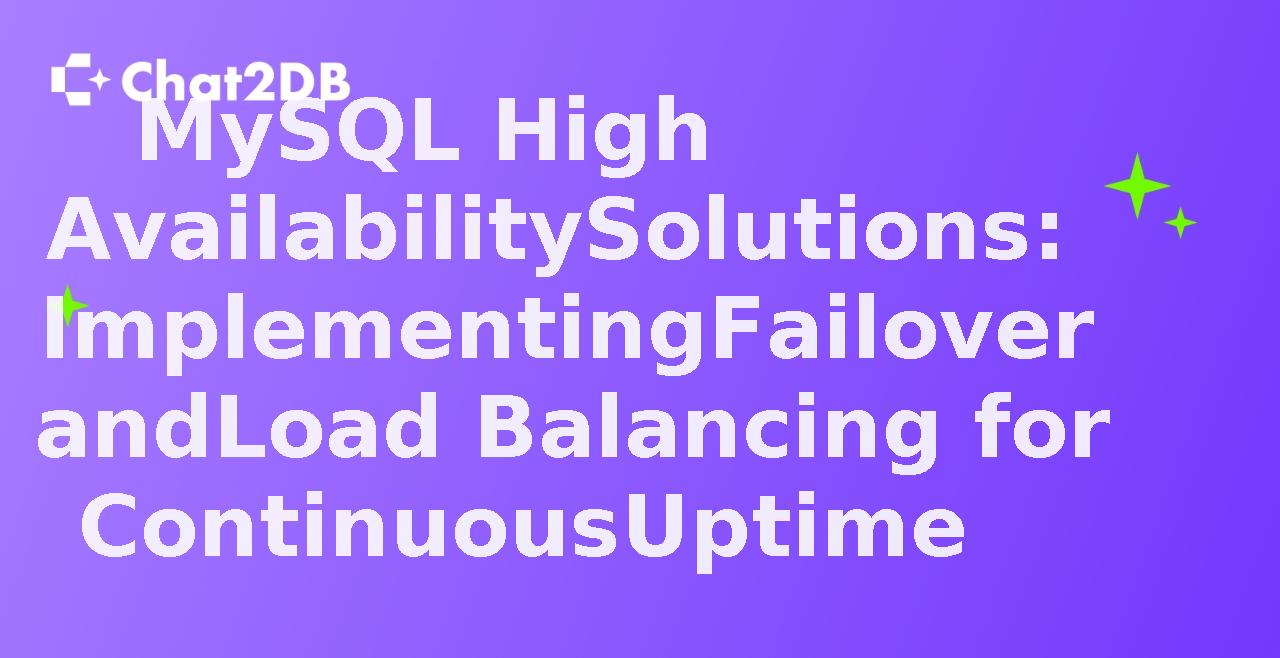
MySQL High Availability Solutions: Implementing Failover and Load Balancing for Continuous Uptime
A comprehensive guide to implementing failover and load balancing in MySQL for high availability, ensuring continuous uptime for critical applications.

MySQL Query Optimization: Improving Query Performance Through Indexing and Query Tuning
A comprehensive guide on optimizing MySQL queries for improved performance through indexing and query tuning.

MySQL Security Best Practices: Securing Your Database Against Unauthorized Access
Comprehensive guide on securing MySQL databases against unauthorized access with best practices and techniques.
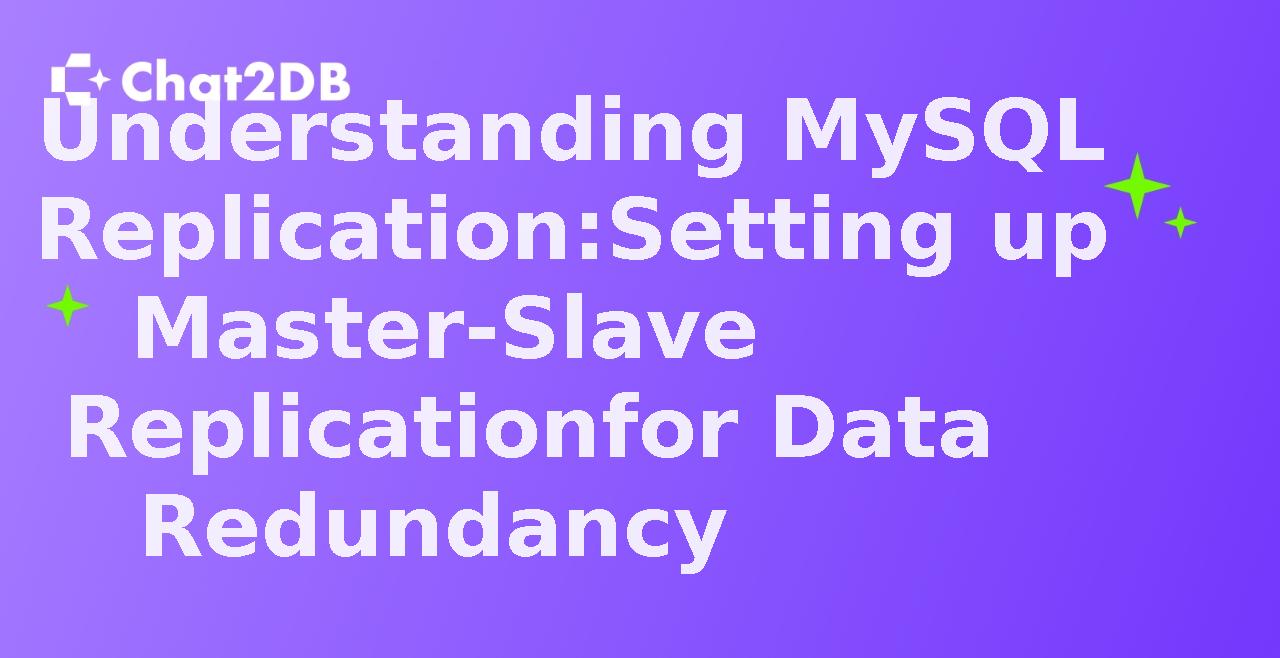
Understanding MySQL Replication: Setting up Master-Slave Replication for Data Redundancy
A comprehensive guide to MySQL replication, focusing on setting up master-slave replication for data redundancy and high availability.

MySQL Backup and Recovery: Best Practices for Data Protection and Disaster Recovery
Comprehensive guide on MySQL backup and recovery strategies, focusing on data protection and disaster recovery.
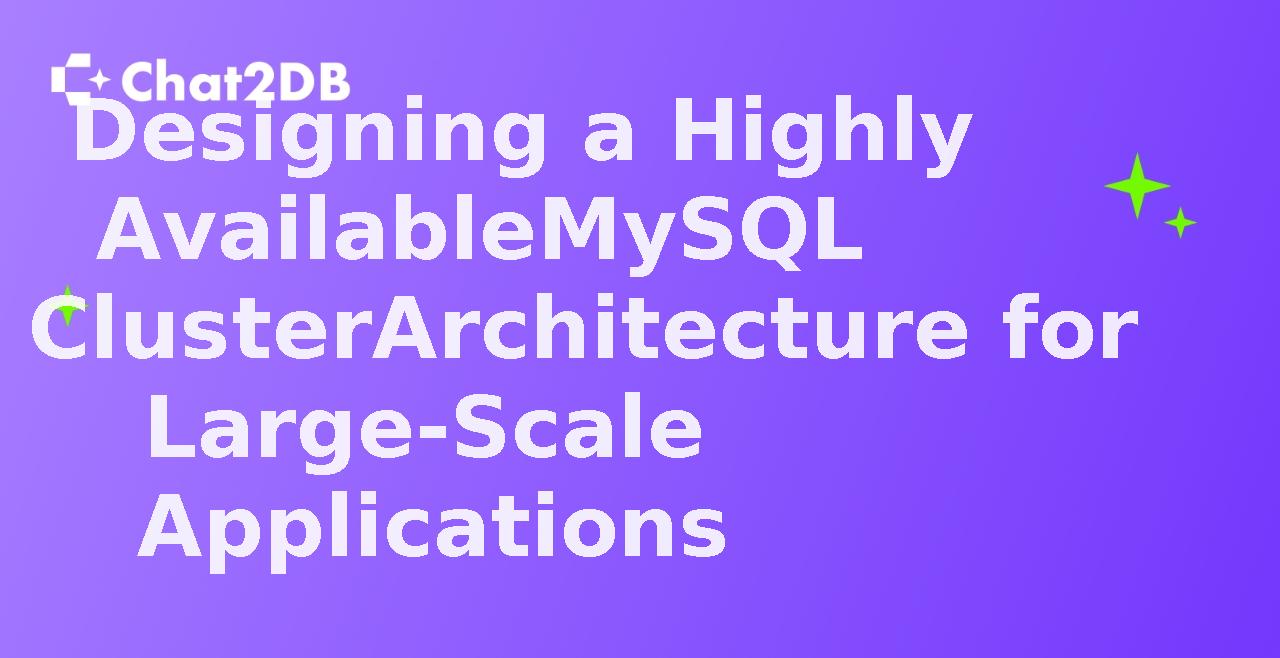
Designing a Highly Available MySQL Cluster Architecture for Large-Scale Applications
Exploring the intricacies of designing a robust and scalable MySQL cluster architecture to ensure high availability for large-scale applications.

Optimizing MySQL Performance with Indexing and Query Optimization Techniques
A comprehensive guide on improving MySQL performance through indexing and query optimization techniques.

Advanced Query Optimization Techniques with pg_stat_statements in PostgreSQL
Exploring advanced query optimization techniques using pg_stat_statements in PostgreSQL to improve database performance.

Utilizing pg_stat_statements for query tuning in PostgreSQL
A comprehensive guide on leveraging pg_stat_statements for query tuning in PostgreSQL databases.
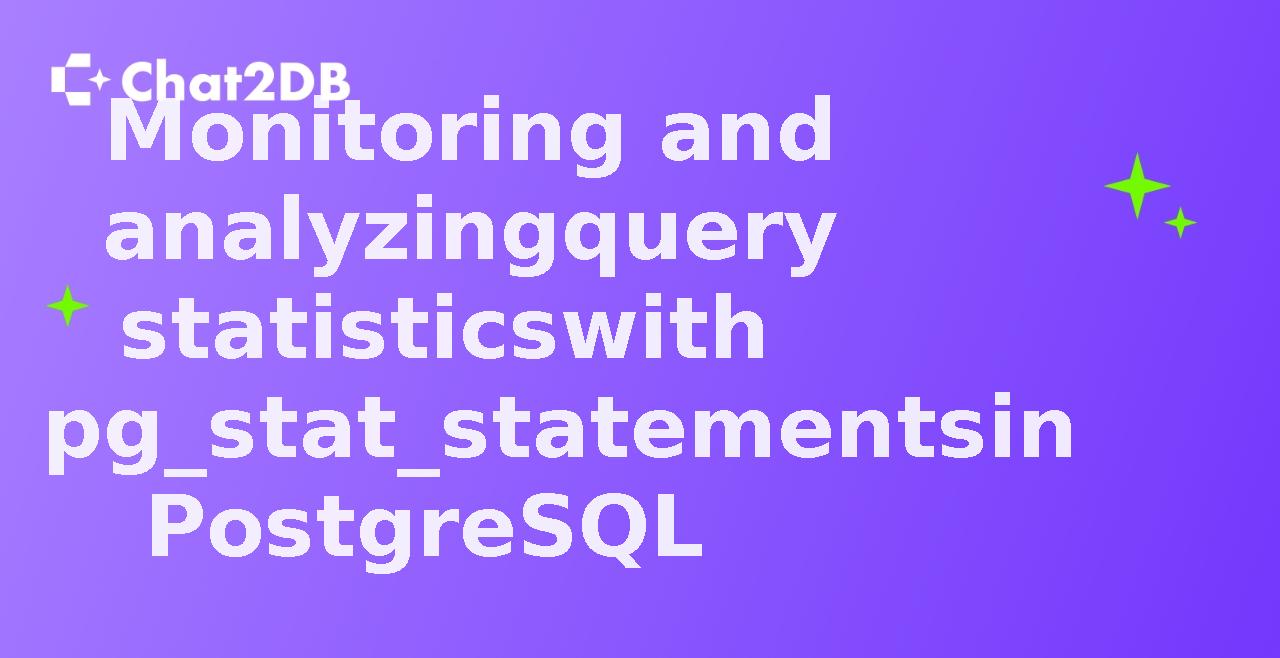
Monitoring and analyzing query statistics with pg_stat_statements in PostgreSQL
A comprehensive guide on how to monitor and analyze query statistics using pg_stat_statements in PostgreSQL, highlighting its importance and impact on database performance optimization.

Understanding query patterns with pg_stat_statements in PostgreSQL
An in-depth exploration of query patterns analysis using pg_stat_statements in PostgreSQL and its impact on database performance optimization.

Improving Database Performance with pg_stat_statements in PostgreSQL
A comprehensive guide on utilizing pg_stat_statements in PostgreSQL to enhance database performance.

Using pg_stat_statements to identify and optimize slow queries in PostgreSQL
An in-depth guide on leveraging pg_stat_statements to identify and optimize slow queries in PostgreSQL databases.
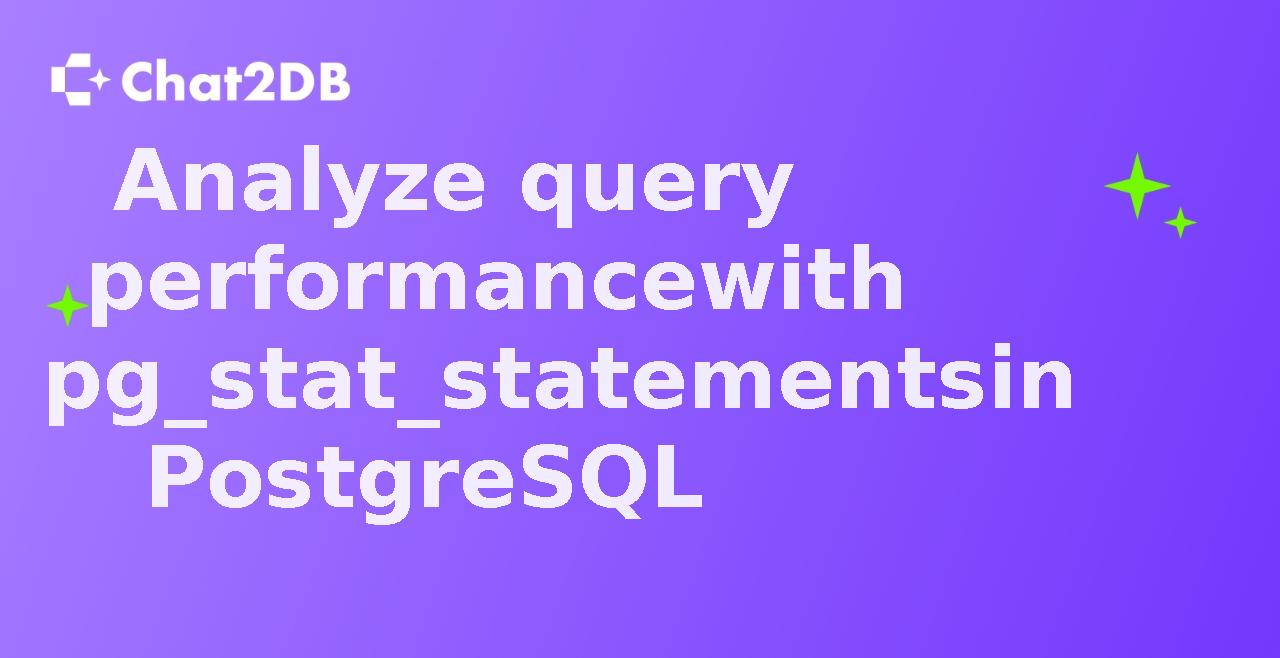
Analyze query performance with pg_stat_statements in PostgreSQL
A comprehensive guide on how to analyze query performance using pg_stat_statements in PostgreSQL, including key concepts, strategies, practical examples, and tools.

Optimizing PostgreSQL Performance with pg_stat_statements
A comprehensive guide on how to optimize PostgreSQL performance using pg_stat_statements, including key strategies, practical examples, and best practices.
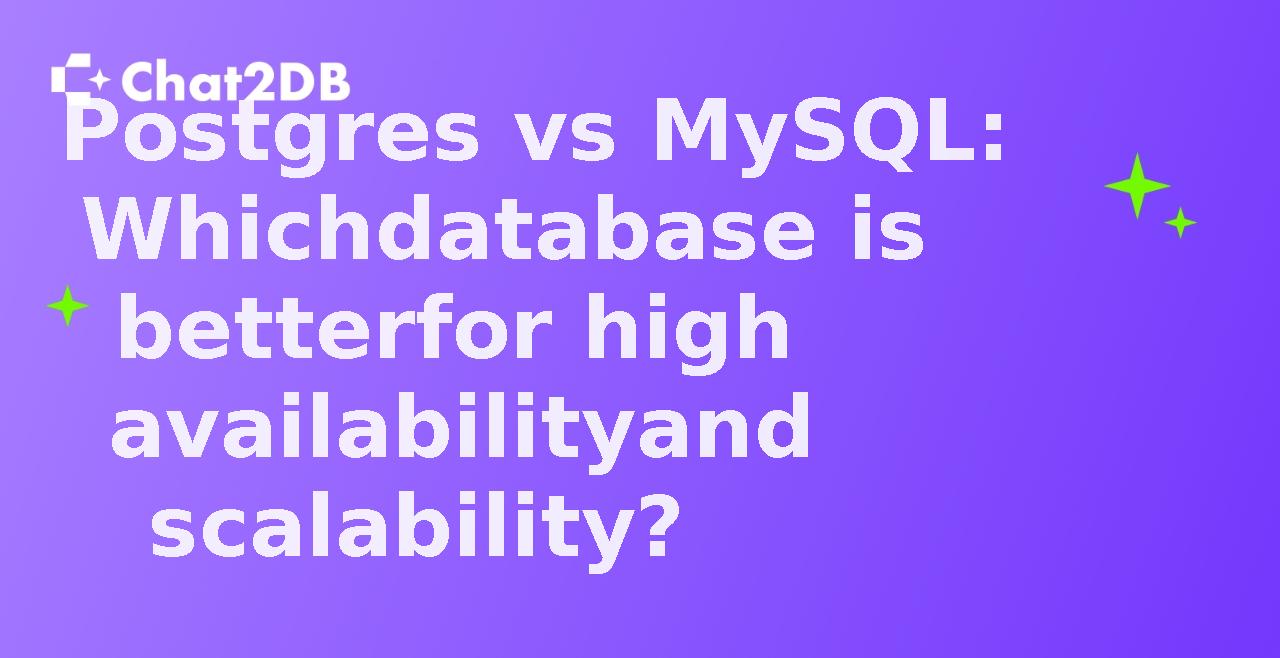
Postgres vs MySQL: Which database is better for high availability and scalability?
An in-depth comparison of Postgres and MySQL focusing on high availability and scalability, with practical examples and best practices.
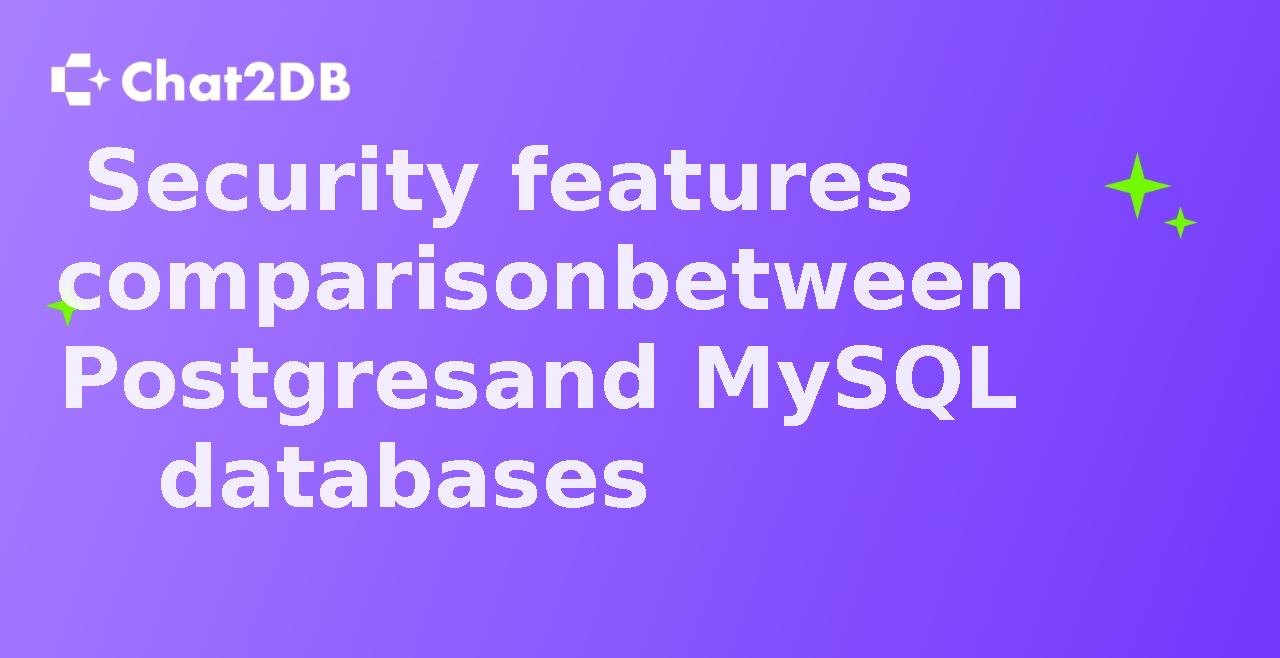
Security features comparison between Postgres and MySQL databases
An in-depth analysis of the security features in Postgres and MySQL databases, highlighting their similarities and differences.

Comparing the performance of Postgres and MySQL in handling large datasets
An in-depth analysis of the performance differences between Postgres and MySQL when dealing with large datasets, exploring optimization strategies and best practices.

Tips for optimizing your workflow with the best free MySQL client
A comprehensive guide on optimizing your workflow with the best free MySQL client, exploring key strategies, techniques, and practical examples.

Comparing the top free MySQL clients: features, performance, and usability
An extensive comparison of the top free MySQL clients focusing on their features, performance, and usability to help users make informed choices.
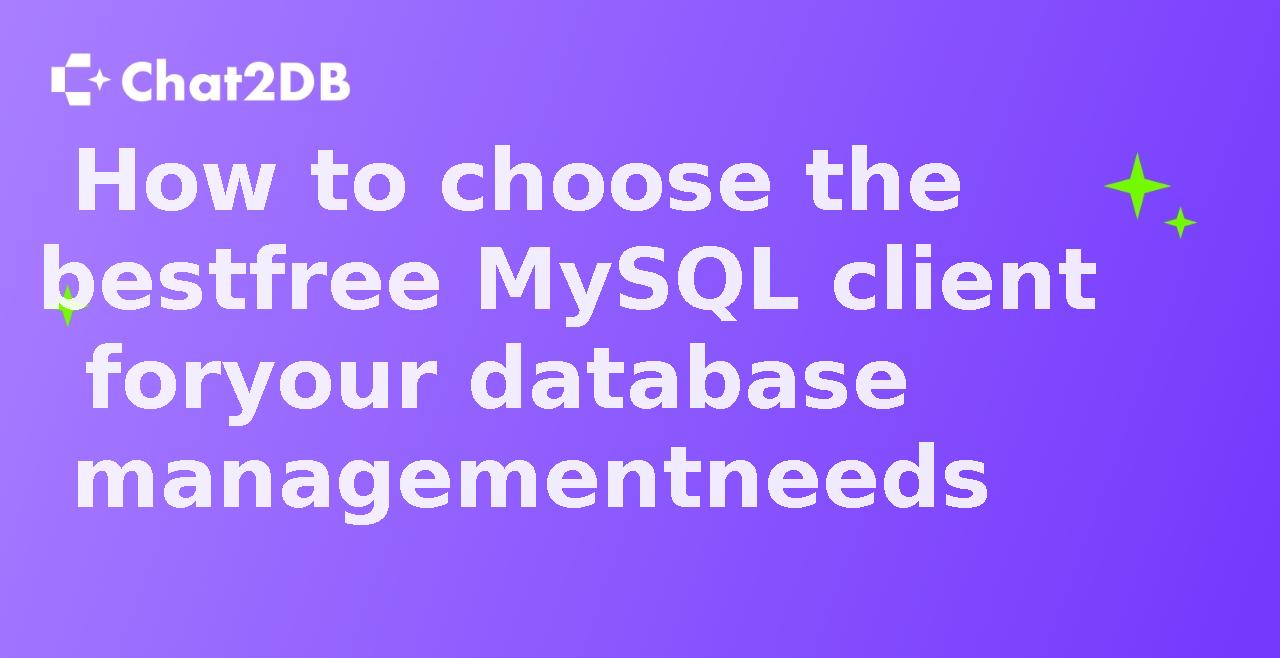
How to choose the best free MySQL client for your database management needs
A comprehensive guide on selecting the most suitable free MySQL client for efficient database management.

Analyzing the Performance Differences Between PlanetScale and Neon Databases
A comprehensive analysis of the performance disparities between PlanetScale and Neon databases, exploring their features, optimizations, and real-world applications.

Comparing the scalability of PlanetScale and Neon databases
An in-depth comparison of the scalability features of PlanetScale and Neon databases, exploring their performance, architecture, and use cases.

Oracle Database Client: Configuring TNS names for easy database connection
A comprehensive guide on configuring TNS names in Oracle Database Client for seamless database connections.
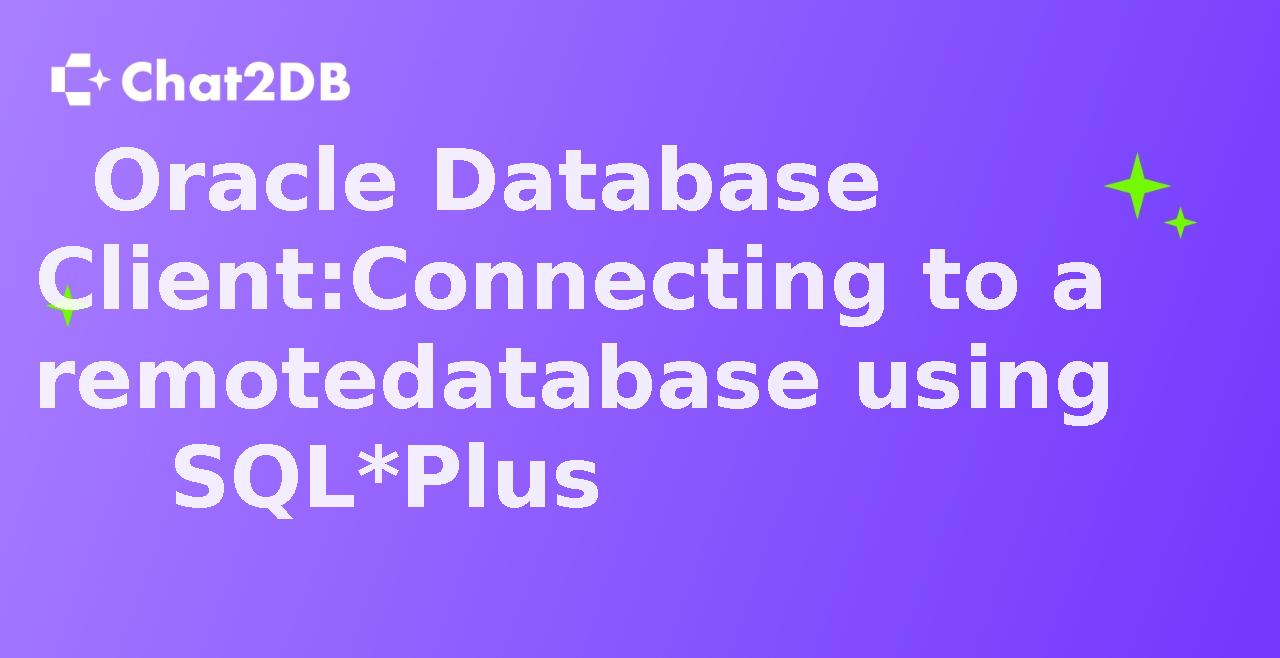
Oracle Database Client: Connecting to a remote database using SQL*Plus
A comprehensive guide on how to connect to a remote Oracle database using SQL*Plus as an Oracle Database Client.

How to Install and Configure Oracle Database Client on Windows
A comprehensive guide on installing and configuring Oracle Database Client on Windows, covering all necessary steps and configurations.

Step-by-step guide to create a new database in PostgreSQL with psql
A comprehensive tutorial on creating a new database in PostgreSQL using psql command-line tool, covering the step-by-step process and practical examples.

Mastering PostgreSQL Database Creation with psql Command Line
A comprehensive guide on creating databases in PostgreSQL using the psql command line interface, covering key concepts, strategies, practical examples, and tools.

Creating a table in PostgreSQL with proper data types and constraints
A comprehensive guide on creating tables in PostgreSQL with appropriate data types and constraints to ensure data integrity and efficiency.
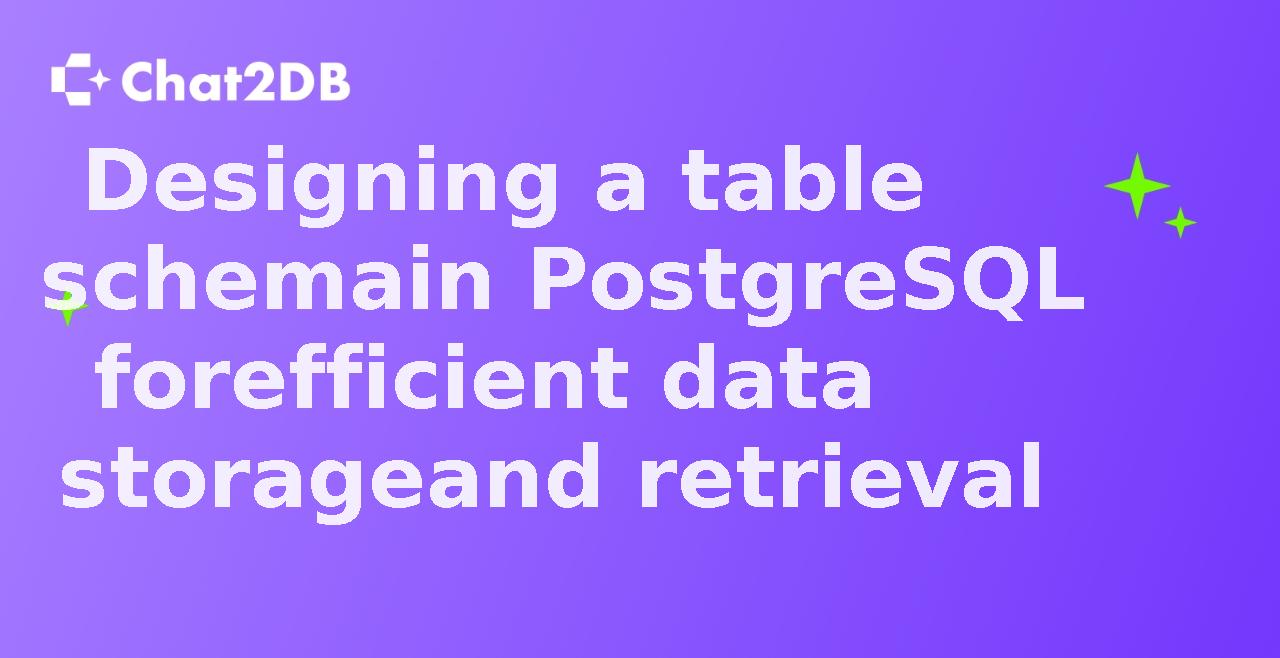
Designing a table schema in PostgreSQL for efficient data storage and retrieval
Exploring the best practices and strategies for designing a table schema in PostgreSQL to optimize data storage and retrieval.

How to create a table in PostgreSQL using psql command line interface
A comprehensive guide on creating tables in PostgreSQL using the psql command line interface, covering the essential steps, syntax, and best practices.

LDAPSearch: Troubleshooting common issues and errors in LDAP directory queries
A comprehensive guide to troubleshooting common issues and errors encountered in LDAP directory queries, providing detailed insights and solutions for LDAPSearch.

LDAPSearch: Best practices for optimizing search performance in LDAP directories
An extensive guide on optimizing search performance in LDAP directories, covering core concepts, key strategies, practical examples, and tools.

LDAPSearch: Implementing secure authentication and authorization using LDAP
A comprehensive guide on implementing secure authentication and authorization using LDAP with detailed examples and best practices.
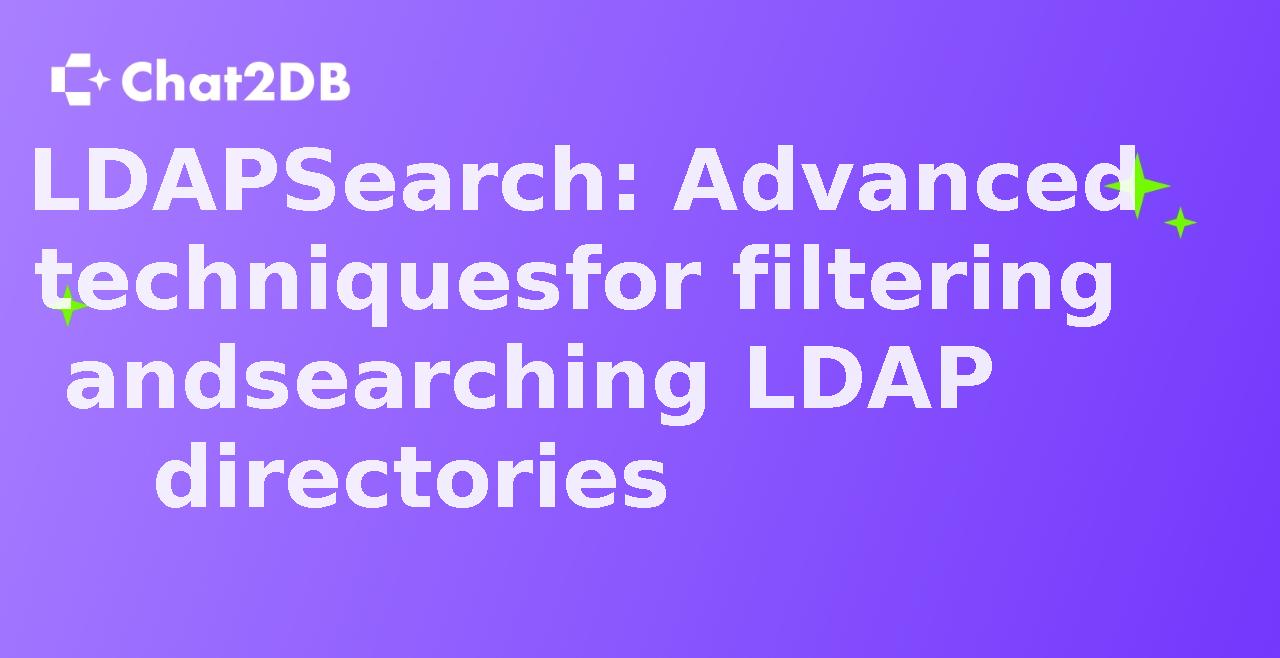
LDAPSearch: Advanced techniques for filtering and searching LDAP directories
An in-depth exploration of advanced techniques for filtering and searching LDAP directories, highlighting key strategies, technologies, and practical examples.

How to Use LDAPSearch to Query Active Directory for User Information
A comprehensive guide on utilizing LDAPSearch to retrieve user information from Active Directory, including practical examples and best practices.

LDAP vs Active Directory: a comparative analysis of directory services
An in-depth comparison between LDAP and Active Directory, exploring their features, differences, and use cases.

Understanding LDAP in Distributed Systems
Exploring the concept of LDAP (Lightweight Directory Access Protocol) and its role in distributed systems.

Performing Advanced Queries Using the MySQL Client on Ubuntu
A comprehensive guide on how to execute advanced queries using the MySQL client on Ubuntu, covering various techniques and best practices.

Managing MySQL databases with the MySQL client on Ubuntu
A comprehensive guide on managing MySQL databases using the MySQL client on Ubuntu, covering installation, configuration, and common operations.

How to Install and Configure MySQL Client on Ubuntu
A comprehensive guide on installing and configuring MySQL client on Ubuntu, covering all necessary steps and configurations.

Top 10 MySQL Clients for Efficient Database Management
Exploring the top MySQL clients that can enhance database management efficiency and productivity.

Securing data transmission with SQL Server Native Client encryption
Exploring the importance of securing data transmission using SQL Server Native Client encryption and its impact on data security.

Best Practices for Optimizing SQL Server Native Client Performance
Exploring advanced techniques to optimize the performance of SQL Server Native Client for enhanced database operations.

Optimizing SQL Server Native Client for High Availability and Performance
A comprehensive guide on configuring SQL Server Native Client for high availability and performance optimization.
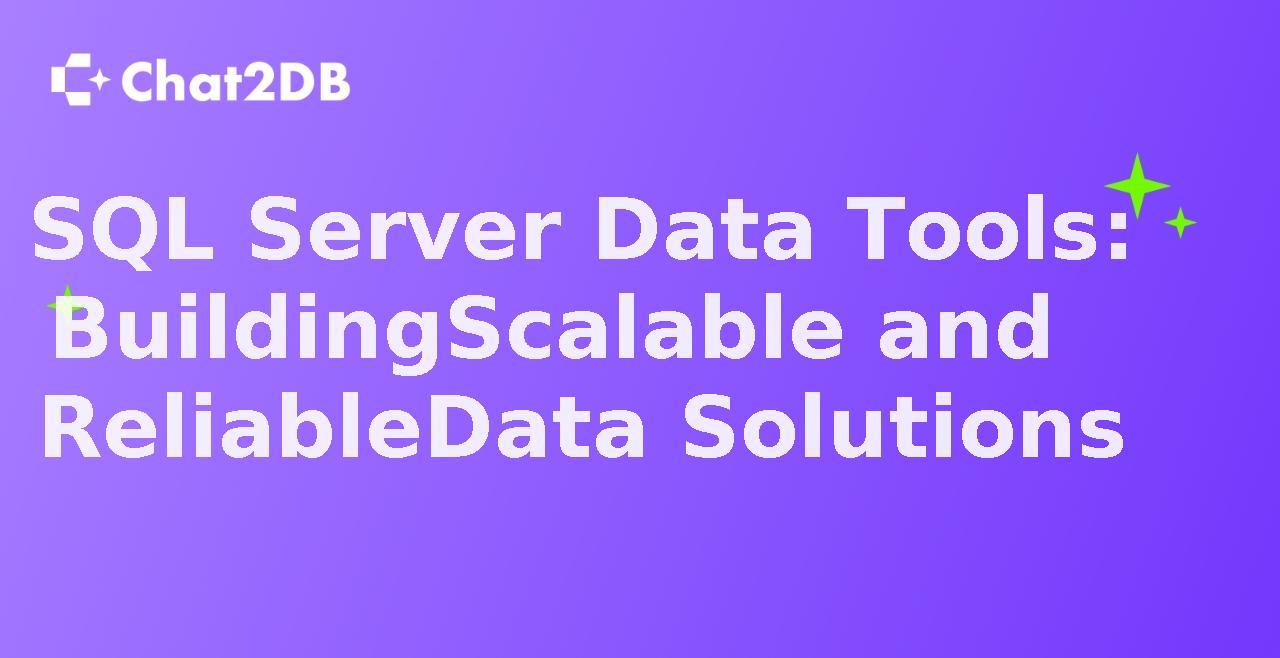
SQL Server Data Tools: Building Scalable and Reliable Data Solutions
An in-depth guide on using SQL Server Data Tools to build scalable and reliable data solutions, covering key concepts, strategies, practical examples, and tools.

SQL Server Data Tools: Performance Tuning and Optimization Techniques
Exploring advanced performance tuning and optimization techniques using SQL Server Data Tools.
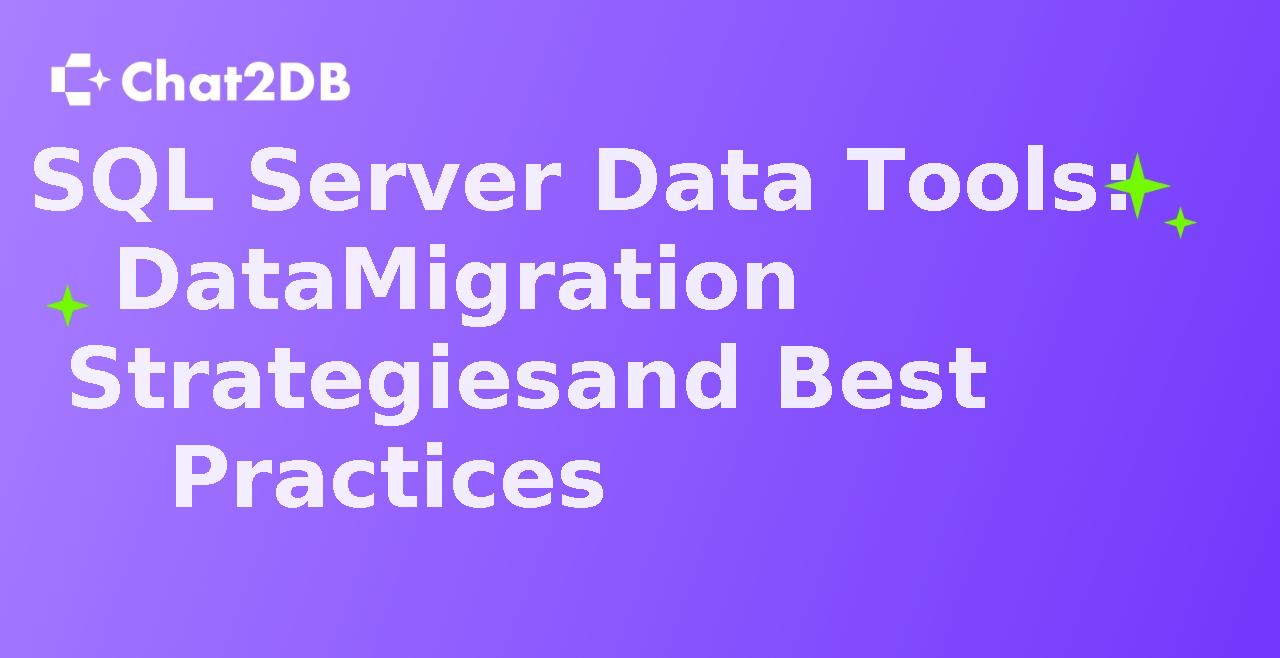
SQL Server Data Tools: Data Migration Strategies and Best Practices
Exploring the best practices and strategies for data migration using SQL Server Data Tools.

SQL Server Data Tools: Best Practices for Version Control and Continuous Integration
Exploring the best practices for version control and continuous integration in SQL Server Data Tools to enhance development workflows and ensure code quality.

How to Use SQL Server Data Tools for Efficient Database Development
Exploring the use of SQL Server Data Tools (SSDT) for efficient database development, discussing its impact on the current technology landscape.
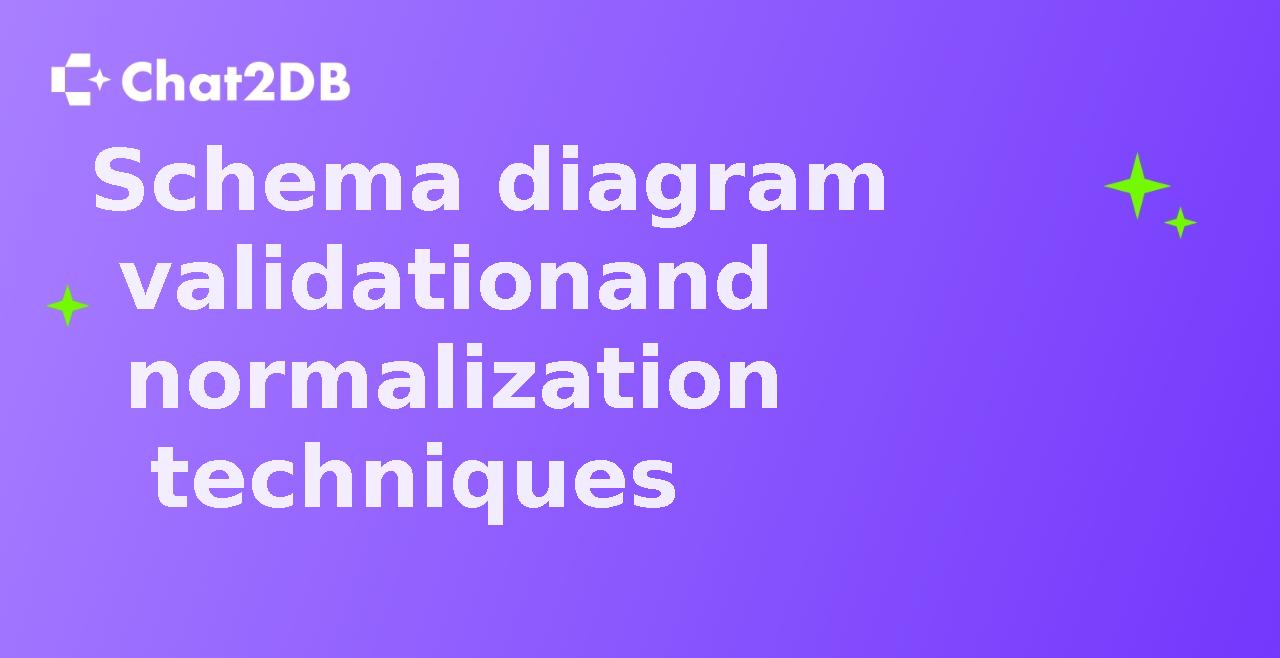
Schema diagram validation and normalization techniques
Exploring the importance of schema diagram validation and normalization techniques in database design and optimization.

Schema diagram visualization tools and techniques
Exploring various tools and techniques for visualizing schema diagrams in databases.

Schema diagram generation using ER modeling techniques
Exploring the process of generating schema diagrams using ER modeling techniques, with a focus on practical examples and best practices.

Schema Diagram Design Best Practices for a Data Warehouse
Exploring the best practices for designing schema diagrams in a data warehouse environment and their impact on data management and analytics.

Creating a Schema Diagram for a Relational Database
A comprehensive guide on how to create a schema diagram for a relational database, exploring the importance and practical applications of schema diagrams in database design.

Comparing the real-time database capabilities of Supabase vs Firebase
An in-depth comparison of the real-time database features of Supabase and Firebase, exploring their strengths, weaknesses, and use cases.

Building a Real-Time Chat Application with Supabase CLI and WebSocket Technology
A comprehensive guide on creating a real-time chat application using Supabase CLI and WebSocket technology, exploring the impact of these tools on modern development.

Monitoring ClickHouse clusters in Docker Compose using Prometheus and Grafana
A comprehensive guide on setting up monitoring for ClickHouse clusters in Docker Compose using Prometheus and Grafana.

Securing ClickHouse clusters deployed with Docker Compose
A comprehensive guide on securing ClickHouse clusters deployed with Docker Compose, covering best practices, security measures, and practical examples.

Building a Scalable Data Warehouse using ClickHouse and Docker Compose
A comprehensive guide on building a scalable data warehouse using ClickHouse and Docker Compose, exploring the key concepts, strategies, practical examples, and tools involved.

Optimizing ClickHouse performance in a Docker Compose environment
A comprehensive guide on optimizing ClickHouse performance in a Docker Compose environment, covering key strategies, techniques, and best practices.

ClickHouse database: Query optimization strategies for faster data retrieval
Exploring advanced query optimization strategies in ClickHouse database to enhance data retrieval performance.

ClickHouse database: Implementing efficient data compression techniques
Exploring the implementation of efficient data compression techniques in ClickHouse database and its impact on data storage and query performance.

ClickHouse Database: Understanding the Architecture and Data Storage Format
An in-depth analysis of ClickHouse database architecture, data storage format, and its impact on modern data processing.

Optimizing ClickHouse Database Performance with Proper Table Design
A comprehensive guide on optimizing ClickHouse database performance through effective table design strategies.

DDL Best Practices: Ensuring Data Integrity and Consistency in SQL Databases
A comprehensive guide to best practices for maintaining data integrity and consistency in SQL databases through DDL operations.
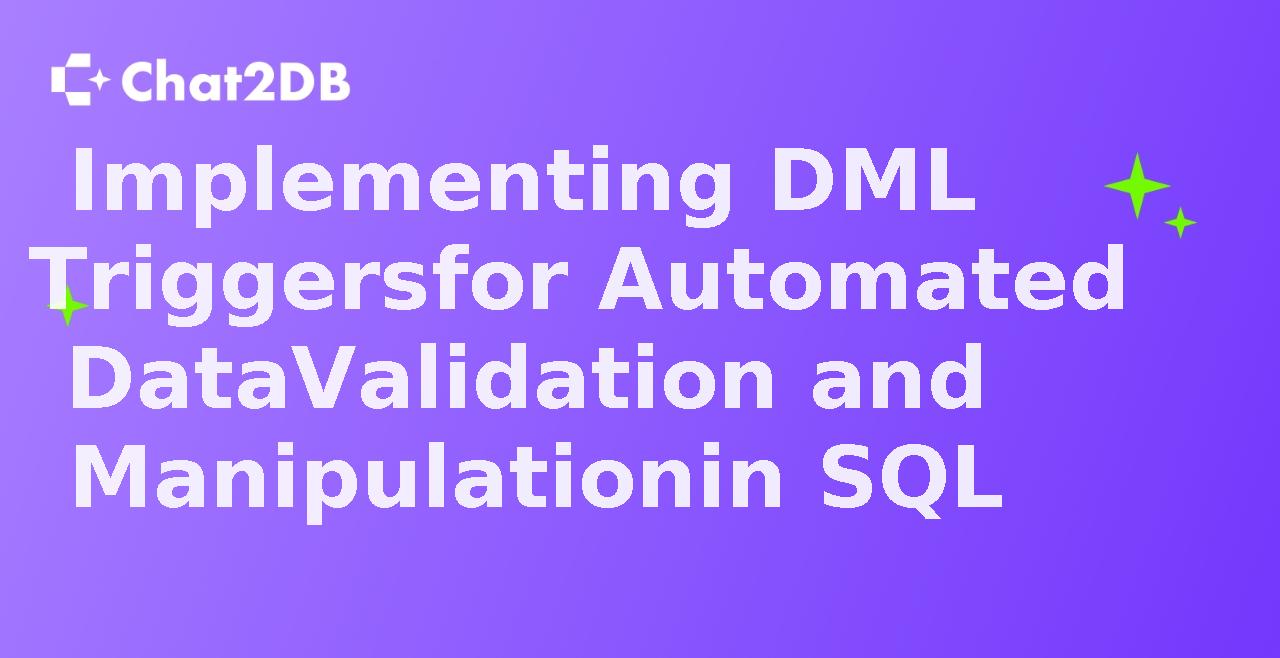
Implementing DML Triggers for Automated Data Validation and Manipulation in SQL
A comprehensive guide on how to use DML triggers in SQL for automating data validation and manipulation tasks.

Data Control Language (DCL) in SQL: Managing user permissions and access control
An extensive guide to Data Control Language (DCL) in SQL, focusing on managing user permissions and access control for databases.

Understanding DDL commands for creating and modifying database structures in SQL
An in-depth guide to Data Definition Language (DDL) commands in SQL for creating and modifying database structures.

How to use DML statements to manipulate data in SQL databases
A comprehensive guide on utilizing Data Manipulation Language (DML) statements to manipulate data in SQL databases.

Advanced Techniques for Optimizing SQL DML Performance in Large-Scale Databases
Exploring advanced strategies to optimize SQL DML performance in large-scale databases, with a focus on practical examples and best practices.

SQL DML Triggers: Implementing Automated Actions Based on Data Changes in a Database
Exploring the concept of SQL DML triggers and how they enable automated actions in response to data changes, with practical examples and best practices.

Best Practices for Writing Efficient SQL DML Queries for Data Manipulation
An in-depth guide on optimizing SQL DML queries for efficient data manipulation with practical examples and strategies.

Understanding the Role of SQL DML in Database Transactions and Data Manipulation
Exploring the significance of SQL DML in managing database transactions and manipulating data efficiently.
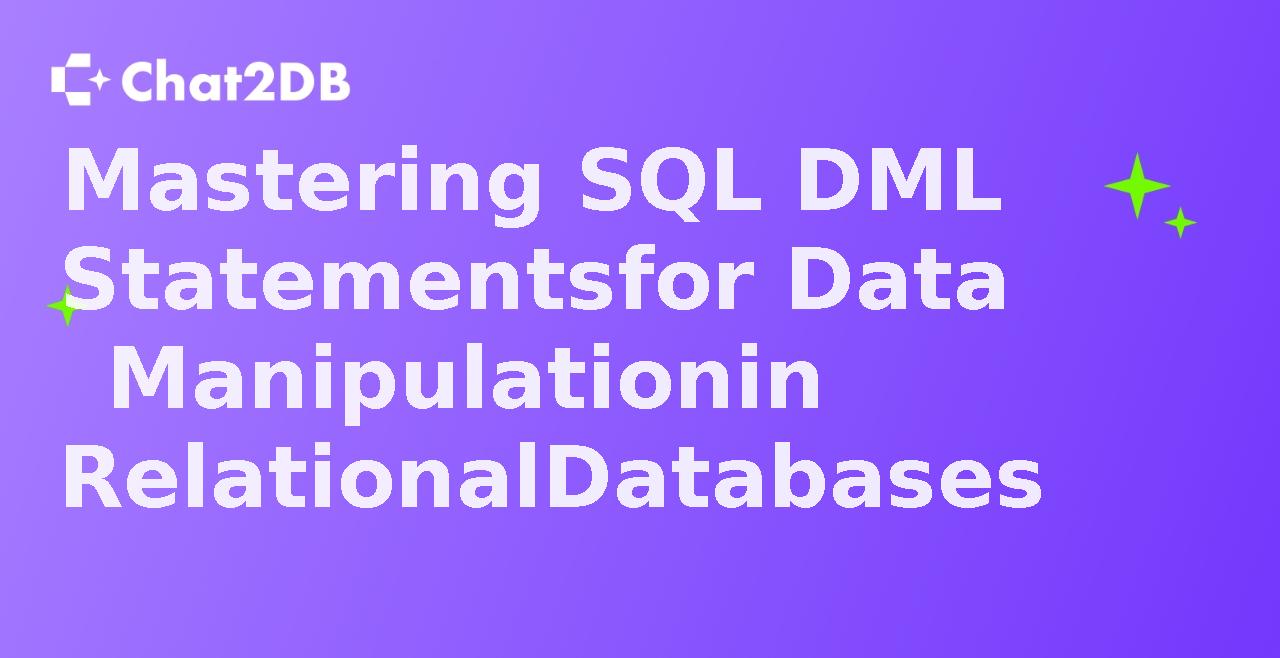
Mastering SQL DML Statements for Data Manipulation in Relational Databases
A comprehensive guide on using SQL DML statements to insert, update, and delete data in relational databases.

Understanding and Utilizing MySQL Commands for Efficient Database Management
Exploring the intricacies of MySQL commands and their application in optimizing database management for enhanced performance.

MySQL commands for database administration and security management
Comprehensive guide on MySQL commands for database administration and security management, covering key concepts, strategies, practical examples, and tools.

Executing complex queries with MySQL commands
A comprehensive guide on executing complex queries using MySQL commands, covering advanced techniques and best practices.

MySQL Commands for Data Manipulation and Query Optimization
A comprehensive guide to MySQL commands for data manipulation and query optimization, covering key concepts, strategies, practical examples, and tools.

Optimizing MySQL Performance with Advanced Commands
A comprehensive guide on utilizing advanced MySQL commands for optimizing database performance.

PostgreSQL Backup and Recovery: Performing Data Recovery Using SQL Commands in a High-Availability Environment
A comprehensive guide on PostgreSQL backup and recovery, focusing on data recovery using SQL commands in a high-availability environment.

Normalization and Denormalization Strategies in PostgreSQL Database Modeling with SQL Commands
Exploring the concepts of normalization and denormalization in PostgreSQL database modeling and how to implement them effectively using SQL commands.
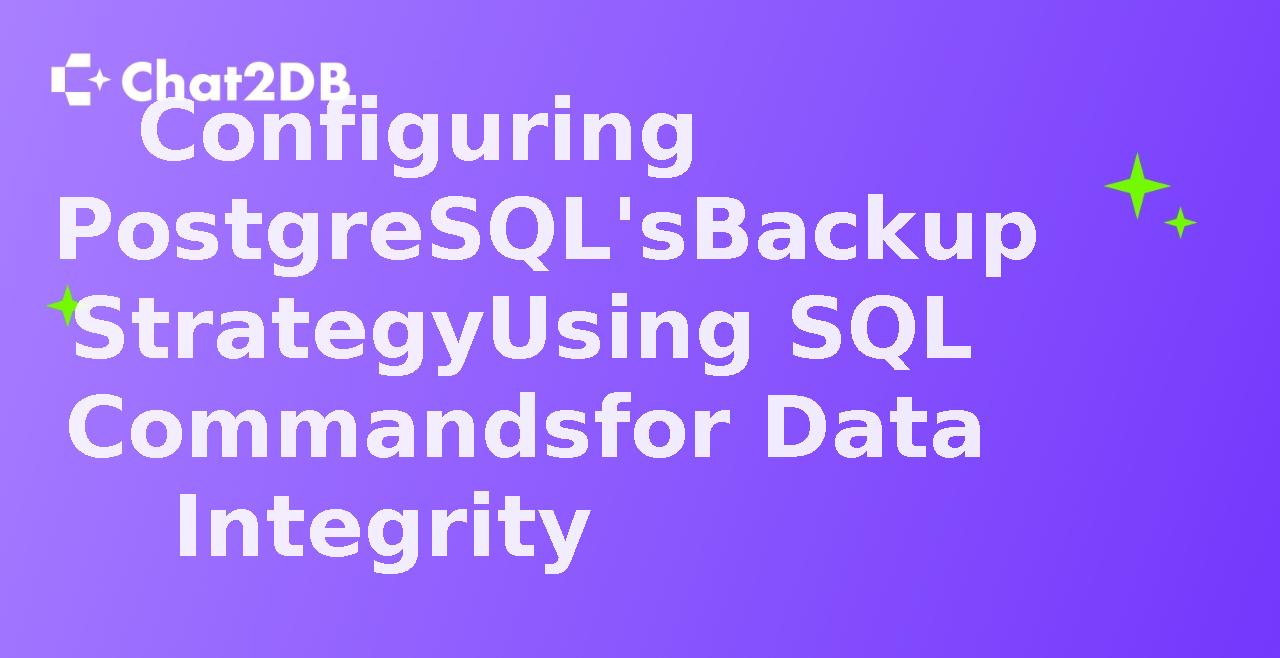
Configuring PostgreSQL's Backup Strategy Using SQL Commands for Data Integrity
A comprehensive guide on setting up PostgreSQL's backup strategy using SQL commands to ensure data integrity.

Optimizing Database Performance with PostgreSQL SQL Commands
A comprehensive guide on using PostgreSQL SQL commands to optimize database performance, covering key strategies, techniques, and practical examples.

Step-by-step guide to installing PostgreSQL GUI on Mac
A comprehensive tutorial on installing a PostgreSQL GUI tool on Mac, providing step-by-step instructions and practical examples.

PostgreSQL Database Management on Mac: A Comprehensive Guide
A detailed guide on managing PostgreSQL databases on Mac, covering installation, configuration, optimization, and best practices.

Scalability analysis: MySQL vs PostgreSQL in a distributed system
An in-depth comparison of MySQL and PostgreSQL in a distributed system focusing on scalability and performance.

Security features comparison between MySQL and PostgreSQL databases
An extensive comparison of security features in MySQL and PostgreSQL databases, highlighting their strengths and weaknesses.

Comparing the performance of MySQL and PostgreSQL in a high-traffic web application
An in-depth analysis of the performance differences between MySQL and PostgreSQL in high-traffic web applications, with practical examples and optimization strategies.

Using date_bin function in PostgreSQL to analyze time series data
Exploring the date_bin function in PostgreSQL for analyzing time series data and its impact on database performance.

Optimizing query performance with date_bin function in PostgreSQL
A comprehensive guide on improving query performance in PostgreSQL using the date_bin function.

How to Use date_bin Function in PostgreSQL to Group Data into Time Intervals
A comprehensive guide on leveraging the date_bin function in PostgreSQL to effectively group data into time intervals for better analysis and reporting.

Mastering PostgreSQL psql show tables: Tips and tricks for database management
An in-depth guide on using PostgreSQL psql show tables command for effective database management.

PostgreSQL psql commands: A comprehensive guide to listing tables
An extensive guide on PostgreSQL psql commands for listing tables, covering various commands, options, and practical examples.

PostgreSQL Database Management: Using psql to List Tables
A comprehensive guide on managing PostgreSQL databases using psql to list tables, covering key concepts, strategies, practical examples, and tools.

How to Use psql to Show Tables in PostgreSQL Database
A comprehensive guide on using psql to display tables in a PostgreSQL database, including practical examples and best practices.

psql -h troubleshooting: Common issues and solutions when connecting to PostgreSQL remotely
An extensive guide on troubleshooting common issues and solutions when connecting to PostgreSQL remotely using psql -h command.

psql -h vs pgAdmin: Choosing the right tool for PostgreSQL database management
A comprehensive comparison between psql -h and pgAdmin for PostgreSQL database management, highlighting their features, advantages, and best use cases.

PostgreSQL Destructer: Best Practices for Data Recovery and Backup
Exploring the best practices for data recovery and backup in PostgreSQL, covering key strategies, techniques, and tools for ensuring data integrity and availability.

Utilizing Destructuring in PostgreSQL for Efficient Data Modeling
Exploring the power of destructuring in PostgreSQL for optimizing data modeling and database performance.

Implementing Data Integrity Checks with PostgreSQL Destructer
A comprehensive guide on how to implement data integrity checks using PostgreSQL Destructer tool for database management.

Designing a High Availability Architecture with PostgreSQL Destructer
Exploring the design principles and strategies for building a high availability architecture using PostgreSQL Destructer.

Optimizing PostgreSQL Performance with the Declarative Feature
A comprehensive guide on optimizing PostgreSQL performance using the declarative feature, covering key strategies, techniques, and practical examples.

Advanced date_bin usage in PostgreSQL: tips and best practices
Exploring advanced usage of date_bin function in PostgreSQL for efficient date-based data analysis and optimization.

Efficient Date Binning with date_bin Function in PostgreSQL
Exploring the usage of the date_bin function in PostgreSQL for efficient date binning and optimization of date-related queries.

Optimizing Database Performance with psql Destructer
A comprehensive guide on using psql Destructer to optimize database performance, covering key concepts, strategies, practical examples, and tools.

Optimizing date_bin function performance in PostgreSQL for large datasets
A comprehensive guide on improving the performance of the date_bin function in PostgreSQL for handling large datasets efficiently.

What Is a Time Series Database and When Should You Use One?
When you need to analyze data every minute, every day, or other date range, a time series database is an ideal choice.

SQL for Data Validation: Implementing Business Rules and Constraints
Data validation is a means of ensuring data accuracy and reliability, usually before entering, modifying or processing data.

MariaDB vs MySQL: Which is Better?
MySQL improved its InnoDB engine with ACID compliance and features like JSON support. MariaDB expanded storage engines like Aria and ColumnStore for diverse workloads.

Exploring the Role of Database Transactions in Ensuring Data Integrity
A database transaction is a group of one or more database operations that are treated as a single unit.

What Are Materialized Views and How Do They Enhance Query Performance?
Materialized views optimize query efficiency by precomputing commonly used joins, aggregations, and filters.

Exploring Microsoft SQL Server: Powering Enterprise Data Management
Microsoft SQL Server, a stalwart in the world of relational database management systems (RDBMS), has been empowering enterprises for decades.

10 Essential SQL Queries Every Developer Should Know
With the help of SQL commands, users can easily generate formatted reports for presentations in professional settings.

UUID vs. Auto Increment Integer/Serial: Which is Best for Primary Keys?
Choosing between an Auto Increment Integer/Serial or a UUID as primary key takes into account database performance, data replication and merging, security and privacy.

The Basics of Data Partitioning: Techniques and Best Practices
Data Partitioning involves dividing a large dataset into smaller, more manageable pieces known as partitions.

Introduction to SQLite: Lightweight and Versatile for Small-Scale Applications
SQLite is a lightweight, open source and widely used relational database management system (RDBMS) that can be directly embedded in applications.

Introduction to MySQL: A Comprehensive Guide for Beginners
This tutorial will guide beginners through the process of learning MySQL, from installation to advanced operations.

What is Data Replication in Databases? A Comprehensive Guide
Data replication is the process of creating and managing duplicate versions of a database in different locations

What is ACID Transactions in Databases
A.C.I.D. properties: Atomicity, Consistency, Isolation, and Durability

What Is a NoSQL Database and When Should You Use It?
NoSQL databases are non-relational databases that store data in a different way than the table relationships used in SQL databases.

Chat2DB vs. Navicat: Which Database Management Tool is Better For You
In this blog, we will compare two popular database management tools, Chat2DB and Navicat, to assist in your evaluation.

A Beginner’s Guide to Database Normalization: 1NF, 2NF, 3NF, and Beyond
In this article, we will explore the basic concepts of normalization, its importance, and related techniques.

What Are Database Triggers: A Beginner's Guide
Database triggers are automated mechanisms designed to run automatically when specific activities occur on a database table or view.

What Are Stored Procedures and How Do They Enhance Database Performance?
A stored procedure is a set of SQL statements that are precompiled and stored in the database and can accept input parameters, perform operations, and return results.

Chat2DB vs. Datagrip: A Comprehensive Analysis for Database Management Tools
In this article, we will compare two popular database management tools, Chat2DB and Datagrip, to assist in your evaluation.

Database Sharding: How It Works and Its Benefits
Sharding is the optimization of large databases by splitting data from a larger database table into multiple smaller tables (shards).

The Importance of Database Indexes: A Comprehensive Guide
Indexing: Data structure technique that improves the speed and efficiency of data retrieval operations.

Top PSQL Commands You Need to Know | PostgreSQL
This post teaches you the psql commands you need to know when working with PostgreSQL databases.

Database Schema Migration: A Comprehensive Guide
Migrations allow the database schema to be incrementally updated from its current state to a target state.

Chat2DB vs. DBeaver: A Comprehensive Analysis for Database Management Tools
In this blog, we will compare two popular database management tools, Chat2DB and DBeaver, to assist in your evaluation.

Statement Timeout in PostgreSQL
Learn about the common timeout settings and their uses in PostgreSQL

9 Free SQL Clients for Efficient Database Management (2024)
Here are 9 of the best free and open-source SQL clients that can simplify your database management tasks.

Hands-on! How to Solve MySQL Deep Pagination Problems
This article will show you how to solve the problem of deep pagination in MySQL in four ways

How to create a table with SQL code?
This article is about how to create database tables in SQL using CREAT TABLE. And use the TEXT to SQL tool Chat2DB for demonstration

Chat2DB: Data Analysis Without Writing SQL Code
In this blog, I'll show you how to use Chat2DB to perform professional data analysis without writing SQL code.

Differences Between DROP, DELETE and TRUNCATE in SQL
Typically, we interact with databases using SQL commands. This article dives into the key differences between DROP, DELETE, and TRUNCATE operations, essential for understanding database management.

Chat2DB Pro 2.0 Release
Chat2DB Pro is a powerful tool for managing and analyzing data, with a focus on providing an easy-to-use interface for users to interact with their data.

Top PostgreSQL DB Viewers: Enhance Your Database Management with Chat2DB
PostgreSQL DB viewers are specialized tools designed to simplify database management for PostgreSQL databases. A DB viewer allows users to visualize data, execute SQL queries, and manage database objects without needing deep technical expertise.

Chat2DB Pro 1.0 Release
Chat2DB Pro 1.0 is a powerful tool for managing and analyzing data, with a focus on providing an easy-to-use interface for users to interact with their data.
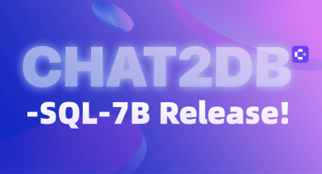
Chat2DB-SQL-7B Release
Chat2DB-SQL-7B model, with 7B parameters, has been fine-tuned based on CodeLlama. This model is specifically designed for the task of converting natural language to SQL, supports various SQL dialects, and is capable of handling up to 16k of context length.